- Skip to main content
- Skip to secondary menu
- Skip to primary sidebar
- Skip to footer

Jeffsetter Travel
Travel Consultants and Travel Tips

Greece Or Spain: Which Is The Better Trip? (2024)
November 1, 2023 by Marina Titova
Last updated on January 17th, 2024 at 03:52 pm
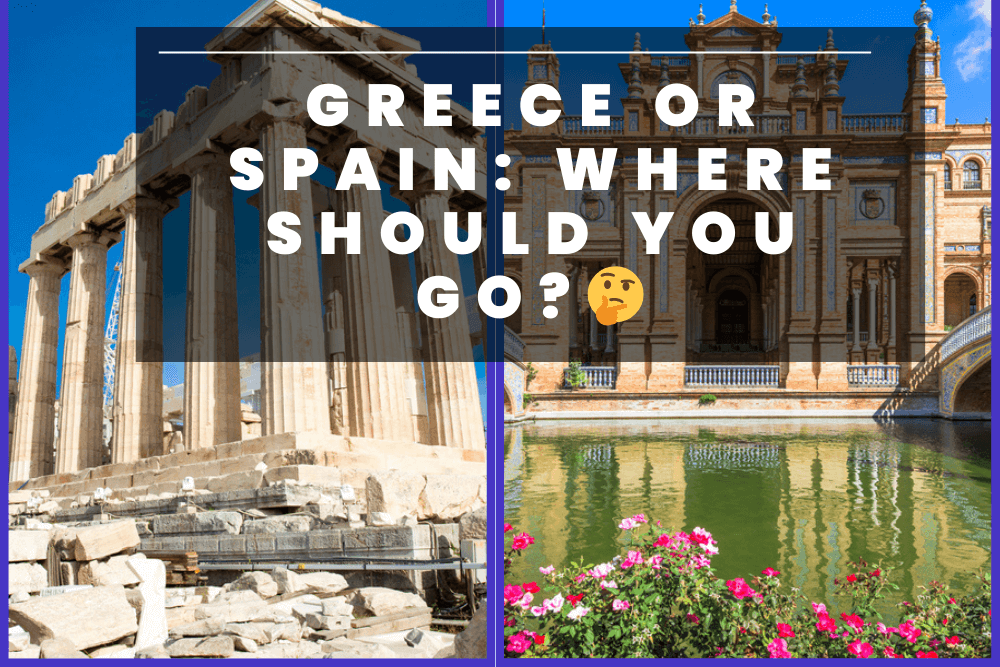
Both countries often stand out as premier European summer destinations. On the one hand, you have Greece a country that presents an interplay of ancient temples like the Acropolis and pristine beaches such as those in Mykonos. Meanwhile, Spain, with its rich tapestry of history, offers the architectural wonders of Gaudí in Barcelona, the haunting Flamenco rhythms in Seville, and the iconic Alhambra in Granada.
But how do you choose between a gastronomic journey through the tavernas of Athens and the tapas bars of Madrid? Or between the thrill of Spain’s La Tomatina and the serenity of Greece’s lesser-known islands?
Or to put it simply, when it comes to picking just one country for your next holiday, which should it be?
Spain offers more urban activities, and abundant wildlife, perfect for adventure travel. Greece offers a laid-back vacation with most activities centering around island hopping and visiting ancient ruins. If you want to visit islands Greece offers 227 to choose from, while Spain has only 48. Comparable in price Greece is cheaper than Spain.
Whether it’s Greece or Spain you go for, I’m sure you want to experience an unforgettable vacation, that’s why I created this guide. I’ll unpack these two choices, contrasting everything from their vibrant art scenes to their sunniest seasons.
Ready to embark on this Mediterranean exploration?
Snapshot Comparison
- Explore ancient ruins and museums full of ancient artifacts
- Idyllic islands for island hopping, both crowded and secluded
- Mediterranean Greek cuisine with Ottoman, Balkan, and Italian influences
- Passionate local music and dance traditions, accompanied by local drinks and food
- Diverse and vibrant nightlife that lasts until early morning
- During peak season, islands can become quite packed, affecting the tranquil experience.
- Some ferry schedules can be irregular, especially during off-peak seasons.
- Easy to engage with locals; Greek hospitality is legendary and heartwarming.
- Vibrant festivals like La Tomatina and Running of the Bulls
- Artistic cities like Barcelona and its Gaudi architecture
- Scenic coastlines of Costa Brava and Andalusia
- Diverse cuisines from paella to tapas
- The Canary Islands are famous for their rugged natural landscapes and iconic beaches
- Centuries-old architecture in cities like Granada and Seville.
- Spain’s train network, while efficient, can be on the pricier side for tourists.
- Some touristy spots, like Barcelona’s Las Ramblas, can get overwhelmingly crowded.
Quick Overview & Comparison Of Greece And Spain
Both Greece and Spain are riddled with must-see spots, each offering a unique adventure. But which country is the best option for you?
If you enjoy a mosaic of architectural wonders, from the towering Gothic cathedrals, such as the renowned Sagrada Familia in Barcelona and the stunning Cathedral of Seville, to the intricately detailed Moorish palaces like the Alhambra in Granada, each structure tells a story of Spain’s complex history and cultural influences.
If you want to explore Archaic and Classical architecture then Greece’s multitude of ancient sites, from the Acropolis in Athens to the Palace of Knossos in Crete, and the Lion Gate, an example of Cyclopean masonry at Mycenae, offer a tangible link to the past.
If you are the type of traveler seeking a diverse terrain then Spain promises an unparalleled road trip adventure, weaving through landscapes that range from lush green valleys and towering mountain ranges to arid plateaus, dramatic coastlines, and iconic islands.
If you are the type of person who finds solace in pristine beaches and clear waters, the tranquil shores of Greece’s mainland as well as the 227 islands offer unparalleled relaxation. Greece is the perfect place for island-hopping adventures with diverse landscapes and cultures in close proximity.
If you enjoy immersing yourself in vibrant festivals, from tomato fights to flamenco dances, Spain’s eclectic celebrations will leave you exhilarated. Let’s also not forget that Spain is the perfect destination for wine connoisseurs, the rolling vineyards of regions like Rioja and Catalonia in Spain offer tours and tastings that will delight your palate.
If you enjoy the simpler pleasures of life but still want to explore festivities in a foreign country then Greece beckons, from the famous Carnival with its colorful parades and traditional costumes, to local panigiria, where villages come alive with music, dance, and feasting. These festivals provide a unique opportunity to experience Greek hospitality, savor delicious local cuisine, and join in age-old traditions
If you’re the type of traveler who revels in artistic masterpieces, Spain offers an unparalleled experience. The country’s world-renowned museums and galleries house an extensive collection of works from legendary artists such as Picasso, Dali, and Goya, providing a feast for the senses.
If you’re a culinary adventurer, Greek cuisine is a feast for the senses, intricately woven with history and diverse influences from the Ottoman, Italian, and Balkan regions. With dishes of skewered grilled meats, baked eggplants, or dolmades (grape leaves stuffed with rice and herbs). Indulge in pastitsio, a comforting baked pasta dish, and experience the sweet richness of galaktoboureko, a custard-filled pastry.
Which Country Is Cheaper?
For many travelers, the cost of accommodation takes up a significant chunk of the budget. Thankfully both Greece and Spain offer a great array of options. But what about transportation, food, and nightlife, as well as all the activities that make up an unforgettable trip?
Accommodation:
In Greece, there’s a beautiful charm in staying in traditional whitewashed houses on islands like Santorini or Mykonos. Off-season, these iconic destinations can surprise you with their affordability.
Instead of hostels, that most locals would avoid, budget travelers often opt for Greek guesthouses and pensions, locally termed as “domatia”, which offer basic facilities at very reasonable prices. The island-hopping adventure often comes with lesser-known islands like Paros or Naxos, which promise decent accommodations at lower prices than their more famous counterparts.
On the other hand, Spain comes alive with its modern hostels, paradores “luxury accommodations in historic buildings”, and seaside resorts. In bustling cities like Madrid and Barcelona, central accommodation might be a bit pricier, more so than in Athens, but moving slightly outward can fetch you quality stays without denting your pocket.
Spain’s rich cultural provinces also have casa rurales “rural houses” that offer rustic experiences at affordable rates. Prices will also depend on whether you’re visiting Spain during peak tourist seasons.
Overall, Spain’s popular areas can be more expensive than Greece. However, with smart planning and booking in advance, both countries can be navigated on a budget.
Transportation:
Getting around is an integral part of the travel experience. In Greece, the mainland’s bus and train system is pretty affordable, though it might not be the swiftest, or as punctual.
Then you also have the metro in Athens which is a great way to travel from one district to another, just don’t forget to get the tourist pass for multiple days!
If you’re planning on island-hopping in Greece, the prices for the ferries that connect the islands can vary based on the speed and class of the ferry. Taking slower boats or booking in advance can save a good amount.
Spain has an extensive and efficient rail network, connecting major cities at high speeds, especially with the AVE trains. Buses, like the Alsa network, cover wider grounds and are often cheaper. Moreover, Spain’s domestic flights are competitively priced, making distant regions accessible.
While the Athens metro is the only metro system in Greece, Spain has five conventional metro networks in Madrid, Barcelona, Valencia, Bilbao, and Palma de Mallorca , and similarly to Greece, the tickets are budget-friendly.
So, while Greece’s inter-island ferries can add up, Spain’s extensive transportation options give it an edge in terms of convenience and variety, though the costs might be slightly higher.
Activities And Attractions:
From ancient ruins to modern art hubs, both countries are bursting with experiences. Greece lures with its ancient sites like the Acropolis, Delphi, and Olympia. While these have entry fees, their significance and grandeur make them worth every penny.
Beaches, especially on islands, have minimal charges, but if you’re planning on visiting secluded beaches then most of them are free. I will never forget the blue waters and rugged scenery of Limnos, a Greek island in the northern Aegean Sea, that I visited a couple of years ago!
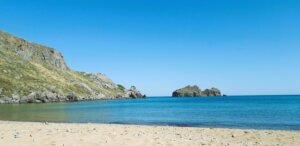
But remember if you decide to visit a secluded beach you will have to bring your own umbrella!
Spain offers a mix of things to do and see like Gaudi’s architectural wonders in Barcelona, the Alhambra in Granada, or the Prado Museum in Madrid. Many of Spain’s attractions come with entry fees, but cities often have specific days or hours when entry is free or more affordable.
Food And Nightlife:
Greece is a haven for foodies on a budget. Street food like souvlaki, gyros, and spanakopita won’t hurt your wallet. Tavernas offer hearty meals at modest prices. Nightlife, especially on islands like Mykonos, can be pricier, but local bars in smaller towns offer a genuine experience at affordable rates.
Spanish tapas bars, especially in the south, serve free tapas with drinks. Nightlife in Spain is legendary. Cities like Madrid and Barcelona have pricier clubs, but the local bar scene, especially in areas like Andalusia, offers authentic flamenco nights without the hefty price tag.
So, What’s The Verdict?
Both countries are pretty affordable, with great accommodation on a budget, especially if you avoid traveling during peak season. Similarly, historical sights and activities are similarly priced. Greece and Spain also cater to food lovers of all budgets the same can be said about bars and drinks. However, for free-flowing nightlife with cultural flair, Spain might take the cake.
Which Country Has The Best Food And Restaurants?
When traveling, food often becomes the soul of the journey. Greece and Spain, with their Mediterranean roots, might seem to tread on similar culinary paths, but having tasted both I can definitely pinpoint some of their differences!
I associate Greek cuisine with the intense flavor of olive oil, fresh herbs like oregano, and zesty lemon. Feta cheese accompanies almost every meal, as well as succulent meats, grilled vegetables, and of course, fresh tomatoes in a Greek salad are a must!
When I think of Spain certain flavors come to mind like the smokiness of the paprika, the sweetness of saffron, and the rich and earthy taste of olives and almonds. If you’ve tasted paella or bitten into a churro dipped in chocolate, you know the thrill.
Whether you pick Greece or Spain as your culinary destination then you don’t have to worry about quality. Both countries use fresh, local ingredients.
The quality of produce in Greece, especially on its islands, is top-notch. Fresh-caught fish, sun-ripened tomatoes, and locally produced cheeses like halloumi stand out.
Similarly, Spain’s diverse regions ensure a range of high-quality ingredients, from fresh seafood in Galicia to succulent Iberian ham in Andalusia.
Both countries take pride in their gastronomic hubs. From upscale restaurants in Athens and Barcelona offering gourmet experiences to quaint tavernas and tapas bars in smaller towns delivering authentic flavors, there’s something for every wallet.
When it comes to food, whether you choose Greece or Spain, you can’t really lose. Both countries promise a gastronomic journey that’s sure to make your trip memorable!
How Do The Culture And History Compare?
Both Greece and Spain are culturally and historically significant places, but how do they differ?
The hospitality of the Greeks, or “philoxenia”, is legendary. Whether it’s the elderly lady offering you homemade loukoumades in a village or the lively traditional dance in a small Rebetadiko, the Greek way of life is to celebrate. The islands, especially, embody a slow, relaxed pace where siestas, feasts, and festivals are the norm.
Whether you visit the mainland or the islands it will be difficult to miss the influence of the country’s ancient history. Greece’s historical panorama is vast and influential, from the Athenian golden age all the way to the Byzantine monuments, all waiting to be discovered by you.
Spain, on the other hand, is an explosion of colors, music, and passion. The ‘mañana’ (tomorrow) attitude speaks volumes about the Spanish relaxed approach to life. From the fiery Flamenco in the south to the human towers or “castells” in Catalonia, Spain’s diversity is reflected in its regional customs. And let’s not forget the nation’s dedication to fiestas and siestas!
Spain has a rich tapestry of its own. From Moorish palaces like the Alhambra to Gothic cathedrals in Toledo, its architecture narrates tales of diverse rulers – Moors, Visigoths, and Romans. Spain’s history is also a story of powerful empires, great explorers, and art movements inspired by maestros like Picasso and Gaudí.
If ancient myths, epic tales, and classical marvels fascinate you, Greece will feel like stepping into a history book. But if your interests lie in medieval epochs, Islamic artistry juxtaposed with Christian monuments, Spain is your destination.
How Do The Art And Entertainment Compare?
The Mediterranean allure of both Greece and Spain extends far beyond their sun-soaked shores. So, what else is there to discover?
Museums And Historical Monuments:
Both Greece and Spain are living museums, perhaps Greece more so.
Athens’ Acropolis, with the iconic Parthenon, stands as a timeless testament to Ancient Greek artistry and architecture. But the city also boasts the state-of-the-art Acropolis Museum, which preserves and presents artifacts from the ancient site.
Venturing beyond the capital, you’ll discover places like Delphi, Knossos, and Epidaurus, each echoing tales from different epochs of Greek history. Unfortunately, Greece’s mainland is too big to explore on a single trip, and not every city has historical sights and monuments, or appealing architecture.
On the other hand, walking through the streets of most Spanish cities with historical significance you will notice a consistency when it comes to architecture. Spain’s art scene is a vivid blend of the past and the present. The Prado Museum in Madrid showcases works from Spain’s art triumvirate – Goya, Velázquez, and El Greco.
Meanwhile, Barcelona’s Gaudí-inspired modernist landmarks, like the Sagrada Família and Park Güell, offer a dive into the whimsical. The Alhambra in Granada, with its intricate Moorish designs, stands as a monument to a bygone era of splendor.
Festivities in Greece are a vibrant mix of religious reverence and pagan traditions. Easter is celebrated with unmatched fervor – candles, processions, and feasts. Additionally, festivals like the Athens Epidaurus Festival showcase Greek drama in ancient theaters, taking you on a journey back in time.
I also think it’s worth mentioning the Tyrnavos carnival , organized annually in the town of Tyrnavos in Thessaly. Its special feature is the worship of the phallus as a symbol of fertility and prosperity. I ts origins date back to ancient times!
Spain is almost synonymous with festivals. From the tomato-flinging La Tomatina to the adrenaline-pumping Running of the Bulls in Pamplona, there’s a fiesta for every mood. Not to be missed is Seville’s Feria de Abril, where flamenco dresses, traditional tents, and dance form a colorful spectacle.
Greek nights are legendary. The islands, especially Mykonos, have become global nightlife hubs, where beach parties transition seamlessly into dawn. Athens and Thessaloniki, with their eclectic bars and clubs, promise nights filled with music, dance, tsipouro, and ouzo.
Madrid and Barcelona brim with bars, clubs, and tapas joints that remain lively until the early hours of the morning . The concept of ‘tapeo’, hopping from one tapas bar to another, coupled with Flamenco shows, ensures an unforgettable night.
While Greece offers a poignant journey through ancient artistry intertwined with modern merriment, Spain presents a palette of artistic grandeur, regional festivities, and vibrant nightlife. If you’re inclined towards classical art and monuments, alongside traditional taverns with lively music, Greece is the perfect destination. But if diverse art movements, legendary festivals, and buzzing nights call out to you, Spain might just be your scene!
How Do The Beaches And Natural Beauty Of Greece And Spain Compare?
Greece and Spain can offer you sun, sand, and the sparkling sea, but what sets their beaches apart?
From the iconic white sands and azure waters of Navagio Beach in Zakynthos to the volcanic black sands of Santorini, all 227 Greek islands are synonymous with postcard-perfect beaches.
Mykonos buzzes with beach parties, while secluded coves in islands like Milos offer tranquil escapes. The beauty of Greece is that each island offers a unique beach experience, with turquoise waters being the constant.
While Spain doesn’t have as many islands, doesn’t mean they can’t compete! The Balearic Islands, especially Ibiza and Mallorca, are a blend of vibrant beach scenes and serene coves.
Similarly to Greece, Spain’s coastline is a tapestry of diverse beaches. The sun-kissed Costa del Sol boasts golden sands and vibrant beach life, while the northern coasts, like the Playa de las Catedrales in Galicia, impress with dramatic cliffs and natural arches.
When it comes to the mainland coastline of Greece and Spain, it’s truly difficult for me to choose a winner, but I must admit that Spain offers more diverse landscapes.
Of course, Greece is worth visiting for its majestic mountains like Olympus, or the Meteora monasteries perched atop vertical cliffs, as well as the Samaria Gorge in Crete, one of Europe’s longest canyons.
Even a short trip from Athens all the way to Sounion will bring you to the temple of Poseidon.
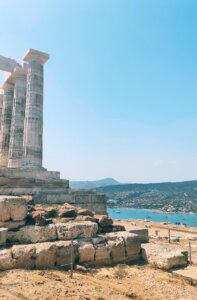
As you can see in the photograph I took one very hot morning, the ancient ruins, sunkissed sand, and blue waters create an unforgettable view.
However, there’s something even more alluring in Spain’s diversity, from the snow-capped Sierra Nevada to the arid beauty of Almeria’s deserts, there’s a natural spectacle for every enthusiast. The Pyrenees stand tall as nature’s formidable fortress, and the volcanic landscapes of the Canary Islands, especially Teide National Park in Tenerife, transport visitors to another world.
Both Greece and Spain promise coastal wonders that can take your breath away. If island-hopping and discovering unique beaches appeal to you, Greece might have the edge. On the other hand, if you crave variety, be it golden, rocky, or secluded beaches, interspersed with diverse landscapes from deserts to mountains, Spain is the ultimate choice!
Which Country Is The Best For Trips And Excursions?
Both Greece and Spain are great countries for road trips, but it all depends on the type of trip you’re actually looking forward to and how much time you have on your hands.
Scenic Island Hops In Greece
Greece’s unique proposition is its ability to combine road trips with ferries, allowing travelers to drive through multiple islands. This creates a combination of coastal drives with the thrill of island-hopping.
Cyclades Circuit: Starting from Athens, you can take a ferry to Mykonos, and explore the island’s vibrant nightlife and beaches. From Mykonos, you can hop onto another ferry to Naxos, famed for its historical sites and charming villages.
Next, you can move on to Santorini, where you can drive along the caldera and enjoy the world-famous sunset. From Santorini, a short ferry ride can take you to lesser-known gems like Paros and Milos before heading back to Athens.
Ionian Exploration: If you’re looking for a more unique island hopping experience then you can begin your journey through the mainland, driving to Igoumenitsa, and taking a ferry to Corfu. There you can spend your time exploring Corfu’s Venetian architecture and lush landscapes while enjoying the cool Ionian waters.
Next, you can head south to Paxos, and then onto Lefkada, which is accessible by a causeway. Continue to Kefalonia and Zakynthos, both islands offer stunning beaches and serene villages.
The Diverse Landscapes Of Spain
Spain’s vastness and variety are what make it a road-tripper’s dream. But what exactly can you expect if you only have a week to explore this beautiful country?
You can start your journey in the heart of Spain, Madrid where you can visit the Royal Palace and the Prado Museum and spend a whole day wandering around the lively streets of Malasaña or the elegant boulevards of Salamanca.
Next, you can drive to the ancient city of Toledo, a UNESCO World Heritage site known for its rich tapestry of Christian, Jewish, and Muslim history. Explore its Alcazar and the stunning Cathedral.
Then you could move on to Seville, the heart of Andalusia. Visit the Alcazar, Seville Cathedral, and the Giralda Tower. Later, roam the vibrant streets of Barrio Santa Cruz.
After a day or two you can drive to Granada, with the majestic Alhambra awaiting you. But remember to book your tickets in advance! There you can explore the Albayzin, the old Moorish quarter. Don’t forget to dine in one of the city’s cave restaurants in Sacromonte with views of the Alhambra.
If you want to enjoy beautiful beaches while in Spain then Head to Malaga, the birthplace of Picasso. Not only should you visit the Picasso Museum and the Alcazaba fortress, but you should also make some time to relax on the beaches of Costa del Sol. Nerja and Marbella are great choices.
For a change of scenery and more beaches, you can make your way to Almería. There visit the Alcazaba of Almería, a fortified complex, and later wander through the historic streets. Relax on the virgin beaches of Cabo de Gata-Níjar Natural Park, a protected area with some of the most untouched coastlines in Spain.
Finally, you can drive back to Madrid and spend your last day exploring the city some more.
If island hopping doesn’t appeal to you, especially if you’re short on time, then for a week-long road trip with diverse experiences in close proximity and excellent road conditions, Spain edges out slightly, being the more practical choice compared to Greece, especially in contrast to Greece’s mainland.
Which Country Has Better Weather?
Spain and Greece both boast similar Mediterranean climates that promise sun-kissed days and mild evenings. However, when dissecting the nuances, Spain generally has a more varied climate due to its larger size and topography, offering everything from cooler northern regions to warmer southern coastlines.
However, here’s a general breakdown to provide an idea for travelers looking for the best time to visit either country.
Greece: Spring is one of the most pleasant times to visit Greece, especially between April and June. The temperatures are mild, wildflowers bloom in abundance, and popular destinations aren’t as crowded.
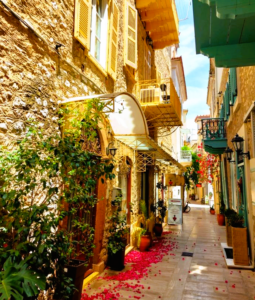
Nafplion in the Peloponnese, was especially colorful, during late spring!
Spain: Spain in spring is a treat, especially from mid-April to early June. Regions like Andalusia are bathed in colorful blooms. In Valencia, the orange blossoms infuse the air with a sweet aroma. However, northern areas, such as the Basque Country, can be unpredictable with occasional showers.
Greece: The summer, especially July and August, can get intensely hot, especially on the mainland. The islands, due to the sea breeze, can be more bearable but daytime can be quite uncomfortable for those who can’t tolerate hot weather. It’s the peak tourist season, so expect crowded destinations and higher prices.
Spain: Spanish summers, particularly in the inland regions, can be scorching. Coastal areas like Costa del Sol are more temperate and attract sun-seekers. Northern regions such as Galicia offer milder temperatures, making it ideal for those wanting to escape the heat.
Greece: Greece in autumn witnesses a gradual cool-down. September is still warm enough for beach activities, but by October and November, there’s a nip in the air, and rainfall begins in some parts.
Spain: Spain’s autumn is colorful and diverse. While the Mediterranean coast still enjoys a warm September, regions like La Rioja display a burst of fall colors. Rainfall can be expected in northern parts, but the south remains relatively dry.
Greece: Winters in Greece are mild along the coast but can be cold and snowy inland, especially in the mountainous regions. Popular islands like Santorini and Mykonos are quiet, offering a different charm.
Spain: Spain offers varied winter experiences. The Sierra Nevada Mountains lure skiers, while regions like Andalusia have mild winters ideal for sightseeing. However, northern parts can get chilly with considerable rainfall.
Which Country Is The Safest?
Both Greece and Spain are considered safe countries to visit. Petty thefts like pickpocketing can occur in tourist-heavy areas of both Greece and Spain, especially in crowded tourist spots, but violent crimes against tourists are rare.
When it comes to natural risks, Greece can experience earthquakes, but forest fires during the dry summer months are a bigger concern.
Similarly, Spain is also susceptible to natural calamities, such as forest fires in summer and occasional flooding in certain regions. Earthquakes are less common than in Greece.
So, make sure you keep your belongings safe and stay informed about any natural disasters during your travels!
So, What Is The Best Season To Visit Greece And Spain?
When choosing the best season to visit Greece and Spain, several factors come into play: weather, prices, crowds, and entertainment.
Spain and Greece offer delightful spring weather, but if you prefer slightly warmer temperatures and lesser rainfall, Greece might have a slight edge. Then again if you prefer hot, dry weather and beach activities, both countries are suitable. However, for slightly milder summers, Spain’s northern regions are preferable.
Greek autumn also offers warm seas, ideal for swimming, prices drop, and popular spots are less congested. Similarly, in Spain, it’s grape harvest time during autumn, especially in regions like La Rioja. Mild weather, fewer tourists, and off-season prices make it attractive.
So, for a balanced experience of good weather, reasonable prices, fewer crowds, and decent entertainment, spring and autumn stand out for both Greece and Spain. However, for those looking for high energy, summer festivals, and bustling beaches, summer is the go-to, if your budget permits it.
Closing Thoughts
Whether you’re drawn to the ancient ruins and azure waters of Greece or the vibrant culture and diverse landscapes of Spain, both destinations promise unforgettable experiences.
While their offerings diverge in areas like cuisine, art, and natural beauty, they converge in their warm hospitality and rich histories.
Deciding the best time to visit hinges on personal preferences, be it the allure of spring blossoms, sun-soaked summers, or serene autumns.And if you want something with more green, consider one of my other favorite spots .
Whatever you seek, remember that the magic lies not just in the destination, but in the journey and the stories you’ll collect along the way. Happy travels!
Important Links
- Advertising Policy and Affiliate Disclaimer
- Privacy Policy
- Contact Jeffsetter Travel Blog
- Ask Jeffsetter a Question
Recent Posts
- United Guts First Class Partner Awards
- Enter to Win 200k HawaiianMiles!
- Expect Inter-Island Flight Delays at HNL
- Hawaiian Air Q1 2024 Financial Results
- Two Issuers Up Their Trusted Traveler Fee Credit

- Living In Croatia
- Croatian Recipes
- Balkan Recipes

Home > Greece Or Spain? How You Choose Between Spain Vs. Greece
Greece Or Spain? How You Choose Between Spain Vs. Greece

Written by our local expert Nick
Nick is is digital nomad originally from Athens, Greece. You will now find him exploring the Greek islands, Bulgaria and beyond.
Today’s topic is tricky: how do you choose between two of the most popular vacation destinations? Perfect spots to visit during the summer, Greece and Spain can be enjoyed during the winter months as well due to the incredible number of attractions they both offer.
Want to know right away how to choose between Greece or Spain for your next vacation? Here is what we think you should know:
If you are planning a trip somewhere with jaw-dropping beaches with crystal clear waters, rich cultural heritage, national parks, and mouthwatering cuisine, choosing between Spain or Greece might be particularly challenging.
To help you find out which better suits your travel plans, I have put together this blog post with an in-depth comparison of the two destinations.
Note: sorry in advance, Mom, for not telling people that Greece is better – I have to do my job and be unbiased here, you know?
Keep reading below to find out everything you need to know to decide which Mediterranean country is best for your holiday.
Skip Ahead To My Advice Here!
Overview Of Greece And Spain
Whether you’re looking for an exciting city break or a beach-and-sun gateway, Greece and Spain are fantastic options. But how do you choose if Spain or Greece is suitable for you? Here’s a synopsis of Spain versus Greece to help you figure it out.
Greece is the perfect destination if you want to relax on some pristine beaches and visit traditional villages. Greece is made up of thousands of idyllic islands; some are ideal for a laid-back time, while others are best for practicing water sports, like diving and kite surfing.
Instead, Greece’s mainland boasts ancient ruins you won’t find anywhere else, tall mountains ideal for hiking, and beautiful churches and museums you can spend endless hours visiting.
There’s plenty to explore in Spain! You could travel from northern Spain to the south of Spain and feel like you’re in two completely different countries.
Spain has something for everyone. Bustling cities with incredible museums, food, and shopping venues, wonderful Mediterranean beaches, two sets of islands – the Balearic Islands and the Canary Islands, which boast completely different landscapes and vibes – and the impressive Pyrenees mountain range.
Are you curious to know the pros and cons of each country? Let’s have a look.
Pros And Cons Of Greece Over Spain
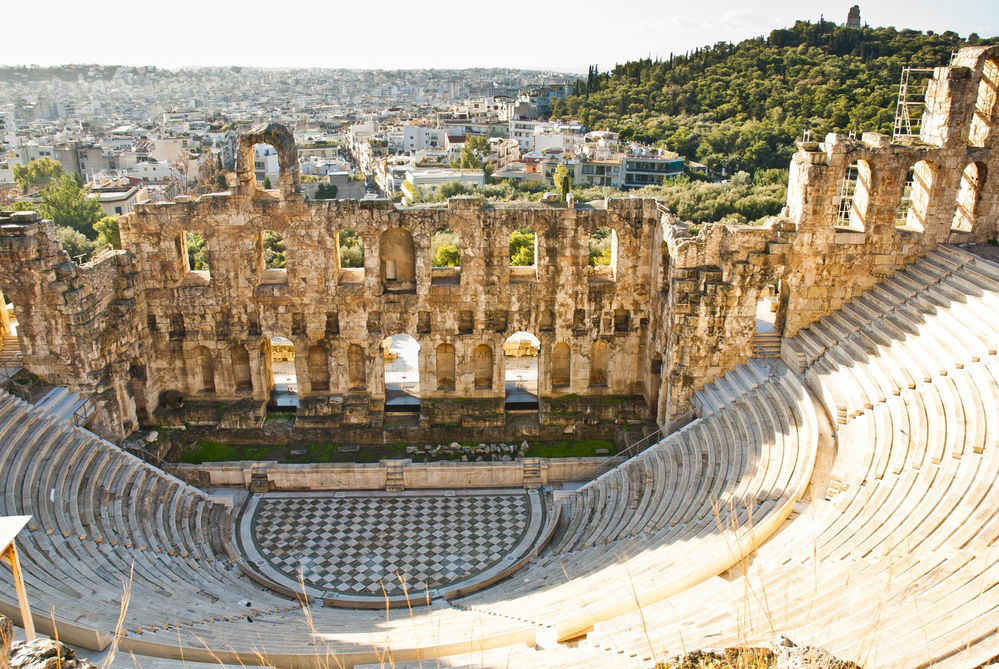
Greece is a mindblowing country with a prosperous heritage and millennia-old rich history. It goes without saying that Greece is worth visiting. Packed with tourists during the summer, there are some pros and cons to keep in mind if you’re planning to visit Greece.
Greece Pros:
- A priceless heritage made of countless ancient sites like the Acropolis of Athens
- Great weather, not just in the summer but also for the rest of the year
- Breathtaking natural beauty with mountains, pristine beaches, and to-die-for islands
- Healthy and delicious cuisine based on fresh local produce, including olive oil, fresh vegetables, cheeses, and seafood
- Greece is generally a safe country to visit
Greece Cons:
- The popular places in the country are jam-packed with sightseers in the summer months
- Greece has expensive areas, like the island of Santorini
- Sweltering summers can make sightseeing difficult
Pros And Cons Of Spain Over Greece
The Spanish culture is rich with lots of ancient history and sightseeing, making it one of Europe’s most visited countries. Before traveling to Spain, consider these pros and cons.
Spain Pros:
- Fabulous cities and towns with plenty of activities
- A varied landscape that offers a more diverse experience
- A cuisine that conquers every palate – and the tapas culture!
- A bustling nightlife in many places
- Top-notch public transit network
Spain Cons:
- Hot summers all around with cold winters in the central and north of the country
- Such a varied landscape means you’ll have to choose what to see and miss the rest
- English isn’t widely spread, and you will have difficulties communicating in less touristy areas
Cost Of A Vacation In Greece Vs Spain
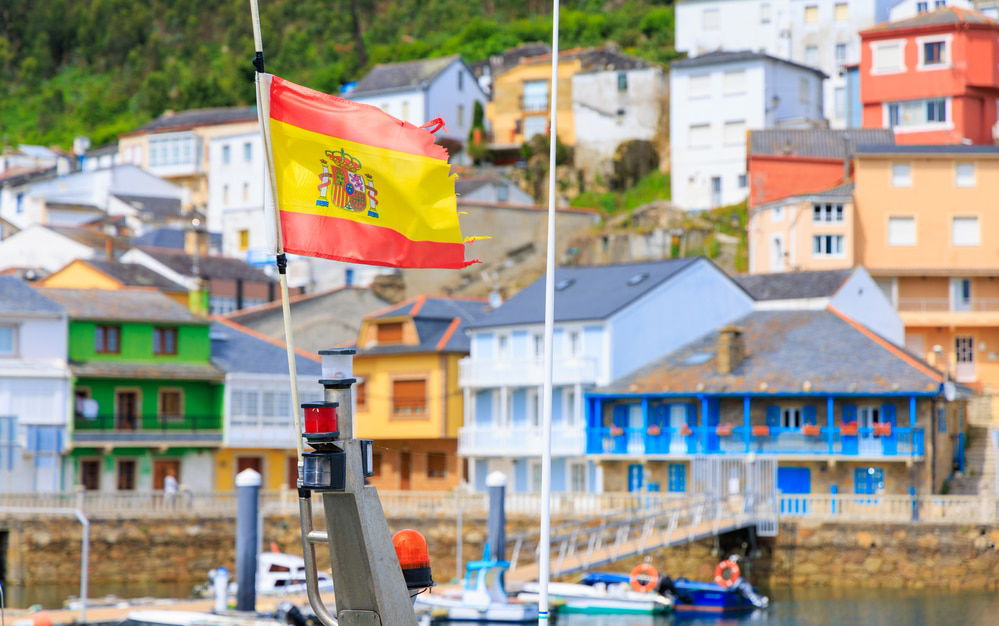
A critical factor in deciding which one to travel to, Greece or Spain, is the cost of your vacation. When comparing Spain and Greece, which is the cheaper destination?
We can state that there isn’t much difference between Greece and Spain regarding costs. Accommodation, food, and transportation costs are pretty much the same in both countries, with Spain being a little more affordable than Greece during the peak of the tourist season.
What really changes it all is where in Greece or Spain you will travel to. Santorini is consistently more expensive than other Greek islands, while a trip to Barcelona will cost you more than a city break in, let’s say, Valencia.
One area where Greece is significantly more expensive than Spain is for activities like snorkeling and diving trips, and sightseeing since you will need to purchase entrance tickets and you will likely hire an expert guide to show you around.
On the other hand, if relaxing at the beach is your main goal while in Greece, your vacation will be affordable since there are countless free beaches you can spend as much time on as you wish without spending a euro.
Must-See Historical Places In Greece
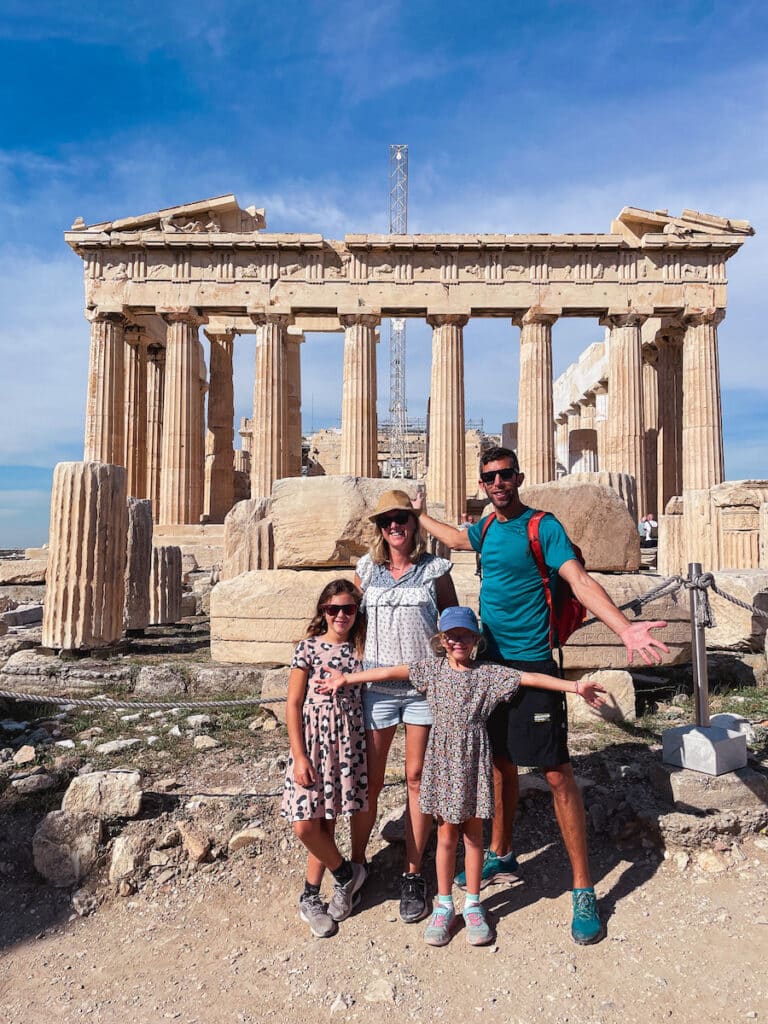
Greece is a beautiful country with so many places to visit that you will be spoiled with choices! Let’s check our suggestions on the best places to see during your vacation in Greece:
- Acropolis of Athens: one of the most famous ancient sites worldwide, the Acropolis is perched atop a hill overlooking the entire city of Athens. Stroll through famous temples and buildings like the Parthenon to learn all about Ancient Greek history and admire stunning views of the city.
- Palace of Knossos: an impressive complex on the island of Crete, the Palace of Knossos underwent a state-of-the-art archaeological restoration, which is a step back in time. This palace was said to be the site of the mythological Labyrinth, where the Minotaur lived.
- Temple of Apollo: this is a must-see site in the town of Delphi. Surrounded by high mountains and perfectly preserved, the Temple of Apollo was once a pilgrimage place visited by people from all over Greece.
- Mount Olympus: the best area in Greece for hiking and rock climbing, Mount Olympus isn’t just ideal for outdoor and nature lovers. Mount Olympus, the highest mountain in the country, is the mythological home of Greek gods and goddesses.
- Greek Islands: with over 6,000 islands, Greece is a paradise for beach lovers! There is something for every taste. Go to Santorini for a luxurious getaway, Ithaca for an authentic Greek trip, Mykonos if you are a partygoer, and Alonnisos if you’re looking for a scuba diving experience like no other!
Brands We Use And Trust
Must-see places in spain.
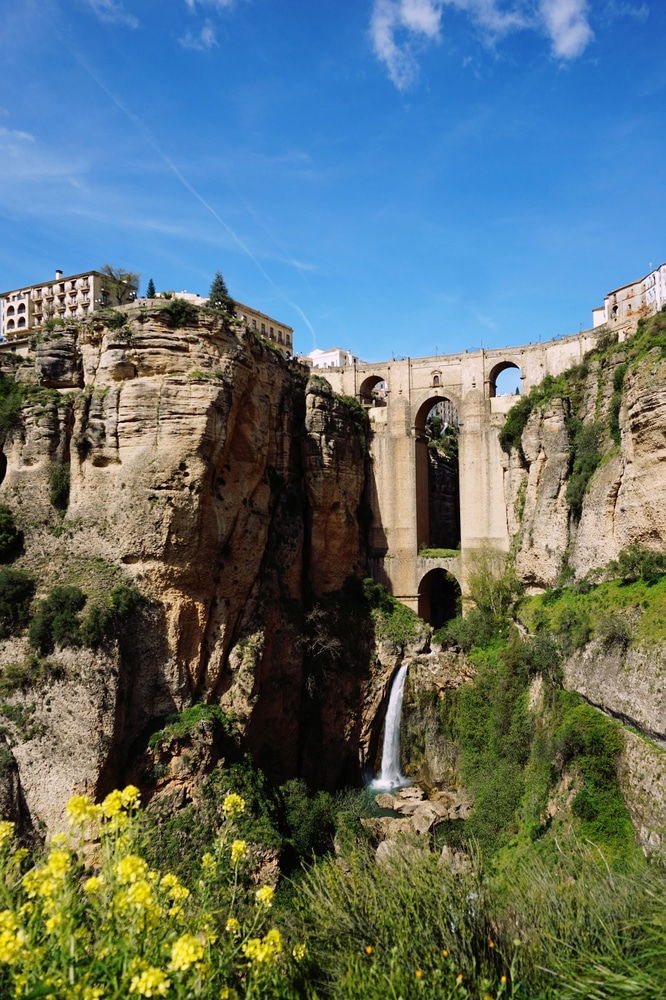
Spain is wide and varied, and you will have plenty of things to see and do depending on where you go. Here is a bullet list of the top places to visit in Spain:
- La Rambla in Barcelona: one of the most iconic streets in the world, La Rambla is the city’s main pedestrian artery. Connecting the stunning Plaça de Catalunya to the harbor, stroll up and down its 1.3 kilometers to discover unmissable spots like La Boqueria market
- Valencia’s City of Arts and Sciences: this architectural masterpiece is the very symbol of Valencia. A huge complex of buildings with a unique structure, the City of Arts and Sciences includes attractions like the Oceanografic Aquarium, a planetarium, an IMAX theater, and the Natural History Museum
- The Andalucia region: once Spain’s poorest region, today, it is among Spain’s top destinations. Sandy beaches , the spectacular Sierra Nevada mountains, charming towns with Moorish architecture, and the birthplace of flamenco, Andalucia is all of this and much more
- Spain’s incredible beaches: for a sun-filled holiday, head to the northeastern coastal region called Costa Brava or the southern Costa del Sol. Besides wonderful beaches, these areas are dotted with lovely seaside towns offering plenty of sightseeing, traditional restaurants, and shopping opportunities. Are you looking for some more? Travel to the Balearic Islands for a luxurious beach vacation
- The Canary Islands: an archipelago like no other, it’s located off the coast of Africa. These islands boast year-round perfect weather, slow-going villages and towns, and incredible natural landscapes, including tall volcanoes you can hike for breathtaking views
Who Has Better Food – Spain Or Greece?

When it’s time to sit at the dinner table, you will be delighted by Greece and Spain. There is much to say about Greece vs Spain and their respective cuisines!
Generally speaking, Greek food is typically lighter and healthier, while Spanish cuisine is rich and has strong flavors. Both cuisines are delicious and prepared with local ingredients that make them particularly tasty.
Greece is famous for some staple ingredients that you will find in many dishes, such as feta, olives ( and olive oil ), lamb, and fresh seafood. Delightful Greek salads with feta and kalamata olives , gyros stuffed with roasted lamb or chicken and tzatziki sauce, and shrimp saganaki are on every menu.
For something more fun and hearty, Spanish food is the way to go. Nothing is more typical than tapas, small plates of food to enjoy while drinking . Tapas can include anything and everything, from patatas bravas and croquetas to tortilla española.
There is only one thing more traditional than tapas – paella. Originally from Valencia, this main dish based on rice is quintessentially Spanish!
No matter what you like, you’ll indeed find delicious food in Greece and Spain.
Islands & Beaches Comparison Between Greece And Spain
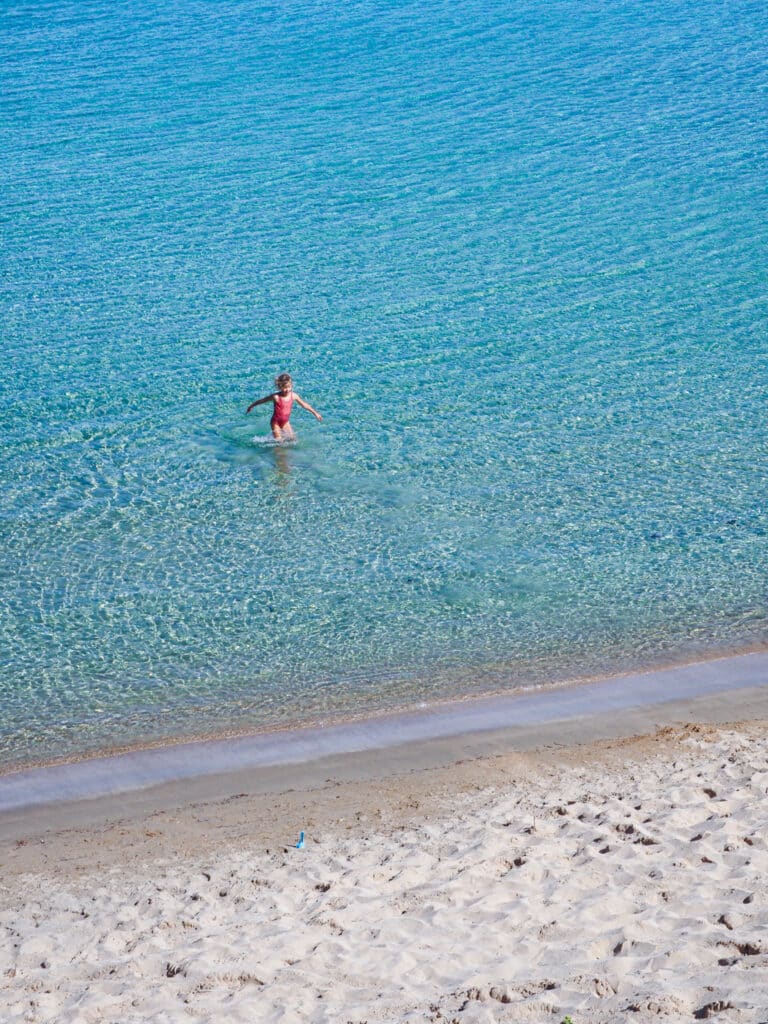
Greece and Spain are fantastic destinations for a summer holiday , and for good reason.
With over 6,000 islands scattered on the Aegean and Ionian seas , Greece is a magical place to visit. Island hopping is among the best activities you can do in Greece, and the best about its countless islands is that each has its unique charm.
From Santorini’s whitewashed houses and blue domes to Rhodes’s many archeological sites, the islands in Greece are just perfect. Speaking of Greek beaches, you’ll also find many on mainland Greece , for example, in the Halkidiki region.
Spain has two stunning archipelagos (the Balearic Islands and the Canary Islands). The Balearic Islands are quintessential Mediterranean and packed with tourists in the summer, while the Canary Islands are somewhat crowded during the European winters as well for their African climate.
The various islands of the Canary archipelago are incredibly diverse, with Lanzarote and the tiny La Gomera having a wild appearance and atmosphere. Besides the islands, Spain is blessed with over 5,000 kilometers of coastline, with an array of sun-kissed beaches to suit every taste.
If you want to relax, do water sports or party, Spain’s beaches have you covered! Plus, Spain has the highest number of beaches globally awarded the Blue Flag status.
- More islands to choose from
- Historical sites and ruins to explore on many islands
- Depending on the island of choosing, it can be a costly holiday
- A longer coastline with a perfect climate
- Less crowded beaches
- Overall, it is more affordable (exception made for jet-set islands like Ibiza)
So, Greece or Spain for summer vacation? With pristine beaches and jaw-dropping islands, you can’t go wrong picking one or the other.
Spain Vs. Greece For Large Cities

When discussing Greece vs Spain vacation, we need to talk about cities. Both countries have various options, but which is better for a city break?
- Athens: Greece’s capital, Athens, has world-famous historical sites, first and foremost the Acropolis with the stunning Parthenon. One of the oldest cities in Europe, Athens has a special atmosphere, and it’s home to some of the best restaurants, bars, and nightlife venues.
- Thessaloniki: Greece’s second-largest city, the charming port town of Thessaloniki has a great mix of history and culture and an exciting food scene.
- Heraklion: The main city on Greece’s largest island , Crete, Heraklion boasts Blue Flag beaches and the nearby archeological site of Knossos.
- Madrid: Spain’s capital and largest city, Madrid, has elegant architecture and a vibrant cultural scene. Home to one of Europe’s best museums, the El Prado, Madrid is a perfect city break destination for its many parks, sightseeing opportunities, and restaurants.
- Barcelona: the capital city of Catalonia’s autonomous community, Barcelona is one of Spain’s largest cities. Boasting iconic attractions, from the Sagrada Familia to Gaudì creations, Barcelona has a perfect mix of culture and history with a contemporary and cosmopolitan vibe and many hang-out spots.
- Seville: the third-largest Spanish city, Seville is the capital of the region of Andalusia. The birthplace of the flamenco dance, Seville offers visitors the remnants of its Moorish past and great attractions, including Plaza de España and the Royal Alcázar.
So, which country do you think is best for your next city break?
Is Greece Or Spain Better For Hiking
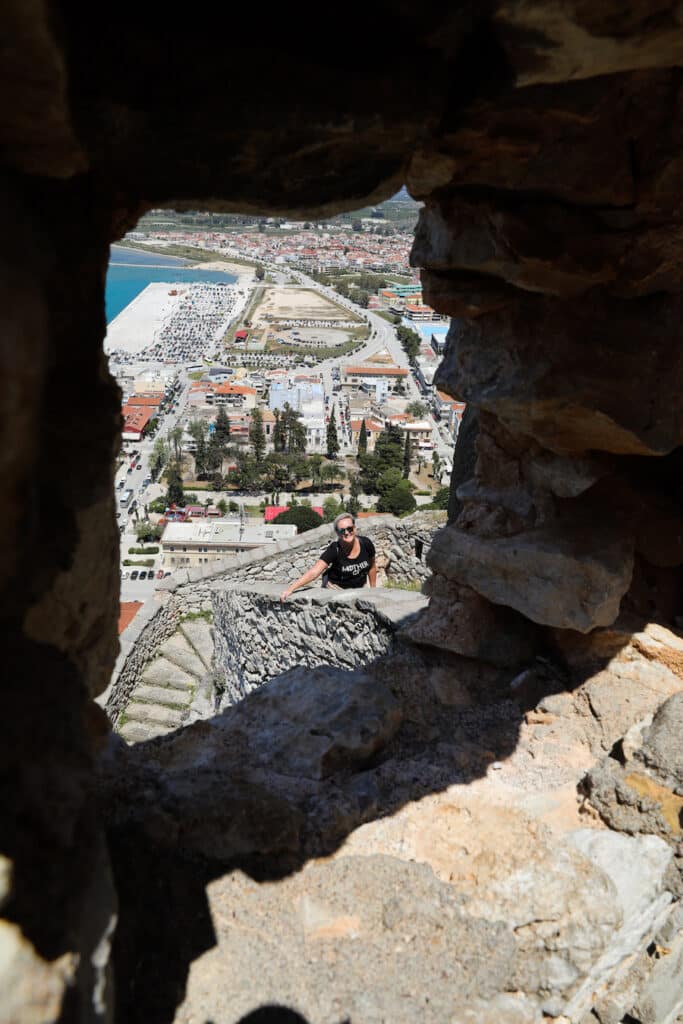
Both Spain and Greece are fabulous hiking destinations. Greece offers everything you can dream of for a hiking vacation : rugged mountains with deep gorges and caves, alpine lakes, and volcanic calderas.
Regarding Spain, the hiking options in the country are endless, including the peaks of Sierra Nevada and the Pyrenees and the famed Camino de Santiago.
Both Spain and Greece are nature lovers’ heaven when it comes to hiking and marveling at breathtaking vistas. Most people pick Spain over Greece for hiking, but ultimately, the top destination for your vacation will depend on personal preferences.
Nightlife In Greece Vs Spain

When it comes to nightlife entertainment, Greece and Spain have different scenes to offer.
There are fewer hang-out destinations in Greece. On top of the list for the mainland is Athens, which boasts a popular nightlife scene with a great mix of bars, nightclubs, and theater productions. On the islands, the best options if you are a partygoer are Mykonos , Ios, and Corfù.
Spain has countless nightlife places, as all the main cities, beach holiday towns, and islands have active nightlife scenes. Madrid, Granda, Malaga, and Valencia all offer plenty of party opportunities, but Barcelona is the undisputed capital of Spanish nightlife.
Speaking of the Balearic archipelago, Ibiza and Formentera are the islands if you want to dance the night away. Mallorca also has some great nightlife but is mostly limited to its capital city, Palma de Mallorca.
Overall, Spain has more nightlife venues than Greece. However, you can still find spots in Greece for chill and pleasant evenings.
Language Barrier Comparison Greece Vs Spain
Regarding communication, you won’t have a single problem in Greece or Spain’s tourist areas. Those working in the hospitality sector know English very well.
You will find most signage and public announcements in the respective languages both in Spain and Greece. This can make getting around challenging, especially in Greece, since the Greek alphabet is different from the Latin alphabet – you won’t even recognize the letters!
Spain Vs Greece For Public Transport

You might want to travel between different places once in Greece or Spain and to do it; you can rent a car or use public transport.
Greece has an excellent public transportation network, with buses connecting all the major towns with the small villages. Buses are also incredibly cheap, so they are a fantastic option for those traveling on a budget. To get to the various islands, you can hop on the ferries and go quickly from one beautiful place to another.
Spain has top-notch public transport, with an extensive network of high-speed trains, inter-regional buses, metro lines within the big cities, and cheap flight connections.
Both countries offer affordable public transportation, but Spain’s public transportation system is more extensive and efficient, which makes it a better destination if you don’t want to drive but would still want to explore more places.
Why Is Greece Worth Visiting

It goes without saying that Greece is a wonderful destination with many attractions to offer visitors. Here is a summary of why Greece is worth visiting:
- Millennia-old history and culture
- Unique archeological sites, many of which are perfectly conserved
- Countless islands with the most beautiful beaches
- Amazing seafood and overall healthy and delicious traditional cuisine
Why Is Spain Worth Visiting
Spain is also incredible to visit, and tourists are spoiled for choice regarding things to see and do. Here is an overview of why Spain is worth visiting:
- World-class museums and exciting cities
- Diverse cultures, traditions, and architecture that vary from region to region
- A rich and lush cuisine with the lovely tradition of tapas
- Extraordinary nature for outdoor adventures, from hiking to skiing
Greece And Spain FAQs
What are the main differences between spain and greece for travel.
Spain has more UNESCO World Heritage Sites , offering a rich history and archaeological appeal. Greece, on the other hand, boasts stunning beaches with clear waters .
What can I expect in terms of cuisine in Spain and Greece?
Spain offers a variety of dishes in its cuisine, while Greece is famous for its gyros and baklava.
Which destination is more budget-friendly?
Both countries offer luxury and budget-friendly options, but Spain generally offers more affordability and a wider range of budget-friendly options for travelers.
Do locals in Spain and Greece speak English?
Greece has better English proficiency overall, but many Spanish locals can still assist tourists, especially in tourist areas.
Which country has a more vibrant nightlife?
Spain has a more active nightlife scene, with popular cities like Madrid, Barcelona, Ibiza, and Valencia offering numerous clubs and bars.
What are the weather patterns in Spain and Greece?
Greece experiences hotter weather during the summer compared to Spain, with moderate winds in July and August.
Is the transportation infrastructure well-developed in Spain and Greece?
Spain has a well-developed transport infrastructure, including public transportation services, highways, and airports, making it easy to travel within the country . Greece also has a decent transport system, but it may be comparatively less extensive.
What kind of natural beauty can I find in Spain and Greece?
Greece offers idyllic islands and picturesque hills, while Spain provides a combination of bustling cities and natural parks.
Which country is considered safer for tourists?
Spain is generally considered safer than Greece for tourists. However, it’s always advisable to exercise caution and be aware of pickpockets, especially in crowded areas.
Are there any attractions for football fans in Spain and Greece?
Spain is a great destination for football fans, with famous teams like Real Madrid and Barcelona attracting many visitors.
How should I decide between Spain and Greece?
Consider your preferences and resources when choosing between Spain and Greece. Think about whether you prefer history or beach destinations, your budget, your preferred cuisine, and other factors that are important to you.
What to see in Spain and Greece?
Spain offers beautiful cities like Barcelona, Seville, and Córdoba, while Greece boasts Santorini , Athens, and Agios Nikolaos on Crete .
What are the landscapes like in Spain vs Greece?
Spain has diverse landscapes, including mountains, beaches, and plains. Greece is known for its islands and mountainous mainland.
What has better historical attractions, Spain or Greece?
Spain has old Roman ruins, while Greece has an abundance of ancient Greek temples and museums.
Which activities are there in Spain and Greece?
Both countries offer a wide range of outdoor activities , such as hiking, surfing, scuba diving, and skiing.
What are the popular dishes in Spain and Greece?
- Spanish cuisine features tapas, steak, paella, tortilla española, plus more
- Greek cuisine includes feta, olives, lamb, seafood, and honey desserts.
Move This Adventure To Your Inbox & Get An Instant Freebie

No spam. Unsubscribe at any time.
So, Is Spain Or Greece Better
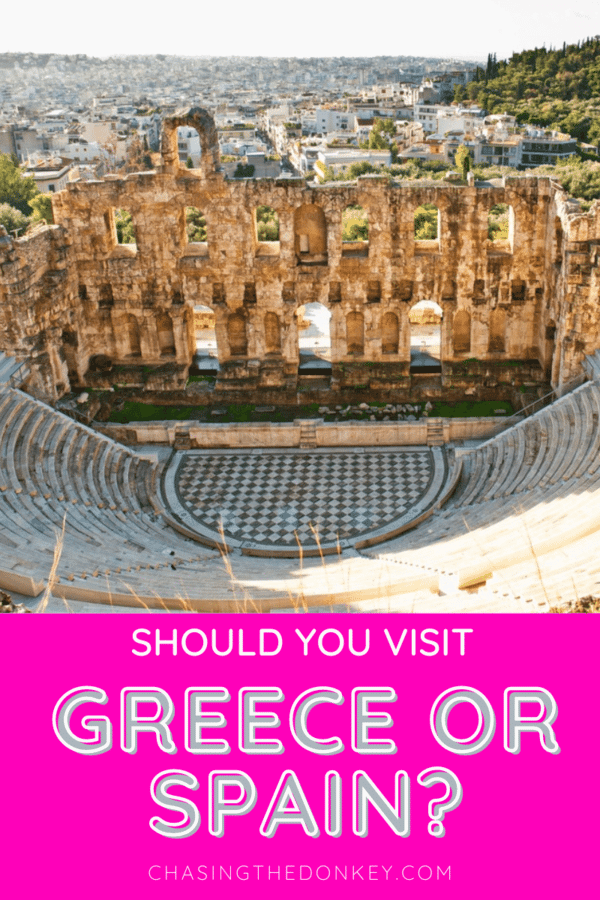
After considering all the pros and cons of Greece and Spain, it’s obvious which is the main takeaway: both countries are incredible to explore.
Greece and Spain have unique histories and cultures that mesmerize every tourist. Whether you’re planning to visit Ancient Greek sites , go island hopping, or stroll around magnificent Spanish cities with diverse attractions, entertainment, and food, there’s something special in both countries.
So, how do you choose between Greece and Spain? Which is the best country for you? Well, I think that it all comes down to what you are looking for from your next Mediterranean coast holiday.
Skim through our guide again, and pick where to go next between Greece and Spain! You are sure to have an unforgettable time in either country.
- Croatia Or Italy Comparison Guide
- Croatia Vs. Malta – How To Choose
- Greece Or Portugal Comparison Guide
- Portugal Or Turkey Comparison Guide
- Greece Or Turkey Comparison Guide
- Croatia Or Albania Comparison Guide
Leave a Reply Cancel reply
Your email address will not be published. Required fields are marked *
Save my name, email, and website in this browser for the next time I comment.
This site uses Akismet to reduce spam. Learn how your comment data is processed .
Subscribe To Unlock Your FREE Customizable Travel Packing List & All Our Best Tips!
Unlock Your FREE Customizable Travel Packing List!
Subscribe Now For Instant Access To Stress-Free Packing
Spain Vs. Greece – Which Mediterranean Country Is Best?
Two of the most popular vacation destinations in Europe are without a doubt Spain and Greece, but which one is going to suit you better? Let me start by first saying, no matter which one you choose you’re going to have a great time. I have traveled extensively around both of these magical countries and I can say without question, that visiting both is a must if you have the time and budget.
But, life isn’t always so easy and chances are you’re going to have to pick between them. When it comes to Spain vs Greece, they are both relatively similar in some ways but very different in others. Join me as I discuss everything you need to know about Spain vs Greece so you can pick the right destination for your next vacation.
About These Great Countries
Since both Spain and Greece are quite large countries, it’s key to look at their natural environments to get a sense of what each one has to offer. It’s my favorite way of looking at a country as it gives rise to activity ideas and further thoughts about what you might be able to do there.
Spain is a very diverse country when it comes to its different features. You could travel from north to south and east to west and easily think you were in a completely different country when you arrived.
Northern Spain is home to the Pyrenees mountain range and the Picas De Europa mountain range too. These areas are full of wonderful peaks and national parks where you can hike in the summer, get to know the traditional villages and in the winter you can even ski.
The northern end of Spain that touches the Atlantic starts on the border with France and moves from San Sebastian all the way around to the wild western Atlantic coast close to the iconic town of Santiago De Compostela.
I’m not going to lie, this is one of my favorite parts of Europe and this is thanks to the towering cliffs, white sand beaches, amazing waves for surfing, and the mountains that fall into the sea.
The northeastern coast of Spain drops down from the Pyrenees to the Mediterranean and it’s where you’ll find iconic cities like Barcelona or Valencia that come with a ton of history, sand beaches, and just off the coast are the Balaeric islands of Majorca and Ibiza which cater to a different side of Spanish culture too.
The southern coast of Spain is similar with stunning golden sand beaches, craggy mountainous regions in the background, and great towns such as Seville and Marbella which are all worth exploring.
Then, of course, there is central Spain which is home to arid plains and towns like Salamanca and Madrid, all of which are packed with ancient history and are great places to visit.
Greece is a little different from Spain as it’s made up of thousands of idyllic islands and its mainland is covered mostly in mountains (which I think of as Greece’s hidden gems !). But, this means spending time in Greece is going to be centered around either island hopping or picking one island for the majority of your stay.
The seas around the Greek islands are undeniably beautiful. Most of the beaches in Greece are pebble beaches, meaning not only do you come home from the beach without any sand on your feet ( a real bonus) but it also means the waters are crystal clear. Imagine azure blue water where you can see the bottom at 30ft, and you have pretty much every Greek shoreline.
With so many islands and calm seas, you can rent boats for the day and go exploring around the island with no licenses needed, and spending time under the water is great too since the visibility is so good.
Mainland Greece also has quite a lot to offer such as the spectacular scenery of the UNESCO World Heritage Site of Meteora. The rock formations and ancient buildings create a landscape that one might have never seen before.
The mountains of mainland Greece are also covered with hiking trails that can take you from one traditional village to the next, therefore it’s a great idea to spend some time in both the islands and up in the more mountainous regions.
Something Greece has is more ancient history than almost every other country in the world. It’s home to Athens with its 5th-century B.C. Acropolis citadel with the Parthenon temple and tonnes of other ancient Greek temples all around the country that were built and dedicated to Greek gods.
Greece is also home to hundreds of ancient museums , so if you’re a bit of a history buff, then you’ll love spending time learning about all the wonders of Ancient Greece.
When it comes to Spain vs Greece, choosing between them is almost impossible since they have so much more to offer. Spain, in my eyes, has a lot more diversity when it comes to its natural landscapes while with Greece you have the stunning mountainous mainland and the thousands of islands that are all worth exploring.
It’s a very tough choice, as Greece certainly has the edge when it comes to seeing all the monuments of Ancient Greece but Spain is also home to a lot of old Roman ruins that are some of the best-preserved in Europe.
Things To Do In The Outdoors
When it comes to ocean activities, there isn’t much you can’t do in Spain . If you’re looking for some of the best surfing waves in the world, then the entire northwest coastline of Spain is the perfect playground to spend your time in with some of the most famous waves in the world such as Mundaka.
If it’s hiking you’re after, the options are endless between the Pyrenees and Picas De Europa, let alone all the hiking trails along the dramatic coastline of the north and the tamer coast along the east and south of the country.
The famous pilgrimage to Santiago De Compostela is a very famous and beautiful hike, and there are some wonderful routes that will have you starting in the Pyrenees and walking all the way down to the Mediterranean coast.
Island hopping is also an option in Spain. While there aren’t thousands of islands, the Balaeric islands of Ibiza, Majorca, and Menorca are all stunning and we all know how good the parties on Ibiza are.
During winter, the mountains of Spain become ski slopes adding a whole new dimension to what you can do in Spain and when to visit. The peaks of Sierra Nevada in southern Spain and the Pyrenees in the north are home to some of the most affordable skiing in Europe.
Other activities available include scuba diving, windsurfing, kite surfing, rock climbing, sailing, windsurfing, white water rafting, and more.
When most of us think of going to Greece, we think of sitting on a beach on a Greek island, and while this is something that has to be done at some point, it’s not all Greece has to offer. ( See Our Recommended Greece Itinerary )
The most obvious playground in Greece is, of course, the crystal clear seas that lap its shores. If you have ever wanted to learn how to sail then there isn’t a better place than Greece to do it. Booking a 4-day island hopping tour where you get to learn to sail a boat isn’t something you can do in many places, but the thousands of Greek islands make this a reality.
Another ocean activity that is amazing in Greece is Scuba Diving and this is thanks to the crystal clear water and the numerous features you can dive around. There are some amazing cave and wreck dives to be found around the islands and the visibility is second to none.
Other great ocean activities in Greece include sea kayaking, SUP-ing, long-distance ocean swimming, and windsurfing. This is all made possible by the incredibly calm waters that Greece has outside of the heavy winds of winter.
Outside of the beach and the sea, Greece is also famous for its rock climbing and you can climb rock faces that will have you falling to the sea if you fail or the more daunting ones on the mainland, especially in Kalymnos which is a famous area for it.
As I already mentioned, Greece is also very mountainous and great for hiking. You can do simple day hikes around amazing landscapes or do a 50-mile multiple-day hike staying at traditional villages along the way.
With so many mountains you might think that snow and skiing were possible in Greece, and you’d be right. During the winter, the tall peaks see some excellent snowfall and you will have quite a few ski resorts to choose from.
The decision between Spain vs Greece doesn’t really get easier in this section. Greece is by far the best country to visit if you want to go island hopping or scuba diving, while Spain is far better for things activities like surfing and kite surfing.
I’d also say Spain has the edge when it comes to hiking and general exploration as it has such a diverse array of natural environments in one country. In the end, most of the activities are similar and it doesn’t make it any easier to choose between Spain vs Greece.
The food in Spain is somewhat spectacular and it ranges from tapas to full-blown steaks, chorizo, paella, and of course, fresh seafood. Let’s be honest though, Spain is most notably known for its tapas which can include anything and everything.
Some of the best Spanish tapas dishes include Patas Bravas (possibly the most delicious potatoes you will ever eat) garlic fried prawns, octopus, croquetas (pork or fish in bechamel sauce deep-fried in bread crumbs), and my favorite of all, their steak.
I have never had a better steak than in the north of Spain as a tapas restaurant. The waiter first presented the marbled cut of meat and then it’s slated and cooked over hot coles to a perfect medium-rare. It melted in my mouth and I can still taste it today.
Outside of tapas, Sapin is of course also famous for its Spanish omelets aka Tortilla Española which are made with a differing mixture of onions, potatoes, chorizo, and spinach. They are delicious, very filling, and can be eaten at almost any meal or as a snack.
Paella is another Spanish classic that hails from Valencia. A mixture of rice, vegetables, meat, and seafood is all mixed together in a large dish that is traditionally shared with the family. A traditional paella may have rabbit and/or chicken in it, but these days pork and calamari, mussels, prawns, and even clams are added to the dish.
Another Spanish classic that you have to try in Spain is Fabada which is a warm wintery stew made from beans, tomatoes, and chorizo or blood sausage. It’s absolutely delicious.
We also can not talk about Spanish food without discussing the northern Spanish town of San Sebastian. It’s hailed as one of the food capitals of Europe and is home to an incredible number of Michelin Star restaurants, so if you want to experience Spanish cuisine at its best, you better head there.
Greek food is just as impressive as Spanish food in my eyes but it’s also very different. Greek is famous for feta, olives, lamb, and amazing seafood, and all of these dishes and ingredients are simply delightful.
Wherever you are in Greece, you’re going to find feta on the menu and while a traditional greek salad of olives, feat, cucumber, and tomatoes is a great side dish, you can’t leave Greece without trying some baked feta. It arrives as a whole block of feta covered in bread crumbs that have been baked to the feta’s melting point. The crispy outside with the deliciously warm feta inside is to die for.
The Greeks love eating lamb and whether it’s a slow-cooked lamb pot with a side of potatoes or a traditional mousaka you order, it’s going to be some of the tenderest lamb you might ever try. Mousaka is one of the most traditional Greek dishes and is made by layering filled aubergines with lamb mince with fried puréed tomato, onion, garlic and spices, potato, then a topping of béchamel sauce and cheese.
Kebabs are another dish the greeks love to eat and lamb is also featured heavily there but chicken, beef, and fish play a large role. Being on the Med, the seafood in Greece is some of the best in the world. Fresh whole grilled fish, swordfish steaks, octopus, and prawns are just some of their best delicacies.
We can forget the Greek sides either and these really set off any meal you have in Greece. Fresh taramasalata, Greek olives, olive oil, and stuffed vine leaves called dolmades are their specialties. The dolmades will change from region to region and even household to household, so if you want a dish to continuously taste as it changes with where you eat, be sure to order them with every meal.
Another thing Greece is famous for is its honey and the baklava that comes with it. Baklava is an amazing dessert that is made with ground nuts and honey stuffed inside a filo pastry, sounds amazing doesn’t it?
The Verdict
The is, of course, a lot more to cover when it comes to Spain vs Greece and their respective food scenes. It probably needs a full article in itself. Both the cuisines are absolutely fantastic and have quite a range to them from fresh seafood to hearty home-cooked meals, so rest assured, whichever country you decide to visit, you’ll be tasting some amazing dishes.
The Cities & Towns
Something that has to be mentioned when discussing Spain vs Greece is their incredible cities and towns, some of which are the best you can find in Europe.
Spain is covered with stunning traditional towns and villages that look like they haven’t changed for hundreds of years and they are not hard to find either. A drive into the countryside will have you in these quaint villages in no time where you can enjoy the traditional food that each region has to offer.
One of the best cities in Spain to visit is without a doubt Barcelona. It’s an incredibly popular city for a weekend break and the combination of its stunning architecture, ancient history, cosmopolitan vibe and the fact it’s on the beach make it quite spectacular.
In Barcelona, you’ll find the Basilica of the Sagrada Familia which is stunningly beautiful, then there is the Gothic Quarter where Picasso used to live which is the heart of the old town, the Picasso museum is also worth a visit, and there is so much more to see too.
Seville, the capital of the southern region of Andalusia is another must-visit and it’s no surprise when you consider that the city was supposedly built by Hercules himself. In Seville, you’ll find flamenco dancers, amazing ancient architecture, and as the ancient capital of Muslim Spain, it is drenched in history.
Córdoba is another Andalusian city that is a must-see. It’s famous for its gigantic La Mezquita mosque and its old town is full of beautiful architecture too and full of winding cobbled streets, fountains, and flowers. It feels a little like you’re in a fairytale while you’re there.
We have only scratched the surface when it comes to Spanish towns and cities as historical places like Santiago De Compostela and the amazing San Sebastian are all places that should be on the list along with a lot more.
When on the Greek island, you are not going to struggle to find beautiful towns and villages, there are pretty much everywhere. The most beautiful of all the Greek islands might be Santorini and its towns Oia and Fira.
The towns of Oia and Fira sit on the edge of the island and are made up of whitewashed houses with blue dome roofs which when looked at from afar create a picture of quintessential Greece. The rugged baron mountain backdrop with these white and blue houses with the reaching deep blues of the Aegean sea make it something spectacular.
Be warned though, Santorini sees more than 2 million visitors a year so you’re not going to be alone.
Athens is another must-see while in Greece but only for a night or two before you head to the mountains or the islands. Walking around the ancient remains of the 5th century BC Acropolis and Parthenon are must, as is going to the museum at the Acropolis to learn all about the Ancient Greeks and their history.
Athens is, of course, more than just its ancient side, it’s very much alive today. You’ll find stunning streets surrounded by flower pots along with cafes, taverns, and little boutique stores that are a great example of Greek culture today.
If you had to visit just one city or town in Greece , it should perhaps be the town of Agios Nikolaos on the Greek island of Crete. Agios Nikolaos is a small port in Crete which is surrounded by the sea on every side, bar one. and is home to stunning houses in many colors that come right to the water’s edge. The vibe in Agios Nikolaos is lovely and relaxed, the seafood is amazing, and it’s somehow fantastic for shopping too.
Agios Nikolaos is also near Spinalonga which was a leper island quarantine center that was still in use in 1957 which is also worth a visit.
What we have come to learn about Spain vs Greeve and their respective towns and cities in the above still doesn’t really help with choosing which of the two countries to visit. They are all equally beautiful, traditional, and historical in their own ways.
Spain vs Greece – The Verdict
Do you know which country you’d like to visit yet? The right answer is both as they are so wonderful but in such different ways. I’d suggest visiting Spain if you’re looking for diverse landscapes and a bit more of an active holiday but if you want amazing views, sailing, island hopping, and diving, and ancient wonders, then it has to be Greece.
RELATED POST: GREECE VS CROATIA
About the Author Roger Timbrook
Roger is a little obsessed with travel. He has been to over 40 countries, broken 3 suitcases and owned over 10 backpacks in 12 months. What he doesn't know about travel, ain't worth knowing!
Leave a Comment:
Save my name, email, and website in this browser for the next time I comment.
- Overview Guide
- 1 Week Itinerary
- Train Journeys
- Epic Drives
- Stunning Lakes
- Historic Castles
- Lauterbrunnen
- Grindelwald
- Chocolate Tours
- Swiss National Park
- Majestic Mountains
- Spectacular Waterfalls
- Famous Things
- Tasty Fondue
- 10 Day Itinerary
- Cherry Blossoms
- Tokyo Shrines
- Dos and Don’ts
- Osaka Guide
- Osaka Itinerary
- Osaka or Kyoto
- Kyoto Day Trips
- Matsumoto Castle
- Tokyo Luxury Hotels
- Island Hopping
- Best Campsites
- Driving Tips
- Beaune, France
- Barcelona Itinerary
- Spain Itinerary
- Greece Itinerary
- Italy Road Trips
- Berlin Day Trips
- Norway Northern Lights
- Netherlands National Parks
- Mostar, Bosnia
- Best Airlines
- Midwest Ski Resorts
- Florida RV Parks
- Washington RV Parks
- Oregon RV Parks
- Utah Camping
- Texas Camping
- Chicago National Parks
- East Coast National Parks
- Colorado National Parks
- Joshua Tree
- Yellowstone
- Alberta Hikes
- Flashlights
- Water Filters
- Sleeping Pads
- Solar Lanterns
- Tent Brands
- 4-Person Tents
- 4 Seasons Tents
- Backpacking Tents
- Beach Tents
- Cabin Tents
- Multi-room Tents
- Pop-up Tents
- Truck Bed Tents
- Underwear (Men)
- Backpacks Under $100
- Microspikes
- Boonie Hats
- In The World
- New Zealand
- Hardisde Luggage
- Lightweight Luggage
- Luggage Sets
- Spinner Luggage
- Durable Suitcases
- Duffel Bags
- Kids Luggage
- Teen Luggage
- Space Saving Luggage
- Business Carry-Ons
- Garment Carry-Ons
- Suitcases Under $50
- Travel Briefcase
- Zipperless Suitcases
- Rolling Briefcase
- Luggage Straps
- Luxury Brands
- American Tourister
- AmazonBasics
- Delsey Chatelet
- Anti-Theft Backpacks
- Backpacks Under $50
- Baby Carrier Backpacks
- Cooler Backpacks
- Backpacking Backpacks
- Climbing Backpacks
- Backpacks for Back Pain
- Beach Backpacks
- Hiking Backpacks
- Business Travel Backpacks
- Laptop Backpacks
- Backpacks for Tablets
- Commuter Backpacks
- Travel Backpacks (Men)
- Travel Backpacks (Women)
- Waterproof Backpacks
- Wheeled Backpacks
- Down Jackets
- Down Parkas
- Fleece Jackets
- Hardshell Jackets
- Rain Jackets
- Softshell Jackets
- Eco Friendly Jackets
- Gore Tex Alternatives
- Heated Jackets
- Lightweight Jackets
- 3-in-1 Waterproof Jackets
- Parajumper Jackets
- Rain Poncho
- Ski Jackets
- Travel Hoodies
- Travel Jackets
- Winter Coats
- Helly Hansen
- Mammut Jackets
- Patagonia Nanopuff
- Survival Jackets
- Flower Captions
- Waterfall Captions
- Tree Captions
- Sunset Captions
- Sunflower Captions
- Rainbow Captions
- Paddle Boarding Captions
- Hot Air Balloon Captions
- Kayaking Captions
- Airplane Captions For Instagram
- Forest Captions
Italy, Spain and Greece: 10-Day Itinerary for First Time Visitors
© 2004 YaninaTravels
I was determined to see Rome, Florence, Venice, Barcelona, Athens, Myconos and Santorini. All of them! In 10 days. It took me a few months to plan this trip, since it was involving so many combinations and matching in between various kinds of transportation (flights, rails, water buses, regular buses, ferry rides, etc.)
WHAT TO BRING
Read my other post Traveling with Less: Travel Gear Guide
Flight from USA to Rome, Italy. Get a taxi or a shuttle from the airport to the hotel. Hotel in Rome: Holiday Inn Express Rome – San Giovanni (2 nights)
Explore Rome. Take a walk and enjoy the vibrant energy of the city. I loved the Trevi Fountain, the massive Colosseum, the narrow streets with romantic little restaurants and outside tables, decorated with fresh flowers and the smell of delicious food around!
Take a rail from Rome to Florence. Book your one-way ticket online at Rail Europe . Take any of the city sightseeing hop-on hop-off buses to explore Florence on the same day. Hotel in Florence: Hotel Olimpia (1 night)
Take a rail from Florence to ‘Venice – Santa Lucia’ (this is the central train station to Venice). Book your one-way ticket online at Rail Europe . Take a water bus to the hotel with Vaporetti, which are public water buses. They run 24 hours a day, however, less frequently after midnight. Different lines travel different parts of the city at various speeds. You can buy ticket on the boat from the boat attendant. Contact the hotel where you decide to stay and ask them what boat number you should take and where to get off. Hotel in Venice: Hotel Villa Tiziana (1 night)
Take a water taxi to go back to the train station Mestre-Venezia, from where you can get on a train or bus to the airport Treviso, in order to get on a plane with Ryan Air to Girona Airport (Barcelona, Spain). Purchase in advance your round trip air ticket (Treviso-Barcelona) from Ryan Air . Get on a bus from Girona Airport to Barcelona to your hotel. Hotel in Barcelona: Barcelo Hotel Sants (2 nights)
Take any of the city sightseeing buses in Barcelona to explore the city in a day.
Take a bus back to Girona Airport (Barcelona) to get on the flight back to Treviso Airport (Venice). Get on ATVO bus from Treviso Airport to Piazzale Roma to the port where you get on Minoan Line’s bus-shuttle (grey Brusutti bus) and they will drive you to the sea port for your ferry to Greece. Get at the sea port and take off to Greece with Minoan Lines Ferry to Korfu-Igumenitsa-Patras. You will spend one night on the ferry and will get off the next day at the last stop – Patras. Buy your tickets online and in advance.
Arrive in Patras and get on a bus to Athens. Hotel in Athens: Acropolis View Hotel (1 night)
Explore Acropolis in Athens in the morning. In the early afternoon, get on a taxi from the hotel in Acropolis to the port in Piraeus. It is about 20 min drive and costs no more than 15 Euro. From the port of Piraeus, get on Paleologos Travel high speed ferry to Myconos, which brings you there in about 4 hours. Hotel in Myconos: The Myconian K Hotels (1 night in Myconos). This hotel provides transportation on arrival and departure from/to the port/hotel, free of charge. Ask them for arrangements.
Get on a ferry to Paros and from there on ferry to Santorini Hotel: El Greco Hotel Apartments (2 nights)
After Santorini, my trip continued with a flight back to Athens, Greece and then another flight to my native Varna, Bulgaria for a 13-day stay. Later on, I got on a flight from Varna to Paris, where I had a chance to spend a night, go for a night walk and get on the Eiffel Tower. In the morning I took another short walk and had coffee and pastry at one of the Paris’ charming little coffee shops. Lastly, I got on my flight back to the US!
5 thoughts on “Italy, Spain and Greece: 10-Day Itinerary for First Time Visitors”
Would you do anything differently? Most folks say not to do it All . Did you like your hotels and recommend? Rec ferry to Greece w so little time?
Hi Sheryl, I apologize for missing your message! The only thing I would do differently – I would entirely skip visiting Barcelona, Spain, which would give an extra day in Italy or Greece, which were my favorite. Did you do that trip?
What did you use for your research about where you wanted to go and the different methods of transportation? Also, how much did the whole trip cost you?
Internet 🙂 About $2,000 for accommodation and transportation, without food included and without the air ticket from USA to Europe and back. Keep in mind that I took this trip in 2004, which is 16 years ago! Nowadays you can find better deals on accommodations with AirBnb, as well as air tickets deal.
This is very helpful
Leave a Reply Cancel reply
Your email address will not be published. Required fields are marked *

- Greece , Spain
Spain vs. Greece
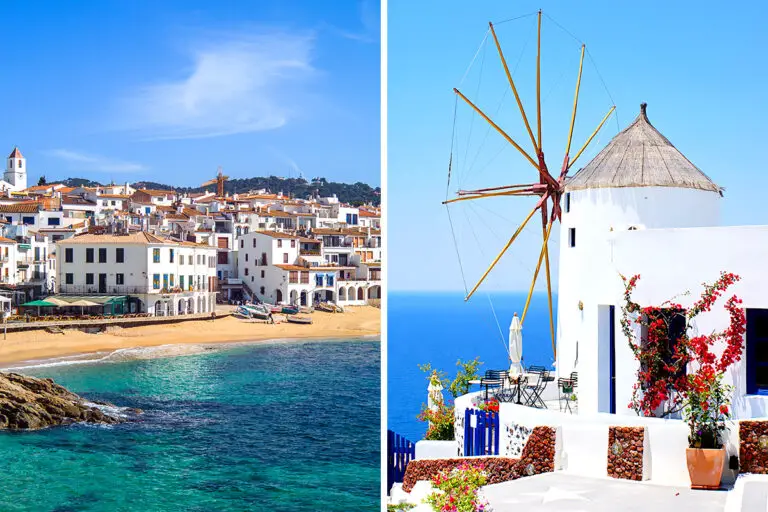
Table of Contents
Spain is a country made for those with love for humankind. It’s where you go when you’re craving genuine encounters from people of every kind, be it a fellow traveler or a nice local at a bar. It’s also a place you can appreciate if you have a keen eye for architecture or want to let loose and dance to the groove.
Meanwhile, Greece is made for thrill seekers and people inclined to go on mighty adventures. In this country, you can create your tale, whether climbing Mount Olympus or crossing the second-deepest gorge to ever exist! It’s also the perfect getaway destination to have tan lines or to experience everything from several islands all at once.
All in all, Spain vs. Greece is a tough decision – but one you can be sure to enjoy no matter your choice. You can’t go wrong with either of these European hotspots, and there’s definitely no blaming you if you pick both!
If you’re looking for a getaway spot with an S-class rating, your search is over once you get to Spain! It’s every traveler’s dream come true, known as the land of sangria, sunshine, and siestas. The country is simply overflowing with charm and character, so much that you’d think you’ve fallen straight out of a movie set.
First off, its unparalleled architecture brings you back to many different eras. You don’t need a time machine to witness the grandeur of time that has long passed – Spain’s the only remedy you’ll want! Don’t forget the many natural wonders La Piel de Toro possesses. From its beautiful Mediterranean coast to the snow-capped peaks of the Pyrenees, you can find a new favorite scenery in this country.
And while there is plenty of stunning sites to relax on, there’s also something for those looking for an adventure. Many kinds of encounters are waiting for you in Spain, from taking in incredible art galleries to tasting world-famous tapas. Plus, with its fantastic wines and craft beers, it’s a great place to sample some of the best drinks in the world.
There are plenty more surprises waiting for you in La Piel de Toro! So why not explore the country’s unique characteristics – you’ll be sure to leave with lasting memories.
What Makes Spain Unique?
What a time to be festive.
When you think of Spain, what comes to mind? Sun-soaked grapevines that yield the best wines, delicious paella, and world-famous art museums? Yes, all that is true – but don’t forget about their awe-inspiring festivals! From boisterous street parties to traditional folk fiestas, you’d never find a dull moment in La Piel de Toro.
It’s one of the main reasons why Spain became a well-sought European destination no matter what season. Whether you’re a traveler who loves the local culture or looking for something out of the ordinary, these festivals are a must-see. Not only are these events a fantastic way to create memories that will last a lifetime. It’s also an opportunity to mingle with locals that definitely know how to party!
You can enjoy colorful carnivals and elaborate processions to the fullest, whether on a solo trip or touring the country with friends. Also, look forward to vibrant parties and sacred celebrations all year round, which makes for an endearing Spanish encounter.
To give you a glimpse at some of the best festivities in La Piel de Toro, check out the list below:
- La Tomatina. What’s better than happily throwing tomatoes at strangers and having them toss one at your back? Nothing, of course! That’s why visiting Spain, particularly Bunol during August, is a must if you want unforgettable encounters. Plus, after the tomato fight, you can head to the town square filled with music and dance for hours on end.
- Festival de los Patios. If you prefer an event that highlights beauty and culture above all else, then Spain has this festival made for you. It’s held in Córdoba, an annual feast celebrating all things patios. Tip: drop by Viana Palace during this time; it’s the best spot to see private courtyards and enjoy jota performances.
Hidden Language of the Soul
What do you do when you’re happy, feeling that familiar course of energy pumping through your veins? How about when you’re sad, trying to find the right deed to help you bounce back on your feet? If your answer is dancing, then Spain may be the destination your spirit is searching for!
After all, Martha Graham once said that dance is the hidden language of the soul. So, what better place can you turn to than a country that understands your inner lingo? You see, not only can Spain boast of its sports, but it’s also known for having some of the best dances in the world. In fact, it’s an inseparable part of their culture.
You can find locals dancing to the beat of traditional music for fun, as well as professionals who have been spending their life perfecting the craft! It’s an experience you must never miss on your trip to Spain, whether you’re a dancer or someone who enjoys watching those quick on their feet.
Here are some of the best performances you can marvel at (and maybe even learn!) in La Piel de Toro:
- Flamenco. This beautiful dance is said to be like a story without words – for a good reason! It’s a fiery combination of musical and cultural influences, such as Roma and Andalusian. It’s also an art form expressed in vibrant clothing, personalized by dancers to stir emotions and invoke awe from spectators.
- Sevillanas. If you’re hunting for a dance that oozes extreme passion and energy, then look no further than Spain’s Sevillana. It’s one of the country’s most iconic forms of folkloric dancing, known for its energetic footwork and intricate hand movements. Professionals mostly perform it, but you can definitely try it out, as each step is broken down into easy-to-follow sequences.
The Best of Many Worlds
If you’re a serial traveler, you’re no stranger to the many jaw-dropping structures you can find in Europe. However, despite witnessing many of these awesome scenes, you’d surely swoon at Spain’s architecture. Why? Well, because it’s sure to make a mark on your very being, of course!
For starters, La Piel de Toro is bursting at the seams with many architectural gems from all eras. Walking down its streets is like strolling back in time; somewhere you can witness styles dating back several centuries old. From Romanesque, Gothic, Renaissance, Baroque, and many more – the country will amaze you with its stunning sights.
Truly, Spain is a genuine haven for all architectural lovers, armed with an impressive variety of styles. These structures are mostly well-preserved, so you don’t have to worry about missing any detail. The beauty of its architecture extends beyond its cities, too. Even small villages have stunning churches, monasteries, and castles that are truly works of art!
With so much to explore, there’s something new to discover in this country every day. Here are some sites you can add to your Spanish itinerary:
- Alhambra Palace. There’s something magical about this hilltop fortress, filled with intricacies and lush courtyards. Maybe it’s because it was once home to the country’s most influential rulers, a solid testament to their power and grandeur. Or it’s the fading sunset that casts a golden glow on the majestic palace, transforming it into an out-of-this-world structure. No matter what it is, this unique Gothic–Islamic building will surely mesmerize you and make you want to see more!
- Guggenheim. Walking inside the Guggenheim Museum is like stepping into a modern, contemporary art dream. Don’t be intimidated by its solid steel exterior and sun-drenched atrium; it’s a phenomenal spot with every right to be a Spanish icon. It is a wonder on its own, and the building is also home to many marvels and interesting exhibitions.
It’s Raining Liquor
When visiting Spain, you should learn one particular phrase: ¡Salud! It’s the locals’ very own version of “cheers”, a word most often mentioned while two drinkers are clinking glasses. And, of course, you’ll no doubt be indulging in a few drinks on your trip to La Piel de Toro – or risk missing out on a big part of the fun.
This country of sunshine holds the title of the third-largest exporter of wine on the planet and one of the most delicious ones to boot. You’d never lack options, especially with its 600 varieties of grapes, so it’s literally raining liquor in Spain! From the fruity, dry Riojas to the velvety sweet dessert wines, you’d find one that will tickle your tastebuds to the highest degree.
You may think these fruity concoctions aren’t enough to warrant a trip to La Piel de Toro, but you’ll soon change your mind. Your Spanish vacation is not going to be all about holding and tasting glasses of sweet and zesty wines seated in a chair. Instead, you’ll be visiting countless vineyards and witnessing the ancient art of creating these liquors. Who knows, you may even end up becoming involved in the process yourself!
It’s an adventure that will make any novice and seasoned connoisseur hot with excitement. After all, who can resist the grapevine tours paired with traditional wine-making techniques? You even have the chance to harvest the grape you’ll be using for your beverage, creating a special concoction with complex flavors!
If you’re not into pure wines, you’re still lucky! La Piel de Toro is a river of other alcohols that can take you off your feet. Take the sangria, for instance. It’s an alcoholic mixture long known as Spain’s symbolic beverage, beloved in and out of the country.
Its simplest form is red wine mixed with fruit juice and the occasional brandy. But the beauty is in the details – and there are many variations depending on where you are. In some parts of Spain, for example, sangria can be made with white wine or sparkling ones like cava.
That’s not everything, though. Spain is a liquor paradise, and no alcohol haven is complete with good old beer. You’ll find traditional and modern breweries left and right, so there’s only one dilemma you’ll face. Which one will you grace for your night out tonight and the others to come? Whether you’re looking for something light or hoppy, something out there will fit your taste.
Clearly, Spain is the place to go if you’re looking for an amazing alcoholic experience. With its unique offerings and convenient drinking spots, it’s no wonder why tourists flock to this country for its booze. It’s the European destination for you if you have the stomach for alcohol, whether paired with a meal or taken on its own!
Greece, known as the Ancient Land of the Gods, is a country that needs no further introduction. After all, who wouldn’t have heard of a spot that has been around since time immemorial? It’s a magical place home to many mythological heroes and philosophers admired far and wide.
It’s also one of the best places to return to your human roots, especially since the country is known to hold records of periods long past. If that’s not your cup of tea, then fret not because the country is more than just its romantic, archaic ruins and records.
In fact, it’s not an overstatement to say Greece has something special to offer every type of traveler. No matter how long you stay, there is always more to discover in this wonderful Meditteranean gem. It’s filled with breathtaking scenery, from the azure waters of the Aegean Sea to the stark white-washed houses of Santorini.
Hikers and nature lovers will find plenty of trails to explore in the country’s varied terrain. Beach bums can also lounge in the sun on any number of stunning beaches. Don’t forget the world-famous nightlife, filled with lively tavernas and traditional ouzo bars. Make way for the magical place full of adventure and mythological lore – welcome to Greece!
What Makes Greece Unique?
It’s all about the beaches.
Greece has long perfected the formula of a coastal paradise – crystal clear waters, golden sand, and sunny weather! No wonder people from all over the planet can pause everything to get to these beaches even once in their lifetime. In this country, you’ll find nothing better in life than being in flip-flops or straight-up going barefoot to feel the shore.
Hellas has 13,676 km (8,498 mi) of coastline, so you really won’t have any trouble finding a beach you can lounge in. Get ready to lie down on the sand and uncover the prominent tan lines you obtained at the end of the day!
There’s also the type of coastal hangouts that offer small hidden coves for endless exploration. Here, you can take a break from the hustle and bustle of city life and find peace in crystal blue waters, away from prying eyes.
If these aren’t your style, why not try some watersports? Greece has many activities and adventures to keep even the most thrill-seeking travelers happy. From windsurfing in Crete to kayaking in Corfu, there are plenty of ways to get active while still enjoying the breathtaking views.
And there’s also the island of Santorini, a heaven on Earth with its ever-changing black, white, and red beaches. A spot you mustn’t miss here is Red Beach, which sports deep red sand that creates a majestic contrast with the bright, cerulean waters. For a more secluded experience, check out the beaches of Zakynthos. Whether you’re looking for a calm retreat or an adventurous escape, there’s something to suit all tastes here.
Greece is home to some wonderful beaches, so why not take the leap and explore them all? Whether you’re looking for a wild adventure or peaceful relaxation, there’s something to suit every taste. Get ready to soak up the sun and cross some goals off your bucket list!
Hiking Is the Answer
Admittedly, Greece’s many islands and iconic beaches are nothing short of legendary. However, if you’re looking for an encounter that can awaken the adrenaline junkie in you, then there’s another thing you can look forward to in Hellas. Curious about what kind of supreme entertainment awaits you in the Ancient Land of the Gods?
Well, the answer lies in the country’s many mountains – hiking! Whether you’re a seasoned hiker or a casual traveler, you’ll find a peak to scale in this European destination blessed by Mother Nature. From challenging trails to more leisurely routes, you’ll enjoy exploring the country’s terrains.
If you want a challenge from the get-go, why not aim to reach the summits of Mount Olympus? It’s the highest peak in Hellas, said to be the headquarters of the Olympian gods and goddesses. To tone it down a notch, you can look forward to the rugged beauty of Meteora, the majestic heights of Parnassos, and the wonderful Mount Ida in Crete.
The Vikos Gorge is also awaiting your presence, known for being the second deepest gorge in the world. This spot has not been fully tainted by human hands, so expect several endangered species to accompany you during your trek. To make the most of your trip to this Greek spot, it’s best to ask locals for guidance. They’ll show you hidden sights you won’t easily uncover on your own.
Back to the Basics
If there’s one thing Greek gods and Greek architecture have in common, it’s this: they’re scarily beautiful. It seems that the ancient citizens of Hellas are fond of crafting detailed structures dedicated to their deities. From the intricate columns of the Parthenon to the grandeur of the Temple of Zeus, you’d seldom uncover fault in even their tiniest stroke.
You’d find that these buildings greatly contrast the locals’ homes, who chose to build something simple for themselves. There’s no trace of any extravagant designs or ostentatious embellishments here. Instead, the focus is on creating something beguiling from the simplest materials.
Hellenistic people build their houses with clean, white-washed facades. They would then pair it with bright colors and geometric patterns. It’s a far cry from their well-known edifices that made noise around the globe due to their cultural and historical value. Still, this simple choice in framework gives the country an inviting, warm feel.
It’s a great feature if you aim to go back to the basics and find the many charms a simple life has to offer. Whether you’re looking for a place to stay or admiring the scenery, you won’t be disappointed by Greece’s architecture. Its unassuming style gives it an undeniable charm that can’t be found anywhere else in the world!
There are the white-washed buildings of the Cycladic Islands, a timeless symbol of the country’s unique charm and beauty. Traditional houses are built based on a particular style used over generations. Each has its unique aesthetic yet shares some common elements with the others. These include flat roofs and white walls, which hide intricate tile designs and natural touches inside.
Don’t forget the beautiful combination of blue and white aesthetics everywhere! It’s one of the most favored color pairings of the locals, used to represent Hellenic culture since the dawn of time. According to legend, the colors were inspired by the sea and sky surrounding ancient Greece. The combination was said to evoke a sense of power, stability, and beauty – surely, it will stir something within you!
Just imagine how wonderful the view will be as the sunrise hits these pristine, unassuming buildings. You’ll truly marvel at the burst of colors hitting the white and blue palette and begin to ask yourself why you call it simple in the first place.
Tip: the scene will hit especially different if you’re looking over from a vantage point, so choose a spot before the sun completes its cycle for the day. It’s a majestic view you won’t get enough of, so whip out your camera and commemorate the encounter.
For Your Aches and Sores
There’s no doubt that beautiful places have a way of soothing your soul. However, would you believe that Greece, a land of many wonders, can be a literal salve to all your body aches and sores? This isn’t a false alarm; the country is indeed a destination you can turn to if you’re eager to eliminate the discomfort to your bones!
If you’re wondering how, it’s time to bring out the big old detailed map of Hellas. You’ll find many geothermal wonders, places you can soak in to take the edge off your many physical discomforts. From thermal baths to mud treatments, you’d feel your muscles relaxing as soon as you go in for a hot dip.
First off, there’s the famous Lake Vouliagmeni located just outside of Athens. It’s a natural gem that can help you get rid of various ailments, whether you’re suffering from muscular or dermatological malaise. Plus, it’s made of natural mineral springs and salty sea water, so you’d best expect the lake to make your skin glow too!
There’s also the spectacular hot spring of Edipsos, said to have been a local favorite since ancient times. In fact, it’s dubbed the Herculian Thermae because Hercules himself, the greatest Greek hero of all time, graced this thermal bath. It’s said to restore his demigod powers, so what’s to say it can’t cure you of your aches, too?
Don’t forget the many more geothermal treasures Hellas possesses. You can drop by the sulphuric hot springs of Methana or immerse yourself in the steam baths of Agia Paraskevi. Truly, if you’re looking for a picture-perfect escape coupled with an invigorating dip, look no further than Greece!
Spain or Greece – Which Is Better?
Before anything else, know that you’ll have an enjoyable experience whatever you choose between Greece and Spain. Both are well-known for stunning architecture, beautiful landscapes, and unique gastronomy. However, to ultimately decide between the two, check out what kind of experience you’re looking for.
If you’re after cultural riches and historical sites from many different eras, Spain is the answer. It’s home to many dominant architectural styles, including Gothic, Renaissance, and Baroque. Here, you can join festivities all year round and immerse in local encounters that will last a lifetime.
Meanwhile, if you’re after sunny beaches, perfect for lounging around and soaking up the sun, then Greece might be your best bet. Choosing this country means having nonstop coastal adventures and island-hopping galore. Plus, it’s a great place for budget travelers looking to get the most bang for their buck!
Is Greece Cheaper or More Expensive Than Spain?
The data gathered by MyLifeElsewhere revealed that Greece is 7% cheaper than Spain. This means that if you were to choose Hellas as your destination, you’d save more money and get better deals. These include paying less for transportation, accommodation, food, and many more.
To give you an idea, a bottle of water in Greece only costs $0.65 on average. Spain offers the same beverage for $1.23. Similarly, if you were to avail yourself of 500 grams (18 oz) of local cheese in Hellas, you only have to pay $4. The same block of local cheese in La Piel de Toro costs over $5. Meanwhile, if you take a taxi downtown for an average of 8 km (5 mi), you only have to pay $12 in Greece, while in Spain, this is worth over $13.
Spain vs. Greece Tourism
When it comes to attracting tourists from all over the globe, Spain takes the cake. Based on the data by Schengen Visa, it’s the second most visited country in all of Europe, collecting a whopping 82.7 million visitors.
This is no wonder, especially since the country is indeed rich with many surprises that can attract every kind of tourist. First off, Spain possesses countless beaches on the Atlantic and Mediterranean. It’s also known as a global party scene, with plenty of modern parties and local festivals. It’s also home to 47 UNESCO World Heritage Sites, so it’s truly a hub for travelers with varying interests.
Meanwhile, Greece is the eighth most visited country on the European continent. It is also a hotspot for tourists and vacationers, attracting 30.1 million on average. The country is known for its white-sand beaches and well-preserved ancient structures.
Is Spain or Greece Hotter?
If you compare Spain and Greece based on which is the warmer place, then the former will win. Spain, located in the southernmost part of the continent, is the hottest spot in Europe based on Etias. In fact, the highest temperature recorded in the country reaches up to 47.4°C (117.32°F).
There’s no escaping the warm weather during the winter months in Spain, either. It’s one of the ideal tourist destinations during the cold season since temperatures tend to surpass 21.1°C (70°F). There’s little to no chance of rain too, so expect the country to be mostly sunny all year round.
Meanwhile, Greece, being a Mediterranean gem, also sports hot and dry weather. However, the temperature ranges only from 10°C (50°F) to 18.3°C (65°F) on average. The hottest months in the country tend to only be approximately 33° C (91.4°F).
Greece or Spain in August?
When torn between Greece and Spain for your August trip, it’s best to list down what your dream vacation would be and choose from there. Both offer unique encounters throughout the year, so identifying your tastes is crucial to come to a decision.
Book a flight to Greece in August if you’re a huge fan of music festivals and can’t wait to mingle with people of the same kind. During this season, there’s the Aegina International Music Festival and the Olympus Festival to look forward to. They’re filled with bands, local singers, and musical concerts with varying melodies to tickle your brain!
Meanwhile, go to Spain for your August trip if you want to escape the European summer without missing out on beaches. This time, the country is in its hottest season, both in terms of weather and tourist population. It’s the best season to explore and dig deep into the country’s hidden seaside gems. You can also get away from the crowd by visiting lesser-visited cities like Valencia and Alicante.
Greece or Spain in October?
Choosing between Greece and Spain for your October getaway doesn’t have to be frustrating. All you have to do is check out what encounters you’d like to have during this trip, and you’re good to book a flight!
If seeing phenomenal scenes is high on your list, then no doubt Greece is the destination for you. October is the low season in the country, so you’re free to roam around and explore different landmarks without fighting for a spot. The weather is also fairly mild, so you can go on a cruise or an island-hopping adventure without worrying about extreme heat and cold.
Meanwhile, Spain is the perfect getaway spot for you if you want to bear witness to the changing colors of nature. During October, La Piel de Toro sports the prettiest transition of hues, giving birth to a mix of yellow, red, and orange. It’s also the ideal time to visit vineyards and experience grape stomping. It’s a traditional wine-making method you can’t easily find anywhere else. On top of these, October is also the season of many festivals, including the Marbella Film Fest and San Lucas Festival.
Spain or Greece for Honeymoon?
Deciding on the right spot for your honeymoon can be challenging, especially if the choices involve Spain and Greece. They’re two European destinations considered top-tier getaway spots. However, the answer to your dilemma lies in you and your partner’s preferences.
If you’re a huge fan of architecture from different eras, then no doubt Spain will catch your heart. Its cobblestone streets are a great witness to many periods filled with structures of varying styles and ages. It’s also the spot you go to if you’re excited about unique festivals or are pumped about meeting people of every kind.
Meanwhile, Greece is the perfect honeymoon venue for couples with a deep love for beaches. The country is an archipelago with plenty of islands you can uncover during your lovers’ trip. Plus, Hellas is also known for its jaw-dropping parties, so don’t skip it if you and your spouse are huge fans of the clubbing scene.
Is Greece in Spain?
No, Greece is not in Spain. Rather, they’re two separate countries located in Europe.
Is Spain Close to Greece?
Since Spain and Greece lie on the same continent, you can say that they are close to one another. There’s no need to travel from one side of the globe to reach Hellas from La Piel de Toro and vice versa.
How Far Is Spain From Greece?
Generally, the distance from Greece to Spain spans about 2549 km (1584 mi). However, if you want to know the specific length you have to travel between the two countries, it’s best to specify your exact location. You must also consider how far you are from your target Spanish destination.
For instance, traveling between the two countries’ capitals, Athens to Madrid, will take you about 2369 km (1472 mi). Meanwhile, if you’re route goes from Thessaloniki to Madrid, it will be 2244 km (1394 mi).
How to Get From Greece to Spain
There are two main ways you can get from Greece to Spain: traveling by air or by land. When choosing the flight route, expect to arrive at your target Spanish port after less than three hours of flying. It’s the quickest option if you’re running on a tight schedule or want to explore La Piel de Toro as soon as possible.
Meanwhile, going by land means you have the choice of traveling via bus, car, or train. However, be aware that no direct trips are available, no matter what land transportation you choose. You’d have to switch rides, maybe even book several of them, to reach Spain from Greece.
Spain to Greece Flight
The flight from Spain to Greece spans about 2 hours and 42 minutes on average. In estimation, you’ll be traveling an air distance of 2185 km (1358 mi). Note that this may differ depending on the type of aircraft used, the current weather condition, as well as the speed of your vehicle.
How Far Is Spain From Greece by Plane?
The distance from Greece to Spain by plane is approximately 2185 km (1358 mi). However, note that this may vary depending on which Greek airport you depart from. Similarly, you should factor in your target Spanish destination to pinpoint your travel length.
Spain to Greece by Ferry
You can travel from Spain to Greece in several ways, but know that taking the ferry is not one of them. No company is taking this route because going by land is the most convenient way.
However, don’t be so bummed out. If you’re fixated on taking a ferry to Greece, you can consider an indirect option. It’s by traveling from Spain to Italy by land, then booking a ferry trip from the many ports between Italy and Greece.
Spain to Greece by Boat
Going from Spain to Greece by boat is impossible, simply because there is no company using this route. Your options when crossing these two European destinations are only limited to land.
However, if you’re not picky and would rather choose an indirect trip, you can head to Italy from Spain instead. Once you get to Italy, you have the option of departing from one of its ports, namely Ancona, Bari, Brindisi, or Venice. You can also choose which Greek port you’re arriving at, Corfu, Kefalonia, Igoumenitsa, and Patras.
Spain to Greece by Train
If you’re planning to go from Spain to Greece by train, know that there are no direct routes available. The two countries are not connected directly by railways, so you’d have to book separate train rides. However, one thing to remember is this: no matter what Spain to Greece routes you take, you’ll most likely pass by France and Italy.
Take the journey between the two countries’ capitals, for example. The first route from Madrid to Athens will stop over Marseille, Milan, and Ancona. The second option would be passing through Civitavecchia and Ancona. This means you’d have to book rides in the train stations of France and Italy to transfer to a railway going to Greece.
How Far Is Greece From Spain by Train?
Generally, the distance from Spain to Greece is 2369 km (1472 mi). However, remember that this may vary depending on the exact stations you’ve departed from and arrived at.
For instance, if you’re riding the train from Madrid to Thessaloniki, the journey will span about 2244 km (1394 mi). Meanwhile, if the route from Barcelona to Athens is your target, the distance would be about 1878 km (1167 mi).
Spain to Greece Train Time
Trains from Spain to Greece typically have a travel time of 54 hours. However, the exact duration of your journey will be based on which station you plan to depart from and get off to.
Also, note that there is no direct train line between the two countries. You’d have to switch rides multiple times to reach your target Greek destination. This means that the total time spent traveling via railway will also depend on whether you have booked rides promptly during stops.
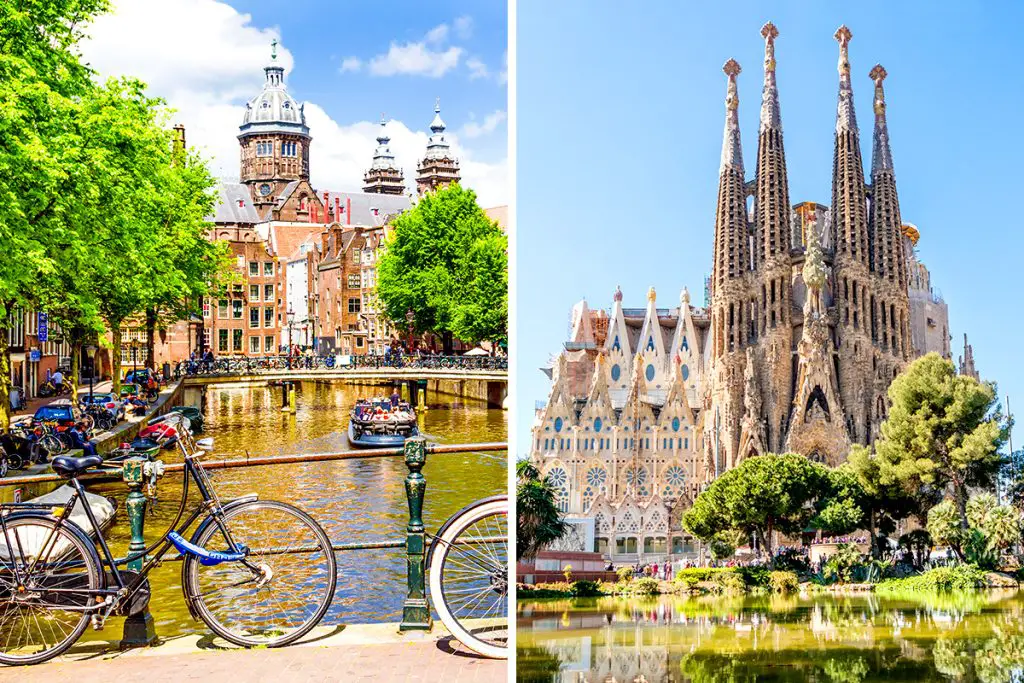
About | Contact | Privacy Policy
Copyright © Loco Media

Two Paradises Explored: The Wonders of Greece and Spain
We can’t stop thinking about the incredible lifestyle we experienced when we traveled to Spain and Greece, the Southern European gems. Both places have a special place in our hearts, their gastronomy, the people, the culture, the joy you can feel in every corner, the deep blue sky, and the beautiful golden sun.
But when it comes to countries that are in many ways similar, it can be hard to choose between the two for your holidays. So discover with us the differences between these two popular Mediterranean hotspots and enjoy the cultural aspects of a Latin and a Hellenic country.

Hi, we’re Timon & Filipa!
We travel across Spain in our motorhome, Speedy, and update TravelSpain24 with fresh content, practical tips, and personal stories from the road. Our goal is to help you experience Spain beyond the typical tourist trails.
Greece vs Spain: First Impressions
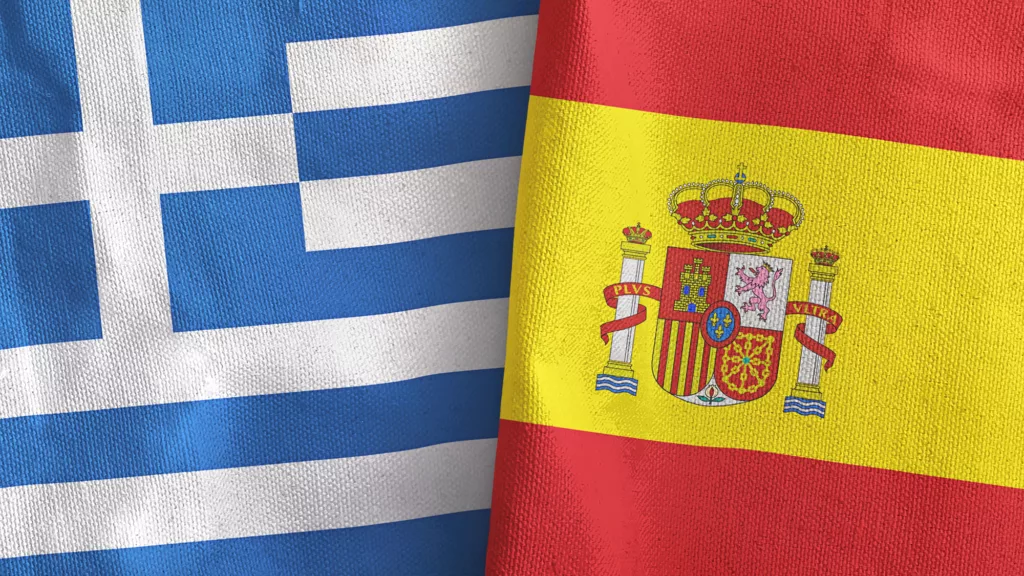
Greece felt like another world. I would compare it to Eastern European countries such as Romania or Albania: busy streets, a free-spirited approach to traffic rules, horns sounding every second, and people crossing the streets as if they were walking on a sidewalk.
It also felt as if the buildings were allowed to age as if you don’t use aging creams because you want to feel all the years you’ve lived untouched by time. Most of the walls showed marks of the years. Those walls were speaking history. Who knows how many things they’ve seen during the centuries? But that will never overshadow the beauty of this country, where you find the friendliest of people, the brightest sunshine, and the healthiest and freshest Mediterranean food.
In Spain, I had different yet similar feelings. The feeling of being sun-kissed and meeting very friendly and lively people who smiled at you, just like in Greece. Strolling around, feeling the joy of the folk, enjoying the company of family members and friends. It felt right away the best place to move with my family . A tapa, a cerveza, dinner, breakfast, life on the streets. Art and incredible architecture in every corner. Well-dressed, beautiful people who looked like they were coming out of a catwalk.
Greece: Islands & History
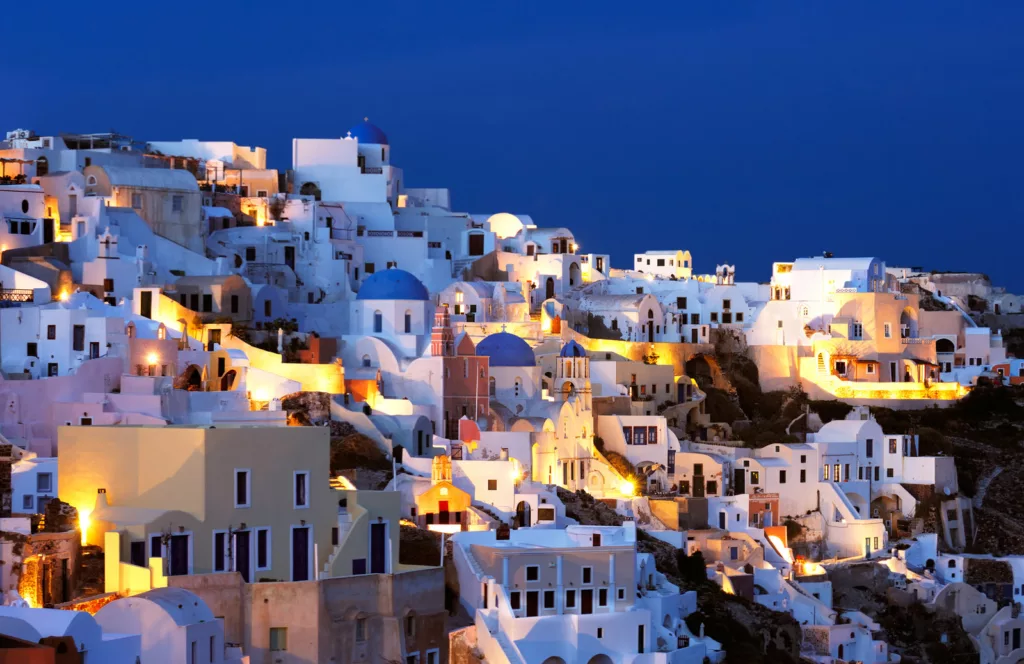
Stepping foot in Greece was like a time travel experience. The stunning architecture and the colossus with the beautiful white and blue colors made the view special, allowing you to daydream. It was a great experience, thinking about how many pieces of our culture actually started here and developed over time until our days. I felt a deep connection with this land that helped shape many aspects of our society, from philosophy to politics. The curiosity to know how it really was in those old times makes you eager to discover more about Greece’s history, which is a part of ours too.
Spain: Cultures & Colors
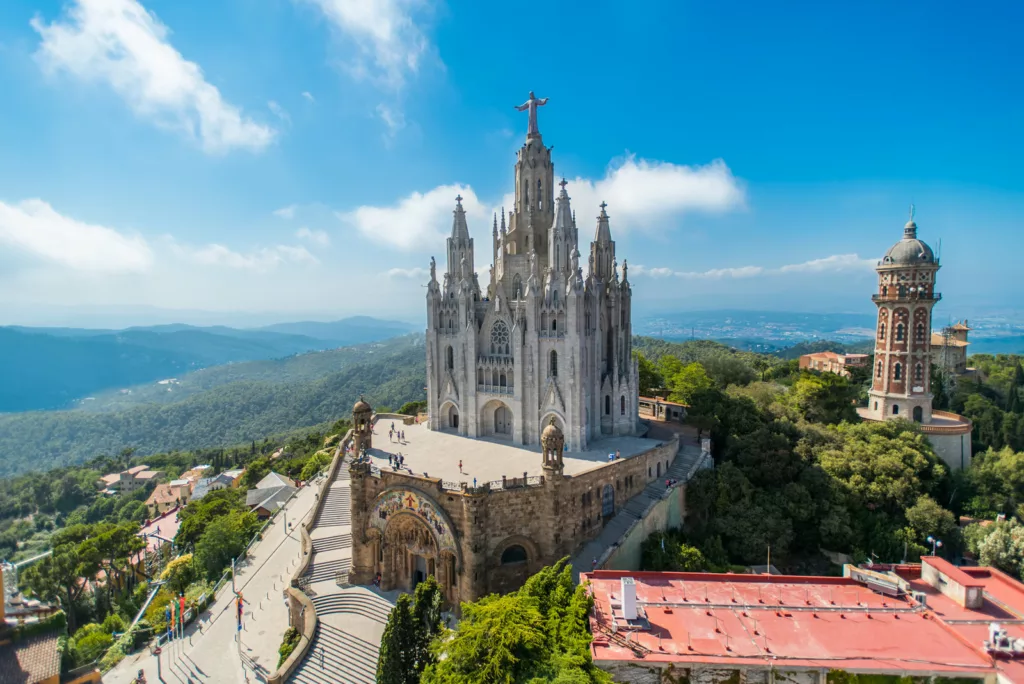
Arriving in Spain was a vibrant experience. While Spain is often associated with sunshine, good food, and lifestyle, it also has an incredible number of well-preserved cultural heritage influenced by the Romans, Phoenicians, Arabs, and others. All this history has played a role in shaping modern Spanish culture and gastronomy.
I was truly impressed by the art I encountered when I set foot in Spain. Art in people’s outfits, the architecture of buildings, the presentation of dishes – it seemed to be everywhere. Simply sitting outdoors, having a drink while people passed by, felt like poetry in motion.
Greece vs Spain: Natural Wonders
Greece is a country with many tourist attractions: places rich in history, enchanting islands, and paradisiacal beaches. I would divide the country into two parts: the mainland and the islands . The mainland is perfect for history lovers and ideal for cultural trips, while the islands are perfect for summer vacations or parties in Mykonos. It’s like living the typical European summer dream you see in movies.
Spain is equally incredible. From the Basque Country to the Arabian traditions of Andalusia, it’s a country full of diversity. Just like Greece, I would divide Spain into different parts, each one for a different type of trip.
- Mainland: This encompasses the entire Iberian Peninsula.
- Islands: The Canary Islands in the Atlantic and the Balearic Islands are known for their ideal Mediterranean climate , featuring mild winters and warm summers.
- Atlantic: Characterized by long beaches, surf spots, and cold waters in provinces like Huelva, Cádiz, and northern Spain.
- Mountains: The majestic Pyrenees for snowy experiences in Spain , and there’s also the province of Granada.
Greece: Blue & White Landscapes
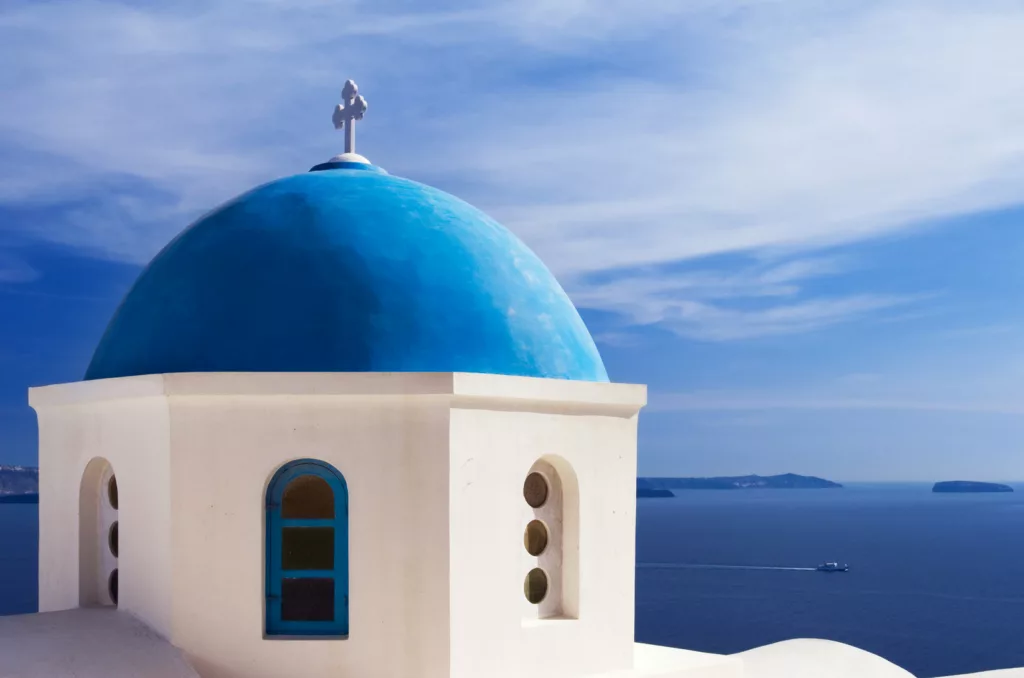
The ancient ruins were the most magnificent things I’ve ever seen. You feel so small, and it humbles you to be in front of such imposing buildings with so much history to tell that you can’t even imagine.
The blue skies, without a cloud, provide such peace of mind, paired with the white color of the houses. It’s a peaceful combination. Maybe that’s why I felt so relaxed.
I found it incredible to see so many different sceneries in one single country. The stunning cliffs of some of the islands brought me back to places such as Ireland and Portugal.
Spain: Coast & Mountains
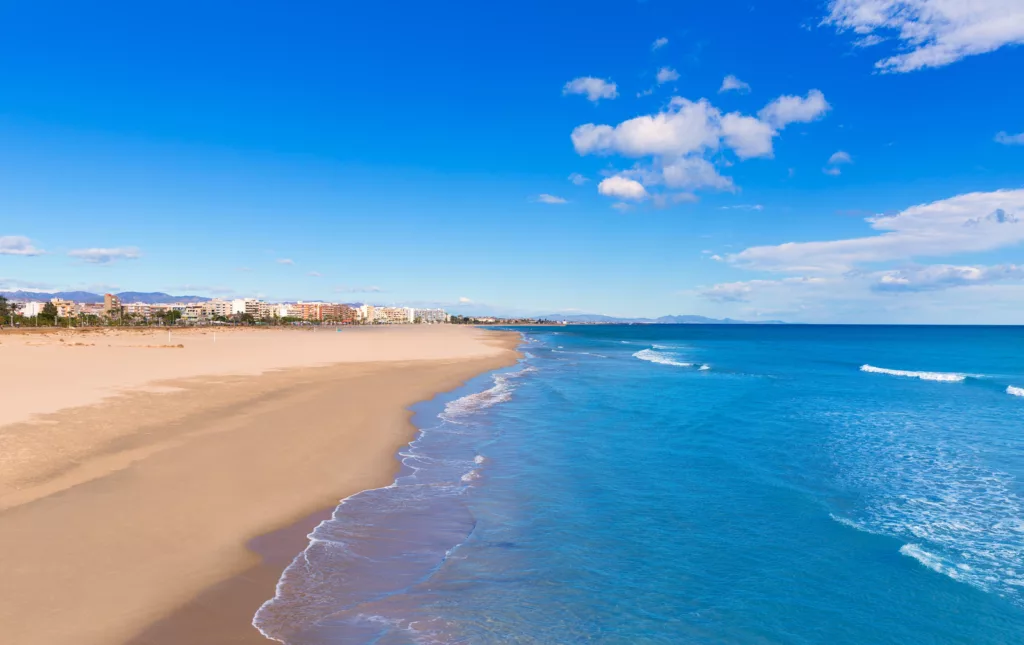
On my first day in Spain, everything was incredible. I thought I should take the Spanish routine in order to be part of this culture.
Late lunches and dinners, a lot of outdoor life, and the beautiful sweet sound of the Spanish language. Spain became my home right after visiting it, so it’s a totally different experience in terms of feelings and sensations.
The various landscapes make this country perfect for every type of trip. The stunning coastline, the fresh air of the mountains, the beaches of the island, and the vibrant culture of the southern lands are just some of Spain’s wonders.
Greece vs Spain: Culinary Journeys
When you think of Spain and Greece, aside from sunshine and hospitality, you may think of fiestas and siestas – but especially delicious, healthy Mediterranean food. From tapas to churros, from moussaka to keftades, the excellent Spanish and Greek cuisines offer an incredibly high quality and diversity of real ingredients to choose from.
Both countries, rich in history, allow you to taste the traces of past cultures that have been in the territory and left something here and there.
I remember the first time I tried the Greek ground beef sauce for pasta and realized it had cinnamon. It’s a great combination I would never have thought would work in such a harmonious way. Or the lamb dishes that resemble the Arab world.
I discovered that the culinary experience in Spain goes beyond paella and tortilla de patatas. In particular, I loved Mallorcan cuisine. Recipes that speak Mallorcan beaches , conquests, customs, and its people during the time. The incredible local ingredients.
Tomatoes, peppers – especially white peppers, artichokes, aubergines, garlic, and onions are elements that can never be missing. Sobrasada, coca de trampó, and my favorite Tumbet, the Spanish ratatouille, a dish of vegetables fried in olive oil, layered and topped with tomato sauce.
Greece: Divine Cuisine

Each bite was an explosion of flavors in my mouth. I discovered combinations and spices I didn’t know existed in Mediterranean cuisine. But the best part isn’t the taste of the food, but the people you eat it with and the amazing atmosphere you feel.
Sitting outdoors, eating grilled octopus with a side of creamy tzatziki while hearing the sound of Greek languages made it even more romantic, emphasizing the flavors of Greek dishes. Traveling to Greece is a 360-degree experience where you can explore historical places, swim in clear waters, and taste the influences of different cultures over the years.
Spain: Spices & Flavors
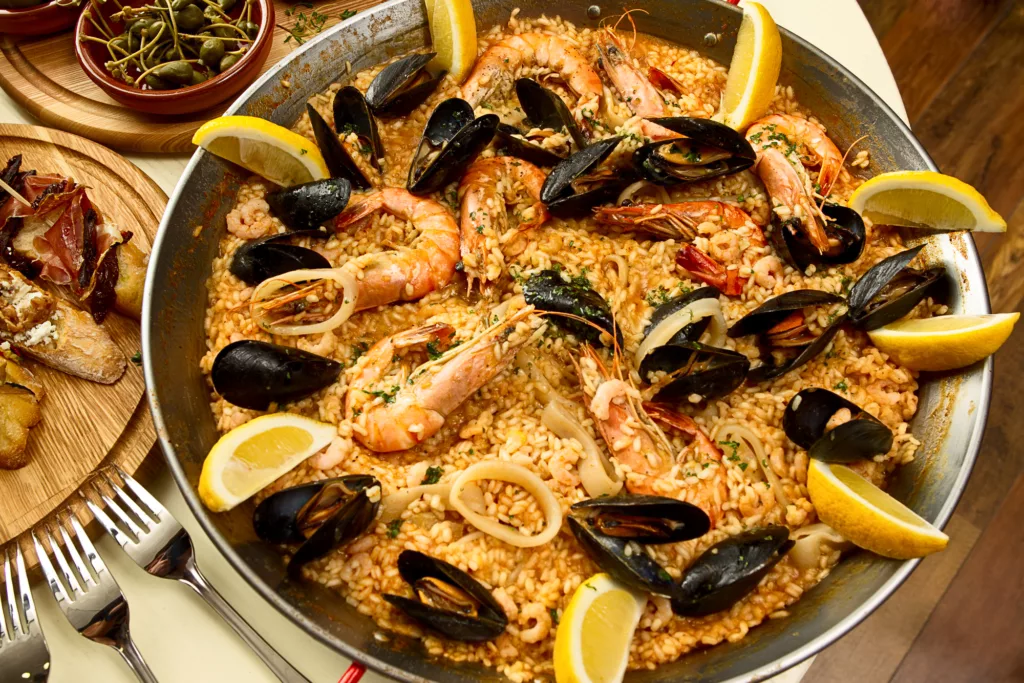
As you might know, Spanish cuisine isn’t all about paella and tortilla de patatas. Spain is famous for being the first to introduce certain ingredients from the Americas in the early 16th century, such as tomatoes, potatoes, maize, or cocoa, which are now commonly used throughout Europe. And thank goodness they did; it completely changed European gastronomy, shaping the modern Mediterranean diet.
What I like the most are the tapas. Not the dishes, which can be very simple yet tasty, but the concept and culture of sharing, tasting, daring, teasing, binging, and, above all, having fun together. And, of course, all accompanied by a refreshing sangria that, when made just right, tastes like a sip of summer with its fresh fruits.
Every region of Spain, every family, and every chef has developed its own recipes. This is why the best way to dive into Spanish gastronomy is to try everything everywhere.
Greece vs Spain: Nightlife
Greek nightlife has many facets: relaxation in the bars of luxury hotels and vintage clubs on the islands, engaging conversations with inexpensive wine in taverns under the moonlight that illuminates the sea, and picturesque marinas. Dancing and playing in the coastal clubs on the sandy shores provide venues that never run out, with cocktails mixed and served from sunset to dawn.
In contrast, Spanish nightlife is absolutely unparalleled. If you seek nightlife without limits, especially when you spend your nights in clubs, then the Spanish coasts and islands are your ideal destination. Whether it’s summer or winter , warm or cool, Spanish nightlife never rests.
Typically, the evening begins with a leisurely stroll after an afternoon drink. This is followed by dinner at a restaurant and culminates in traditional Spanish-style dancing until your feet can’t bear any more. Even when everything closes, the festivities continue on the beach until sunrise or with an early breakfast at someone’s home.
Greece: Stars & Festivities
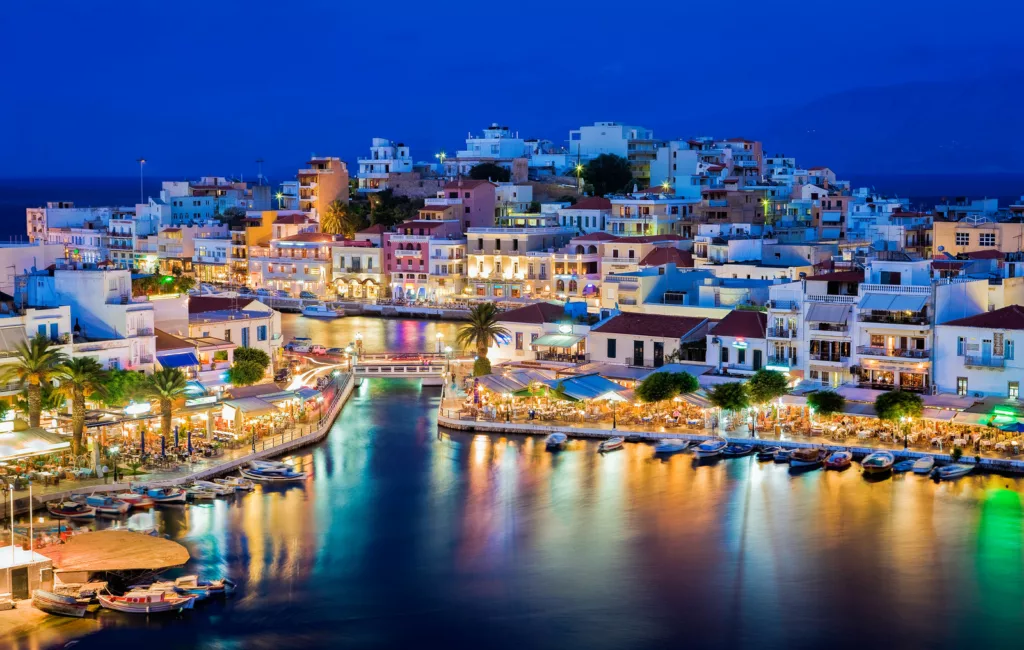
The nightlife routine in Greece usually starts with relaxed conversations in restaurants by the beach, with the sound of waves in the background. I still can picture those moments, having dinner in the moonlight, fresh ingredients, fresh seafood, local wines, and that Greek atmosphere in the air. The island life, with long walks on the beach or dancing in open-air discos and the sea breeze at dawn when returning home.
A paradise where rest and nightlife combine to perfection. It’s a magnificent place where you can find the calm needed to disconnect from the routine without neglecting the party and the fun.
Spain: Flamenco & Fiestas
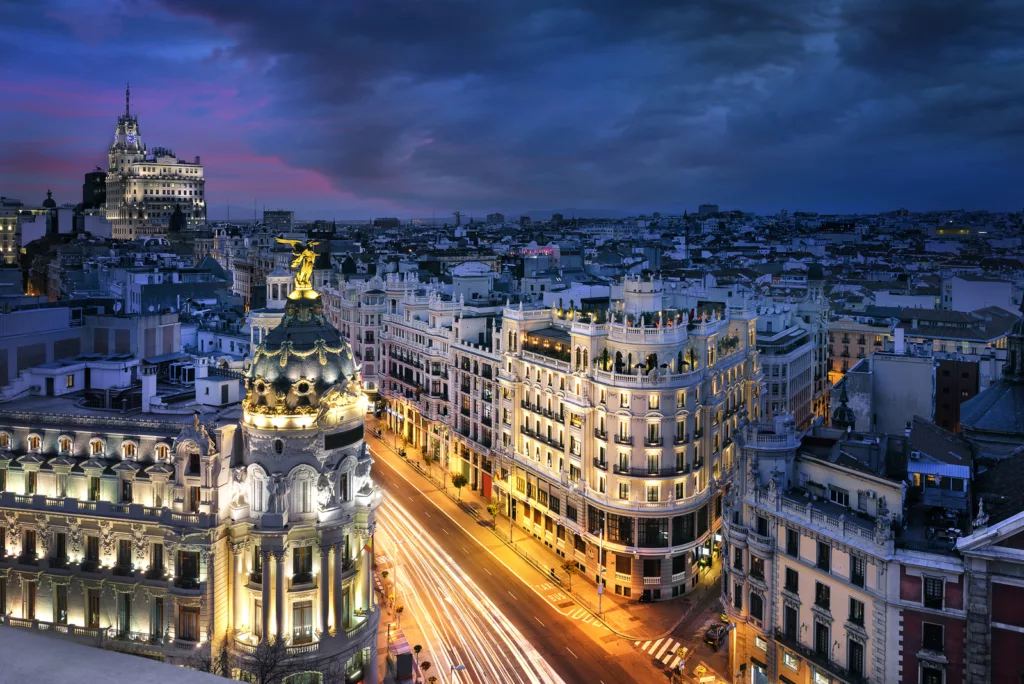
In Spain, nightlife is my favorite, it’s pure energy. Long dinners, tapas, and flamenco are synonymous with Spain and always will be. Flamenco shows are everywhere in Spain, but the most traditional and authentic ones can be found in Andalucia.
The Spanish “movida” culture means “tardeos” (the Spanish concept of going out and celebrating on a Saturday afternoon, after lunch, before dinner) and very late parties that usually end at dawn, with tortillas and other snacks. Spain is dancing in clubs in Ibiza and, at the same time, participating in traditional cultural festivities like the Feria de Abril in Seville .
Greece Vs Spain: History & Architecture
Greece is a must-visit destination for art, history, and archaeology lovers. From Athens to the sanctuary of Delos in the Cyclades, from Crete to Thessaloniki, the ancient and less ancient sites are amazing sights for the eyes and the soul.
It’s a beautiful experience to walk among the temples of Delphi, imagining what it was like over two thousand years ago. While many tourists visit the Acropolis, Delphi, Mycenae, Epidaurus, Corinth, and Olympia, there is much more to explore in Greece, like Corfu or Messene and Bassae in the Peloponnese.
Spain’s cultural side offers a different experience. It’s about learning its art and architecture, experiencing its traditions, discovering its customs, savoring its cuisine, and tasting its wines. It involves reading the pages of the books created by its writers while walking through the places that inspired them. Witnessing how Andalusia resembles Arab countries and how the north echoes Gothic France makes Spain truly unique.
Greece: Ancient Ruins & Legends
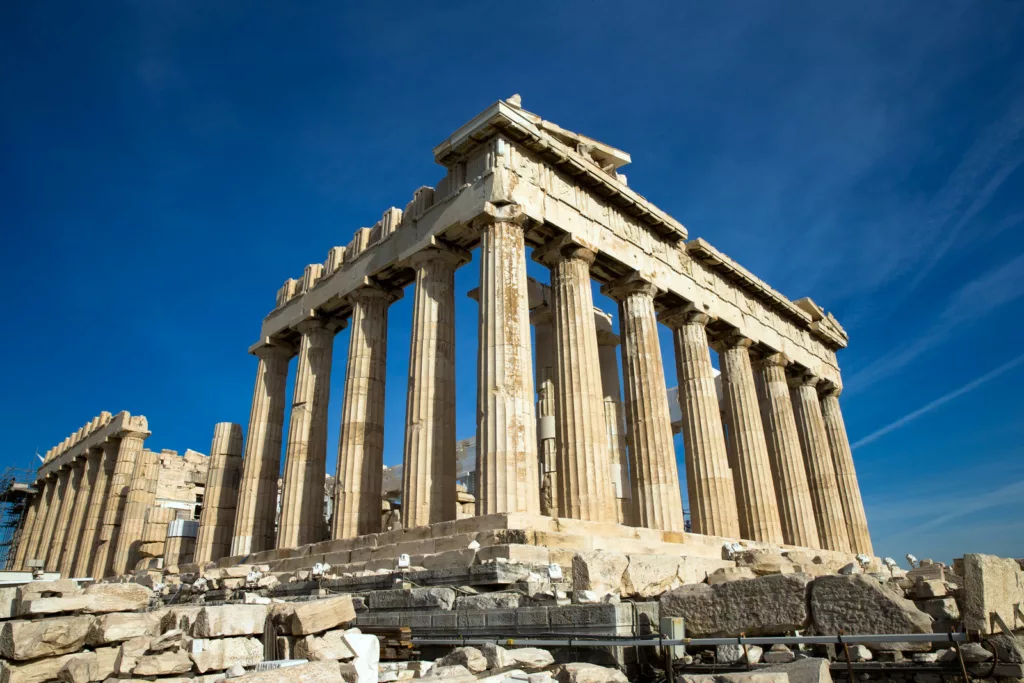
Every journey to Greece is a journey to the cradle of Western civilization. It’s synonymous with a walk through classical history and culture. Its archaeological monuments are full of myths and legends, which are still part of our history today. It’s something that cannot be explained. It’s a real journey back in time. I couldn’t stop thinking that people like Socrates or Aristotle have walked the same streets where I was walking. And that in these streets, decisions were taken that affect us all today. That trip made me realize how ancient Greece’s stories still matter today in our modern world.
Spain: Structures & Culture

Spain is not only “movida,” beaches, discos, and fun at all hours of the day and night: this beautiful country is also home to many museums, nature, pieces of art, and centuries-old traditions that still live on in the hearts and souls of Spaniards.
Nature is also fascinating, and one of my favorite experiences was definitely snorkeling in Mallorca . Being able to see marine life while in Europe has a very ‘tropical’ feeling that nobody can resist.
But the best thing about Spain is its diversity. The many cultures that left a piece here and there. So different from North to South, Spain can simultaneously have a gothic style like Burgos Cathedral and the Arab-Muslim style of La Mezquita in Córdoba. But also medieval architecture found in Ibiza Town and the colorful Park Güell with mosaics and eccentric structures. Many cultures have left their mark, making Spain a unique place to visit.
Greece vs Spain: Unique Experiences
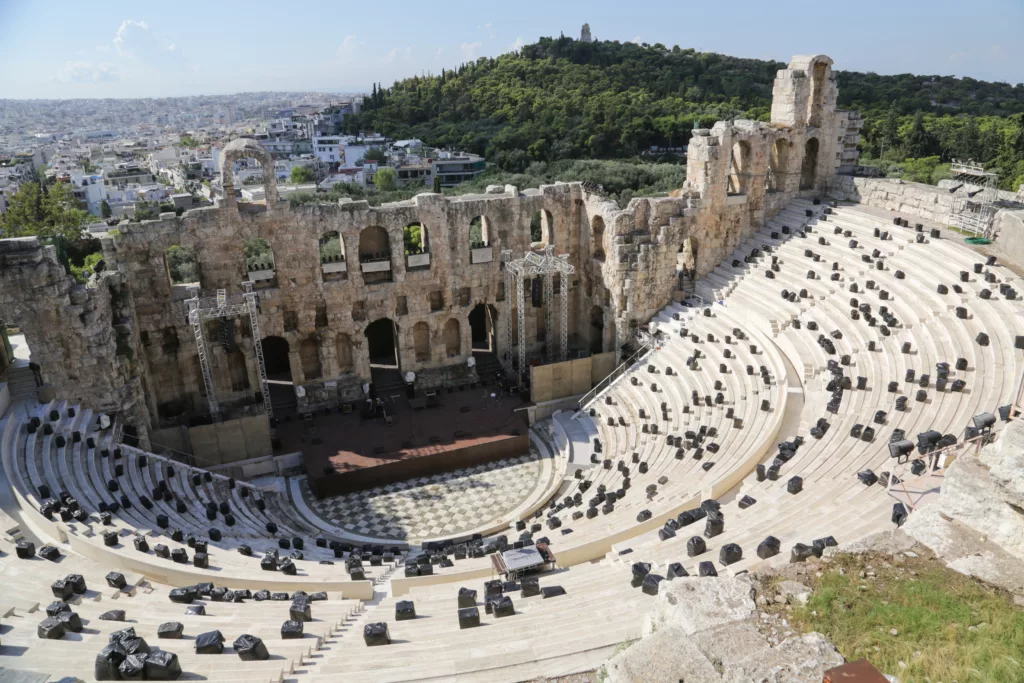
Instead of making comparisons, I’d like you to know the incredible things that both countries have to offer. Obviously, I can’t be biased because Spain has become my home, and I have a different kind of affection for it.
Greece’s beauty lies in its ancient history. To find yourself in a place like the Acropolis of Athens is a dream come true. Seeing live places named after mythological stories is electrifying. The islands are for relaxation, the day-to-day life of the locals, and the food made with fresh and healthy ingredients. This is what I think of when I think about Greece, a small table in a restaurant on an old street with a sea view. A moussaka and a local red wine.
In Spain, life isn’t dictated by the clock or solely working to enjoy oneself. It’s about witnessing the blend of numerous cultures, creating something unparalleled. Every month, there seems to be a festival to attend, whether it’s a Spanish wine festival , a neighborhood celebration, or a flamenco event. The country pulses with life, offering varied microclimates from one region to the next. And there’s a certain charm in the sensual accent when Spaniards speak English , even if not entirely fluently.
Greece vs Spain: Final Thoughts
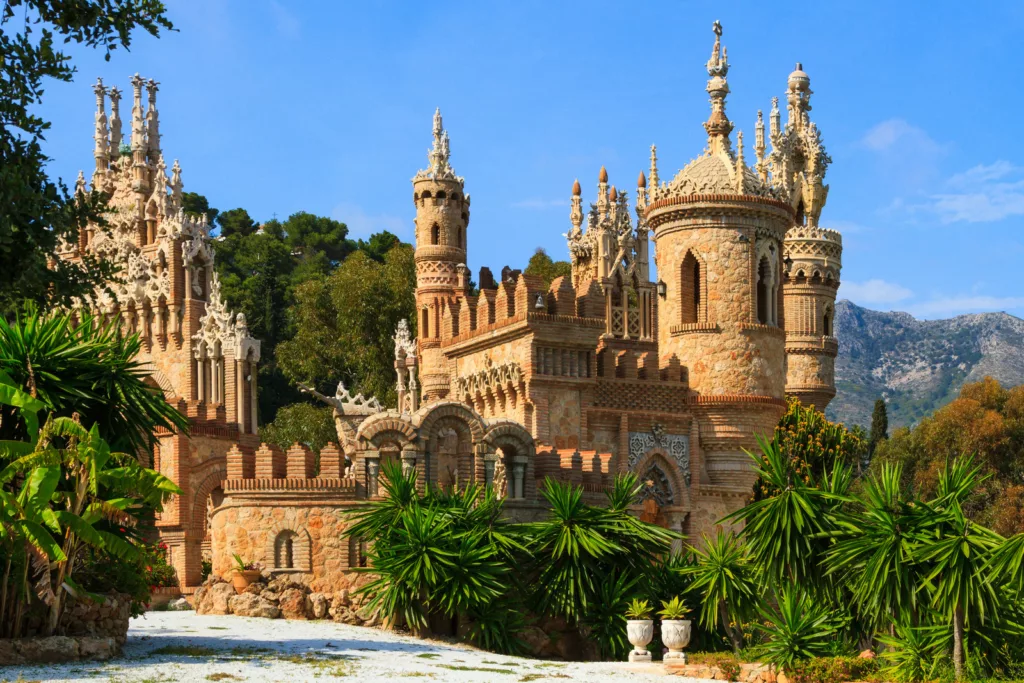
After remembering the good times in Spain and Greece, I can only say that I would go there again to experience it all over again. We all have a favorite place, and whether we like a trip or not is subjective. That’s why I encourage everyone to leave their comfort zone, travel, experience new cultures, and find their place in the world. You learn to appreciate things more and open your mind.
Spain has stolen my heart and became my home. I discovered that its culture is now a part of mine, and it all happened because I allowed myself to live in the moment.
Search the site
Popular destinations.

Barcelona is a fantastic holiday destination! This city has a special place in our hearts. See more
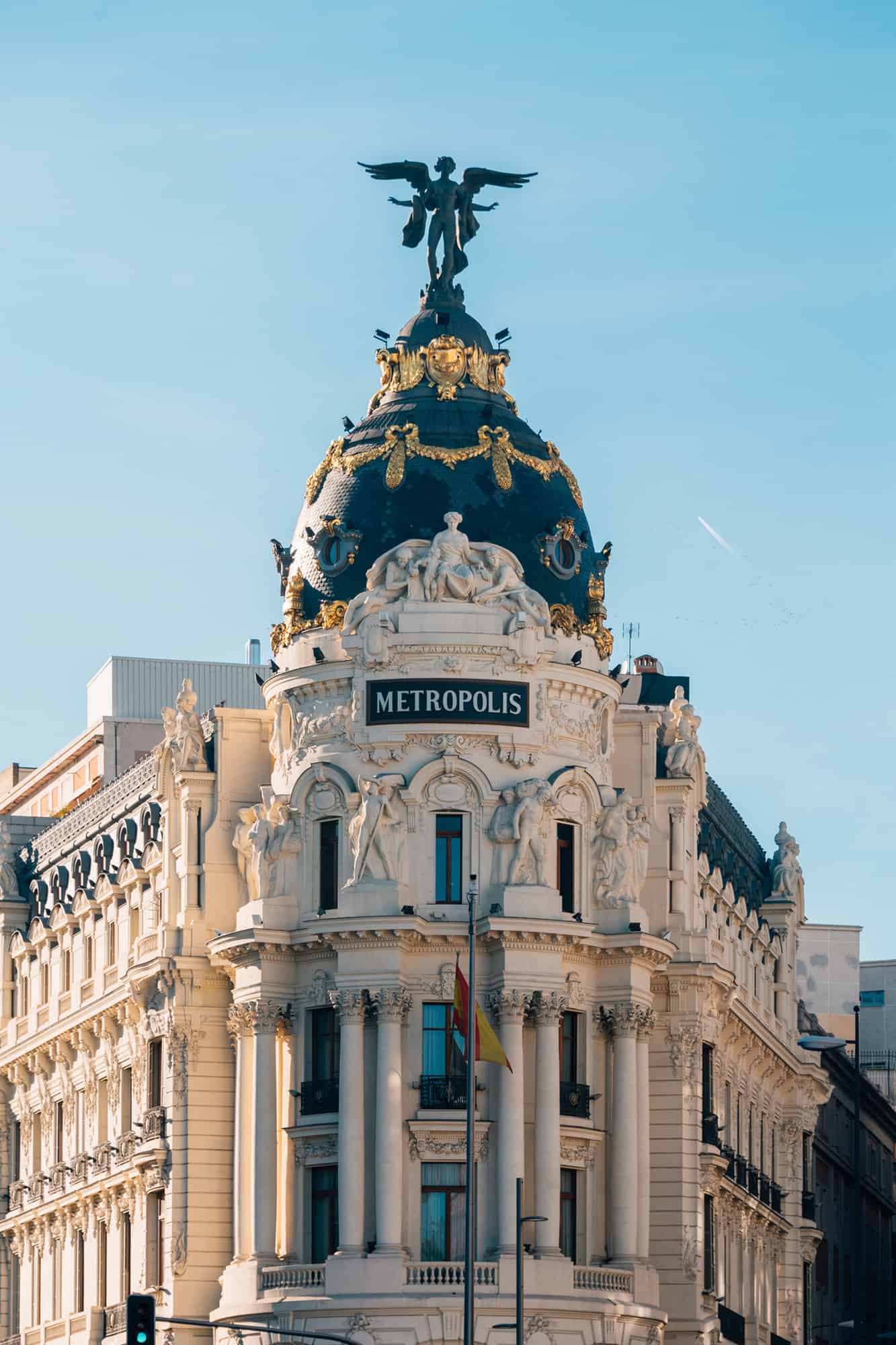
Madrid, the heart of Spain, is a city where every corner buzzes with life and history. See more
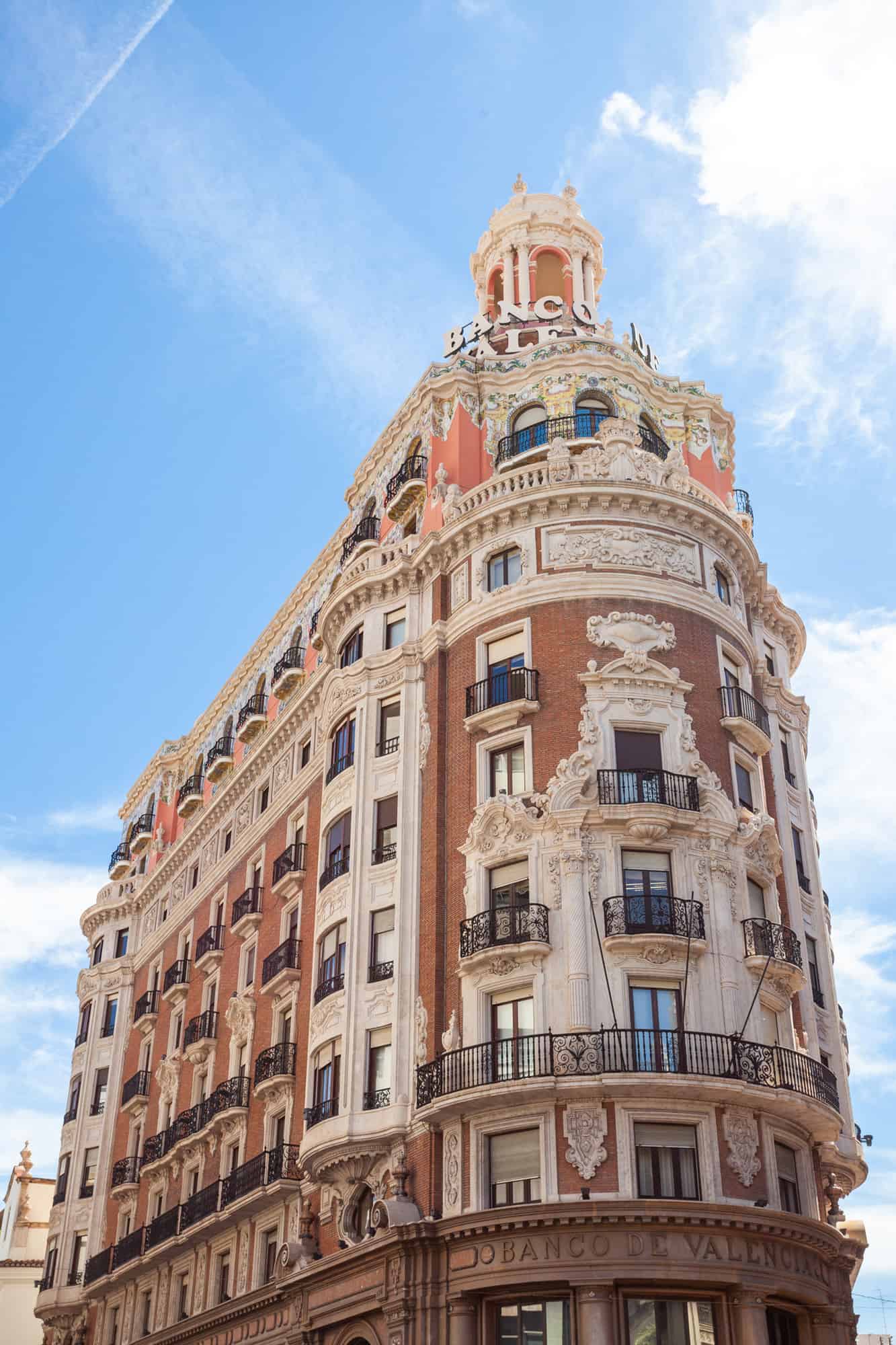
Valencia is a popular tourist destination with fantastic accommodation options. See more
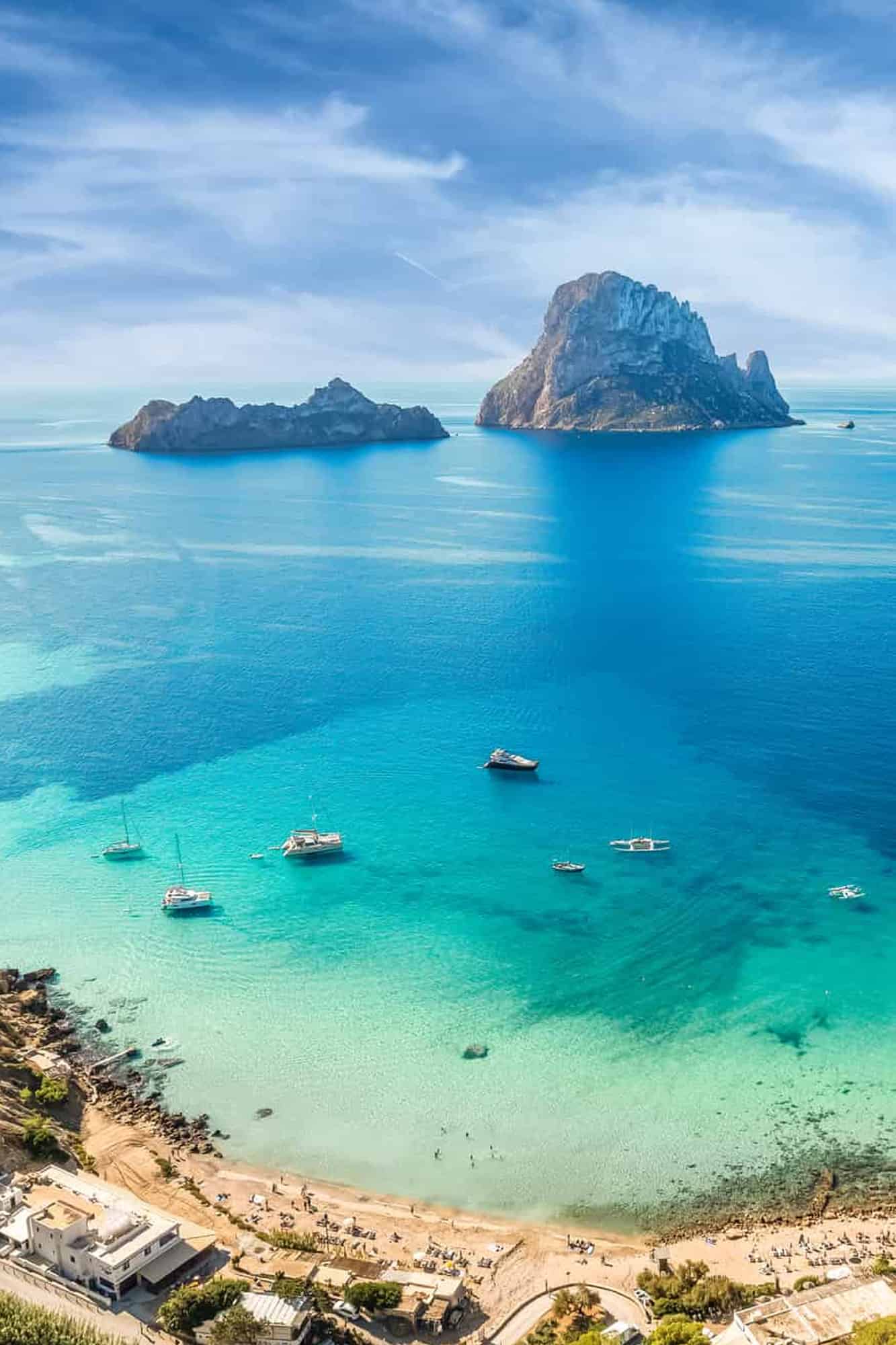
Mallorca is one of the Balearic Islands, a holiday paradise with Europe’s finest beaches. See more
Just letting you know When you buy something through our links, we’ll earn a small commission—don’t worry, it won’t cost you any extra! It’s a win-win, right?
Discover Hotels With Booking.com
Book Exciting Tours With Viator.com
Rent a Car With Discovercars.com
Flights with Cashback With WayAway.io
Exclusive Heymondo Travel Insurance Offer
Planning a trip? Make sure you’re covered! We’ve teamed up with Heymondo to give our readers a special deal: 5% off travel insurance . Grab this deal and know you’re looked after on your next trip.
Related Posts

Spain in December: More Than Just Christmas Lights

Grocery Stores in Spain

Uber In Spain
If you’re planning a trip to Greece in 2024, visit these 10 top destinations

Mar 4, 2024 • 6 min read
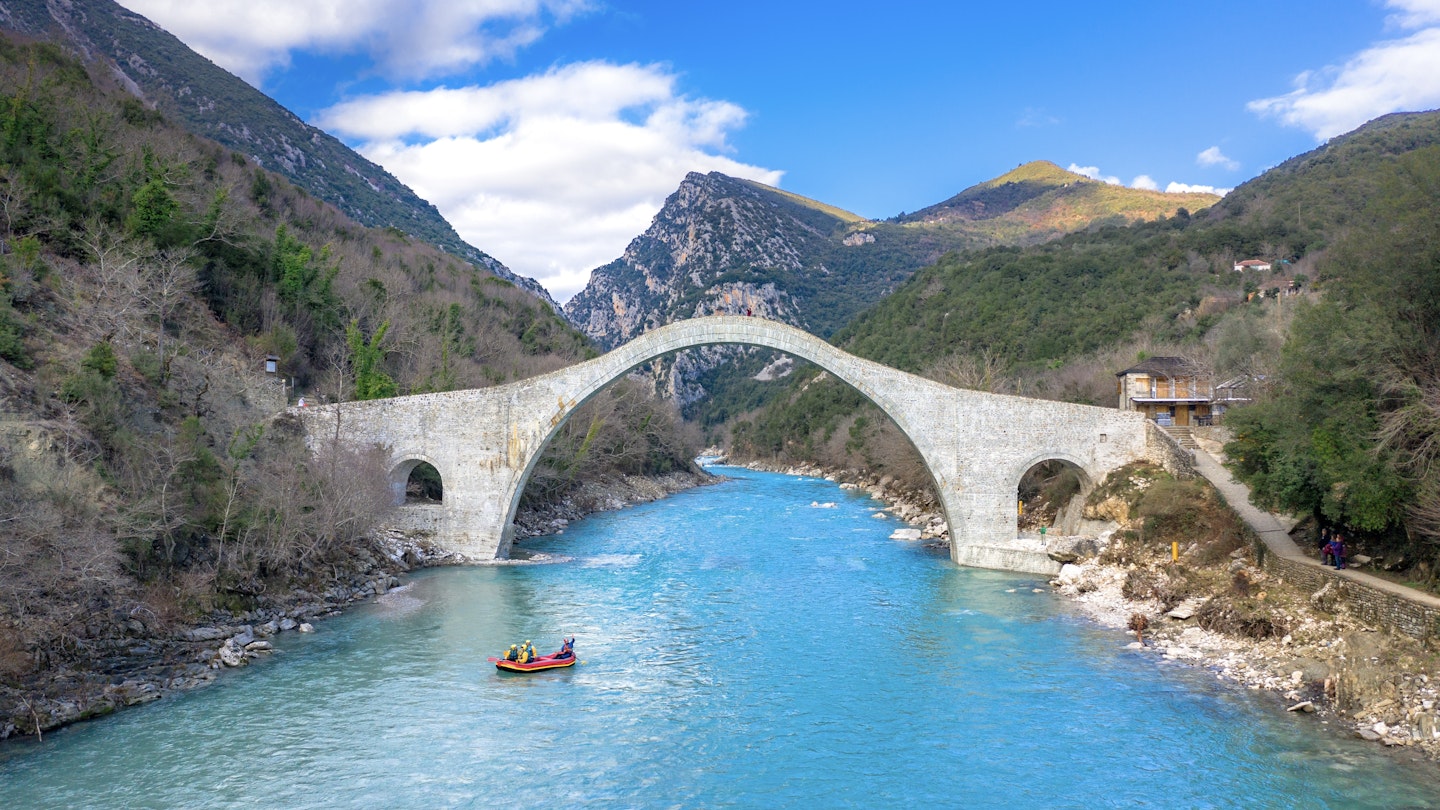
From iconic islands to major cities to the lesser-known, wild region of Epiros, our list of essential Greek destinations has a bit of everything © Georgios Tsichlis / Shutterstock
As its mythical Sirens were reputed to do, Greece has long lured travelers to its scintillating shores.
Across an expansive island archipelago, traditional whitewashed villages, azure seas and waterfront tavernas enchant visitors. Greece’s mountainous mainland, rich in UNESCO World Heritage–listed ancient sites, treasure-filled museums and spirited cities, is no less fascinating. As you contemplate your dream Greece itinerary, consider these 10 favorite places to add to it.
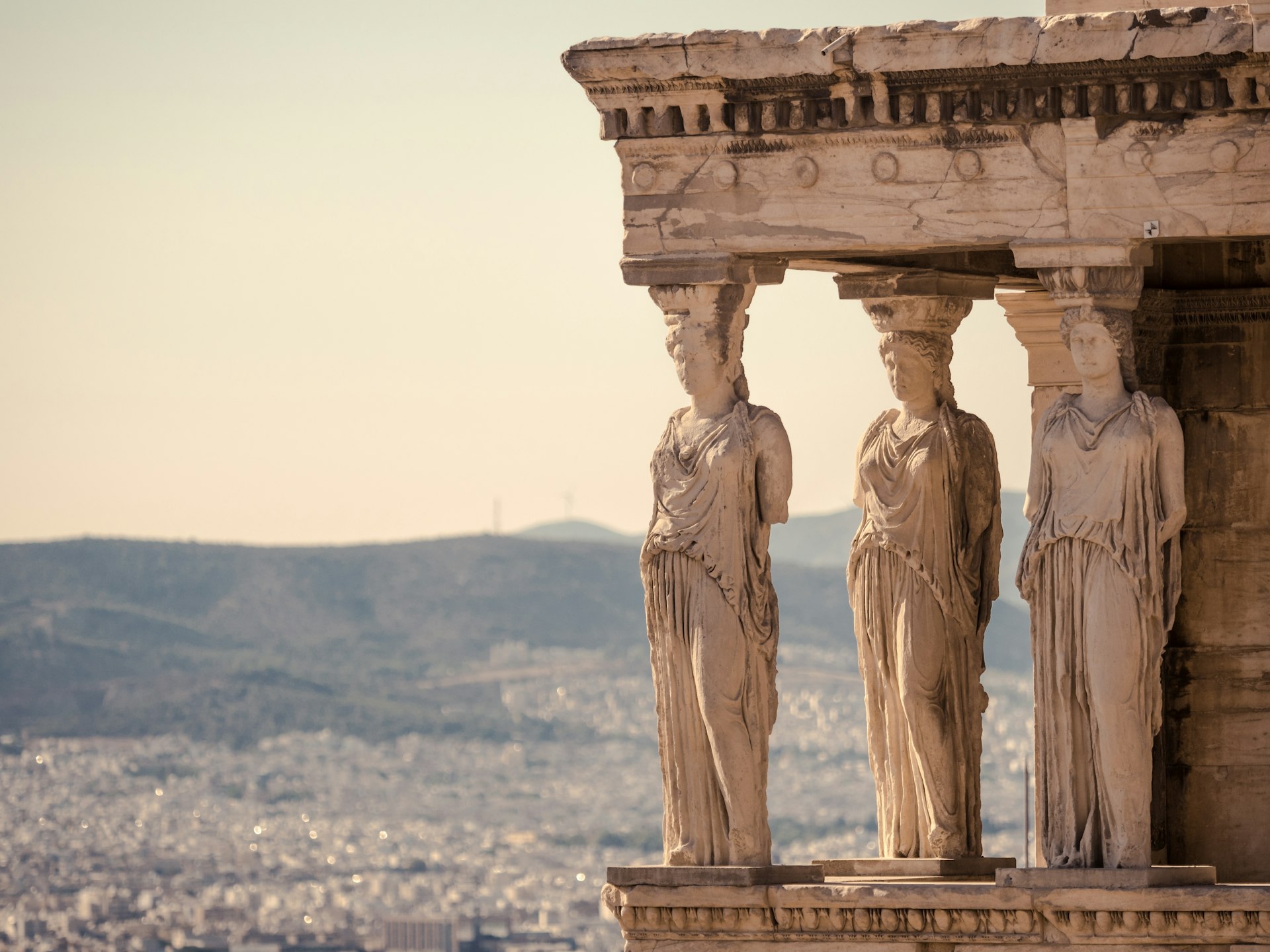
Wherever you walk in Greece’s storied capital, the ancients have walked before – whether you see the evidence or not. From the Acropolis (whose jewel in the crown is the fifth-century BCE Parthenon ) to the underground metro (where some stations feature archaic finds), Athens is teeming with historical sites , monuments and museums. A combo card affords entry to the Acropolis and six more sites; the Acropolis Museum is also a must-see.
Easy to tackle on foot, Athens is also one of Europe’s liveliest metropolises – and strolls through neighborhoods like old-town Plaka , flea market–famous Monastiraki and hip Pangrati are highlights. By night, catch a live band in gritty Gazi , catch a movie at an outdoor cinema in Thission or go bar-hopping off the main commercial street Ermou.
Local tip: Book tickets online for a reinvented Greek tragedy or dance troupe performance at the Odeon of Herodes Atticus amphitheater as part of the Epidaurus Festival , which takes place each summer.

A collection of over 70 beaches, sea caves hidden beneath limestone cliffs and technicolor traditional boat houses are just some of the reasons why mineral-rich Milos has won the hearts of many travelers. Evidence of its volcanic origins can be seen in the almost lunar landscape of Sarakiniko , where the more daring dive into a jade-colored Aegean. Arrive early at Gerondas beach to nab the generous shade of caves and enjoy floating silently in still waters.
Planning tip: Save a couple of days to spend on Kimolos, a small island northeast of Milos reachable by ferry. One of its most impressive beaches is Prassa, where coarse, blindingly white sand shows off shallow, aquamarine waters to full effect.

Rhodes has long been the Dodecanese ’s biggest draw thanks to its atmospheric UNESCO World Heritage–listed medieval old town . Transformed in the Middle Ages by the Knights of the Order of St John into a formidable fortified city, it fell to the Ottomans, who erected mosques, baths and houses, many of which have been restored. Youngsters might envision armored men on horseback thundering down the cobblestoned Street of the Knights .
Make sure you visit the Palace of the Grand Master , which features stunning Roman and Early Christian floor mosaics, and the Church of Our Lady of the Castle.
Planning tip: Book a state-licensed tour guide to show you around the old town for a full picture of its long and fascinating history.
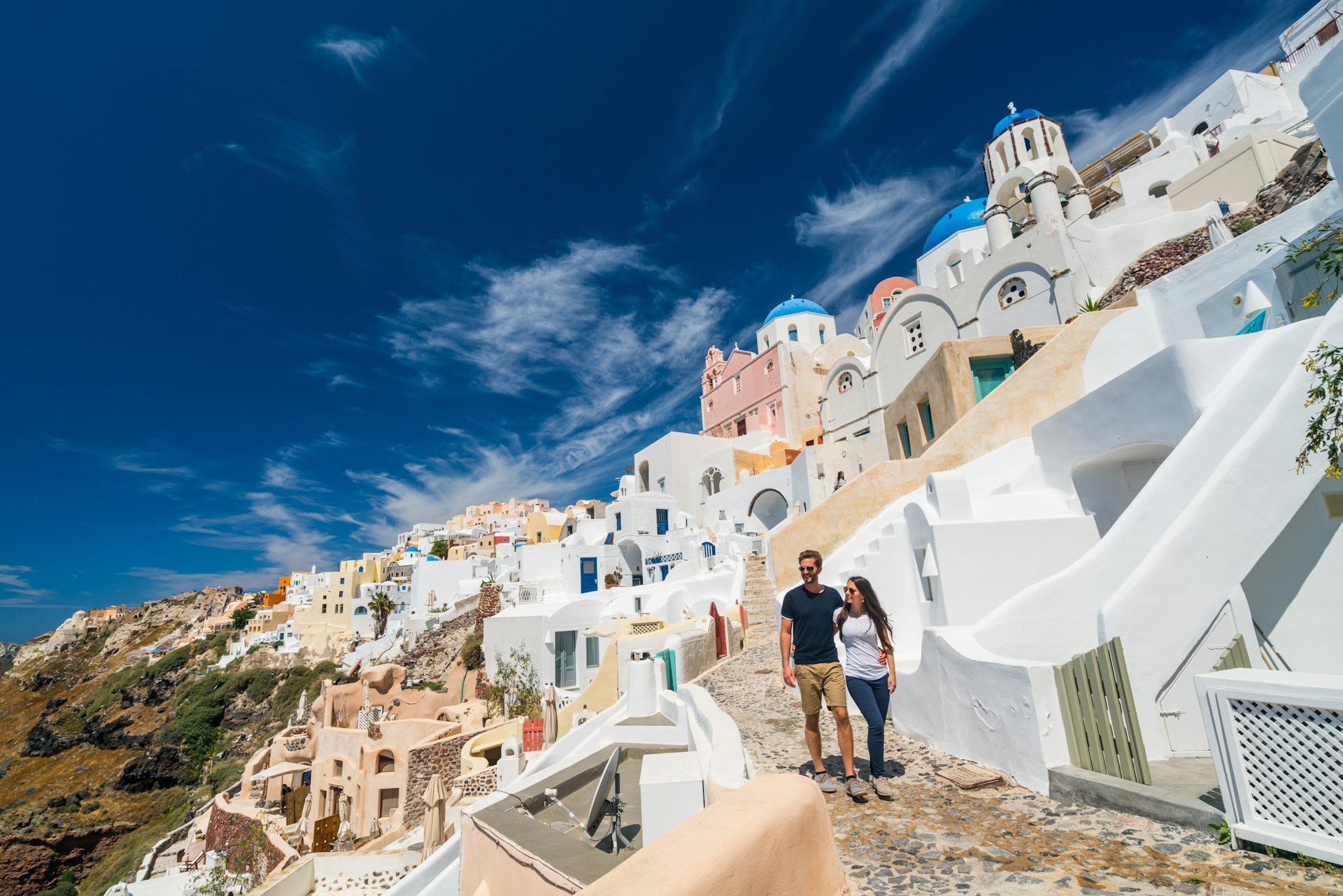
4. Santorini
Whether you’re coupled up or not, it’s hard not to fall for Santorini ’s charms. Whitewashed and pastel-hued, cube-shaped homes cling to steep cliffsides above a cobalt Aegean and the island’s famed caldera, formed by volcanic eruptions over millennia.
Weave your way through the narrow alleyways of the postcard-perfect village of Oia amid blue-domed churches. Bathe in thermal springs warmed by an active volcano, splay out on black-sand beaches and don’t miss the prehistoric settlement of Akrotiri , which features an advanced drainage system.
Planning tip: Book a private tour of Santorini ’s smaller wine estates, whose new generation of vintners is breathing new life into traditional wines like mezzo and Nychteri.
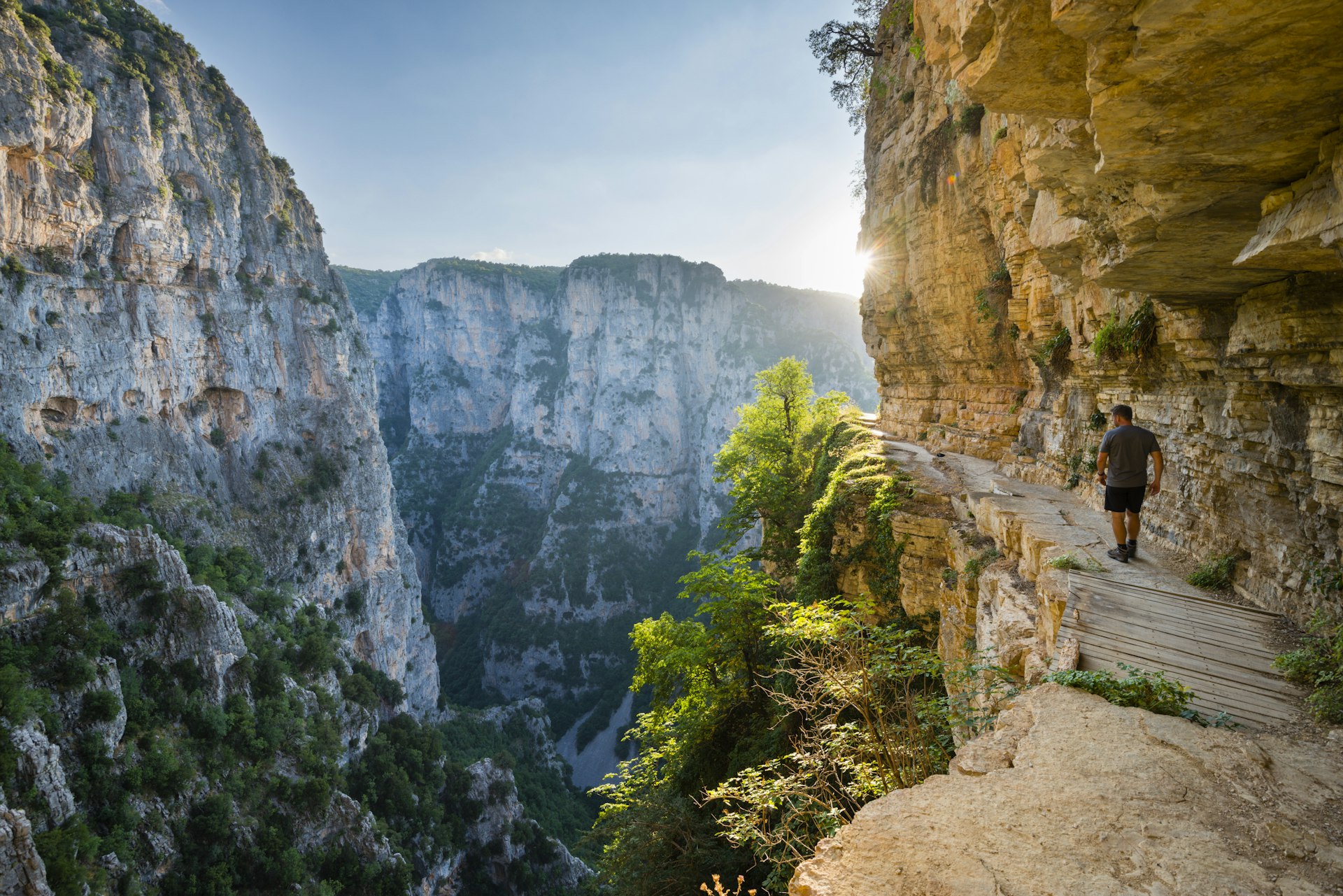
In Greece’s west lies Epiros , a remote region of soaring mountain peaks, fast-flowing rivers and hidden rock canyons. Hike to the alpine heights of Mt Tymfi’s Dragon Lake, which freezes over in winter, or traverse the thick forests, inclines and descents of spectacular Vikos Gorge . Whitewater rafting thrills and spills await in the Voidomatis or Arachthos rivers, while canyoning enthusiasts can choose from routes of varying difficulty.
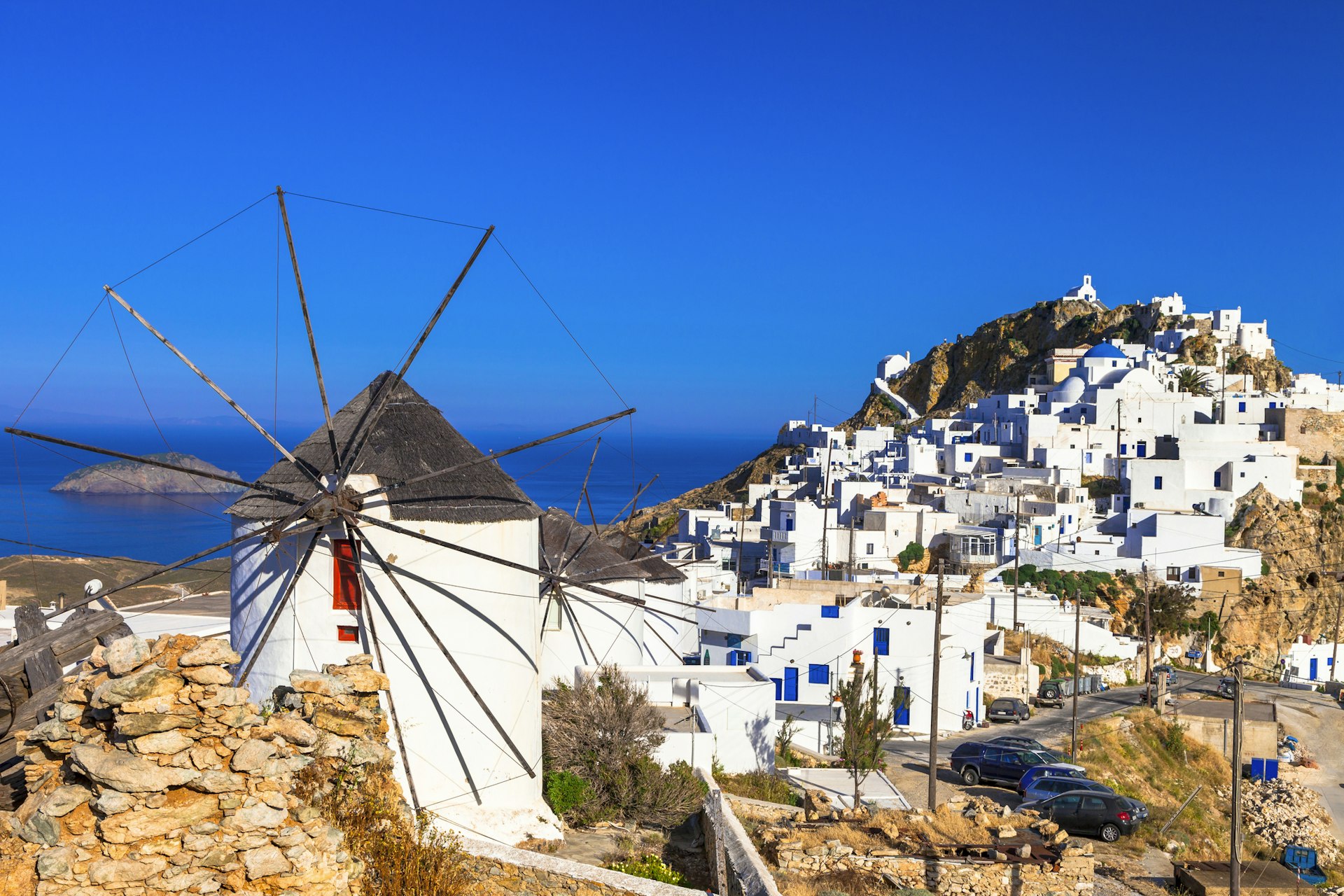
6. Kythnos and Serifos
If peaceful sandy shores, unassuming waterfront tavernas and sleepy villages are more your style, the low-key West Cyclades isles of Kythnos and Serifos are worth a stop. Kythnos has deep, sheltered bays and tamarisk-dotted silver-sand beaches, among them Lefkes and Naousa.
Wallet-friendly tavernas line the laid-back fishing settlements of Loutro and Meriha, while wind-whipped Serifos , a two-hour ferry ride from Piraeus , features sweeping sandy beaches, sheltered bays, ghostly mining relics and a jewel-like hilltop capital whose neoclassical town hall stands sentinel over the buzzy main square.
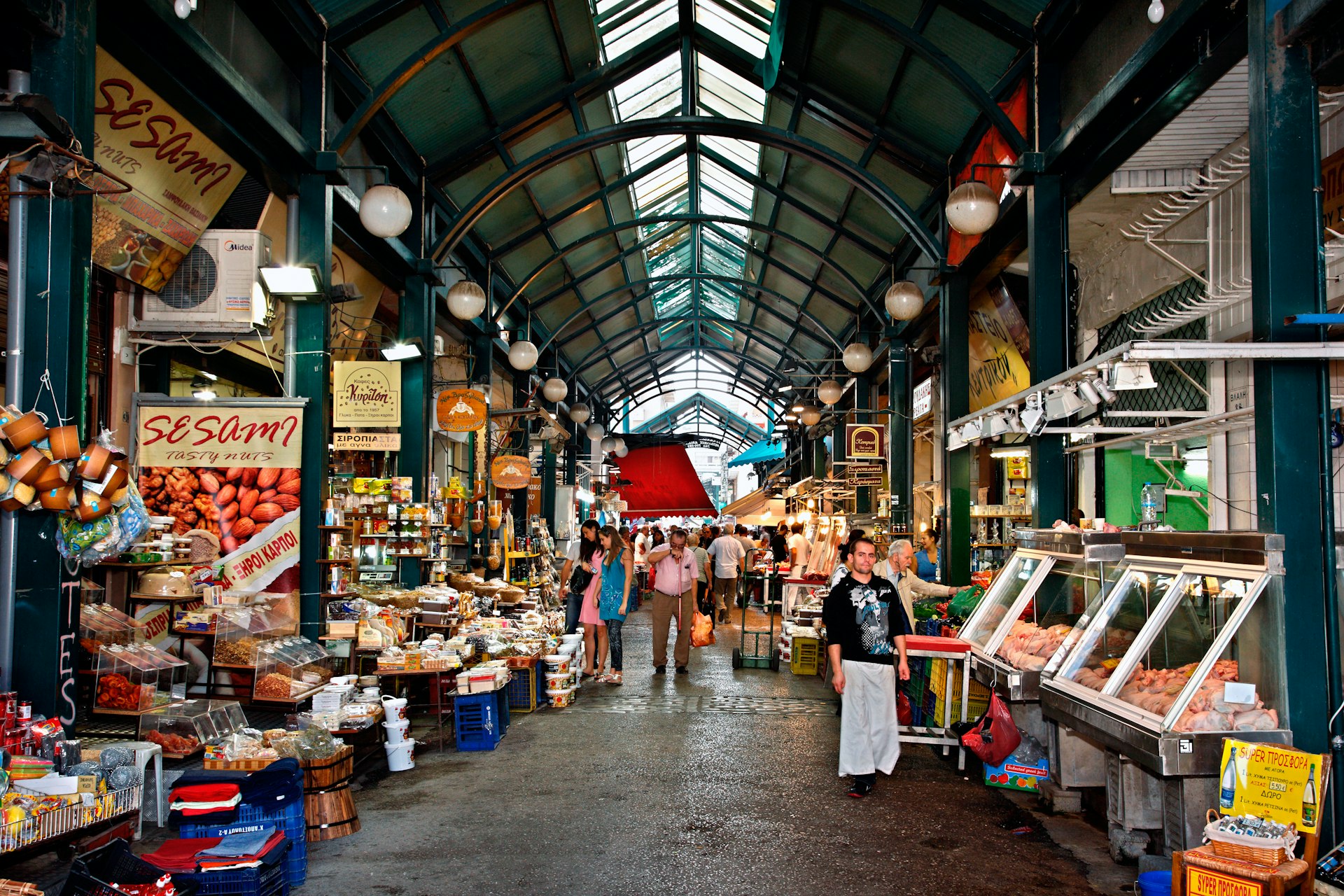
7. Thessaloniki
At the crossroads of East and West, where the Romans, Byzantines and Ottomans have held sway over the centuries, Thessaloniki tempts serious foodies. Bougatsa , a phyllo pastry pie usually filled with semolina custard, spinach or mince meat, makes for a hearty breakfast. Pick up olives and spices at the olfactory-awakening open-air markets and Pontic cheeses from indoor food hub Modiano , which dates back to 1922. In the former oil merchant district of Ladadika, mezedopolia serve dishes revealing strong Anatolian and Middle Eastern influences, customarily with the fiery clear spirit tsipouro .
Planning tip: Thessaloniki is also renowned for its fish and seafood, served with fervor and pride whether it’s a backstreet taverna or an upscale restaurant. Bookings are recommended for the latter.

Tranquil, turquoise seas, fir-studded hillsides and a regal capital make Corfu one of the most beautiful parts of the country to go sailing. The Ionian isle is the ideal starting point for novices who can take a sailing course and gain certification.
Afterward, join a flotilla for a leisurely cruise around Corfu, dropping anchor at Kalami Bay (of The Durrells fame) and lush Paleokastritsa. In Corfu Town , admire Venetian fortresses, the French-designed Liston Arcade and The Palace of St Michael and St George , built during the island’s British administration.
Planning tip: Few venture to Erikousa island, northwest of Corfu, which is blessed with pristine beaches and shallow cerulean seas.
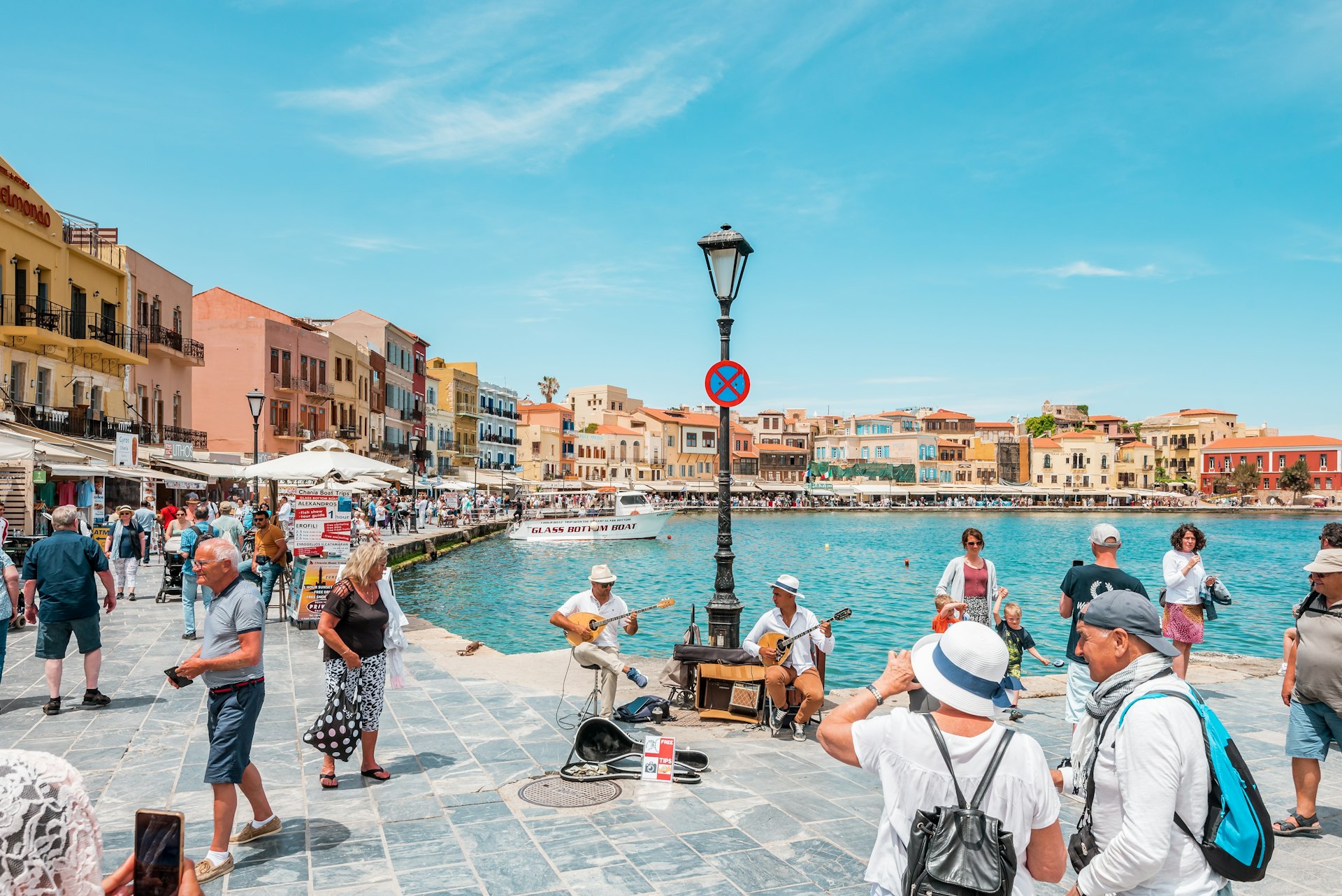
Greece’s largest island, Crete abounds in historical sites, well-preserved monuments and modern museums. A wander through the Minoan-era palaces of Knossos , Malia , Phaestos and Kato Zakros won’t disappoint any fan of classical culture.
Stroll along the Venetian Harbour in Hania , lined with Ottoman monuments such as the Kioutsouk Hasan Mosque . Trek up to Byzantine and Venetian fortresses such as the Fortezza in Rethymno and Kastelli in Hania. In the east, the 16th-century Venetian fortress on Spinalonga islet reveals a harrowing, more recent past as a leper colony.
Among noteworthy museums are the Heraklion Archaeological Museum , Chania’s Maritime Museum of Crete , and the Museum of Ancient Eleutherna in Rethymno.

10. Mykonos
In the 1960s and 70s, Mykonos hosted roving hippies, celebrities and moneyed jet-setters who flirted and danced till the sun came up. While new five-star hotels and swanky brand-name restaurants may have altered the landscape and driven up prices, the fabled Cycladic isle still reigns supreme when it comes to summer nightlife in the Mediterranean.
Revelers can choose from the thumping bars lining Little Venice in Hora , as well as beach bars, cabaret restaurants and iconic clubs like seaside Cavo Paradiso , where illustrious music DJs fire up the crowd.
Planning tip: August is Mykonos’ busiest month. It’s also when you can witness the hottest DJs and surprise appearances by music artists, including prominent hip-hop names.
This article was first published Jul 5, 2021 and updated Mar 4, 2024.
Explore related stories

Apr 19, 2024 • 10 min read
Summer is just around the corner in the northern hemisphere. Here's where the Lonely Planet team is going.

Mar 15, 2024 • 10 min read

Mar 6, 2024 • 8 min read

Feb 15, 2024 • 4 min read

Feb 2, 2024 • 7 min read
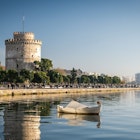
Feb 1, 2024 • 7 min read
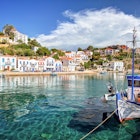
Jan 29, 2024 • 11 min read

Jan 19, 2024 • 11 min read

Jan 17, 2024 • 8 min read

Jan 2, 2024 • 8 min read
- AUTUMN MODE
- WINTER MODE
- SPRING MODE
- SUMMER MODE
Amazing Destinations
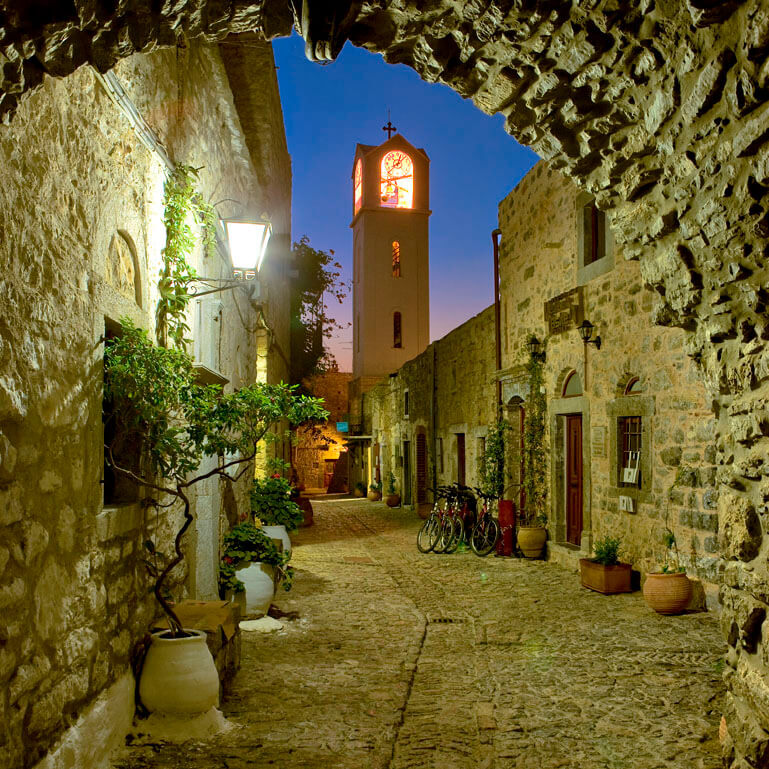
North Aegean

Argosaronic

Peloponnese

Sustainable best practices

Experiences

Read our Blog

Spoon Sweet Bitter Orange (nerantzi)
Why greece golden visa is the best choice for investors in 2024.

Must-see places in Greece in 2024

Proud to Celebrate
Athens is one of the few coastal cities worldwide that is surrounded by mountains. These are Mt. Hymettus, Mt. Penteli, Mt. Parnitha and Mt. Aigaleo.
Did you know that Epirus is the most mountainous territory of Greece and the poorest in the EU; however it has a unique natural wealth!
The species and subspecies of the native plants in Greece are about 6,000, almost as much as 50% of the native plants of Europe!
An old Greek legend says that when God created the world, he sifted all the soil onto the earth through a strainer. After every country had good soil, he tossed the stones left in the strainer over his shoulder and created Greece.
Greece' s official name is Hellenic Republic. However Greeks call their country Hellas or Hellada.
Did you know that Greece is the third largest producer of olive oil in the world? Greeks have cultivated olive trees since antiquity. Some of the olive trees that are still producing olives, date back to the thirteenth century.
Greece is the place where democracy was born. But democracy in ancient Athens was significantly different from modern democracies. It was both more participatory and exclusive, and there were no political parties in Athenian democracy.
Alexander the Great, one of history’s greatest warriors and leaders of all time, was Greek. Alexander the Great conquered land all the way from Greece to Asia. His achievements and conquests gave rise to the later Hellenistic period (323 BC - 31 BC).
700 plant species of Greece are endemic, meaning that they may be found only in Greece; approximately 20% of those are aromatic or medicinal plants.
Did you know that Greece has around 6,000 islands, islets and rocky islets? 2,000 of them are islands and only 107 of them are inhabited!
No part of Greece is more than 137km from the sea.
About 7% of all the marble produced worldwide comes from Greece.
Crete's history as well as the inhabitants' personality were affected by the island's mountainous landscape.
Greece's national drink is ouzo. Ouzo is a dry anise-flavoured aperitif. Cheers, "stin igia mas" in Greek!
Did you know that in Greece, 47 mountains are over 2000m., 105 mountains between 2000 and 1500m., 155 mountains are between 1500m. and 1000m. The number of mountains under 1000m. have yet not been recorded.
Did you know that Greece is the third largest producer of olive oil in the world? Greeks have cultivated olive trees since antiquity. Some of the olive trees that are still producing olives date back to the thirteenth century.
Greece has more archaeological museums than any other country in the world; in-fact they are around 196!
The very first sprint race of the first Olympic Games in 776 B.C. was won by Coroebus of Elis, a cook!
Did you know that in Greece you can enjoy skiing with a sea view?
Do you know what rakomelo is? It is a Cretan hot cocktail! A delicious mixture of honey, spices and the alcoholic beverage tsikoudia. Bottoms up!
- Exhibitions
Thessaloniki

Myths and Symbols in Modern Greek Art

Athens – City Festival 2024

Spetsathlon

EuroPride 2024 Thessaloniki

Saturday in the Museum with 20+1 masterpieces
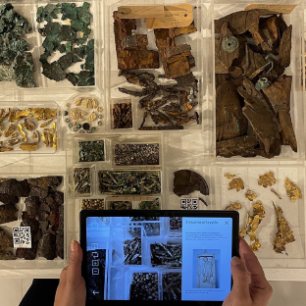
60 years | 60 moments
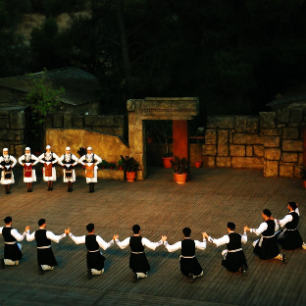
Dance Performances

ΑΣΤΥΓΡΑΦΙΑ / URBANOGRAPHY

The Parthenon and Byron

Easter on Corfu Island

Easter on Chios Island
Explore greece.
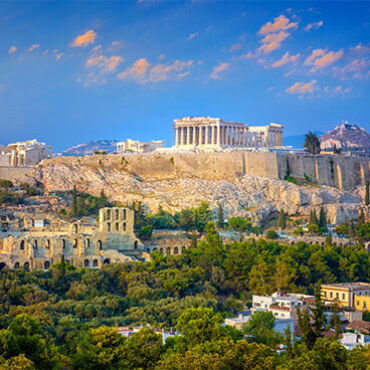
Places to Visit
Elefsina .
A journey through time
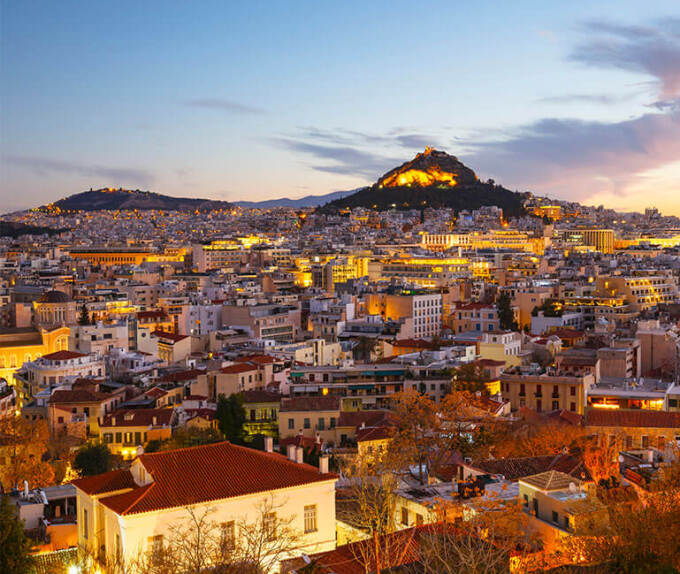
Central Greece
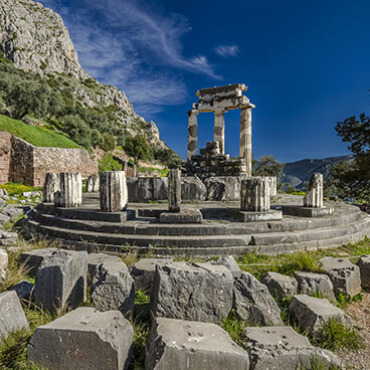
Messolonghi
The Seafaring Town
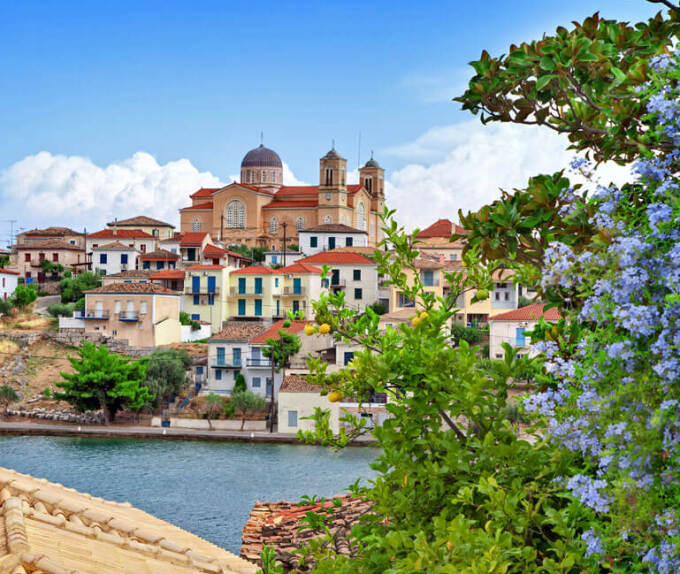
Travel to the Navel of the Earth
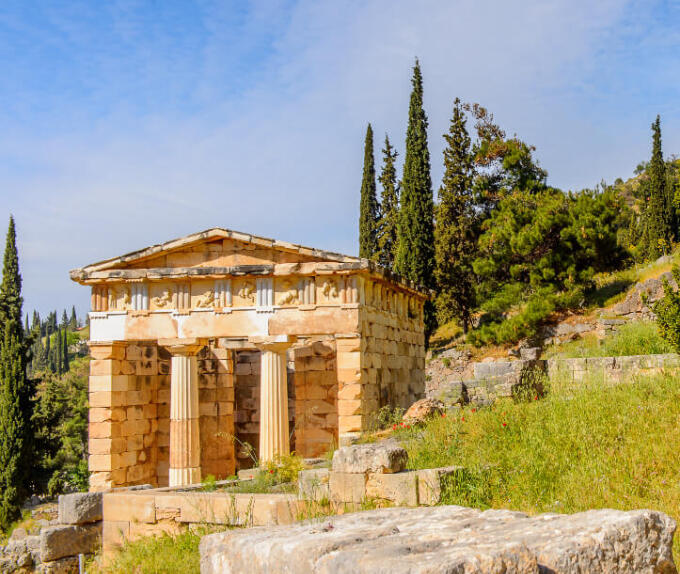
A journey in a magical land
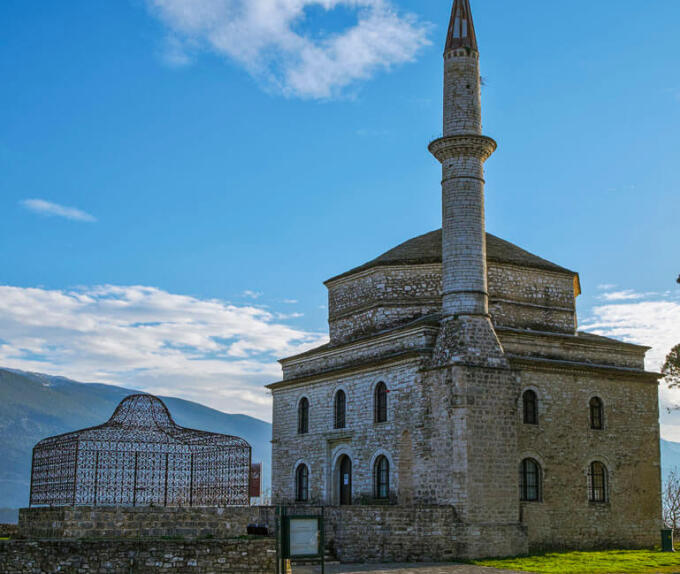
The jewel of Epirus
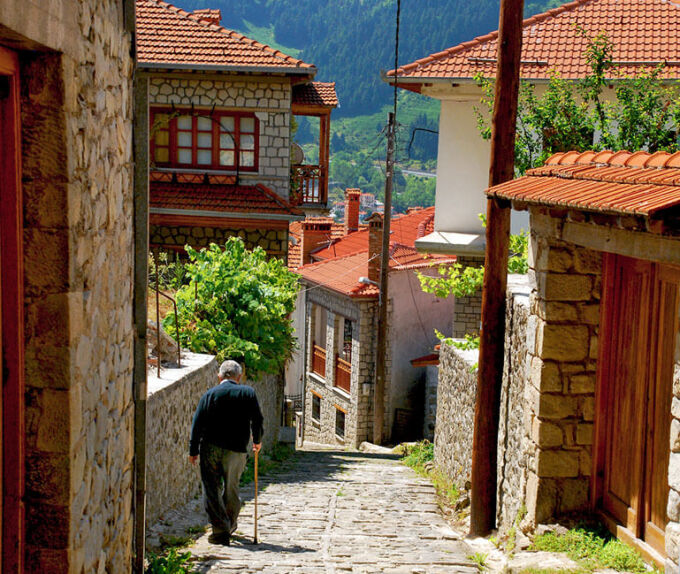
The Riviera of the Epirus Region
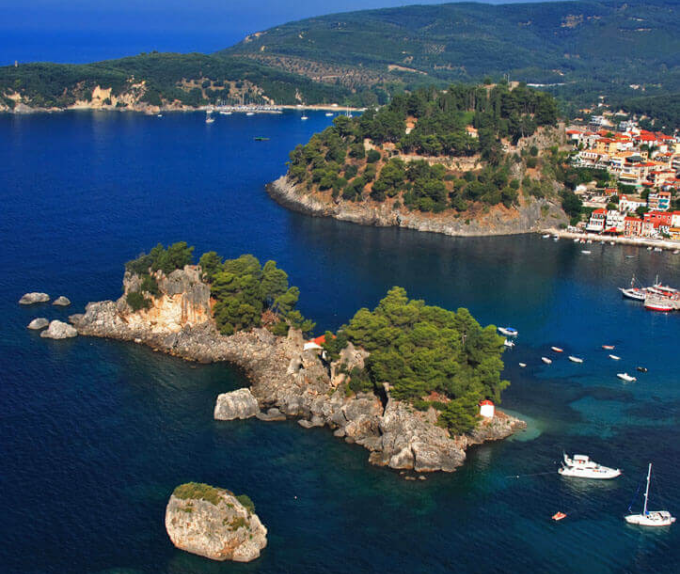
The Ionian fjord!
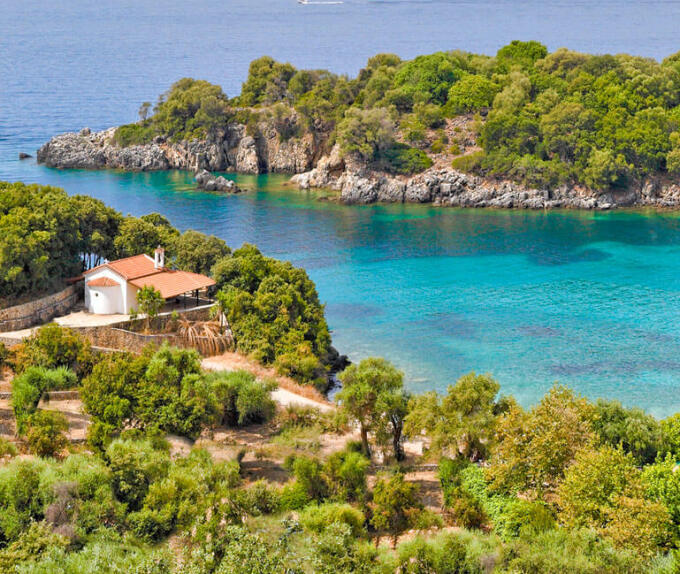
City of Experiences
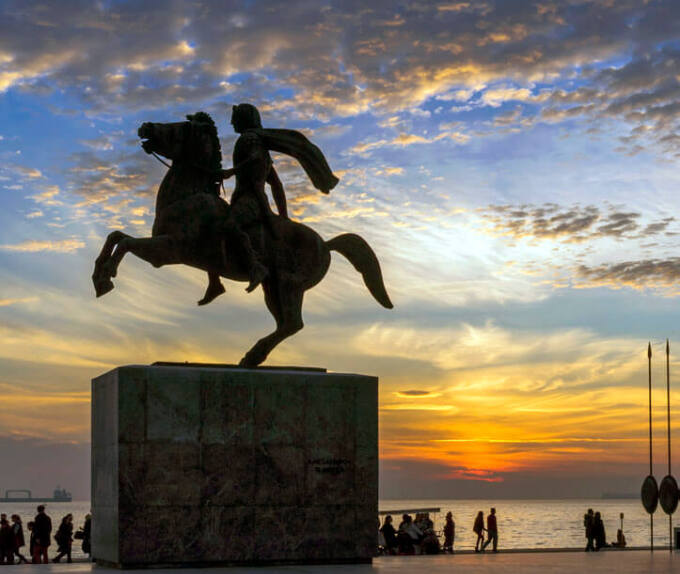
A breathtaking combination of blue and green
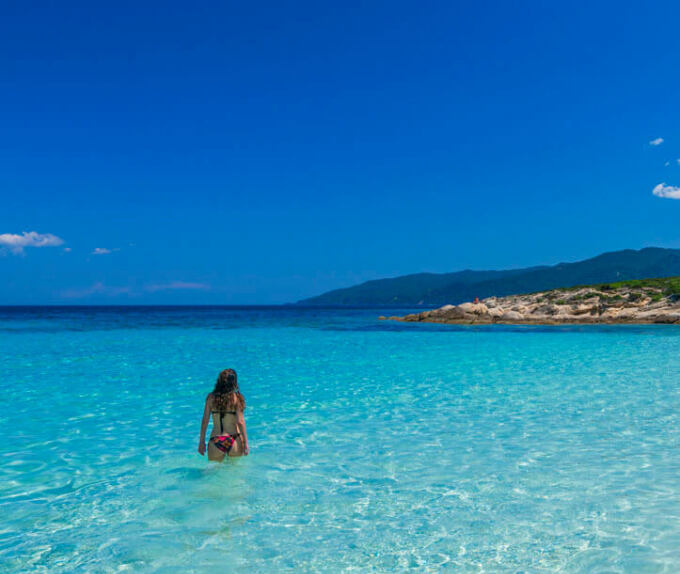
The Lakeside Jewel of Northern Greece
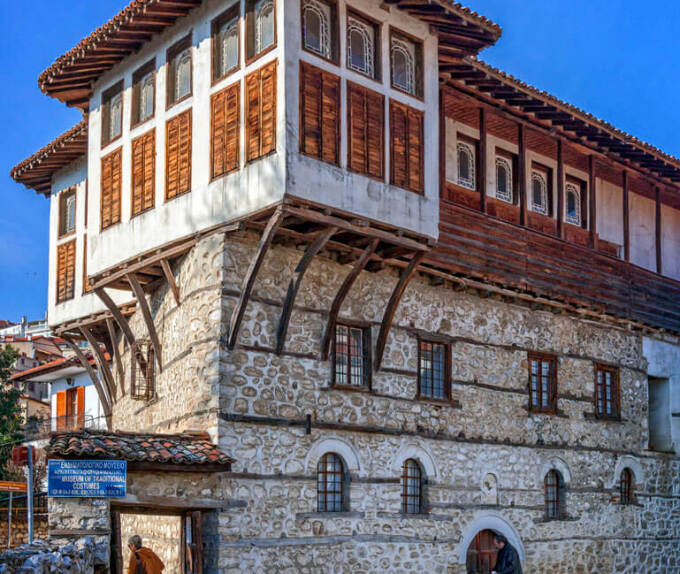
The land of the Nymphs

The Picturesque Town at the Foot of Mount Olympus
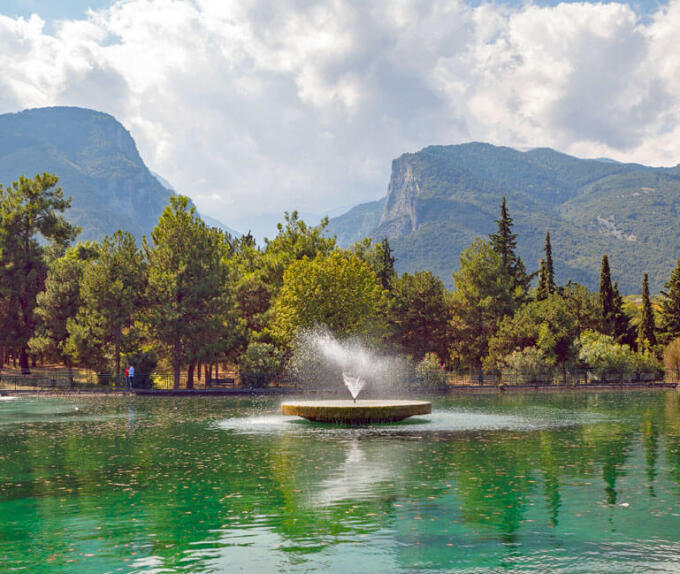
Palaios Agios Athanasios
A Unique Macedonian Settlement
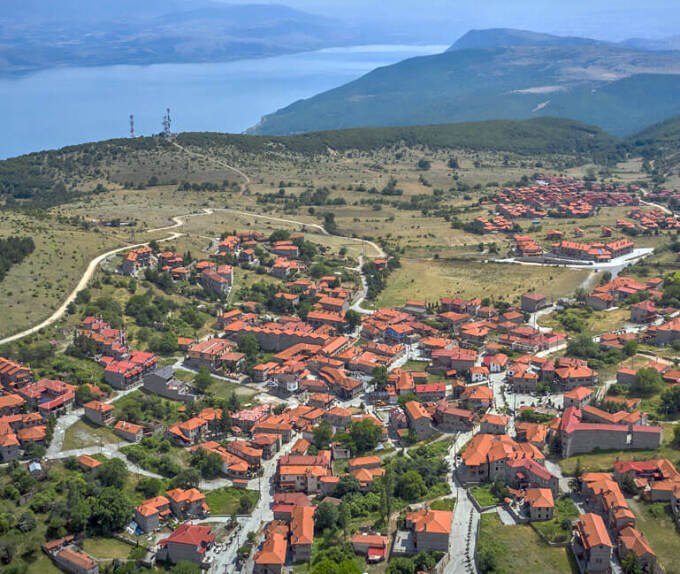
Where Nature's Bounty Embraces Ancient Legacy
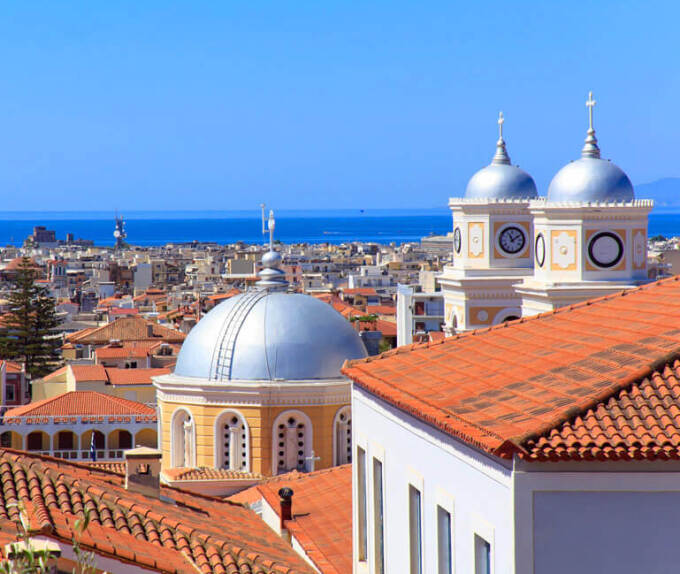
An action-packed destination
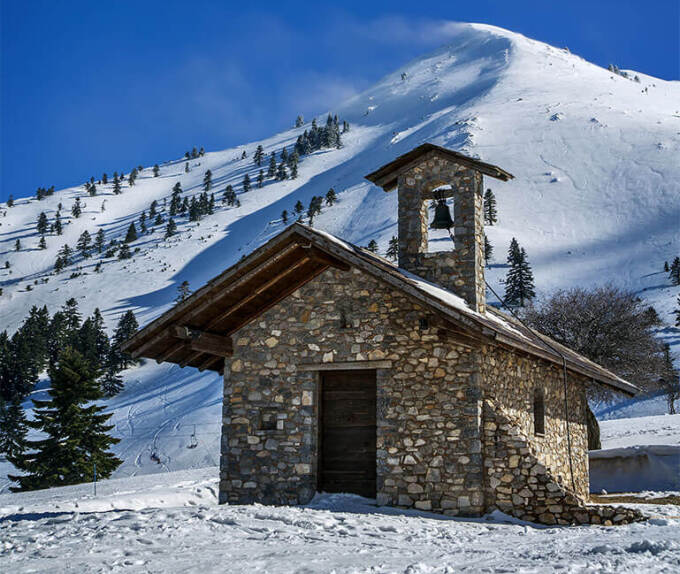
A trip to the birthplace of the Olympic Games
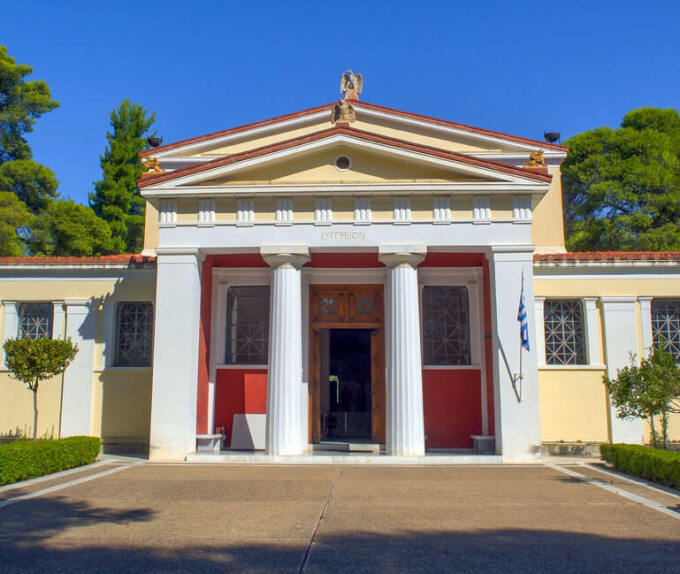
A fascinating wine tourism destination
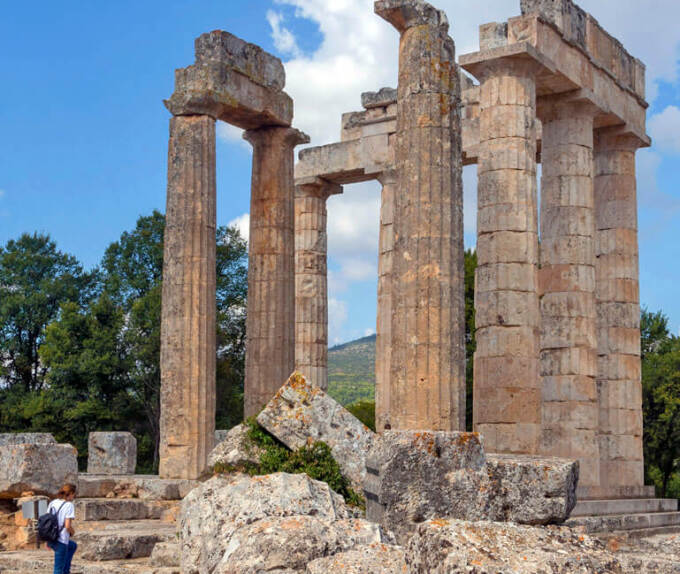
Τhe fir-covered gem of Mainalo Mountain

A legendary escape in every sense of the word
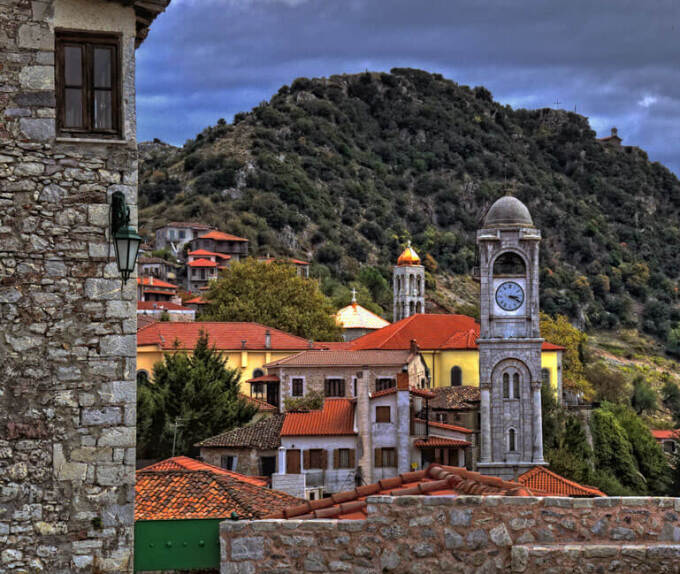
A Traditional Gem on the Slope of Mount Mainalo
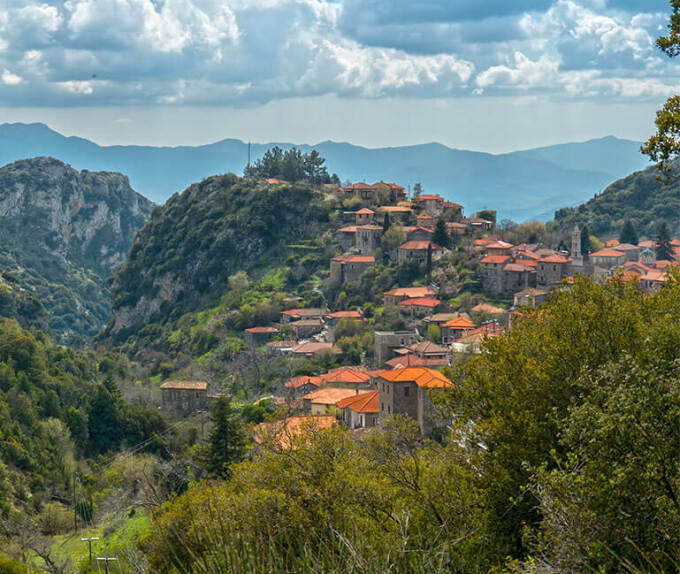
Beauty, Myth and History are all here
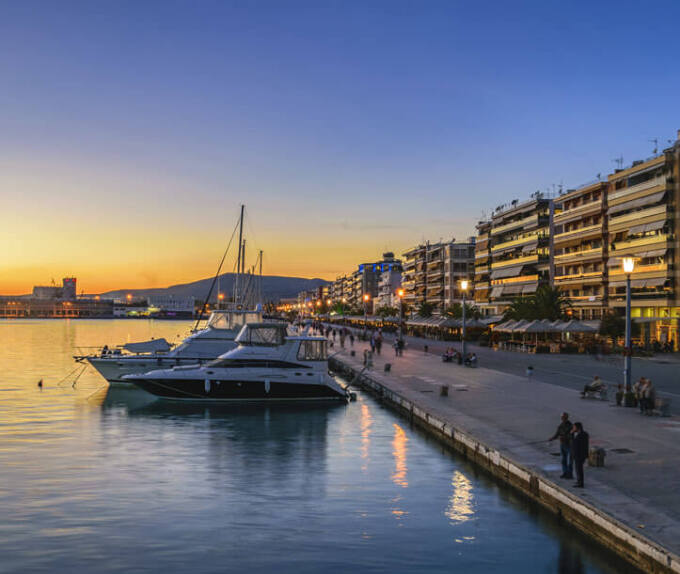
Alexandroupoli
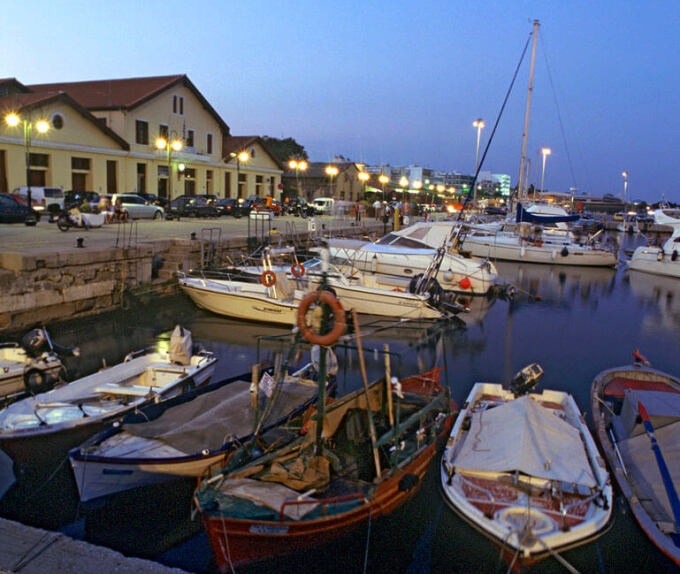
The noble Lady of Thrace
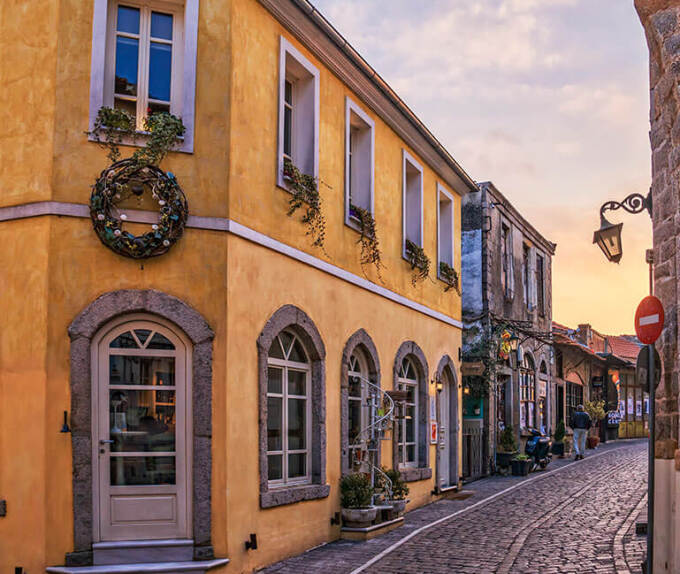
Kea (or Tzia)
Travel to the heart of the Cyclades
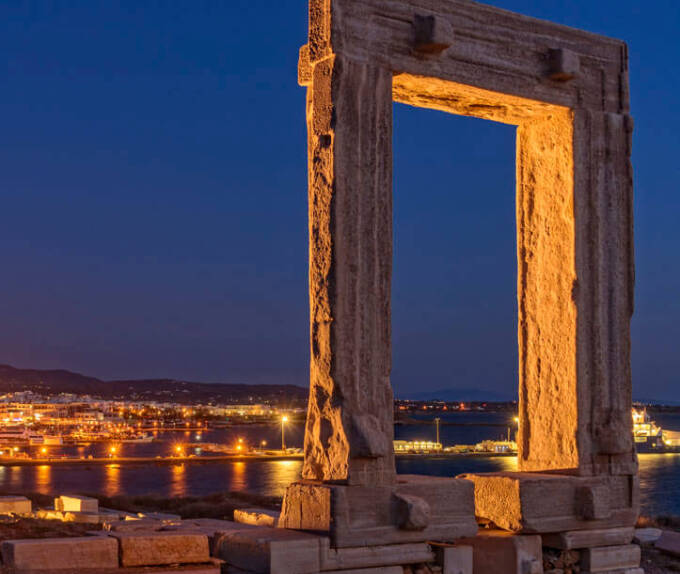
Where cosmopolitan meets traditional
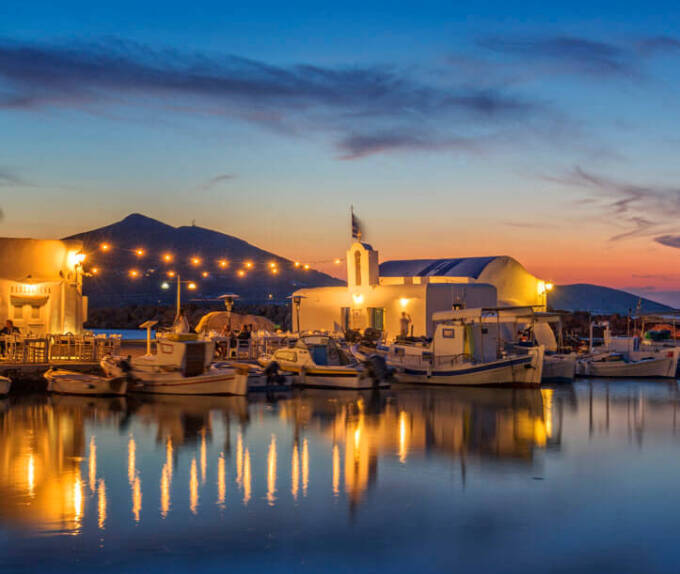
A rising destination in the Cyclades
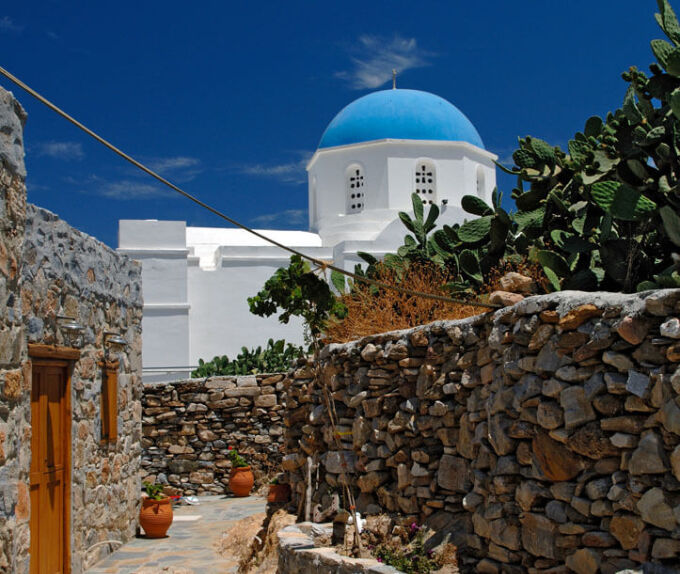
The Big Blue
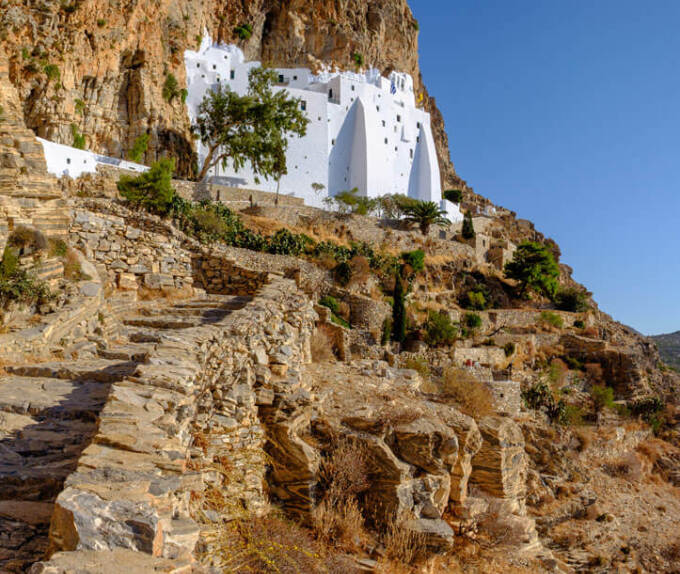
The "handmade" island
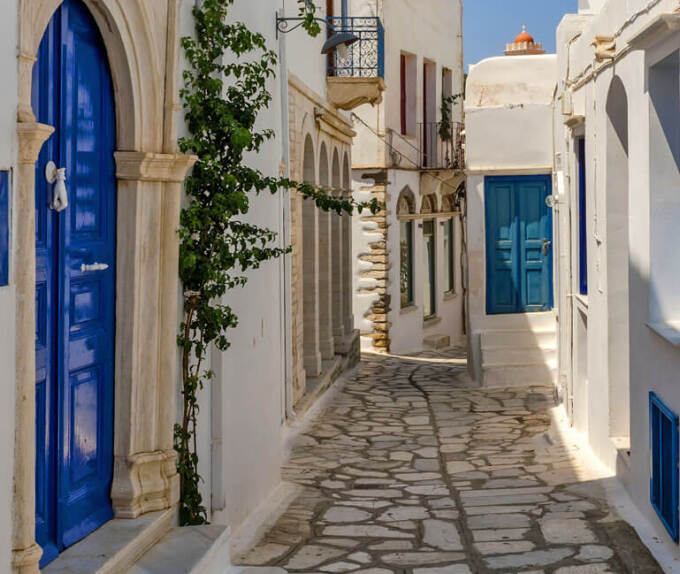
The island with heavenly beaches
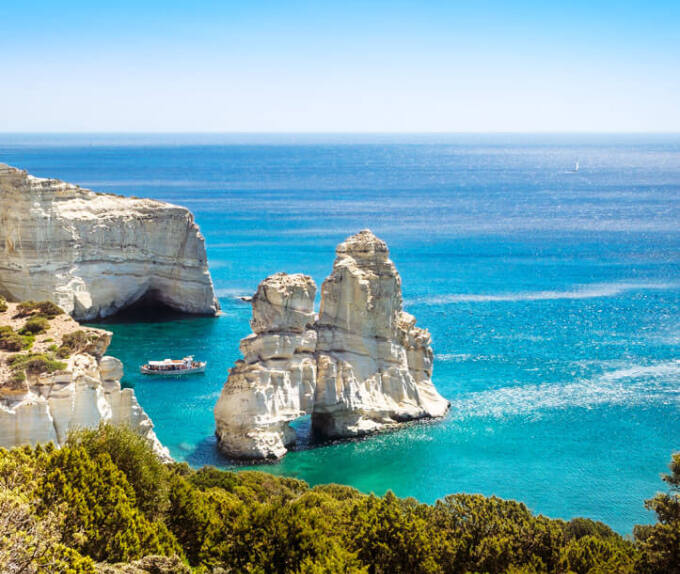
Welcome to the Cyclades
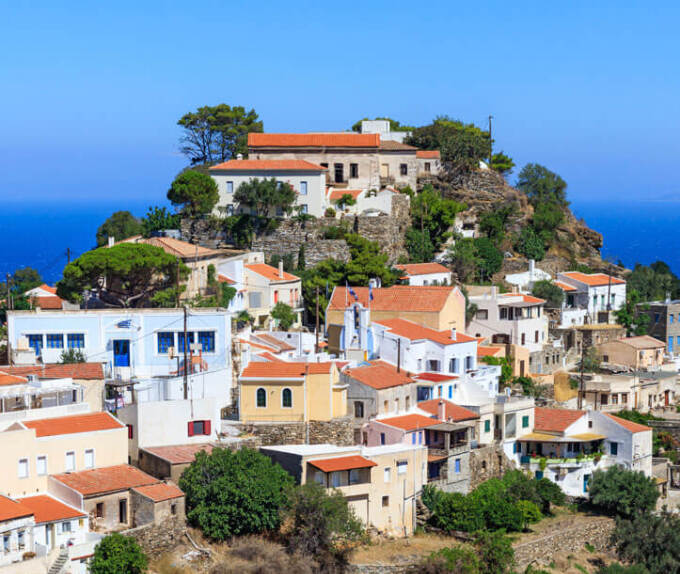
The Exciting Island
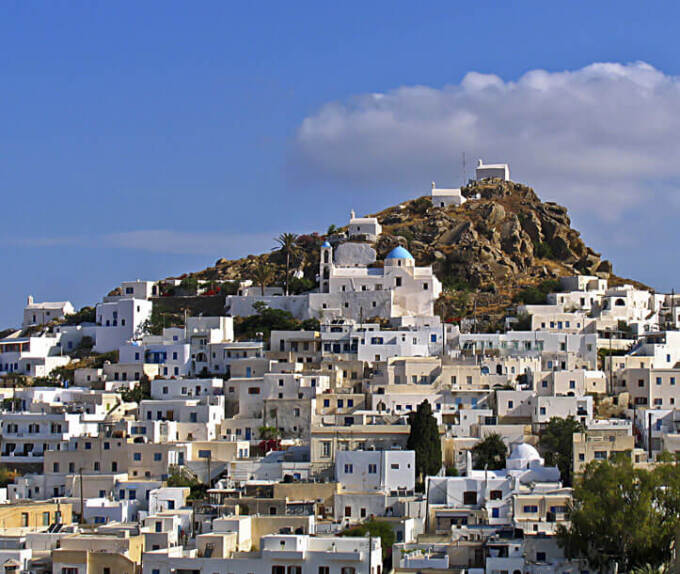
Simply irresistible
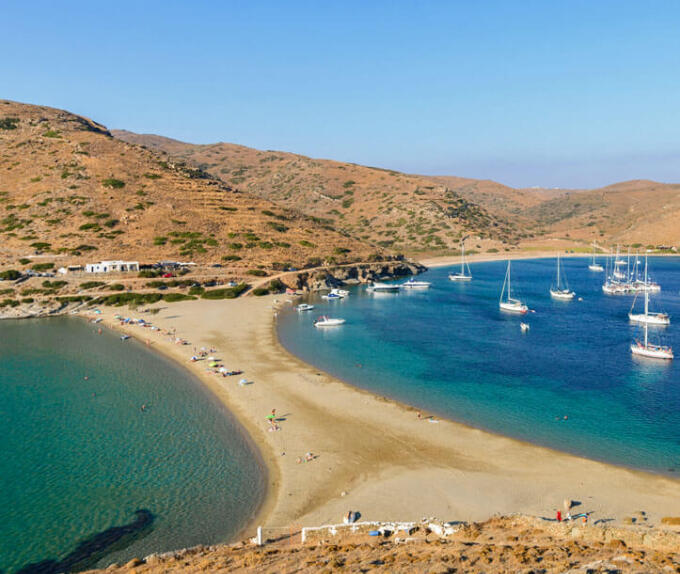
An island of beauty and magic
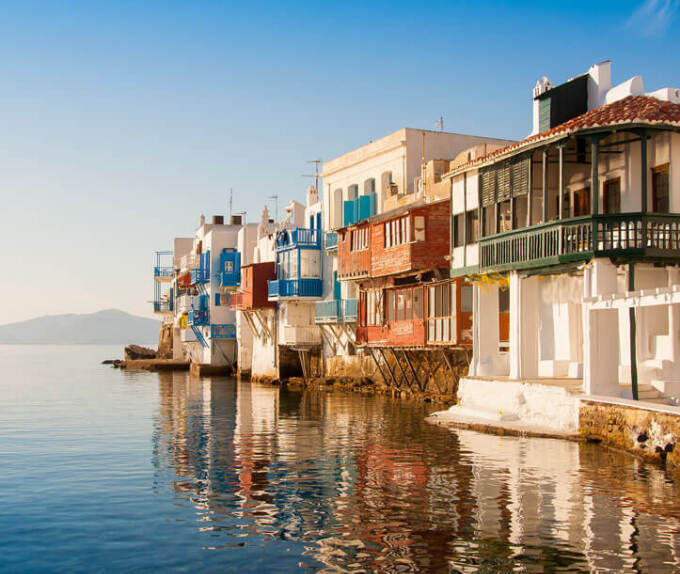
The Noble Island
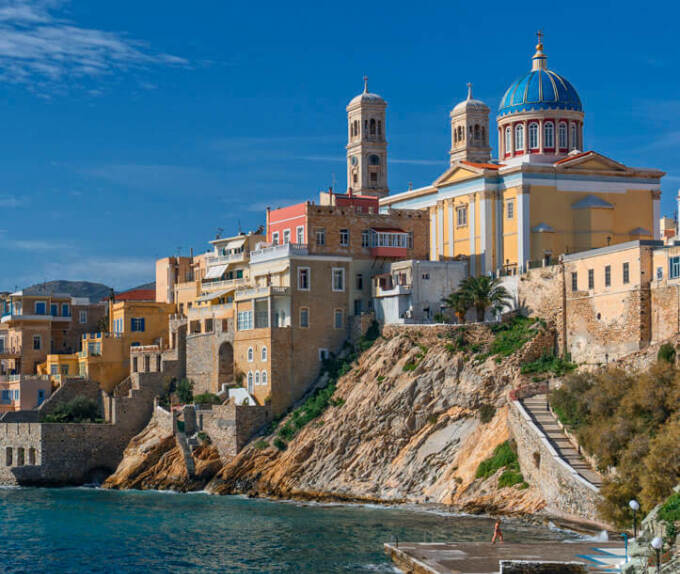
An island of raw beauty
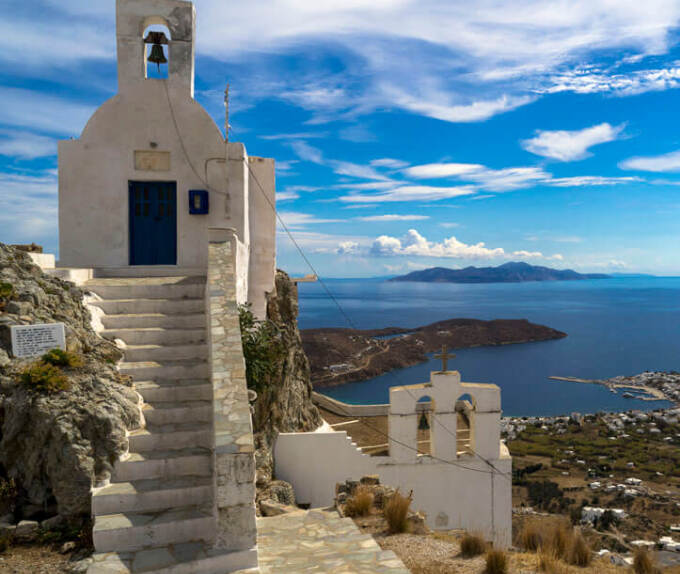
A balanced and harmonic cycladic island
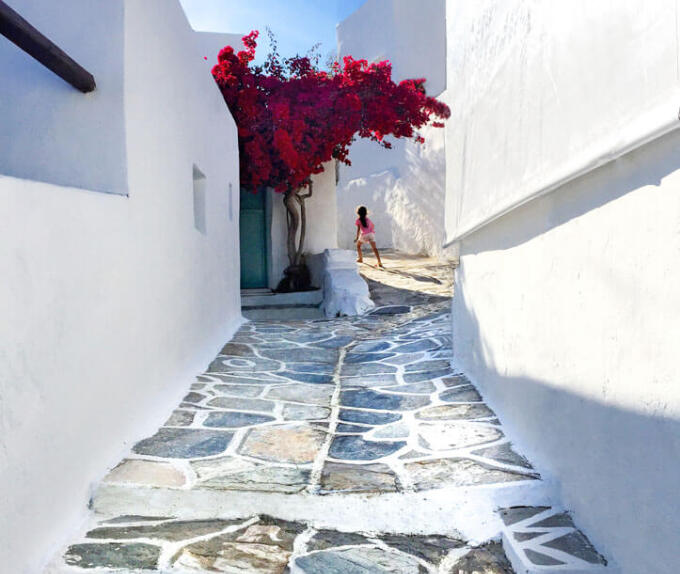
Anti-conformist & carefree
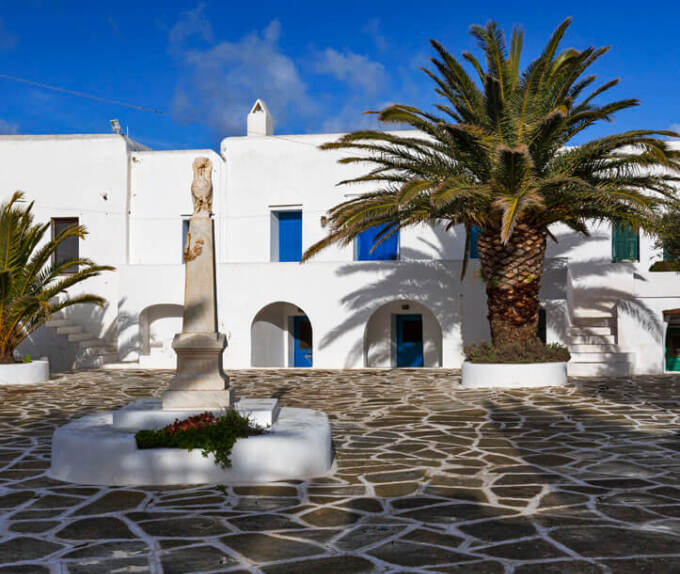
The Chalk Island
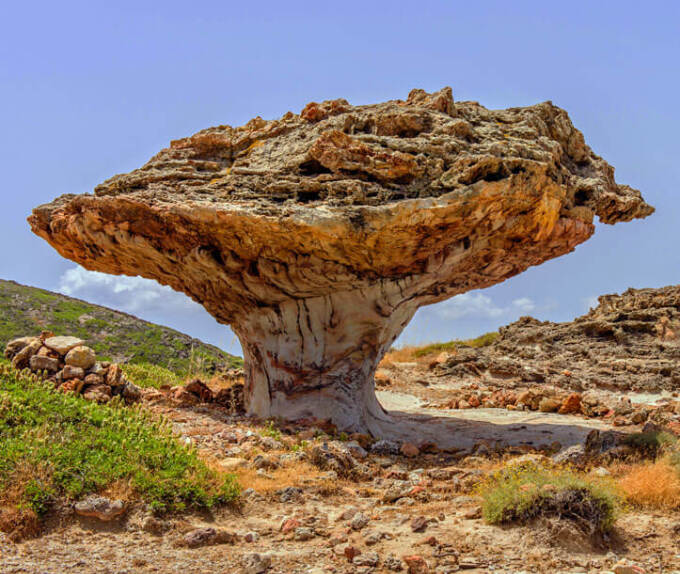
Folegandros
Bathed in the sunlight of the Aegean Sea
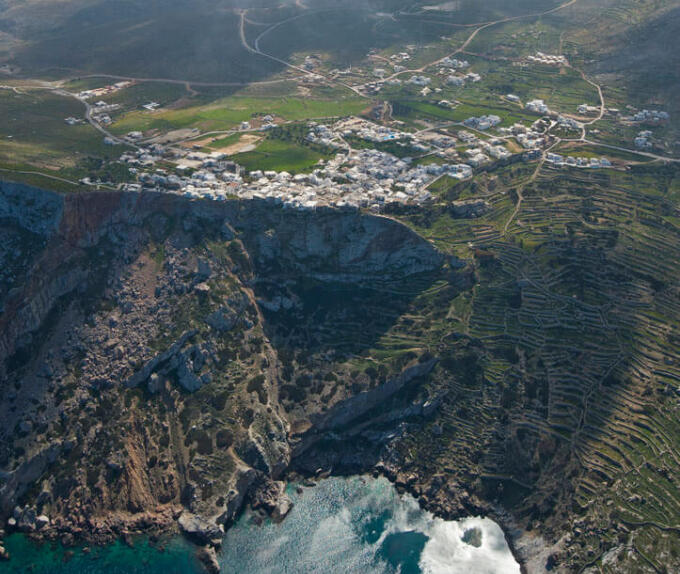
A piece of heaven in the Lesser Cyclades
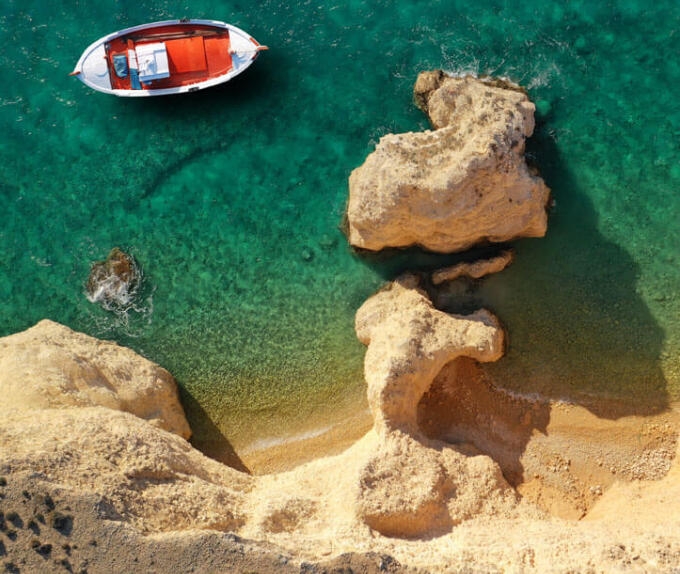
The head priest of the Cyclades
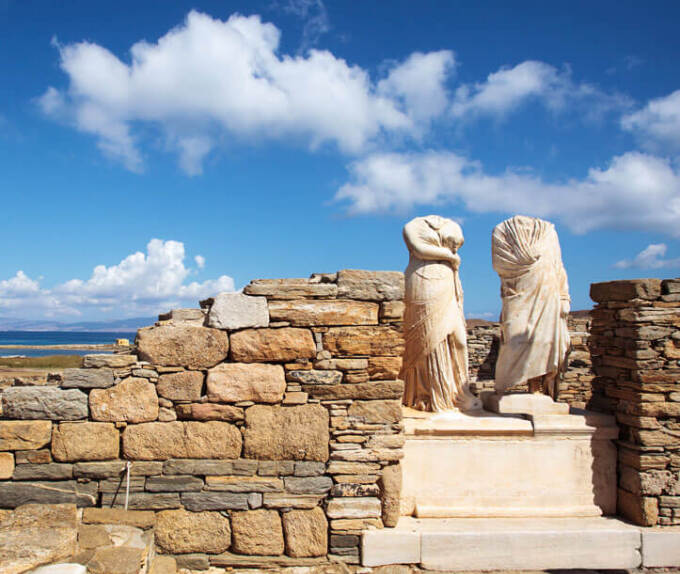
Agios Nikolaos
The cradle of the Minoan civilisation
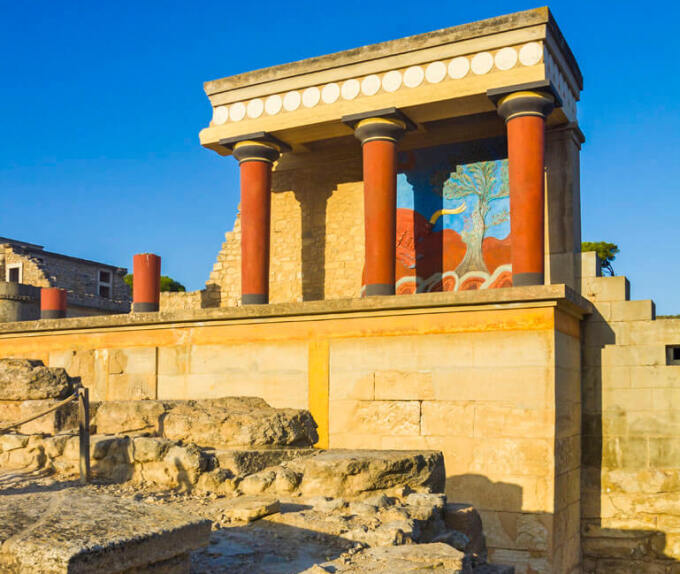
Kastellorizo
A Butterfly-Shaped Island
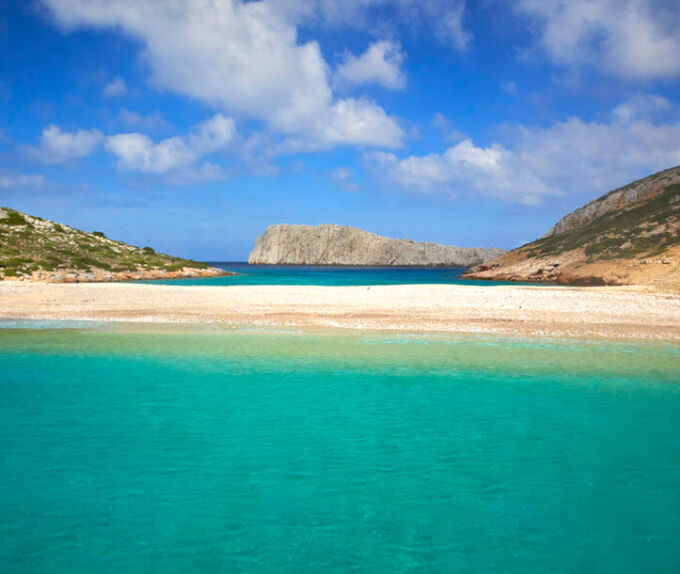
The Sponge Harvesting and Rock Climbing Island

The wild beauty of the Dodecanese
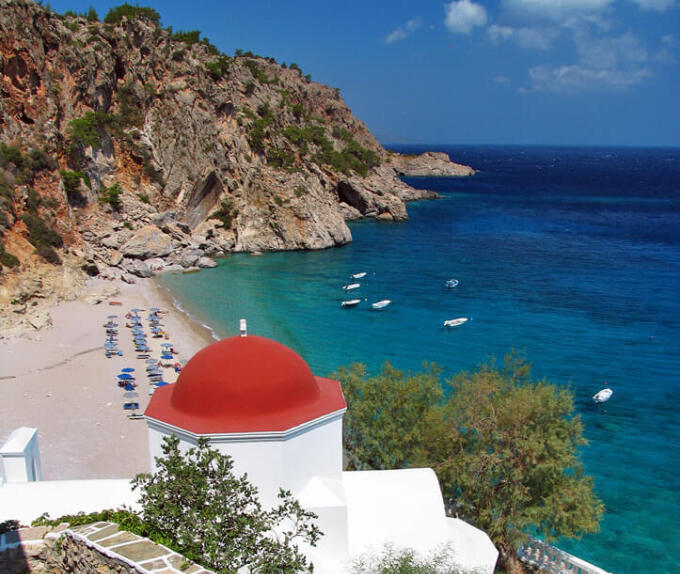
Wild and Beautiful
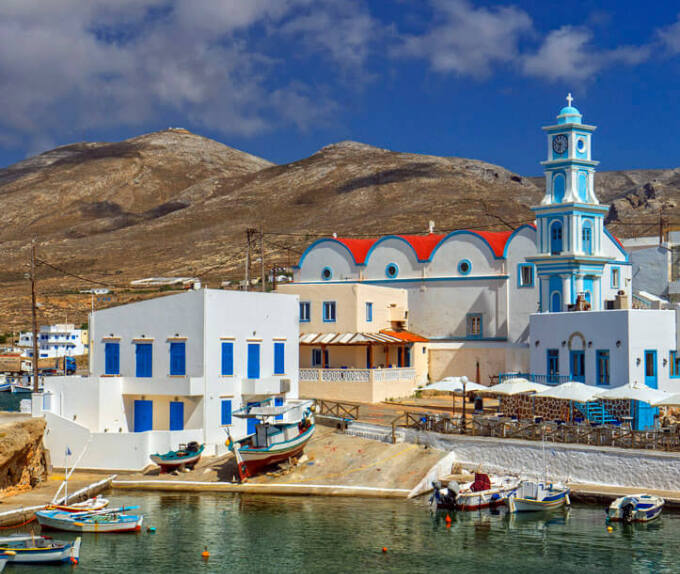
A Remote Treasure Island
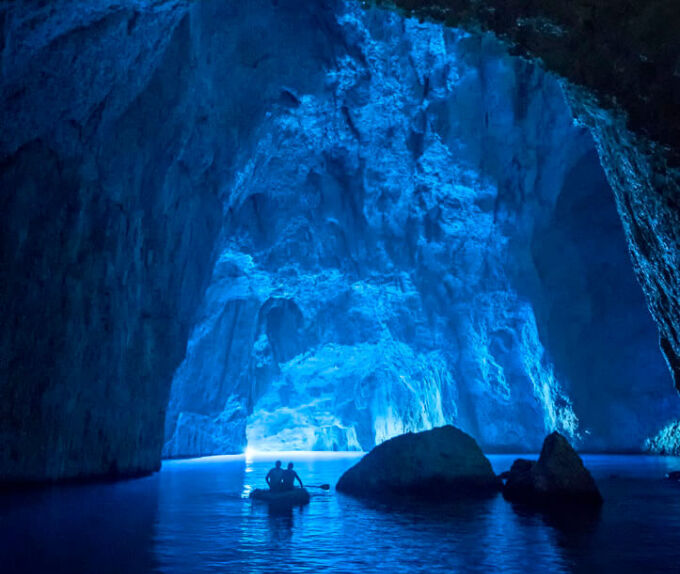
Hippocrates’ Island
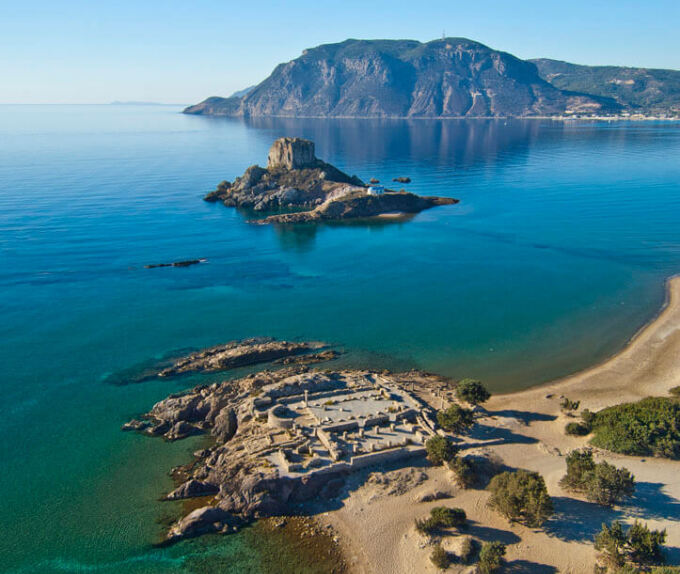
Calypso’s Island
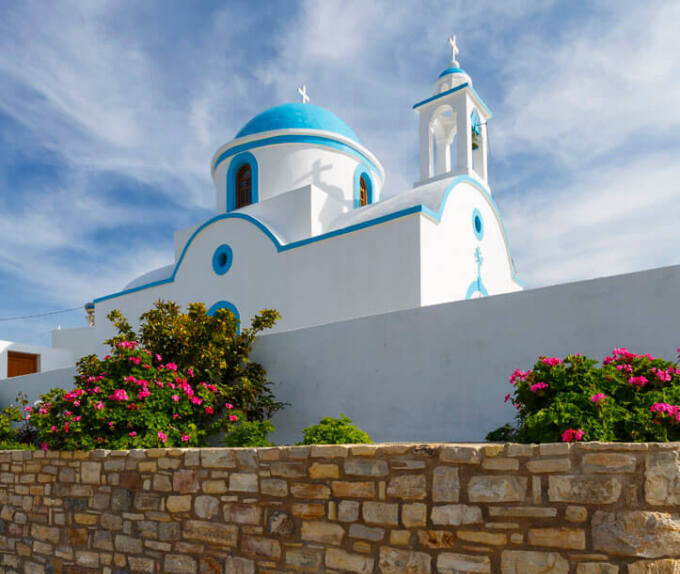
A lesser known gem in the Dodecanese
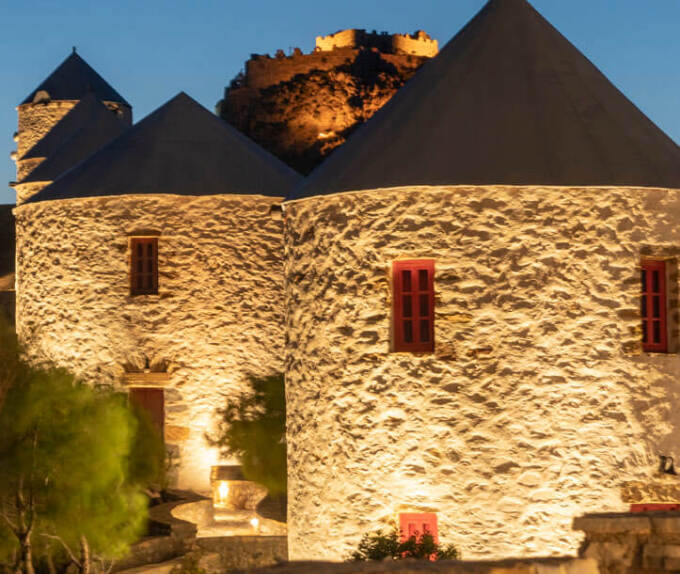
Island with a Unique Volcanic Terrain
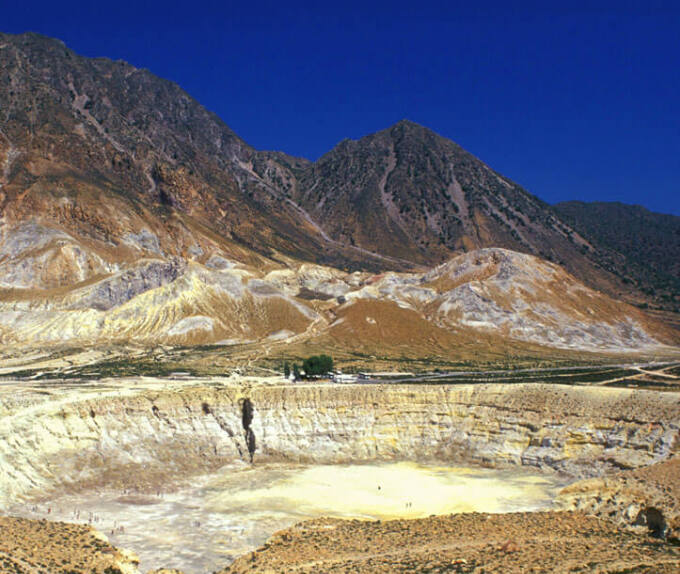
Religious legacy meets beauty of Nature
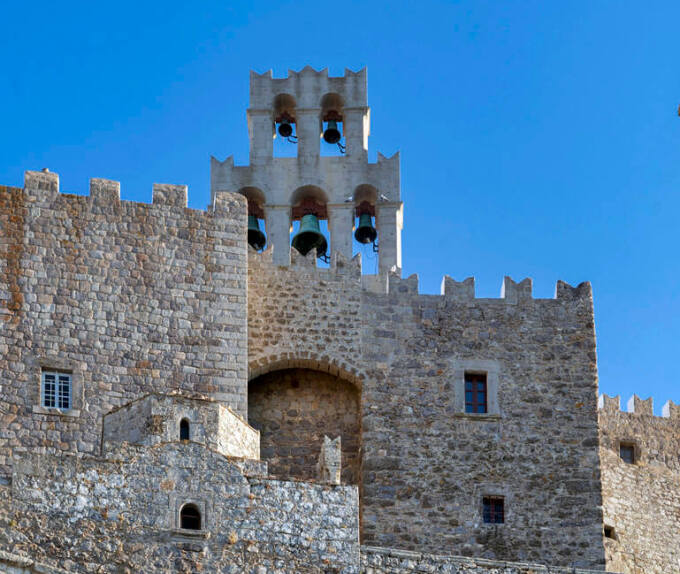
The island of vivid contrasts
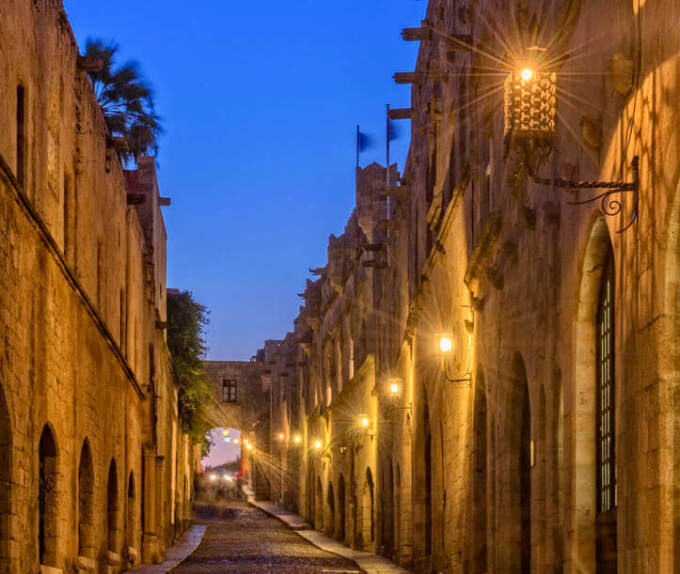
A Fairytale-like Island
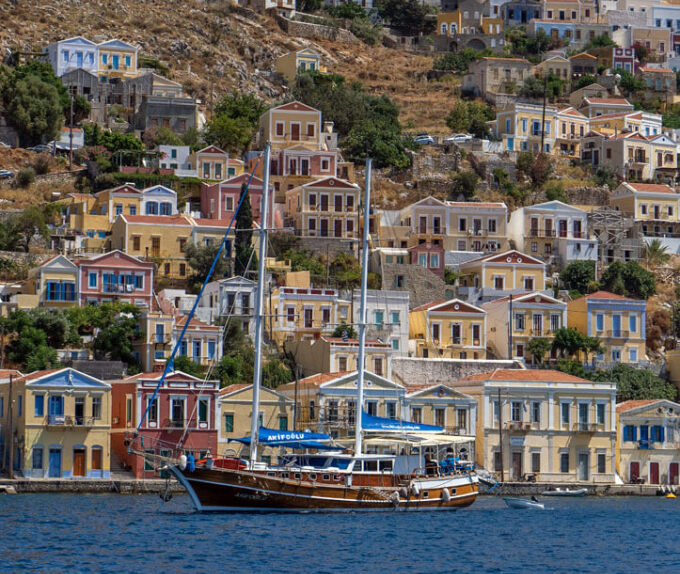
The perfect choice for a laid-back holiday
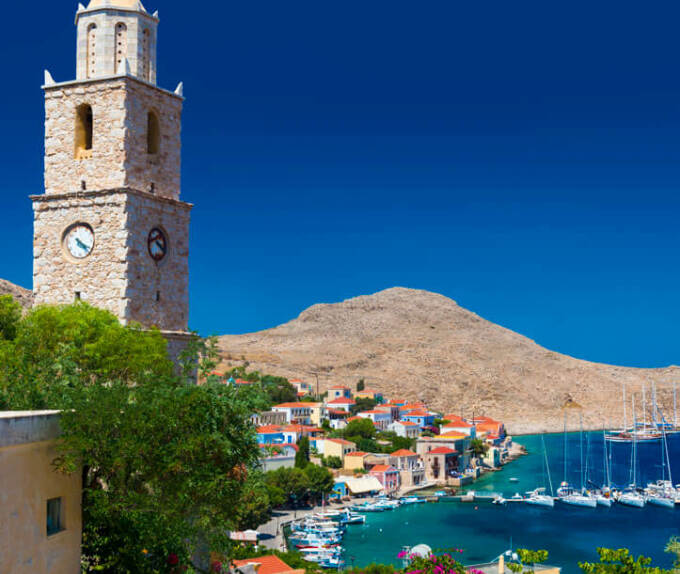
Odysseus’s home
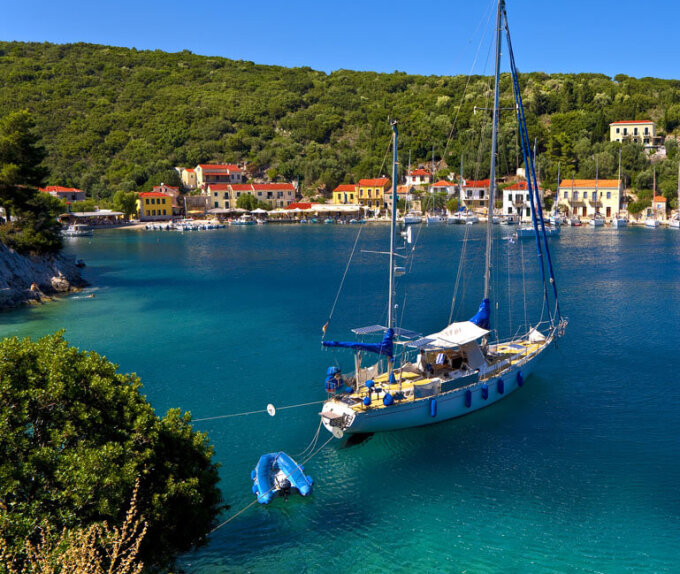
Chic and delicate by nature
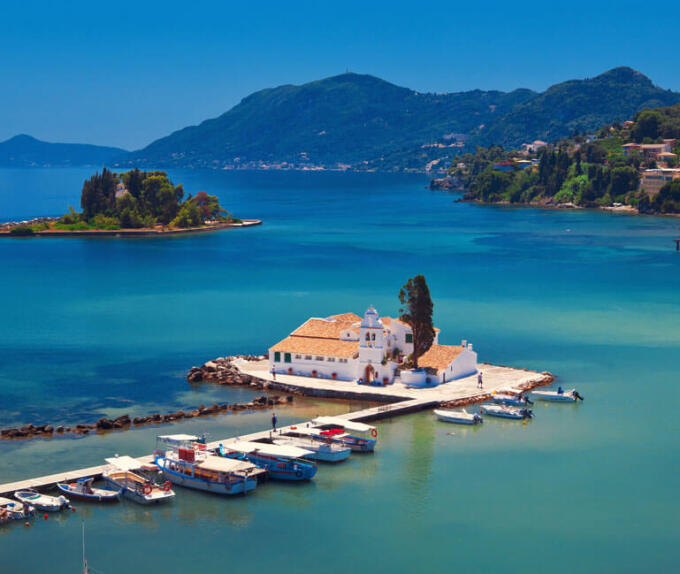
Agios Efstratios
The island of the Great Gods
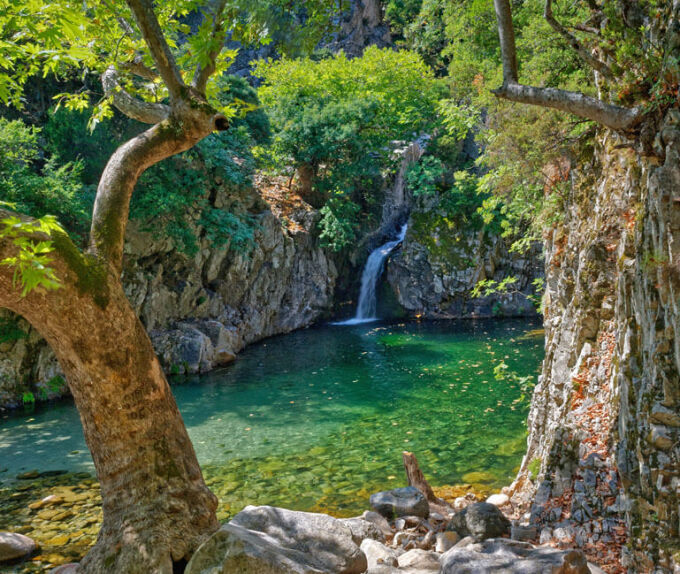
A Tapestry of Natural Wonders and Cultural Riches
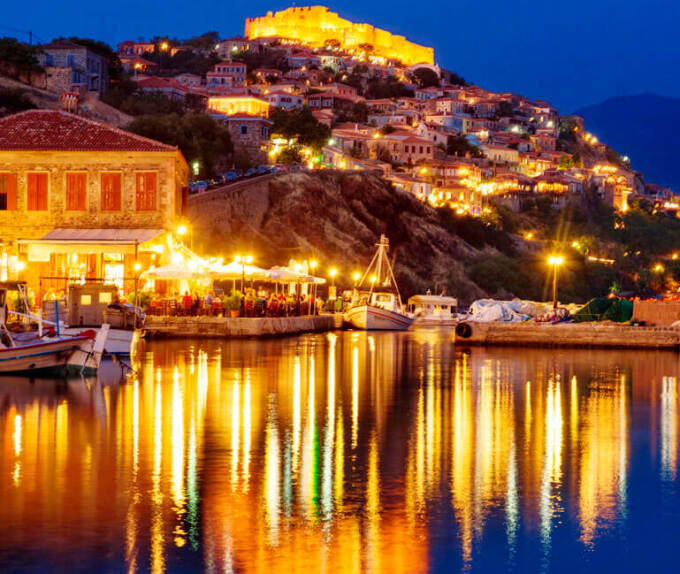
An island of sheer beauty
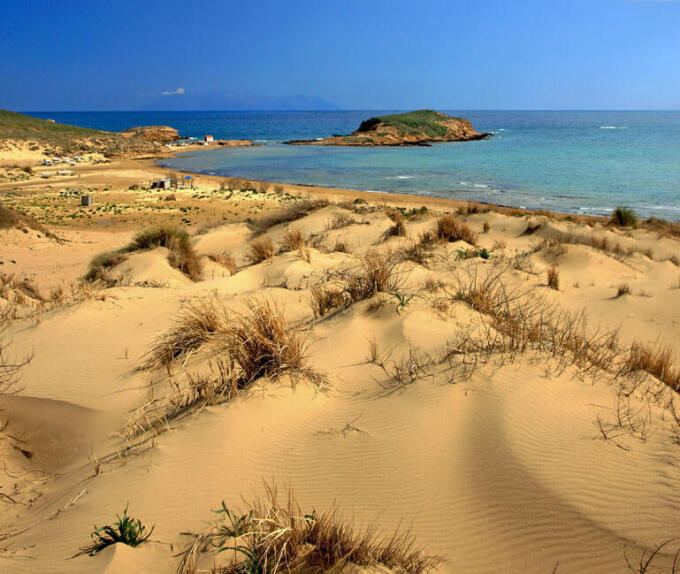
The island of Hera and Pythagoras
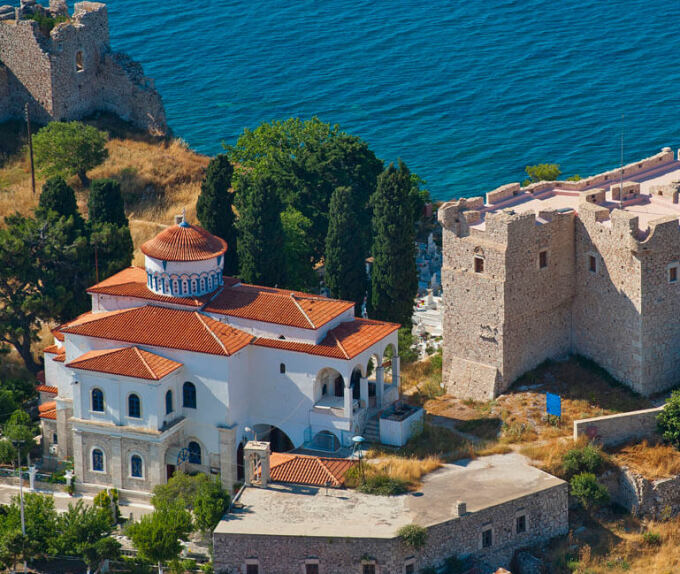
The island of glorious past & pristine beauty
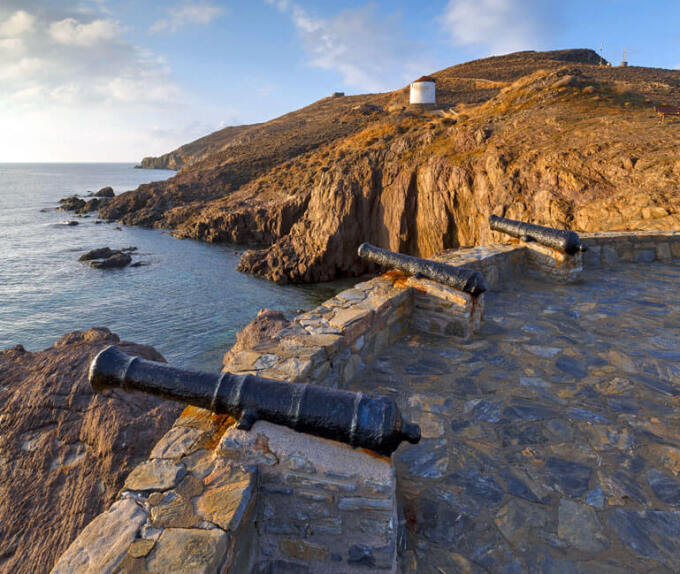
An archipelago away from the crowds
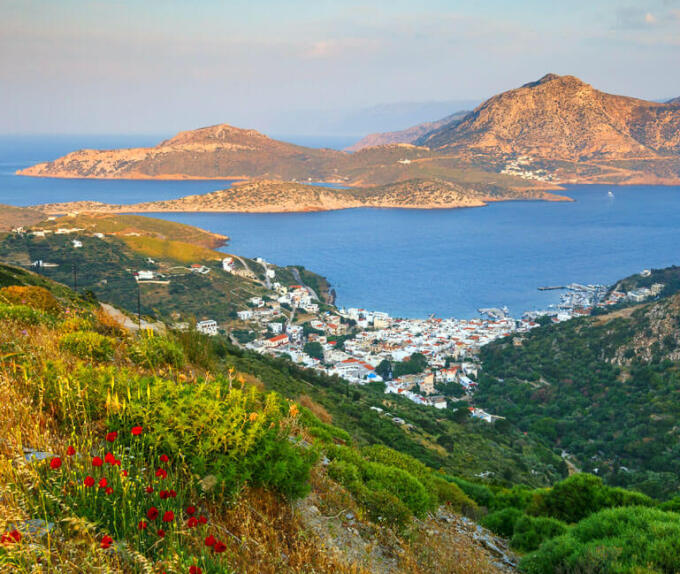
Τhe remote islands of ship owners
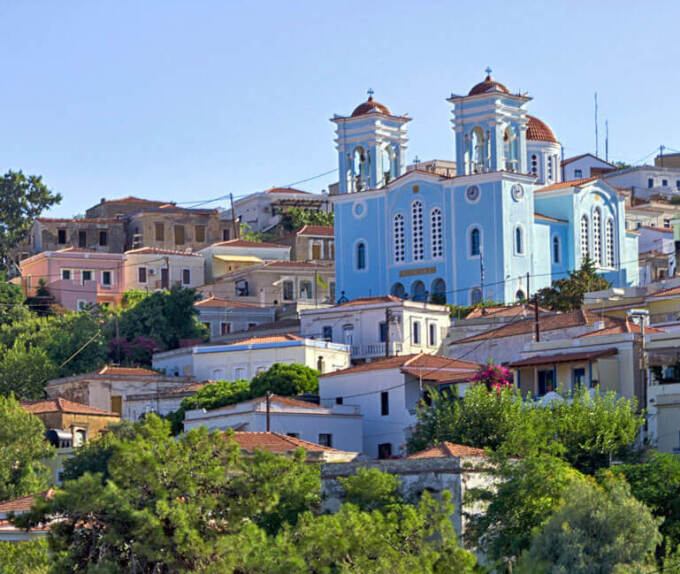
A Mise-en-Scène Island
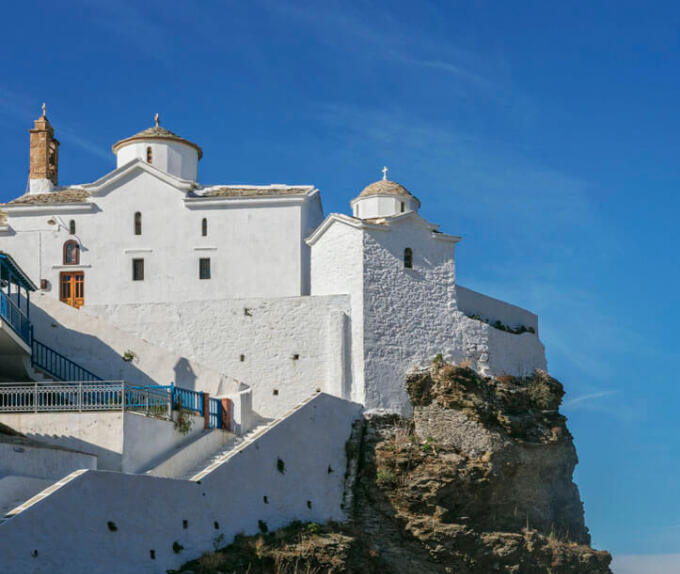
Enjoy nature in all its splendour!
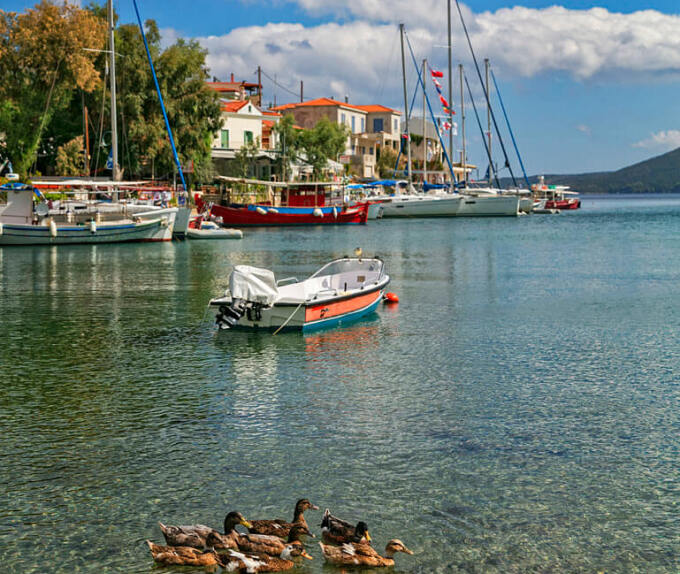
#VisitGreece
Share your moments in Greece

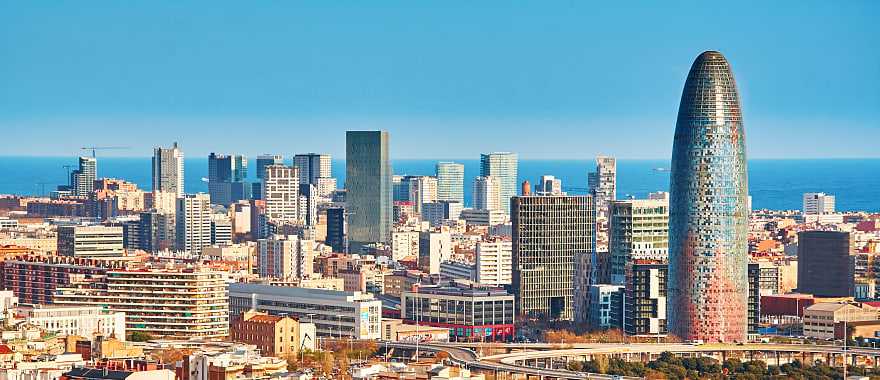
Mediterranean Explorer: Greece, Italy & Spain Vacation
Customers rate Zicasso's travel referral service 5 on a scale of 1 to 5 based on 1541 reviews on Trustpilot
We match you with top tour companies that specialize in the trip you want, whether it's a customized private tour or a group tour.
- Trip Overview
This is a sample itinerary to inspire a personalized trip designed with your travel specialist
Request a Quote
Countries Visited
Places visited, suggested duration, customizable itinerary, athens – immersed in a 16th- and 17th-century greek neighborhood.
Plaka has distinct energy as a maze of whitewashed alleyways leads you to small squares and churches. Rows of small shops line both sides of the streets, often their wares spilling out onto cobbles. Families walk and gather on the squares while groups of friends bring chatter to restaurant tables. You can hear the sound of plates smashing, and bells chiming and smell the indulgence of fresh produce as if a hint of olive oil permanently hangs in the air. Then you will look up and see the Acropolis looking down, in an illuminated state from dusk onwards. Plaka remains very Greek, and your hotel is located here, an ideal base for an easy first evening exploring.
What's Included:

Athens – All the Highlights of the Acropolis and Agora
Marble streets reveal a timeless history as temples stand upon them, expertly preserved and majestic in size. Huge slabs of stone lay in ruin and imposing statues line the street as court and temple remains can be seen everywhere. You will be in the Agora, a place where local life unfolded, beneath the bastion of the gods, the Acropolis. The history is impressive, but you were expecting that, just as you were likely expecting the sculptures and artistic details. But you really cannot prepare yourself for the size of the temples and monuments, as these are not small structures, but masterpieces on an enormous scale. There are some good shaded restaurants around the Agora, so you can have lunch with a view before continuing on up the hill.
It is usually hot in the middle of the day, so you will head first to the Acropolis Museum, an air-conditioned complex stuffed full of sculptures and ruins that have been rescued from here and other sites across Greece. Walking high above the city, you will follow in the footsteps of legend as wingless goddesses look at you from beside the temple. Corinthian columns seem to rise miles above your head, and the stone is cracked but not bowed, which evoke the age of this world in another world. Stay on the Acropolis until dusk and have dinner nearby, before settling in for the night to catch your early flight.
Rome – Gladiatorial History to Italian Baroque
Comparing Athens to Rome is one of the highlights of the Mediterranean. Yesterday’s Greek temples will be fresh in your memory as you walk the Roman Forum and admire the Colosseum. In less than 24 hours, you will have connected the two great civilizations, walking the path of gods and now gladiators. The nearby Pantheon is another iconic sight, to be contrasted with the Parthenon yesterday. Wander through Rome, and you will find a city that is not frozen in a time of empire, and the afternoon will show that Rome was not built in a day.
Baroque architecture was pioneered here and illustrates the elegant style made ornate with all manner of flourishes. You will first go exploring with your local guide, beginning with two churches designed by rival Roman architects. The most enjoyable Baroque highlights are the city piazzas. At these places you can rest your legs, sipping on drinks on outdoor terraces and watching the city roll by. Exploring further, you will begin to connect the other eras, your guide telling tales from the time of the Spanish Steps and Trevi Fountain. Almost every building is an attraction in the central city, but it is not too crowded here as central Rome is mostly pedestrianized, and you will not need to rush to fit everything in.
Rome – The Eternal City and the Vatican
After yesterday’s early flight and full-day guided tour, today is left free for some personal city exploration. You might want to take a carriage ride into Trastevere, where the smell of home cooking is intoxicating. Perhaps travel 30 minutes along the coast to a ruined Roman fishing village, or you could hit the shops or relax on the piazzas. Late this afternoon, your guide will take you to the Vatican just as the museums are closing. You will have near-exclusive after-hours access to all the galleries and chapels. The art truly comes alive without jostling for space amongst other people, so you can sink your senses into Michelangelo’s Sistine Chapel, gawp at the splendor of Raphael's Rooms, and find your own favorite place amid the world’s greatest art collection. It will be dark and pretty late when you are back in central Rome, which is just when the locals are heading out to dine.
Amalfi Coast – An Authentic Gritty City and an Evening of Bliss
Naples is rough around the edges. Paint is chipped and peeling, and the grandeur is faded but unbowed, especially where the city meets the Mediterranean. Palaces and stately townhouses reflect in the water surface, as locals mill around the newly constructed promenade. Spend the morning looking around with a typical Naples pizza for lunch, likely to be on the best you will eat in your whole life. From there, continue down the coast, weaving onto a headland then around a broad peak to the Amalfi Coast, your serene base for the next three nights. Your hotel will look down on the Mediterranean, and everything you need will be within walking distance, particularly restaurants and cafes that have never served anything other than authentic fare.
Amalfi Coast – Free Day To Relax on the Mediterranean
Stand on the terrace and feel the breeze pass your ears. Listen for the village sounds of elderly women chatting on a corner or a bell distantly ringing. Take to the streets and follow the smell of coffee, cappuccino the classic choice before midday. Follow the village steps all of the way down, and you will soon reach the water, where cafes look out to returning fishing boats with perfect places to relax. Walk up, and a cliff-side path will connect you to the next village, and the one after that. Walking between them you will enjoy unrivaled views of the Mediterranean, as well as olive groves that now grow here. This day is left entirely free for your chance to enjoy the Mediterranean atmosphere and slow pace of life.
Amalfi Coast – Sorrento and the Isle of Capri
More picturesque old villages are nearby, located on the opposite side of the headland. The most famous of these is Sorrento, much larger than those on the Amalfi Coast, where timeless vernacular architecture sets the scene for the super-yachts that lull in the harbor. But that’s for later, as first, you will take the boat to the Isle of Capri, an island getaway since Cleopatra’s time that is still a destination that captures the hearts of many. Beaches lull beneath a mountain’s slopes as ruins crumble elegantly across the island. The harbor is as lovely as any on the Mediterranean, and from the short island getaway, you will spend the afternoon and evening in Sorrento to explore at your own pace before dining at a restaurant slung high above the water.
Barcelona – Surrounded With Culture in the Catalan City
After three nights in leisurely Amalfi, you will likely be ready to start jumping around the sights again. After a short drive to Naples, you will fly direct to Barcelona, touching down with most of the day left for exploring. Your guide will meet you at the airport and customize a city tour to your interests. But before that begins, you will want to take a moment to drink coffee on an outdoor terrace, watching how Catalonia is so different from Italy and Athens. The architecture, language, and food are obviously different, but the contrasts along the Mediterranean are just as much about feeling. Everywhere has its own energy, and in Barcelona, it is an energy that will take you along for the ride.
Walk along the promenade, and you will feel the city’s balmy summer ambiance. Wander into Barrio Gotic and get lost amid the boutiques and wine bars. Follow La Rambla past street musicians and performers, and then ascend towards a castle and viewpoint. Barcelona’s famous architecture is another direction for exploring, and your guide can show you some of La Sagrada Familia’s secrets before you visit some of Gaudi’s early works and the magnificent Palau de la Musica Catalonia. With a handcrafted day at your disposal, you could also be searching for art, checking out the football stadium, or heading out to the monastery at Montserrat. Along the way, you will be exploring different Barcelona neighborhoods and eating some incredible food.
Barcelona – Vineyards on the Med and More of Barcelona
Vines rise from the harsh rock on Catalonia’s slopes as the Mediterranean brings cool air that has grapes moving softly with the breeze. Vineyards are tucked away between the vines, mostly converted farmhouses that retain the charm of old age. This is Penedes, a wine region revered around the world, and it makes bubbles. 90% of Spanish Cava comes from here, and the good stuff comfortably rivals Champagne. Travel here in the morning, and you hear the enviable sound of corks popping. Tour a winery and go tasting with a view, before stopping at a larger vineyard for a lunch with wine pairing.
It will be an easy half-day tour, although note that you may also consider Priorat if velvety red wines are more your taste. You will be back in Barcelona as locals are waking from their siestas, and there will be time to continue the sightseeing from yesterday. You can join in the energy around La Rambla and Barrio Gotic, where there is a wine bar built into old Roman ruins. Or you could head down to the beach, which gets really lively at this hour. A final evening in Barcelona and you will want to be along the Mediterranean, dining on Catalan cuisine, watching how the water changes color at dusk. You know this sea well by now, and you will want to come back someday as the Mediterranean always reveals new treasures.
Barcelona – Departure
This day is left free other than a private airport transfer to meet your outbound flight, so you can enjoy one last leisurely morning of wandering what is likely one of your favorite cities in the world.
Trip Highlights
- Luxuriate on the Amalfi Coast with a three-night stay in a colorful cliffside village
- Stand at the Athens Acropolis and be surrounded by ancient temples and historical structures
- Enjoy all the energy of Barcelona, a city with so many Catalonian treasures
- Take an after-hours tour of the Vatican Museums, savoring the masterpieces with few other people around
- Spend one afternoon on the Isle of Capri, another in the Penedes vineyards, and one in the timeless city of Naples
- Explore all the highlights of old Rome, from the Colosseum and Roman Forum to the grand piazzas
- Live like a local by with accommodations in the Athenian district of Plaka
- Discover colorful city neighborhoods as guides take you beyond the beaten path in Athens, Rome, and Barcelona
Detailed Description
The Mediterranean breathes history like no other body of water. Ancient temples look down on its blue-green water, wingless goddesses sculpted into their facades. Villages are carved into cliff faces, and each has its own story to tell. City riches shimmer in the water surface with a palace in Naples, a castle in Barcelona, and churches all over. Waves lap softly against the world’s great early cities of Athens and Rome, as this is a sea with secrets and a sea that has shaped the course of history. Look across the water, and you can see turquoise bliss, as first and foremost, the Mediterranean provides a relaxing escape.
This 10-day Europe trip celebrates the Mediterranean in all its forms. You will luxuriate in coastal villages hidden from the world, and there is mind-blowing history abounding, especially during your time spent in Athens and Rome. Unique cultures have evolved all along the water, and you will contrast them, from Athenian Plaka to Naples and Barcelona. This is not a cruise, as these three countries are connected by direct flights, while in Italy you will take a lovely journey along the coast. While the itinerary may initially seem rushed, the beauty of this region is how relaxed it can always feel. So after you marvel at Athens and Rome, there are three days tucked away on the Amalfi Coast, which should energize you perfectly for ending in Barcelona.
This Mediterranean itinerary begins in the Greek capital. Spend your afternoon and evening around Plaka to discover the city’s 17th- and 18th-century atmosphere. The next day will be all about the ancient civilization, from the Acropolis down to the Agora. Fly direct to Rome, and you will be quickly celebrating early Roman history, the Colosseum and Pantheon great to compare against the sights of Athens. Lounge on the city’s elegant piazzas before an after-hours visit to the Vatican Museums the next day, where the world-famous murals and priceless art are far more enjoyable after the crowds have left.
Traveling south from Rome, you will make a stop in Naples, a gritty city with a strong artistic legacy. The city is not picture perfect, and that is the attraction. This energetic city is on route to three nights on the Amalfi Coast, where your hotel terrace provides dreamy views over the Mediterranean. It will be time to relax. But you will still explore, with Sorrento and the Isle of Capri part of the experience. Flying Naples to Barcelona you explore Catalonia, in the city of Gaudi and out on the Penedes vineyards. These final nights are spent on the coast, strolling golden sands before dining al fresco on Barcelona plazas.
Starting Price
$9,095 per person (excluding international flights)
What's Included
- Accommodations
- In-country transportation
- Some or all activities and tours
- Expert trip planning
- 24x7 support during your trip
Your final trip cost will vary based on your selected accommodations, activities, meals, and other trip elements that you opt to include.
Reviews of Zicasso's Referral Service
4.91 stars based on 8946 reviews.
Reviewed By Douglas B.
Reviewed By Daniel D.
Reviewed By Gerald N.
Reviewed By Jon S.
Reviewed By Thomas A.
Reviewed By Jennifer J.
Expert Tips for Discerning Travelers
Your Dream Vacation
in 3 simple steps
Describe your dream trip
Get matched with top travel specialists
Book the trip
Help Me Plan My Trip
Free service - no credit card required


Greece Or Italy: The Honest Comparison [2023] You Need!
T he question for many when trying to decide between Italy or Greece, is what separates these European holiday destinations from each other?
Yet while both nations have similar climates and are great coastal destinations, each has its own distinct histories, cultures, sights to visit, and cuisines that set them apart. All of which makes Greece and Italy quite different holidays.
For example, if beaches are your priority then Greece will be a better holiday choice than Italy. Greece has over 6000 islands, and the coastline and beaches are just unbeatable in Europe.
Italy has a lovey coastline too, but it’s perfect for tourists who love exploring the coast as well as cities. That’s because Italy’s urban centers are world-renowned for their art, culture, and exquisite buildings.
But that’s just the beginning when it comes to how these two countries can deliver different holidays. However that’s where we can help!
We know both of these countries well, and so below is our honest comparison between Italy and Greece.
We compare their beaches, city, culture and more. Then we look at the sights to explore, the food you can try, what natural attractions you can see in each, as well some amazing towns and cities you should visit. All so you can make the right vacation decision!
A Quick Overview & Comparison
How do the beaches & landscape compare, how does the culture & cities compare, how does the cuisine compare.
- Which Is The Better Choice?

Both countries offer unique and exciting vacations, but which one is better depends on your priorities.
Where Greece really excels is on the coast, as it boasts over 6000 islands!
So if you’re looking for a holiday where beaches are the priority, then Greece will likely be the better choice. Greek beaches are much better than Italian ones in our opinion, plus the weather and temperature is often more favourable for swimming and sunbathing.
In fact the year-round temperature and weather in Greece tends to make it a better location for a winter holiday than Italy, as we’ve written about before.
Additionally, Greek islands often have a real rustic regional charm to them. These islands have incredibly rich histories too, and countless centuries-old architecture some of which stretches back to Ancient Greece and beyond!
For history and culture, very few places on earth can rival Greece.
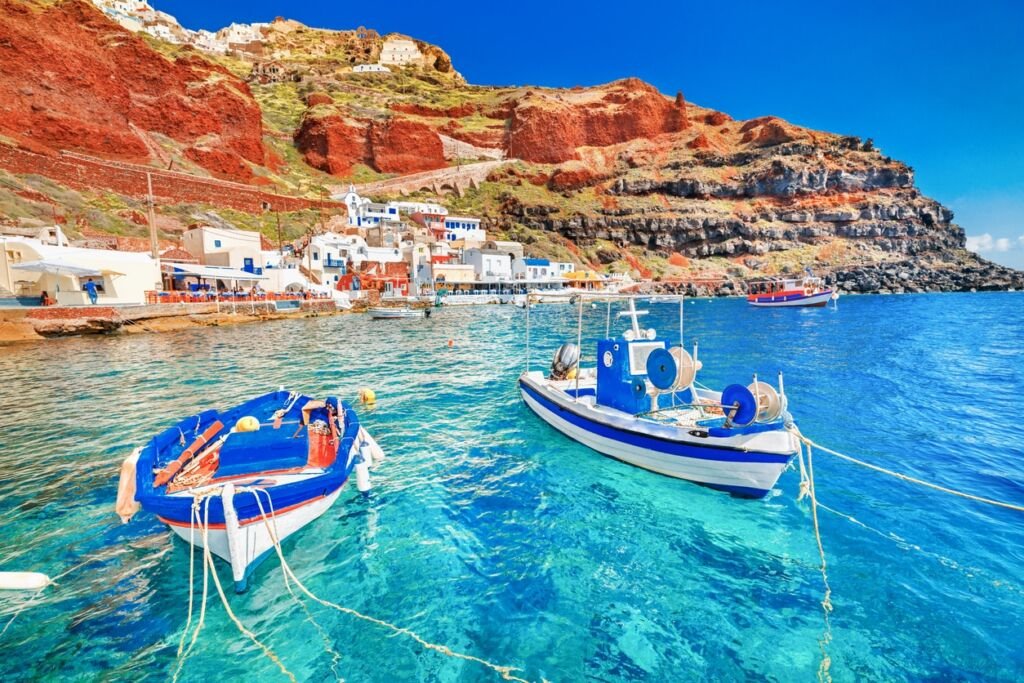
However Italy is one of those countries that does give Greece a run for its money in the history and culture department.
This nation has a rich history and architectural gems from the Roman Empire are everywhere. Whilst cosmopolitan cities like Milan, Rome, Florence, and Venice are famous for their galleries, museums, and beauty.
In fact, when it comes to sightseeing Italy has it all. Every city and region of the country is packed with things to do and see. A trip to Rome, for example, can easily last a week and you still wouldn’t be bored!
The food scene is also phenomenal in Italy, so if cuisine is top of your holiday list then Italy should be your choice. The transport system is also very good, so traveling around the country is relatively easy.
In essence Italy is perfect for urban tourism, cities, art and food lovers, while Greece is probably better if you’re looking for beaches and nature.
That’s not to say Italy doesn’t have some stunning natural scenery of course. The Dolomites mountain range, and the island of Sardinia , are both picture perfect.

However the reality remains that Greek cities and regions tend to have far less to do than their Italian counterparts, and the transport system is not as efficient.
But Greece does win this battle of nations when it comes to cost. We’ve found that Greece tends to be cheaper than Italy for a vacation.
For us, Greece is the better holiday destination if you’re looking for relaxation, time spent outdoors, and an island hopping adventure. Italy should be your spot for cities, food and art.
Below we look at some of the natural sights you will come across in Greece and Italy, as well as comparing their cuisines and cities. By doing so, we hope you will gain an even greater insight into which one of these countries suits you best.
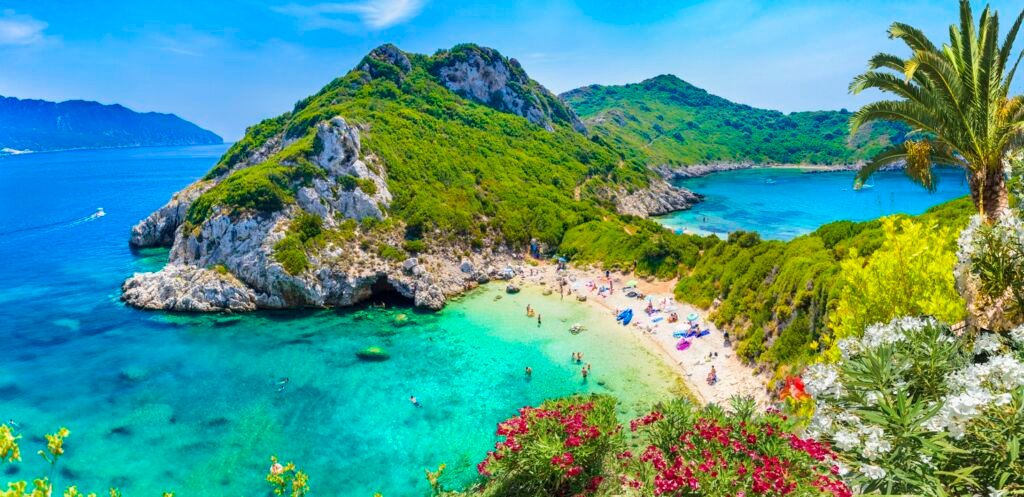
Greece : The Beaches & Landscape
With so many islands, it will come as little surprise to hear that Greece is packed with natural wonders.
The Ionian archipelago is a popular destination for tourists, and one of the best places to see nature’s greatest work. Visit the Melissani Lake Cave on Kefalonia for an other-worldly experience. Situated 20 meters underground, you can explore this magical cave by rowing boat.
The island of Zakynthos has some of Greece’s best beaches, and is a popular destination because of that.
Also named Zante , this island has a lively nightlife scene so is perfect for tourists who want to sunbathe and swim in the day, but dance and drink at night. In fact Greece has some great party spots, like Zante and Mykonos , so if you’re looking for fun in the sun then Greece is a great choice.
Zante is also home to the Blue Caves, a series of underground waterways that wind their way into the coastline.

Of course Greece is packed with many stunning islands, and one of the best things about this country is the ability to island hop and discover your own favourite.
One of ours is Milos , which is where the Venus de Milo was found! This gorgeous little volcanic island has dozens of beaches, breathtaking turquoise waters, and a friendly local population.
Mainland Greece also has some spectacular scenery that has to be explored. The UNESCO World Heritage Site of Meteora in central Greece is one such place that is well worth visiting.
The atmospheric huge rock formations jut out of the ancient landscape there, and sitting on top are centuries-old monasteries. Those monasteries used to be reached by ladders, but can now be reached by foot via stairs. It’s a place which transports you back in time.
In fact mainland Greece is full of fantastic hiking trails – many long distance – that take you between ancient villages that have existed for generations.
One of our favourites is the Menalon Trail , a 45 mile hike in south Greece that takes you between the picturesque mountain villages of Stemnitsa and Lagkadia.

Italy : The Beaches & Landscape
It’s not all cities and museums in Italy, and the north in particular has some fantastic beaches.
The capital of seaside tourism in north Italy is Rimini on the Adriatic coast. It’s famous for its fine sandy beaches and promenade of bars, restaurants, hotels, and nightclubs.
Northern Italy also happens to have some of Europe’s most iconic and beautiful lakes. The stunning Como , Garda , Iseo and the highly underrated Orta lakes are all within easy traveling distance from Milan.
Further north are the hiking and winter sport paradises of the Italian Alps and the Dolomites – possibly Europe’s most easily recognisable mountain range.

The island of Sicily in the south has an attractive climate, historic cities such as Palermo and Catania, miles of fine sandy beaches, vineyards, Greek temples, Roman sites, and gorgeous baroque towns.
Whilst back on the mainland of Southern Italy is Cinque Terre (photo below) – the postcard-perfect collection of ancient villages on the Liguria coastline.
This National Park and UNESCO World Heritage Site receives 2.4 million visitors a year. Why? It’s gorgeous! From north to south the villages are Monterosso, Vernazza, Corniglia, Manarola and Riomaggiore, each with unique character and superb sea views. This is mostly a place for beaches, outdoor activities, and water sports.
Again, it’s the unique towns and cities of Italy that tend to set it apart from other European nations.
The rocky mountainside of Aspromonte National Park in Calabria has the abandoned ghost town of Pentedattilo and a wild untouched landscape that is well worth visiting too.

Stepping away from package holiday resorts and into the cities and towns of Greece and Italy will give you a richer, cultural experience.
Greece: Culture & Cities
Greece may edge the battle with Italy when it comes to natural landscapes thanks to its many islands, but it also excels when it comes to towns and cities with the ‘wow’ factor.
One of the islands which has that in abundance is Santorini .
The two biggest towns There, Fira and Oia, hang on to the cliff-face of this volcanic island, and the buildings within them – whitewashed and often with blue-domed roofs – stand strikingly against the backdrop.
It’s a must-visit place in Greece, but also one of the most popular places throughout the country being visited by around two million tourists per year.
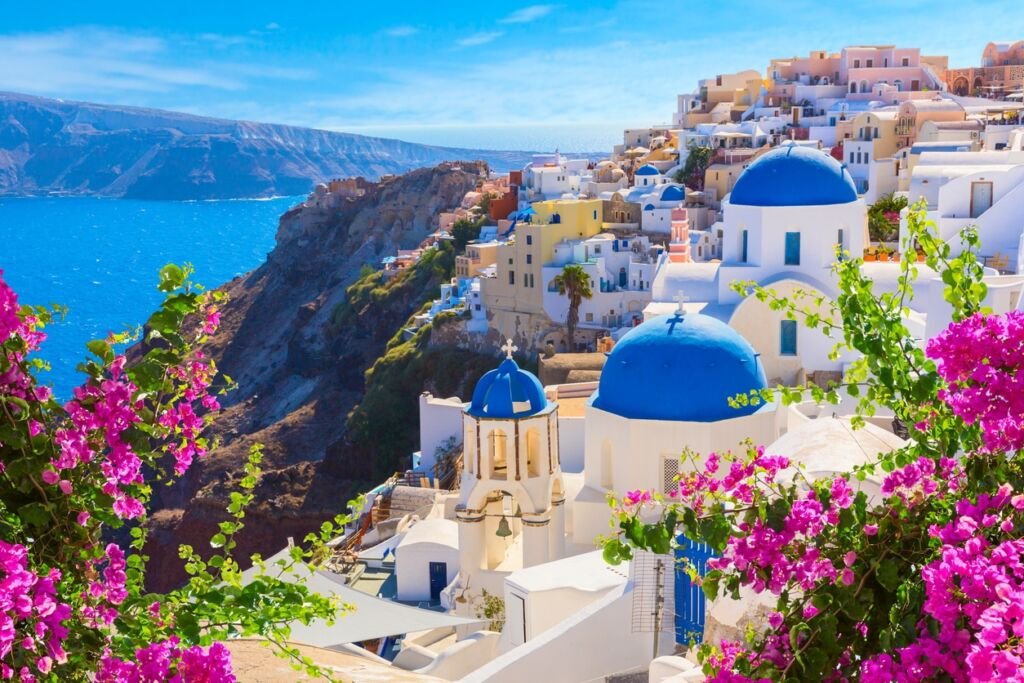
The historic and ancient capital of Athens is well worth a night or two, and is home to iconic buildings such as the 5th century BC Acropolis and Parthenon . The museum at the Acropolis is full of artefacts from Ancient Greece and a must for any history buff.
Situated beside the Acropolis is our favorite area of Athens – Plaka . The quaint streets in this neighbourhood wind their way up hilly slopes and are adorned with flower pots and tiny independent shops selling jewellery and clothes.
With family-run taverns and boutique coffee shops, this is one of the best places in Athens – and Greece – to grab a bite to eat and watch the world go by.
However the title of Greece’s most picturesque town could go to Agios Nikolaos – a little port settlement on the island of Crete.
Surrounded by the sea on three sides, this town has several waterfronts which have a great selection of shopping and dining opportunities. The infamous ‘leper island’ of Spinalonga – which was in use up to 1957 as a quarantine center – is close by and can be visited from the town.
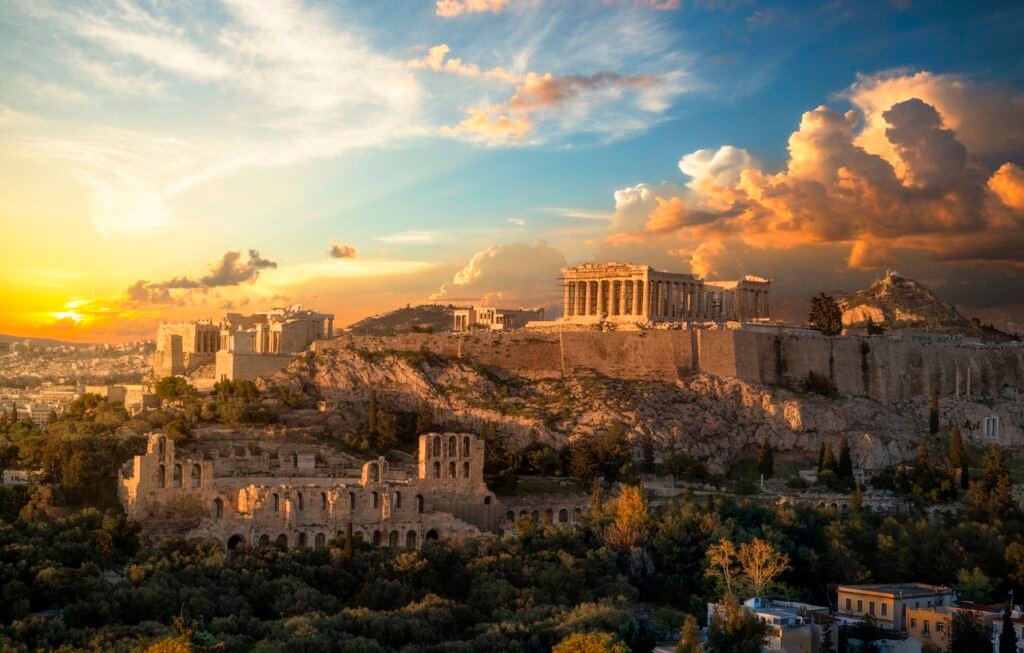
Italy : Culture & Cities
City breaks to Italy are popular throughout Europe due to the cosmopolitan feel, and the perfect mix between old and modern.
But what really separates Italian cities from elsewhere in Europe is that they’re bursting at the seams with culture and you can easily spend a week or two in many Italian cities without getting bored – that’s certainly not the case in Greece.
Bologna is a gorgeous medieval city in North Italy that has thrived with a steady flow of students that has kept this city a vibrant place to visit.
Food lovers can delight in the city’s food festivals like Eataly and a slew of food markets where you can learn more about cuisine. This is also an excellent choice for art, music and Italian film enthusiasts who are all catered for inside Bologna’s galleries and museums.
Face the tourists and head to Venice , but take your time strolling its hidden side streets, canals, piazzas and local shops and cafes. This may just be the world’s most beautiful city.
You can discover a treasure trove of history in Venice’s museums, visit St Mark’s Cathedral and the city’s ornate churches, the exquisite old theatre Teatro La Fenice and the sprawling art museum Gallerie dell ’Accademia . Or take a boat to see the colorful island of Burano .

In the heel of Italy’s boot is the region of Puglia which is home to the charming city of Lecce .
Its streets are perfect for wandering to discover hidden piazzas, beautifully detailed buildings and churches including the baroque Santa Croce .
The city’s main square is Piazza Sant’Oronzo , the site of a Roman amphitheater. And in the evening join in with the local tradition of strolling down the evening passeggiata before dinner. Day trips from Leece include the lovely seaside towns of Otranto and Gallipoli for moreish local flavors.
The cosmopolitan city of Milan is not known for being incredibly ‘Italian’ as it lacks the cobbled streets and ochre buildings that Italy is best known for. However it has a wealth of culture to discover and is great for shopping – another aspect where Italy excels over Greece.
The main sights include the majestic Sforza Castle , the incredibly detailed Duomo where you can climb up onto the roof, and the ornate Galleria Vittorio Emanuele II – a shopping center with beautiful mosaics and designer stores.
Outside of this, the canal area offers chic eateries, all-you-can-eat sushi, street art galore and vintage shops plus bars to enjoy the city’s lively aperitif culture.

The traditional food of Italy and Greece is a Mediterranean cocktail of the various civilizations that have inhabited these nations.
And both are popular cuisines around the world for a reason. So which country you prefer may also come down to personal preferences.
Greece: The Food
Like many Mediterranean cuisines, Greek food involves a lot of fresh vegetables, olive oil, grains, and a good dose of wine!
One of the most famous food exports from Greece is moussaka . This mincemeat and potato or eggplant dish is served everywhere in the country. It’s almost always guaranteed to be excellent in any family-run taverna.
Greece is famous for its dips, such as tzatziki – which is made up of garlic, yoghurt and cucumber – and fava , which is made from split peas.
To wash everything down, you must try Greece’s national drink, Ouzo . This strong liquor is made from aniseed, and is usually served with cold water which turns the clear drink a cloudy white.

Italy: The Food
The eight provinces of Northern Italy all offer unique culinary traditions, influenced by neighboring countries such as France, Austria, and Slovenia. That helps to make Italy one of the best places in Europe for food lovers.
In the Aosta Valley try Fontina cheese , with its milky and sweet flavors. In Emilia-Romagna you’ll come across piadini sandwiches , a flatbread stuffed with cheeses, hams, or salad.
Of course, the north is most famous for prosciutto di Parma (from Parma); balsamic vinegar (from Modena and Reggio); and Parmigiano Reggiano .
Whilst in Venice you should sample Risotto al Neri di Seppi – a risotto flavored with cuttlefish and colored with its black ink.
South Italy is of course the birthplace of pizza! Go to Naples for an authentic classic Margherita pizza and fried pizza calzone style.
The Amalfi coast offers fresh seafood while you sip your Limoncello lemon liqueur – which also tastes good in cake form!
Whilst on Sicily sample Nero d’Avola red wine, a native grape to the island. Just don’t leave without trying the wonderful couscous of Trapani or the pastries of Noto.
Simply put, that makes Italy one of the best destinations on the globe for foodies.

Greece Or Italy: Which is Better?
Which country is the better destination depends entirely on what you want from your vacation.
If beaches are your priority then Greece will be a better holiday choice than Italy. Greece has over 6000 islands, and the coastline is spectacular. It also has great hiking opportunities, and tends to be cheaper than Italy too.
However Italy is perfect for tourists who love exploring cities, and its urban centers are world-renowned for their art, culture, and exquisite buildings.
The opportunities for sightseeing are probably greater in Italy, and the food and shopping scene is better than Greece as well.
Recommended For Your Trip To Greece Or Italy

Related Posts

Crete vs Cyprus An Honest Comparison To Help You Choose

Turkey or Greece: An Honest Comparison To Help You Choose!
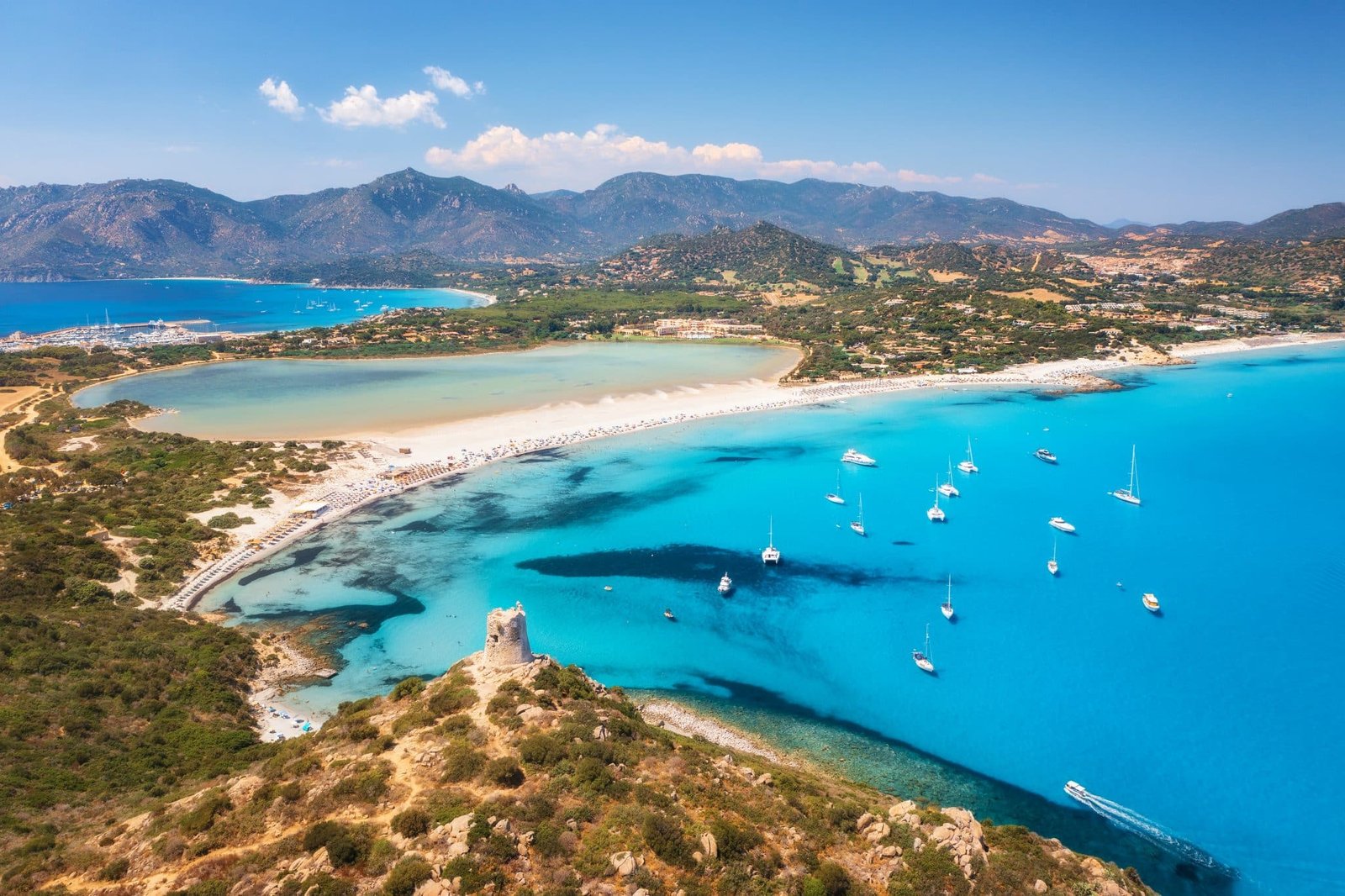
Corsica vs Sardinia: An Honest Comparison To Help You Choose!

Lorem ipsum dolor sit amet, consectetur adipisicing elit sed.
Follow us on
Travel Vaccines and Advice for Greece

Greece’s breathtaking coastlines, pristine architecture and historic influence have attracted travelers from around the world for centuries.
The country is a Mediterranean paradise that boasts something for all who visit. Whether you’re looking to experience a gorgeous sunset off of the Santorini coast or take a tour down the streets of Athens, Greece is the perfect destination!
On This Page: Do I Need Vaccines for Greece? Other Ways to Stay Healthy in Greece Do I Need a Visa or Passport for Greece? What Is the Climate Like in Greece? Is It Safe to Travel to Greece? Seeing Amazing Rhodes What Should I Take to Greece? U.S. Embassy in Greece
Do I Need Vaccines for Greece?
Yes, some vaccines are recommended or required for Greece. The CDC and WHO recommend the following vaccinations for Greece: hepatitis A , polio , rabies , hepatitis B , influenza , COVID-19 , pneumonia , meningitis , chickenpox , shingles , Tdap (tetanus, diphtheria and pertussis) and measles, mumps and rubella (MMR) .
See the bullets below to learn more about some of these key immunizations:
- Hepatitis A – Food & Water – Recommended for most travelers.
- Polio – Food & Water – Due to an increase in cases globally, an additional adult booster is recommended for most travelers to any destination.
- Rabies – Saliva of Infected Animals – Vaccine recommended for long-term travelers and those who may come in contact with animals.
- Hepatitis B – Blood & Body Fluids – Recommended for travelers to most regions.
- Influenza – Airborne – Vaccine components change annually.
- COVID-19 – Airborne – Recommended for travel to all regions, both foreign and domestic.
- Pneumonia – Airborne – Two vaccines given separately. All 65+ or immunocompromised should receive both.
- Meningitis – Direct Contact & Airborne – Given to anyone unvaccinated or at an increased risk, especially students.
- Chickenpox – Direct Contact & Airborne – Given to those unvaccinated that did not have chickenpox.
- Shingles – Direct Contact – Vaccine can still be given if you have had shingles.
- Polio – Food & Water – Considered a routine vaccination for most travel itineraries. Single adult booster recommended.
- TDAP (Tetanus, Diphtheria & Pertussis) – Wounds & Airborne – Only one adult booster of pertussis required.
- Measles Mumps Rubella (MMR) – Various Vectors – Given to anyone unvaccinated and/or born after 1957. One time adult booster recommended.
See the table below for more information:
Specific Vaccine Information
- Hepatitis A – Hepatitis A is a contagious liver infection caused by the hepatitis A virus, typically spread through ingestion of contaminated food or water, or close contact with an infected person. Symptoms include fatigue, stomach pain, and jaundice. The hepatitis A vaccine provides effective prevention against the virus. It is administered in a series of shots, usually starting in childhood, and is recommended for travel to areas with high infection rates.
- Rabies – Preventing rabies involves avoiding contact with infected animals and ensuring timely vaccination. The rabies vaccine is a critical tool, offering protection through post-exposure prophylaxis (PEP) and preemptive vaccination for high-risk individuals like travelers.
- Hepatitis B – Hepatitis B, a liver infection, is transmitted through contact with infected bodily fluids. Prevention includes practicing safe behaviors, but the cornerstone of protection is hepatitis B vaccination. This vaccine activates the immune system, generating antibodies that offer potent and enduring defense against the virus.
- Measles, Mumps, Rubella (MMR) – Measles, mumps, and rubella are contagious diseases transmitted via respiratory droplets and touch. Preventing these illnesses is primarily achieved through vaccination, using the MMR vaccine. It’s administered in two doses and provides immunity against all three viruses.
Outbreaks of routine diseases do happen in some parts of Europe. Make sure your routine immunizations are up to date.
See our vaccinations page to learn more about these infections and vaccines. Ready to protect yourself? Book your travel health appointment today by calling or schedule online now .
Other Ways to Stay Healthy in Greece
Prevent bug bites in greece.
Safeguard against bug bites by dressing appropriately and using EPA-registered repellents with DEET, picaridin, or OLE. If bitten, cleanse the area, refrain from scratching, and mitigate discomfort with OTC treatments. Seek medical aid for serious reactions.
Food and Water Safety in Greece
Abroad, practice food safety by avoiding street vendors, washing hands thoroughly, and choosing well-cooked meals. Opt for bottled or canned drinks with unbroken seals. Prevent travelers’ diarrhea by practicing hand hygiene, skipping raw foods, and dining at reputable establishments.
Altitude Sickness in Greece
When ascending to high altitudes, beware of altitude sickness, which can cause headaches, nausea, and dizziness due to reduced oxygen levels. Preventive measures include gradual ascent, staying hydrated, and possibly using medications like acetazolamide. If symptoms appear, swift descent to lower elevations, rest, and medical evaluation are essential.
Infections To Be Aware of in Greece
- Crimean-Congo Hemorrhagic Fever – Crimean-Congo Hemorrhagic Fever, which spreads through ticks and human-to-human contact, can be mitigated by practicing tick bite prevention. Vaccinations against the disease are in development.
- Leishmaniasis – Infected sand flies are the primary vectors of leishmaniasis. Preventive measures include the use of insect repellents, protective clothing and staying indoors during sand fly peak hours.
Do I Need a Visa or Passport for Greece?
A passport with at least six months’ validity is required to enter Greece. The country does not require a visa for stays under 90 days.
Sources: Embassy of Greece and U.S. State Department
Travelers’ passports must be valid for at least another 6 months beyond their trip. Make sure to have one blank page per stamp available in your passport.
Though no vaccinations are required to enter into the country, some are recommended.
What Is the Climate Like in Greece?
Greece’s most popular tourist destinations have a Mediterranean climate. It is hot and dry summers and mild winters. In Athens temperatures can range from 80 to 90 degrees during the summer months of June to August, with occasional heatwaves reaching up to 105. Winter temperatures are mild, ranging from 50 to 60.
Santorini and Mykonos, two popular Greek islands, have similar climates to Athens. Temperatures during the summer months ranging from 80 to 90 degrees, and occasional heatwaves reaching up to 95. Winter temperatures are mild, ranging from 50 to 60.
Crete, the largest of the Greek islands, has a hot-summer Mediterranean climate with temperatures ranging from 80 to 90 during the summer months of June to August, with occasional heatwaves reaching up to 105. Winter temperatures are mild, ranging from 50 to 60 degrees.
Weather can be unpredictable, and it’s always best to check the forecast before traveling to any destination.
Is It Safe to Travel to Greece?
To stay safe while traveling in Greece, there are a few things to keep in mind. Be aware of your surroundings and pay attention to any potential dangers. Keep your valuables safe by not leaving them unattended and using official taxis.
Be careful when using public transportation and watch out for pickpockets. Follow any COVID-19 guidelines in place. Check for environmental warnings before going out and follow any instructions given by local authorities.
Be respectful of local customs and laws, such as dress codes and not taking photos of military installations. By following these tips, you can help ensure a safe and enjoyable trip to Greece.
Seeing Amazing Rhodes
Avoid an embarrassing stop, over 70% of travelers will have diarrhea., get protected with passport health’s travelers’ diarrhea kit .
Rhodes is a beautiful island in Greece that attracts many tourists. Visitors can explore the Old Town, which is a UNESCO World Heritage Site, and see a medieval castle and historic buildings.
They can also relax on the beaches and try water sports. The Palace of the Grand Master is a museum with exhibitions of Byzantine and medieval artifacts. Lindos is a village with an Acropolis that offers stunning views of the Aegean Sea.
Visitors can take boat trips to nearby islands and visit the Valley of the Butterflies, a nature reserve where thousands of butterflies can be seen in summer.
Rhodes has a rich culinary tradition with dishes such as tzatziki, moussaka, and souvlaki, and local wines like Muscat.
What Should I Take to Greece?
When traveling to Greece, it is important to pack for the climate and region you will be visiting. Greece can be very hot during the summer months, it is recommended to bring light and breathable clothing like cotton or linen shirts, shorts, and dresses. Comfortable shoes like sandals, sneakers, and hiking shoes are a good idea as the streets and terrain can be uneven.
Sun protection is important, so don’t forget to bring sunscreen, sunglasses, and a hat. If you plan to visit coastal areas, don’t forget your swimsuit. Greece is a beautiful country, so a camera is a good idea to capture all the sights.
Make sure to bring an adapter for electronic devices, cash or a credit card that works internationally, and any medications you may take. Insect repellent is also a good idea, especially during the summer months when mosquitoes can be a problem. A comfortable backpack or daypack is recommended for carrying your essentials while exploring Greece’s many attractions.
U.S. Embassy in Greece
The U.S. embassy in Greece offers different services for travelers. They can assist American citizens who are in Greece and give information about traveling to Greece.
If you’re a U.S. citizen in Greece and need help with emergencies, passport or notarial services, the embassy can assist you. They also provide information about Greece, such as entry requirements, safety, local customs, and laws.
If you find yourself in need of help while traveling in Greece, there is a U.S. embassy in Athens.
U.S. Embassy Athens 91 Vasilisis Sophias Avenue 10160 Athens, Greece Telephone: +(30)(210) 721-2951 Emergency After-Hours Telephone: +30 210 729-4444 or +30 210 729-4301 Fax: +(30)(210) 724-5313 Email: [email protected]
The embassy’s website or direct contact is a good source for the latest information on the services they offer.
Ready to start your next journey? Call us at or book online now !
Customer Reviews
Passport health – travel vaccines for greece.

- Records Requests
- Passport Health App
- Privacy Center
- Online Store
- Travel Planning Guide
A Travel Price Comparison for Families, Couples, and Backpackers Greece vs. Portugal for Resorts, Beaches, Families, and Couples

- Pros & Cons
- Museums & Attractions
- Culture & History
- Small Towns
- Scuba Diving & Snorkeling
- National Parks
- Adventure & Outdoor Activities
- Watersports
- Outdoor Activities
- Backpackers
- Transportation
- More time in Greece or Portugal?
- Which is Cheaper, Greece or Portugal?
- What are the cheapest places in Greece or Portugal?
- How can you save money in Greece or Portugal?
- When to Visit Greece or Portugal?
- Weather: Greece vs. Portugal
Should you visit Greece or Portugal?
Which is cheaper to visit which is more expensive for vacation.
Which country should you visit? Read on to compare the activities as well as the prices of travel for Greece and Portugal. We'll break down costs for accommodation, food, transportation and more to help you learn more about these two destinations. Then, you can figure out if either of these two places are accessible based on your travel budget, schedule, and interests. So, let's dig into it.
We'll start with a quick overview, and below we will go into all of the details.
Greece and Portugal are both beautiful countries in Europe that appeal to travelers from around the world. Each country has it's own beaches, towns, and cities as well as unique histories, art, and architecture. The prices in Greece and Portugal aren't dramatically different, but in general you can expect to spend more on a vacation to Greece than you would in Portugal.
Greece is a top tourist destination in Europe and it doesn't disappoint with its many famous islands, fascinating history, and world renowned archaeological sights. Greece is also known for its cuisine and nightlife scene, so whatever your interest, you'll likely enjoy your time in this country.
Greece was once considered a cheap European destination, but those days are gone. The country's popularity with cruise ships and tours mean that the prices have climbed, but it's still possible to visit Greece without spending too much. There are hostels in the larger cities, and if you get away from the major tourist areas you'll likely find some affordable restaurants
Portugal is slightly more affordable than Greece, and it also has a lot to offer visitors. It has a very diverse landscape that includes mountains, beaches, and almost desert like settings. There are vibrant cities like Lisbon and Porto, and natural areas where you can enjoy a more peaceful setting. Portugal has a lot to offer, whether you're interested in hanging out on the beach, sipping some wine, or playing golf.
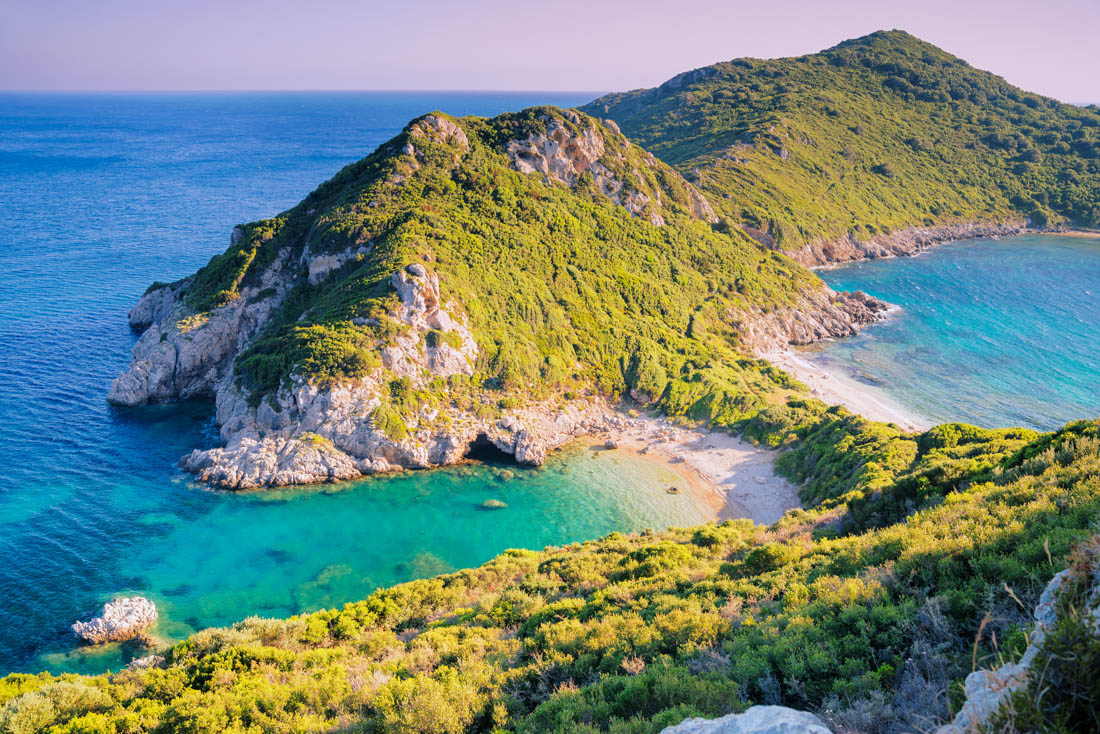
Greece is a coastal, beautiful, and friendly country. You'll find world class beauty here as well. Other popular activities here include food, scuba diving and snorkeling, water sports, and beaches.
Ancient history and beautiful islands combine to form this travel paradise that attracts plenty of tourists every year for a good reason. The historic cities such as Athens along with multitudes of ancient ruins and historic sites allow visitors to explore the ancient roots of democracy and civilization. And if you're looking for beautiful beaches, the hundreds of islands of Greece offer small villages, beautiful coves and cliffs, watersports, boating, and more aquatic adventures.
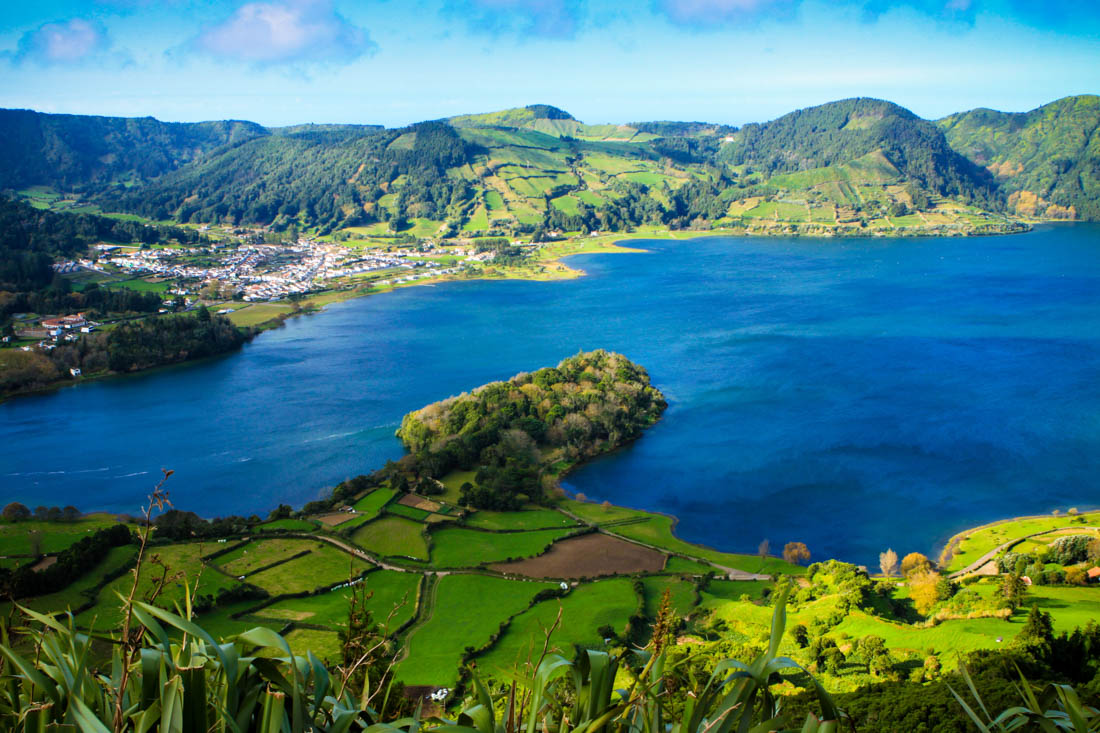
Portugal is a charming, captivating, and coastal country. The famous beauty of this place is one of the main draws. It's also known for mountains, shopping, museums, and theater.
At the western end of Europe, Portugal has a long history of exploration as well as beautiful countryside, gorgeous beaches, and fun cities. Lisbon and Porto are thriving cities with an active nightlife scene, museums, historic cathedrals, and terrific cuisine. And don't forget about the wine which you can enjoy in both the cities as well as in the vineyards of the countryside. In the south, the beautiful Algarve region has a unique coastal landscape with a mix of small towns and resort areas. Inland you'll find beautiful national parks with hiking, camping, and bicycling opportunities. And all along the coastline are small fishing villages along with larger towns rich in history and culture.
Greece and Portugal: Pros and Cons
- Popular museums and historical sights
- Great culture, history, and arts
- Good scuba and snorkeling destination
- Popular beach
- Beautiful national parks
- Great road trips
- Family-friendly
- Good for couples and romance
- Good for backpackers and budget travelers
- Not too many tourists
- Impressive beauty
- Not as many big cities
- Less popular for nightlife
- Less hiking options
- Good nightlife
- Good for hiking
- Not as many national parks
- Crowded with tourists
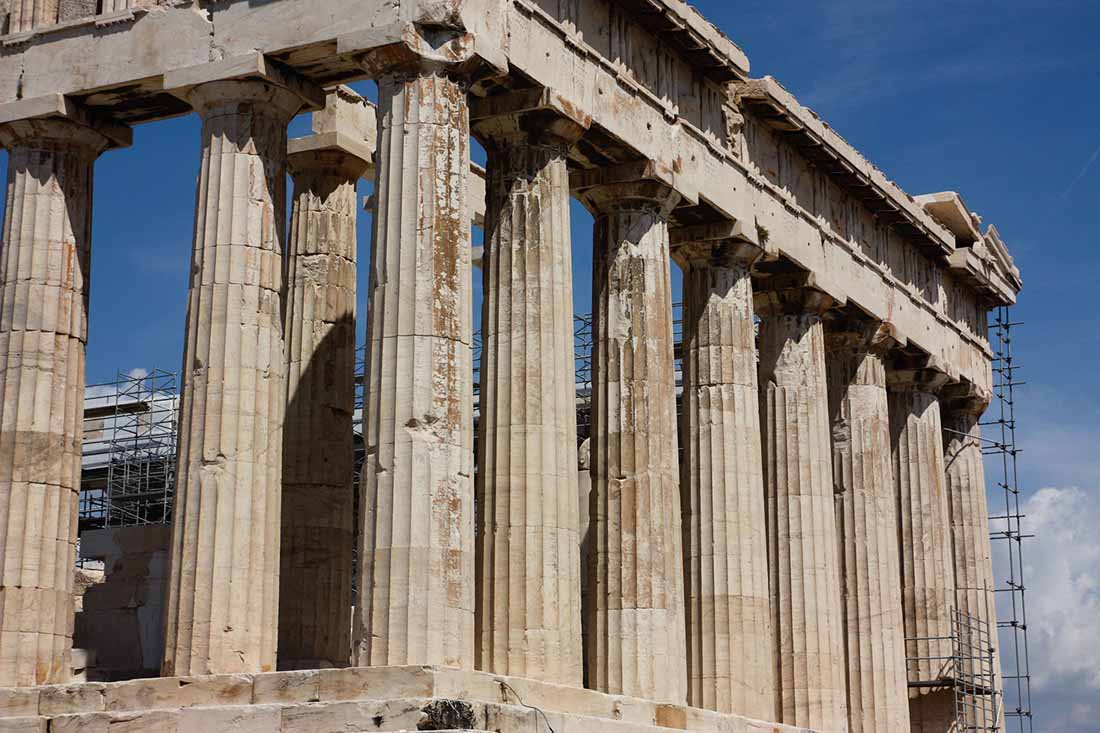
How is Greece different from Portugal?
Which is better for a holiday.
Below we will examine the differences and similarities between Greece and Portugal. With this information, you can decide for yourself which place is better for your next trip.
Are the Museums and Historical Sights Better in Greece or Portugal?
Interesting museums and landmarks can be found in both Greece and Portugal , but many consider Portugal to be a step above.
Visitors can fill many days exploring the museums and attractions around Portugal. The big cities and smaller towns both offer plenty of museums of all types, from art and history to science and family-friendly museums. In Lisbon, don't miss the National Azulejo Museum to see the history and art of these unique glazed tiles. MUDE teaches visitors all about design, while MAAT covers art, architecture, and technology in a way that feels like a modern art museum mixed with modern science. For a local musical experience, check out the Fado Museum, or for international history don't miss the Maritime Museum which is dedicated to the famous Portuguese explorers who set sail across the oceans. Dozens more are found around the city, too. In Porto, don't miss the Serralves Contemporary Art Museum, the Museum of the Holocaust, the Tram Museum, and the World of Wine. This last one is actually 5 different museums focusing on not just wine, but also the agricultural production of wine, cork, and chocolate and their impacts on Portuguese society and history. The Pink Palace is fun for kids and adults alike, as the theme is Rose Wine with a variety of humorous selfie spots. The Chocolate Museum is always a favorite, too. Finally, a variety of port and wine cellars are found on the riverfront which offer museum-like tour experiences to see where and how the wines are made. Elsewhere in Portugal, you should see the astronomical observatory near Monsaraz, the Universo de Memorias Joao Carlos Abreu in Funchal, and the Museu de Portimao.
Lisbon : World renowned landmarks include St. George's Castle, Jerónimos monastery, the Belém Tower, Santa Justa Lift, and countless world class museums.
Greece offers a variety of museums and landmarks to choose from. Most of the country's major museums can be found in Athens, and many of those showcase the fascinating history of the country dating back to classical times. The Acropolis museum and the Archaeological museums are terrific places to learn about the history of ancient Greece. The Byzantine and Christian Museum showcases works from later historic periods as well. If you're looking for art, check out the Basil & Elise Goulandris Foundation which houses works from many famous artists. And the War Museum takes a different perspective as it highlights combat throughout history. Rhodes also has an archeological museum as well as the Palace of the Grand Master, a 14th century Byzantine fortress which is now a museum. The museum of Heraklion in Crete, along with the museum of Olympus and the archeological museum at Delphi provide even more insight into history, and are worth visiting if you're visiting those areas.
Athens : As a historical capital of the world, this city has countless museums and archeological sites including the famous Acropolis, the National Archaeology Museum, and the Ancient Agora.
Rhodes : Many of the villages feel like outdoor museums, with churches and archaeological sites throughout. Some of the most well known sites include the Palace of the Grand Masters, the Hospital of the Knights, Süleyman Mosque, and Roloi Clock Tower.
Delphi : This is one of the most popular archeological sites in Greece. You will find the Temple of Apollo and most of the monuments are dedicated to this God. There is an Ancient Theatre, an Ancient Stadium, as well as an Archaeological Museum. There's also the Sanctuary of Athena Pronea and the Treasury of the Athenians.
See also Athens, Greece: The Ultimate Travel Guide , and The Ultimate Guide to Santorini .
Is Greece or Portugal Better for Culture, Arts, and History?
While both cultures have their own history and culture, generally Greece offers more of this on a visit than Portugal
Greece is known for its world-famous historical and cultural sights and attractions. As the home of one of the oldest civilizations in history, modern Greece offers visitors the chance to explore and learn about a huge number of ancient sites and historical places. Starting in Athens, the Acropolis is the crown jewel of a city dotted with ancient history as well as medieval and renaissance artifacts. Several nearby history museums are worth visiting, such as the Acropolis museum. Outside of the city, even more grand historic attractions await. Mycenae, Meteora, Delphi, Knossos, Kamiros and the Acropolis on Rhodes, ancient Corinth, and other sites all offer glimpses into a variety of historical periods. No matter where you visit in Greece, there's probably ancient ruins nearby, and tours are available almost everywhere in the country.
Portugal is an extremely popular destination for those that want to visit historical and cultural sights and attractions, as it offers plenty. You can see the deep and rich history around every corner, especially along the coastline where historic fishing villages, castles, and famous cities are found. Lisbon and Porto might be the largest cities with museums, fortresses, and historic homes, but plenty of other smaller towns have long history and unique culture, too. Sintra has a gorgeous castle, the Pena National Palace. Coimbra's historic library and university leaves visitors in awe. In Lisbon, check out Belem Tower and St. George’s Castle before wandering the old historic streets of the old town, dotted with churches and quaint viewpoints. Carmo Convent and Jeronimos Monastery are also two very popular sites that draw large crowds because of their beauty and rich history. In Porto, the Luis I bridge provides a great overview of everything before you visit the historic wine cellars, Porto Cathedral, and the narrow, weaving alleyways through the historic city center.
Is Greece or Portugal Better for Big City Activities?
Portugal generally has more big cities and urban activities than Greece.
Since Portugal has large cities, you'll find plenty of things to do. Lisbon and Porto are the largest cities in Portugal, and they each offer a unique atmosphere and vibe. Lisbon was built on seven hills, and you can find one of them topped with a castle overlooking the surrounding area. Much of the old town area is a winding path of streets made out of steps. Cathedrals, museums, restaurants, and a great transportation network are also mixed in. Porto is the wine capital and straddles the river Douro with high bridges and colorful houses. Check out the wine cellars and wine museums along with the historical sights.
Greece has a few big cities with some fun activities. Athens is the only true large city in Greece, and here you'll find plenty of activities. The history here is the main attraction, as the ancient Acropolis anchors a variety of classical historic sites and a variety of museums dedicated to ancient culture. Plenty of restaurants, hotels, cafes, bars, nightlife, and shopping are found in various neighborhoods around the metropolitain region.
Is Greece or Portugal Better for Small Towns and Villages?
Greece offers more villages and small towns to explore than Portugal.
Since Greece offers plenty of small towns and villages with a variety of activities, it attracts plenty of visitors, too. Many of the 227 islands, along with much of the mainland, is home to a large number of quaint small Greek towns, many of which have typical whitewashed buildings, cute harbors, traditional churches, and fantastic local shops and cafes. Some of the best small towns to visit include Oia, Fira, and Imerovigli on the island of Santorini. Here you'll find white buildings with blue domes overlooking the mountainous coastline and clear waters below. Mykonos town is another beautiful place with winding streets, windmills, and fishing boats in the harbor. Corfu town has even more terrific streets with shops and restaurants that line the clear waters just off shore. Parikia on Paros is popular for many of the same reasons described above, as are Chora on Patmos, Rhodes town, and Agios Nikolaos on Crete. Napflio is not far from Athens, has a nice waterfront, and sits next to high cliffs overlooking the sea. No matter where you travel in Greece, you're bound to come across some delightful small towns, so make time to see them.
See also Delphi Travel Guide .
Portugal offers plenty of small towns along with charming sights and activities, too. In addition to the charming towns inland, almost the entire coastline is dotted with charming small towns, many of which were fishing villages in the past. While some of these costal towns have grown into modern beach resorts, others still have their historical charm with nearby churches, castles, and harbors. Many inland towns in the hills still retain their charm, especially those located in beautiful mountain areas. Some of the best places to visit are Sintra with its castle, Marvão in the Alentejo, Amarante in the north, Monsanto with its castle ruins, and Pinhão in the Douro River valley surrounded by vineyards.
Is the Food Better in Greece or Portugal? Which Country Has the Best Restaurants?
Picking the best cuisine and restaurants between Greece and Portugal can be difficult as they are each great in their own way.
With its innovative style combined with traditional elements, Greece makes for a great culinary experience. Visitors will find plenty of traditional dishes when visiting, but also a variety of other European cuisines at restaurants, too. Athens and other large cities offer a solid mix of cuisines as world-class chefs have established restaurants everywhere. In smaller towns and on the islands, you can still expect fresh and delicious meals, although the dishes might not be as diverse. Some popular quick bites include gyros and souvlaki, meatballs knowns as soutzoukakia, and fried tomato fritters. For a more hearty meal, choose the pastitsio, which is a pasta dish with meat and cheese. Moussaka is another heavy meal made from meat, tomato sauce, and eggplant. Seafood is everywhere also, as you might expect. And for something lighter, you can always grab a fresh Greek salad, made with feta cheese, fresh olives, tomatoes, cucumber, and other vegetables. You really can't go wrong no matter which you choose.
Athens : Make sure you try the souvlaki, moussaka, and dolmades at any of the many local restaurants throughout the city.
Crete : Local cuisine is influenced by the island's fertile environment and excellent agriculture. You'll find olive oil in most dishes and seafood is a major staple. You'll also find a lot of stews and recipes that incorporate local ingredients.
Mykonos : Like most things on the island, food is expensive, but its also very good. Make sure you try the louza sausage, kopanisti cheese, and melopita pie.
See also The Best Cheap Wine Tours of Santorini .
Portugal has a huge number of terrific restaurants. As a coastal nation, seafood here is fantastic, but it's not the only type of cuisine available. Popular traditional dishes begin with the small but famous custard tart known as Pastel de Nata. It's easy to get them at bakeries and street vendors. If fish is what you're after, try the bacalhau (salted cod), or any of the other terrific cod dishes such as a bras where it is mixed in with potatoes and eggs in a casserole. It's also popular to have cod (or other fish) fried, sautéed, or boiled along with potatoes and other veggies. Octopus is another favorite which you should try, as it's usually boiled or steamed and served with olive oil and potatoes. If you seek land food, try the Iberian black pork, the duck rice, or the Francesinha , which is a meat and cheese sandwich with an interesting variety of ham and pork. In addition to the traditional dishes, you'll find plenty of other European cuisines in restaurants around the nation, as well as global dishes. So, there's something for everyone. The local breads and cheeses are terrific, and it's quite easy to grab a breakfast at a local bakery or sit down for an affordable, casual, and delicious meal almost anywhere in Portugal.
Lisbon : There are many local restaurants as well as food tours and cooking classes that you can enjoy. Make sure you try the local favorites like bacalhau à brás, frango no churrasco, and pastel de nata. Given the beautiful climate, outdoor seating is also popular. Head into the less touristy neighborhoods to try some local dishes or hit up a seafood market. There are also many cafes that offer great breakfasts with fresh ingredients.
Porto : The area's cuisine combines the ocean setting with the agriculture of the surrounding area, so you'll enjoy both seafood dishes as well as fresh meats and vegetables. The area is also famous for its Port wines and red wines. There are plenty of cellar tours as well was waterfront seafood restaurants to choose from.
Is Greece or Portugal Better for Nightlife?
Party-goers will usually choose Portugal over Greece.
The people in Portugal know how to have a good time. Lisbon and Porto both have very active nightlife scenes. In Lisbon, the city center is full of bars and nightclubs that come alive after the crowds enjoy dinner at a variety of restaurants and cafes. Theater productions are also popular in Lisbon. In Porto, you'll find plenty of activities centered around wine and port, naturally. Also, the city center here has a large number of bars and dance clubs. The downtown area of Porto has seen a significant resurgence of bars and clubs at night in recent years. Other smaller cities, especially around resort areas, can have a vibrant nightlife scene, especially during the busy summer months.
Lisbon : It is a bustling city with a lot of energy late into the night. There are countless bars, clubs, and music venues that cater to every personality type and style. Whether you want a more relaxed vibe or a raging party, there is likely an place for you.
Albufeira : It's probably the most infamous party destination in the Algarve and it won't disappoint. During the peak summer months you'll find the streets around the popular "Strip" filled with tourists and party-goers. There are hen and stag parties, backpackers, and drunken travelers out for a good time. The Strip has become so popular that there are now bars and clubs on the adjacent streets as well. If you're not staying in the area, you'll likely want to take a taxi, as it's a couple kilometers outside of the town center.
See also Lisbon Party Hostels , Beach & Party Hostels in Albufeira, Portugal , and Party Hostels in Peniche, Portugal near the Beach .
Greece doesn't have the most active nightlife scene. Athens has a popular nightlife scene as it's a large and diverse city. You'll find a mix of bars, pubs, nightclubs, theater productions, and restaurants to match whatever type of mood or experience you're looking for. The Gazi neighborhood offers multiple dance clubs that go late into the morning hours. The Monastiraki neighborhood also has a nice mix of bars and clubs, too. On the islands, you'll find mostly smaller towns that offer a handful of bars open late into the evening, but they are around.
Athens : There are all-night dance clubs as well as local bars and chill live music venues.
Mykonos : With many exclusive clubs and bars, this island is among the best for nightlife in Greece. Popular options include Tropicana Club, Scarpa, and Super Paradise Beach Club.
Ios : This is one of the quintessential party islands in Greece. Many young backpackers come here just to party, particularly during the summer months. You'll find many parties start around midnight or later and carry on well into the morning. Most of the clubs and bars are around the main square and nearby streets in Chora, but there are also clubs spread throughout the town. Outside of town, Mylopotas Beach is another popular party area.
See also Party Hostels in Greece (Athens, Corfu, Ios, & Santorini) .
Is Greece or Portugal Better for Resorts?
Greece generally brings in more resort visitors than Portugal.
If you're looking for a fantastic resort destination, Greece is a perfect choice. The natural beauty of the coastline and beaches is a natural fit for a luxury resort here, and there's no shortage of them. All along the coastline visitors can find high-end and mid-range resorts, many of which cater to beach-oriented vacations. Some of the resorts are only for adults and honeymooners, but many are family-friendly. You'll find more resorts on the more popular and expensive islands, and many are located a bit away from the main towns where there's more space. Santorini is famous for their cave-like hotels with infinity swimming pools overlooking the sea down below. Naxos and Mykonos has plenty of family-friendly resorts, as does Rhodes, Corfu, and other beaches on the mainland. Crete has some very nice resorts on secluded coves and harbors, too.
Crete : The island has world class resorts that include pools and buffet meals. There are many beachfront resorts that range in style from romantic to family-friendly.
Santorini : The resorts range from all-inclusive options to resorts with a more local feel. The island is one of the most romantic of the Greek Islands, and the resorts are no exception.
Mykonos : There are many world class luxury resorts on the island that offer a variety of amenities including pools, restaurants, and spas. Popular options include Myconian Avaton Resort, Myconian Imperial Resort and Villas, and Myconian Utopia Resort.
Portugal is known as a popular and fun resort destination. With such a long stretch of coastline, beach resorts are very common. Towns in the Algarve such as Portimao and Albufiera have smaller hotels, but if you travel out of the towns along the coastline you'll find larger beach resorts, some of which are all-inclusive. The same can be said for the smaller towns on the Atlantic coast, where historic fishing villages are mingled with larger resort properties. While some of these larger resorts are adult-only, most are family-friendly, and a range of prices and luxury is offered.
Faro : Popular resorts include Vila Vita Parc Resort and Spa, Conrad Algarve, and Tivoli Carvoeiro.
Portimao : The area has all types of resorts, from all-inclusive options to luxury or more family-friendly. Many of the resorts are surprisingly affordable and offer easy access to the beach.
Lagos : As a resort town, you'll find no shortage of places to stay in the area. If you don't have a car, your best options are in the historic center. If transportation isn't a concern, then you'll find plenty of great resorts in the Marina, Meia Praia, Dona Ana Beach, Camilo Beach, and Porto de Mós Beach.
Is Greece or Portugal Better for Scuba Diving and Snorkeling?
While Portugal and Greece both provide spots for scuba diving or snorkeling, overall Greece is considered to be a more popular choice.
There is a nice variety of marine life that makes scuba diving and snorkeling great in Greece . Most of Greece has clear blue waters that are great for diving and snorkeling, and plenty of terrific diving sights are found around the islands. Some of the best are on the coast of Crete, such as at Skinaria or Elephant’s Cave near Chania. Zakynthos, Corfu, and Mykonos have plenty of great sites, too. Zakynthos is known for a variety of spots with great visibility and a variety of marine life and reefs. Various shipwrecks can be found in the sea as well, such as off the coast of Mykonos, and a seaplane near Naxos. With so many options, diving in Greece is accessible and fantastic.
Kos : There are countless snorkeling sports around the island where you can immerse yourself in the undersea world. Popular snorkeling areas include Camel Beach and Limnionas Beach. Make sure you understand the water conditions before heading into the water.
Portugal has a few good snorkeling spots. The Azores are an island chain to the west of Portugal in the Atlantic, and here visitors will have much better diving and snorkeling experiences. This is generally considered to be one of the best diving regions of Europe. Near Santa Maria Island, for example, divers can see manta rays, tuna, barracudas, and amberjack. The waters are clear and provide excellent visibility. Also, the Madeira Islands are part of Portugal and can be found to the west of Morocco. A number of terrific dive locations can be found here, too, such as those near Funchal. The Algarve coastline offers pretty good visibility in its clear waters, and a variety of dive shops provide boat trips out into the waters during the warmer months. Many spots have wrecks which are worth visiting, too. Some fish and wildlife can be seen in the shallower areas located a bit off of the shoreline. The cities of Lagos, Portimao, and Albufiera have dive centers.
Is Greece or Portugal Better for Beaches?
Greece and Portugal both offer great beaches.
Greece offers stunning beaches that attract visitors from around the world. No doubt, the beaches of the mainland and islands are one of the primary reasons why visitors flock to this Mediterranean country every year. Santorini, Crete, Myknonos, Corfu, Zakynthos, and other islands conjure notions of beautiful coves with clear blue waters surrounded by mountains and cliffs. The mainland itself has a huge number of popular beaches, and some of the best are found in the Halkidiki area. This area of coastline in northern Greece has three small peninsulas with clear water and epic views. In the islands, Naxos is known for its family-friendly beaches, but you'll find plenty of other family options on Crete, Mykonos, Ios, and other islands. Some of the best beaches in general are found on Crete, Corfu, Rhodes, and other islands. But it's hard to decide on just one, as they are all so beautiful.
Crete : There are some of the best beaches in the world on Crete. The areas around Chania have some of the island's best beaches, with one of the most beautiful being Balos. On the northern side of the island, be on the lookout for strong winds, particularly in August, which can make for larger waves. The island is large, so you'll find everything from secluded and quiet beaches to more active and lively places.
Rhodes : The island has spectacular beaches with crystal blue waters. Many of the beaches are sandy with swimming or snorkeling opportunities. The island is also known for its watersports and several beaches are great windsurfing or kite surfing locations. There are countless beaches to choose from but some of the favorites are Tsambika, Saint Paul's Bay, Ladiko, and Kallithea.
Chania : You'll find picturesque beaches near town that have white sand or colored pebbles. The beaches range from urban and crowded to hidden gems, but each has striking blue water and the atmosphere of paradise. Favorite beaches in the area include Balos, Falassarna, and Elafonissi.
Travelers come from around the world to visit the beaches in Portugal . With a huge stretch of coastline, you'll find plenty of fantastic beaches both on the Atlantic coast and the southern Algarve coast. Furthermore, the Azores and Madeira Islands are part Portugal, too, and offer even more terrific beach resort areas. The coastal landscapes are diverse and beautiful. The southern coast around Lagos, Portimao, and Albufiera has beautiful sea cliffs with unique beach coves. Along the Atlantic coast you'll find rocky hills and wide sandy beaches, such as in Praia da Adraga near Sintra or Praia de São Bernardino in Peniche. This seafaring nation has so many great beaches and something for everyone.
Portimao : The stunning beaches are a major draw to the area. They are sandy and feature a backdrop of dramatic red cliffs. The most popular beach in town is Praia da Rocha, which can get crowded during the summer months, but it is quite large so you should still be able to find a spot. The strip behind the beach is lined with shops, bars, restaurants, and a casino. If you want to avoid some of the crowds you can make the walk down to Praia do Vau. Families often enjoy Praia de Alvor, which has a boardwalk that leads to Ria de Alvor nature reserve.
Lagos : The beaches are long, flat and sandy with beautifully dramatic rock formations. The largest beach in the area is Meia Praia and arguably one of the best beaches is Praia Dona Ana. For convenience, Praia da Batata is the closest beach to town. Praia de Porto de Mós is one of the more quiet beaches, but it's still along a bus line. For beautiful nature head to either Praia dos Estudantes or Praia dos Pinheiros.
Albufeira : With their golden sands and blue waters, the beaches are world class. The area also has a diversity of beaches that are perfect for all types of vacationers. For water sports, head to Praia dos Alemaes but for relaxation and catching some rays check out Praia da Falesia. You'll find some interesting rock formations at Praia dos Olhos de Agua. One of the most convenient beaches to town is Praia dos Pescadores. For nightlife you'll want to head to Praia da Oura.
See also The 10 Best Algarve Beaches .
Is the Shopping Better in Greece or Portugal?
Portugal is generally considered to be a more popular shopping destination.
Portugal is a great destination for shopping. Lisbon and Porto both have a variety of shopping neighborhoods as well as malls and street markets. In Lisbon, you can find plenty of shops on the Avenida da Liberdade and the Chiado area. The Feira da Ladra is the best antique and flea market in the city, and is worth browsing through even if you're not planning to buy anything. In Porto, you'll find plenty of shopping along the streets in the historic center and downtown streets on the north side of the river, and more touristy shops on the south side of the river near the wine cellars. Rua de Santa Catarina has plenty of fashion boutiques, while the Mercado do Bolhão has a mix of food, souviniers, crafts, and more. Elsewhere in Portugal, smaller cities and towns will often have main shopping streets, and the beach resort cities will sometimes have fashion boutiques and local craft shops.
Lisbon : For high end shopping, head to The Avenida da Liberdade. It's lined with designer brands and luxury boutiques.
If you're looking to go shopping, Greece has some nice offerings. You'll find the most shopping options in Athens. Ermou street is a pedestrian shopping area with plenty of boutiques and popular brands. Monastiraki square has an amazing flea market where almost anything can be found. You'll find high-end shops in Kolonaki. Most of the tourist towns on the islands have small shopping areas where visitors can buy clothes, local arts and crafts, and souvenirs. Some of the best towns for shopping are Mykonos, Rhodes, the towns on Santorini, and Corfu.
Mykonos : This island has become the playground for celebrities and the wealthy, so there are plenty of shopping opportunities in town.
Rhodes : For a unique shopping experience head to Nea Agora (The New Market), which has a mix of shops and restaurants. You can also pick up fresh produce or pastries there. Sprinkled around the island you'll find many local artisan shops where you can buy ceramics, jewelry, soaps, leather goods, and more.
Is Greece or Portugal Better for Hiking?
Portugal is generally considered to be a better destination for hiking.
Portugal offers some nice hiking trails. Hiking trails are found all over the country, along the coastline and in the mountains in the interior. Hiking along the coast in the Algarve is a unique experience, especially along the Seven Hanging Valleys trail where you'll take on the sea cliffs, caves, and the small coves. Near Lisbon in Sintra-Cascais Natural Park, you can't miss the trail from Cabo da Roca to Azenhas do Mar where you'll see gorgeous beaches, old houses on the hills, and beautiful landscapes. The Serra do Topo trail in the Azores takes you through steep green hills overlooking the ocean, and it's breathtaking. Inland, the Covao dos Conchos trail is found in Serra da Estrela natural park, and here you'll experience scenic mountain vistas.
Many visitors include a hike while visiting Greece. Visitors will find a surprising number of hiking trails in the northern regions of the mainland, especially around the national parks such as Olympus, or historic areas such as Meteora and Delphi. Crete has a wide array of hiking options, too. Samaria Gorge is one of the best hikes, as it takes you through a stunning canyon for four hours. The The larger islands also have numerous hiking trails. On Rhodes, the Hike to the Tomb of Kleobolus is a favorite, as is the Melinda–Paleohori trail on Lesbos. Shorter trails are found all over, many of which follow the coastline and pass through small towns along the way.
Rhodes : The breathtaking landscapes, sweeping views, and beautiful waters make this an amazing hiking island. There are a wide range of trails to choose from with easy, moderate, and challenging options available. The many quaint villages and unique archaeological sites all make this a fantastic place to hike.
Corfu : The stunning natural beauty of the island means you'll find some of the most breathtaking hikes in the Greek Isles. From the lush green rolling hills to the striking blue waters, there are many places to soak up this island's idyllic setting. The island is also rich in plant life and you'll find more than 30 species of orchids here. Popular hiking trails include Vlacherna Trail (good for beginners and families), Mount Pantokrator Trail (the most challenging on the island), and Old Town Hiking Trail which takes you through the history of the area.
Is Greece or Portugal Better for its National Parks?
Most people pick Greece for its national parks over Portugal.
Many visitors go to Greece to see the national parks. Most of the 10 national parks are on the mainland, and one is on the large island of Crete. The parks on the mainland have epic mountain views, wildlife such as wolves and deer, waterfalls and rivers, hiking trails, camping, and more. Olympus national park is home to the highest mountain in the Greece, but it takes a few days to make the summit. Most of highlights of the park can still be visited in just one day, though. Vikos–Aoos has amazing views over and around canyons, lakes, and rivers. Located in western Greece, it does not get many visitors, so this is a nice spot to get away from the crowds. Parnitha National Park, located not far from Athens, is easy to reach on a day trip and a offers terrific escape into nature. Samaria National Park on Crete has a huge gorge, plenty of hiking trails through the forest and hills, and unique native species such as the Cretan goat. All of the parks offer something unique, beautiful, and special for visitors.
If you're interested in the national parks, Portugal has some nice places to visit. While it technically has only one national park, Portugal has a large number of Natural and Nature parks to protect scenic areas and native wildlife. Douro International Natural Park, at the border with Spain, has epic mountainous landscapes as the winding river cuts through deep canyons. On the other hand Ria Formosa Natural Park offers a wide stretch of beautiful coastline to explore. Serra da Estrela is in the mountains, and has hiking trails and great views over the stunning landscapes. Southwest Alentejo and Vicenti Coast is part of the Algarve. It has stunning cliffs, nice beaches, and plenty of outdoor activities. Peneda-Geres National Park is another mountainous park with hiking trails and a unique ecosystem.
Is Greece or Portugal Better for Adventure Travel?
You can find a fairly equal amount of great adventure travel opportunities in both Greece and Portugal .
Greece has some adventurous travel experiences that often attract visitors. Kayaking, sailing, horseback riding, paragliding, hiking, and scuba diving are just a few of the adventure activities waiting for travelers in Greece. Canyoning is also very popular, and a great way to see the rivers and mountains. Evia and Crete both have several canyons and gorges to explore. Rock climbing is also popular, especially in Meteora, known for its famous monasteries. Naturally, sailing, kayaking, and boating are popular around the entire coastline and all of the islands. Hiking is also popular in the mountain areas of the north as well as the larger islands. And horseback riding tours are available in many places, too. Mountain biking is especially popular, and some of the best spots are in the Pindos mountains and the Peloponnese.
The adventure travel experiences in Portugal are worth exploring, even if they are limited to certain areas. Along the coast, surfing is very popular, as some areas of the Atlantic coast have massive waves. Kite surfing and wind surfing are also popular in many areas, too. Inland, you can find mountain biking trails, zip lines and ropes courses, bungee jumping from high bridges, kayaking in the rivers and along the coast, just to name a few. Rock climbing and canyoning area also popular as the landscape offers plenty of great opportunities. Horseback riding along the coast or in the mountains is also a popular way to see the gorgeous landscapes, too. Adventure seekers can find exciting activities almost anywhere in Portugal.
Is Greece or Portugal Better for Visiting the Mountains?
While Greece and Portugal both have beautiful mountain areas, overall Portugal is considered to be better for visitors.
Portugal has some beautiful mountain areas that attract visitors. The interior of the country has plenty of mountain ranges for those looking to explore. Many of the natural park areas are found in the mountains as well, and offer hiking, camping, horseback riding, cozy cabins, and more. The Serra da Estrela range is where you'll find the nation's highest peak as well as a unique ecosystem, a large network of trails (Trilhos Verdes), and beautiful valleys. You'll also find quaint mountain villages with hotels and restaurants where you can relax. Other mountain ranges worth visiting include the Montanhas Magicas (Magic Mountains), the Serra da Freita, and the Montemuro range.
Greece offers some fun activities and attractions in the mountains. The mountains of the northern regions of the country offer plenty of activities such as hiking, visiting national parks, horseback riding, camping, canyoning, rock climbing, kayaking, and more. Olympus national park is home to the famous mountain from classical stories, but plenty of other ranges and parks have even more epic views and fun outdoor activities. Mount Pelion in Volos offers a terrific escape into nature. Also, Mount Parnitha is not far from Athens, and makes for a great day trip.
Is Greece or Portugal Better for Watersports?
Both Greece and Portugal offer a fairly equal range of great watersports for travelers.
Greece is famous for its exciting and thrilling watersports activities. The beaches are only the beginning, and they are fantastic. Snorkeling and scuba diving should also be at the top of anyone's itinerary here, too. Sailing and boating are popular, as it's easy to get some type of short sailing trip or a sunset cruise from anywhere on the coast. Kayaking around the islands or on the inland lakes and rivers is also a fun option. Almost every town on the popular islands offers some type of kayaking tour for a few hours to scenic places, and these tours are perfect for the whole family. Wind-surfing and kite-surfing are very popular on the coastline near Athens, Pelion, the Peloponnese, Crete, and many of the other smaller islands. No matter where you go in Greece, the water will be a huge part of your trip.
With world-famous watersports and marine activities, Portugal attracts many visitors interested in seaside activities marine exploration, and adventure. Surfing is very popular all along the coast. In some areas of the Atlantic coast, you can find some of the largest waves in the world. Kite surfing and wind surfing are also popular, as is kayaking, canoeing, and boating both on the coast and inland on the rivers. The Algarve region in the south is especially popular with kayakers who wish to explore the unique sea caves and cliffs, such as those at Benegil. Scuba diving and snorkeling is also popular in some areas along the southern coast, too.
Is Greece or Portugal Better for Outdoor Activities?
Both Greece and Portugal offer an equivilent number of great outdoor activities for travelers.
Greece is famous for its exciting and adventurous outdoor activities. From sailing to hiking to horseback riding, this country offers something for everyone. Hiking trails are everywhere, as are mountain biking tracks, horseback riding trails, and more. Sailing and boating are very popular, whether for just a few hours or multi-day trips. And don't miss out on a great kayaking or canoeing trip, either. Canyoning is very popular, too. Or, if you're looking for something a bit more relaxing, you can take a trip to see the national parks, scenic islands, and mountains in a casual way with scenic viewpoints and wine tasting along the way, too. A few of the most popular places for getting out into nature are Olympus national park, the islands such as Santorini, Mykonos, and Naxos, or on Crete where there's plenty of room to explore.
See also Nature Destinations in Northern Greece .
With world-famous outdoor activities, Portugal attracts many visitors interested in natural scenery, exploration, and adventure. With a mix of coastline and mountains, visitors will find a diverse array of options here. Hiking and camping in the natural parks is very popular because the mountains offer great views, river valleys, and unique ecosystems. Zip-lining and ropes courses are found throughout the country, and rock climbing or bouldering are commonplace, too. Horseback riding through the mountains or on the beach is also a fun activity, especially for couples. For those looking for something more relaxed, you can take a walk through the vineyards or a jeep tour around the mountain regions.
Is Greece or Portugal Better for a Road Trip?
Greece and Portugal both offer a wide array of great road trip possibilities for your next trip.
Greece is a great place to take a road trip. The northern and mainland regions of the country are ideally suited for a road trip. The roads are in good condition and it's easy to hire a rental car in Athens or any other major city. One popular route is to head west and make a loop around the Peloponnese peninsula, stopping at small towns and historic sites along the way such as Corinth and the stunning southern coastlines. Then, head north into the mountains to visit national parks, Delphi, Mount Olympus, and the beaches of the Halkidiki region near Thessaloniki. If you're staying on Crete, a road trip here is also highly recommended as you'll see the famous gorge, stunning beaches, rolling mountains, and quaint towns along the way.
Portugal is a popular destination to get a car and take a road trip. With a long coastline and gorgeous mountain ranges, plenty of opportunities for road trips can be found here. Take a drive from Porto south along the coast to Lisbon, then keep heading south all the way to the Algarve. Or, just focus on one particular stretch of coastline such as the dramatic cliffs along the southern coastline, or the historic towns and castles on the Atlantic. Inland you'll find natural park areas, mountain ranges, small villages, vineyards and wineries, ancient ruins, adventure sports, and cozy cottages.
Is Greece or Portugal Better for Families?
Both Greece and Portugal are great family-friendly destinations.
With a huge array of activities for kids, Greece is very family-friendly. Greece has plenty of beaches, which always make for a great family trip. And when you combine a trip to the beach with historical sites, local markets, watersports, hiking, and more, then you have a recipe for a terrific family destination. On Santorini and Mykonos, you can find a variety of family-friendly beach areas along with some resorts, too. And the towns offer shops, cafes, and fun activities for the whole family, too. The windmills of Mykonos are a fun sight to see, as are the numerous hiking trails around both islands. On Mykonos, a few of the best beaches for families include Platis Gialos and Ornos. On Santorini, you can take boat rides around the caldera, visit hot springs, and more. Some of the hotels in Oia and Fira have great swimming pools for kids with epic views. Naxos is also considered a great family-friendly island, with nice beaches and plenty of aquatic activities. Agia Anna is one of the best beaches for families, as it has calmer water. Generally, the beaches to the west and south tend to be better on Naxos. Kids also love exploring the ancient ruins of the temples of Apollo and Demeter, and watching the sunset from some of the high vantage points with great views. Other popular islands with plenty of kid-friendly beaches include Corfu, Rhodes, Paros, and Paxos, amongh others. And Crete is huge and offers a variety of towns, resorts, restaurants, and long stretches of sand. And of course, you can't forget about Athens. Here kids will love visiting the Acropolis and Agora, as well as the ancient history museums such as the National Archaeology Museum and Acropolis Museum. You can also take the cable car to the top of Mount Lycabettus and explore the old Plaka area. The Averoff Battleship is pretty cool for tweens, and the Hellenic Children's Museum is always a favorite with the younger kids.
Crete : The island is large and filled with countless family-friendly activities. You can spend several days at the beach, explore Lake Kournas, visit a water park, or even take a pirate themed boat cruise. There's also the amusement park, Labyrinth Park, aquariums and more.
Corfu : Because it is so beautiful with amazing beaches, it makes an ideal destination for kids and adults. There are many places where kids can swim as well as a number of great activities for everyone. The whole family will enjoy glass bottom boat rides, horseback riding, and even a visit to the popular Hydropolis Waterpark. There are also a huge number of kid-friendly resorts around the island.
As it has a large number of activities for kids, Portugal is a very family-friendly destination. Just to get started, you'll have a combination of amazing beaches, historical cities, castles, national parks, mountains, and more. Family-friendly beach resorts in the Algarve offer more than just a beach vacation, as you can also explore the cliffs and sea caves as well as old fishing villages, and even take a dolphin watching cruise. Up the Atlantic coast are more beach towns such as Praia da Costa Nova, Figueira da Foz, or Peniche, all with rich cultural and outdoor experiences. Sintra has castles to explore and public gardens, and the big cities of Lisbon and Porto offer family friendly museums, amazing viewpoints, fun trams, tuk tuk tours, and yummy foods. The interior of the country is home to fun national park and wildlife areas with camping, hiking, and scenic viewpoints. You can also tour monasteries, uncover ancient ruins, and explore old castles that dot the landscape. Kids will love every bit of it.
Portimao : Kids will love the wide range of activities available near Portimao. They can kayak through caves, see an underwater world snorkeling, learn to surf, visit waterparks, explore nature parks, and more. There are activities that the whole family can enjoy, making this stretch of coastline the perfect option for those traveling with kids.
Lagos : You can spend days hanging out on the beautiful beaches, but there are so many other activities that the whole family will enjoy. Explore the caves in kayaks, take surfing lessons, head for the zoo, or go dolphin watching. There are also plenty of playgrounds and kid-friendly restaurants around town.
See also Top 10 Kid-friendly things to do in the Algarve .
Is Greece or Portugal Better for Couples?
Greece and Portugal both great destinations for a couple.
Greece is fantastic couple's destination with fun and romantic activities. A honeymoon in Greece, or perhaps just a week-long romantic getaway, is on the bucket list of many travelers. The large number of beautiful islands make it hard to choose which ones to visit, as many of them are large enough to spend at least a few days exploring. The small towns offer charming narrow streets with romantic bed and breakfasts, cafes, shops, and beautiful views. Or, you could stay at a luxury resort on one of the secluded coves overlooking a fantastic Mediterranean beach. Hiking trails, ancient ruins, snorkeling, kayaking, sunset sailing cruises, and dinner by the sea are also on the list of activities. The most famous and popular islands to visit include Santorini, Mykonos, Paros, Naxos, Corfu, Zakynthos, Kos, Crete, Rhodes, and Milos. However, there are over 200 total islands, and some are larger than others. Santorini has multiple quaint towns to explore, and Crete is very large with numerous towns, beaches, resorts, harbors, and more. Athens and the mainland also offer plenty of romance with history, hiking, mountains, more beaches, museums, theater, and fine dining experiences.
Crete : It's stunning beaches, beautiful landscapes, world renowned restaurants, and amazing resorts make this a top honeymoon spot for international travelers and romance seekers.
Santorini : It is a dream honeymoon destination that is famous for its picturesque setting and luxury resorts. For many couples, this is a top pick for a romantic trip to the Greek Isles.
Mykonos : Couples who enjoy beautiful coastal settings with a great party scene will love a vacation or honeymoon to this Greek island.
See also Hostels in Corfu, Greece for Solo Travellers, Couples, and Small Groups , Hostels in Crete for Solo Travellers, Couples, and Groups , and Hostels in Rhodes, Greece for Solo Travellers, Couples, and Groups .
Portugal makes for a terrific place to visit as a couple. Whether it's a honeymoon or just a weekend getaway, this country offers so many diverse opportunities for a couple's trip. The beach is always an obvious choice for a romantic destination, and you'll find plenty here. The Algarve region in the south has stunning landscapes along the coast with cliffs forming intimate beach coves, as well as hiking trails, fishing villages, and boat rides. Up the Atlantic coast you'll find more beaches with castles, historic towns to explore such as Sintra and Praia da Costa Nova, along with the cultural centers of Lisbon and Porto. These large cities offer amazing food, nightlife, historical tours, old cathedrals, museums, and epic views. Plenty of luxurious romantic hotels and fine dining options await, as does the fantastic local wine selection. More gorgeous inland areas should also be on a romantic itinerary such as Coimbra, the vineyards of the Douro Valley in the north, the mountains of Serra da Estrela Natural Park, and the Valley of Guadiana. It's hard to find such diverse romantic attractions packed into a small country anywhere else in the world.
Portimao : This beautiful stretch of coastline offers unique beaches and stunning outdoor activities. It makes a wonderful honeymoon destination for couples who enjoy adventure, pampering, and romantic resorts. There are great restaurants as well as places to relax or activities for thrill seekers.
Lagos : The beaches and hotels in the area offer a truly romantic setting for couples, whether you're on a honeymoon or a couple's weekend getaway. Spend some time on the beach or go kayaking through the caves. Get a spa treatment at a luxury hotel or go wine tasting through the countryside. You can also enjoy the beautiful sunsets on a sunset boat cruise while sipping a glass of local wine.
Albufeira : For an active honeymoon or couple's retreat, this resort town has it all. Beautiful beaches, adventure-filled activities, a wild nightlife scene, and excellent resorts and restaurants all make for a memorable couple's getaway.
Is Greece or Portugal Better for Backpackers and Budget Travelers?
Greece and Portugal are great places to visit for backpackers and budget travelers.
Backpackers come from all over to visit Greece . Traveling through this country on a tight budget can prove difficult in some places and easy in others. While many of the islands have expensive accommodations and amenities, other islands, as well as the mainland, have many more budget-friendly options. Hostels can be found all across the mainland and on some of the islands, although prices vary by location and season (€30-75 per night). The summer months are the most busy, and therefore the most expensive, so avoiding this season can save you some cash. Food can be found at lower costs if you eat at fast-food style restaurants and cafes, or self-cater from a grocery store. Museum tickets, attractions, and public transit are often low in price, especially in Athens and other more populated areas. To get to various islands, you'll either need to fly or take the more affordable ferry boats. Shop around for the best deals. To save money, it's usually recommended to stay on one or two islands instead of hopping around too much. Besides, you'll need time to see everything that one island has to offer, anyway. For the best values, the cheapest islands tend to be Crete, Ios, Rhodes, Lemnos, and Naxos. The most expensive places are often found on Mykonos, Corfu, Santorini, and the more famous islands that have luxury resorts and high-end shops. Careful planning can save you a lot of money, as it's quite possible to do Greece on a tight budget.
Athens : The city has long been established as a backpackers destination with budget friendly food and plenty of hostels around town.
Ios : For many backpackers, partying in Ios is a quintessential European experience. Nights are spent at all night clubs or beach raves, while days are spent nursing a hangover on the beach. There are plenty of venues that cater to the budget crowd, with cheap food available at different places.
See also The Best Hostels in Athens , Athens Hostels Near the Acropolis , and Hostels for Groups in Athens .
Many backpackers visit Portugal . Fairly affordable by European standards, budget travelers will find plenty of opportunities here to explore the cities and countryside without breaking the bank. Hostels and budget-friendly hotels can be found in the major cities, at the beaches, and in smaller towns. Lisbon and Porto offer plenty of low cost attractions, affordable street food, and cheap transit. The national transportation system makes getting around easy and affordable, too. While some of the attractions have high entry fees, and some of the beach areas have expensive resorts, plenty of alternatives are available if certain spots are beyond your budget.
Lisbon : Hostels are abundant, and you'll have no trouble finding other backpackers to hang out with. Many hostels even organize activities and group meals for travelers. Prices are also reasonable for a large and vibrant city.
Porto : By combining world-class activities with affordability, this city has become a popular stop off for backpackers in the area.
Lagos : The area is a favorite for backpackers who come to hang out on the beaches during the day or party late into the night after the sun goes down. There are plenty of hostels around town and many offer a social vibe where it's easy to meet other travelers.
See also Affordable, Quiet, and Safe Hostels in Lisbon, Portugal , Lisbon Party Hostels , and Lisbon Hostels Near the Train Station .
Is Greece or Portugal Easier for Transportation? Which is Easier to Get Around Without a Car?
Portugal provides more transportation options than Greece.
Public transit in Portugal is fairly effecient and thorough. Since Portugal is not too large, getting around is fairly easy. The train system is very effecient and convenient, and connects major cities such as Lisbon and Porto to smaller towns and coastal resort areas on the Algarve coast and elsewhere. The highway system is also terrific, and long distance bus companies can get you to most places in half a day or so. When in cities and larger towns, the public buses and trams are clean, safe, and affordable, too. Getting around this country without a car is quite easy, although you might want your own vehicle if you're planning to visit some of the natural areas in the interior.
- It's fairly easy to travel by train.
- It's quite common to travel by bus.
- It's fairly easy to travel on cruise ships and excursions.
- It's possible to travel with an organized tour.
- Traveling by car is very common and fairly easy.
- It's possible to travel by airplane.
While Greece offers some public transit options, it might not be your first choice. On the mainland, trains go from Athens to other larger cities. However, they don't go everywhere. Buses can take you to the smaller towns where the trains don't go. To reach the islands, the extensive ferry boat network can take you almost anywhere, but not always on a direct route. The different groups of islands have frequent connections within them. But if traveling from one group to another, you many need to take multiple ferries. Flights are also possible as many of the larger islands have small airports. Renting a car or motorbike on the mainland or Crete is a good way to get around if you want to explore smaller towns and more remote areas. It's also possible to rent vehicles on the larger islands. Finally, take note that many visitors to Greece arrive on larger cruise ships, as many cruise lines visit multiple islands on their routes.
See also How to book Greek Island Ferries , and Greek Island Ferry Tickets .
- It's possible to travel by train.
- It's fairly easy to travel by bus.
- It's very easy and convenient to travel on ferry boats.
- Traveling on cruise ships and excursions is extremely popular.
- It's quite common to travel by car.
Is Greece or Portugal more Comfortable for a Trip?
Both Greece and Portugal are very comfortable to travel around, and offer plenty of amenities for visitors.
Generally, Greece is considered to be a comfortable and luxurious place to visit. While it may sometimes appear a bit more rustic on the surface, Greece is still a modern European nation and offers the same modern amenities and luxuries that any western destination could provide. In Athens, even the most simple budget-friendly hotel will offer the basic modern amenities that are to be expected, and it only gets more luxurious from there. You'll find plenty of mid-range and high-end luxury hotels in Athens as well as on all of the major islands. Plenty of islands have five star resorts, but also budget-friendly places. And again, the cheaper places are still up to western standards everywhere you travel. The roads, public transit, ferry boats, and restaurants all adhere to high safety and quality standards, too, so there's nothing to worry about except for sunburn on the beach.
People often come to Portugal because it is such a comfortable and luxurious destination. As a modern and developed European country, it's very easy to find comfortable places to stay along with easy means to travel around. At any price range visitors will have modern comforts, clean and healthy food, affordable and efficient public transit, and more. While luxury hotels are available which provide every comfort available, even the budget-friendly options have modern conveniences that are expected in a developed nation.
Is Greece or Portugal more Touristy?
Greece is considered to be much more touristy than Portugal.
Greece is known for being extremely touristy. It's safe to say that much of the Greek economy depends on tourism, and as such you can expect to see plenty of other visitors while traveling. However, it's also easy to avoid other tourists, and when at crowded destinations, the crowds still aren't too bad most of the time. In Athens, the Acropolis and Agora, along with the popular historical museums, can see large crowds and long lines during the busy summer months. Many large tour groups and cruise ship passengers arrive almost every day, so you can visit these places earlier or later in the day to avoid these groups. The various islands can also get crowded in the summer. Mykonos, Santorini, Corfu, and Rhodes are common stops for cruise ships, and when in port the towns on these islands can swell with tourists for a few hours during the day. Generally, the beaches on these islands popular island might see plenty of visitors, but they are not too crowded even then. For less crowded beaches, head to the areas of the islands away from the main towns and ports. Also, Crete is very large and offers enough quiet stretches of beach for those that seek them out. The mainland areas away from Athens also have plenty of secluded and low-key beach towns that don't see too many tourists. Either way, don't let the crowds scare you away, as Greece is worth the visit for its beauty and history.
Portugal has a reasonable number of visitors. Some of the most popular places for tourists can attract large crowds, especially the major sites in Lisbon and Porto, as well as some of the more popular beach resort areas along the coast. Otherwise, most of Portugal is easily visited without dealing with large hordes of other travelers, making it quite enjoyable. In Lisbon, you can often expect large crowds at the castle, in the winding stairs through the old town, and at the museums in Belem. In Portugal, the riverfront area and its wineries can get quite busy as the crowds gather for wine tours, visit the shops, and eat at the restaurants along the riverfront. In the Algarve, some of the town centers can be very busy in the summer months, especially Lagos and Albufeira. However, it's easy to find less crowded beach areas along the coastline. Generally, summer is the busy travel season for the entire country, and visiting in the off-season will let you avoid the crowds, and uncover lower prices, too.
For some great organized tour ideas, see The Best Family-Friendly Tours to Greece , The Best Hiking & Trekking Tours in Greece , The Best Historical Tours in Greece , The Best 10-Day Tours in Greece , The Best One Week (7-Day) Tours in Greece , The Best 3-Day Tours in Greece , The Best 2-Week Tours in Greece , The Best Bicycle Tours in Greece , Tours for Outdoor and Nature Lovers in Greece , The Best Coach Bus Tours in Greece , The Best Adventure Tours to Greece , The Best Cruise Tours and Packages in Greece , The Best Sightseeing Tours in Greece , The Best Vineyard & Wine Tours in Greece , The Best Food and Culinary Tours in Greece , The Best Romantic Tours for Couples in Greece , The Best Honeymoon Tours in Greece , The Best Luxury Tours to Greece , The Best Budget Tours to Greece , The Best Tours for Seniors to Greece , The Best Contiki Tours to Greece , The Best G Adventures Tours to Greece , The Best 3-Day Tours from Athens , The Best One-Week (7-Day) Tours from Athens , The Best 10-Day Tours from Athens , The Best 2-Week Tours from Athens , The Best Family-Friendly Tours to Portugal , The Best 10-Day Tours in Portugal , The Best One Week (7-Day) Tours in Portugal , The Best 2-Week Tours in Portugal , The Best Hiking & Trekking Tours in Portugal , Tours for Outdoor and Nature Lovers in Portugal , The Best Bicycle Tours in Portugal , The Best Coach Bus Tours in Portugal , The Best Adventure Tours to Portugal , The Best Sightseeing Tours in Portugal , The Best Vineyard & Wine Tours in Portugal , The Best Food and Culinary Tours in Portugal , The Best Romantic Tours for Couples in Portugal , The Best Walking Tours in Portugal , The Best Luxury Tours to Portugal , The Best Budget Tours to Portugal , The Best Tours for Seniors to Portugal , The Best G Adventures Tours to Portugal , The Best One-Week (7-Day) Tours from Lisbon , The Best 10-Day Tours from Lisbon , and The Best One-Week (7-Day) Tours from Porto .

Should I spend more time in Portugal or Greece?
How long in greece or portugal.
Greece and Portugal both offer a nice selection of activities for visitors. In our opinion, Portugal has more to see and do, so we recommend spending more time in Portugal than Greece . In general, 5-14 days is a good amount of time for Greece, and 3-14 days is enough time in Portugal.
Families should spend more time in Greece than Portugal. Because of the many family-friendly attractions and fun things to do for kids in Greece, it's a great place to visit with the whole family.
Couples should spend more time in Portugal than Greece. You'll find plenty of romantic sights and fun activities in Portugal that are perfect for a weekend getaway or a longer couple's trip.
Backpackers and budget travelers should spend more time in Portugal than Greece if your budget allows for it. With a larger number of budget-friendly sights, good nightlife, and active things to do, anyone traveling on a budget would have a good time in Portugal.
- How many days should I spend in Greece or Portugal? Ideal Length of Stay --> Greece 5-14 Portugal 3-14
A weekend in Greece or Portugal?
Greece is a popular place that is full of things to see and experience. Many visitors spend time at the beach while visiting the area. But since there are so many activities, you'll likely want to spend more than a weekend exploring. Take your pick from the many activities offered here.
Portugal is a great place to explore. With so much to do, a weekend is probably not enough time to see everything. Your budget might influence how long you stay.
Five days in Greece or Portugal?
Greece is a popular choice for travelers. Five days here is typical. While some people choose to spend more or less time in Greece, five days is sufficent for most. The entire region has so many activities, and you'll want time to do everything.
It's hard to know how much time to spend in Portugal. For many, it makes a great getaway for five days. Most people come for the beaches. With all of its activities, you can easily fill five days here. It has many unique tourist attractions and fascinating things to do.
A week in Greece or Portugal?
Greece is a great place to explore. It is common to spend one week here. It's also a great beach destination, too. One week is a great amount of time to relax and see the many things that Greece has to offer. This country offers something for everyone.
Many travelers enjoy the adventure travel, history and culture, and nightlife when visiting the coastal destination of Portugal. This country offers a variety of activities to choose from. Many visitors spend time at the beach while visiting the area. If you have one week, this is a great place to go. This would be the perfect place to spend one week, as it has just the right amount of activities.
Two weeks in Greece or Portugal?
Greece is a great place to explore. It is common to spend two weeks here. It's also a great beach destination, too. While some people choose to spend more or less time in Greece, two weeks is sufficent for most. This country offers something for everyone.
Many travelers enjoy the adventure travel, history and culture, and nightlife when visiting the charming destination of Portugal. This country offers a variety of activities to choose from. Many visitors spend time at the beach while visiting the area. If you have two weeks, this is a great place to go. With all of its activities, you can easily fill two weeks here.
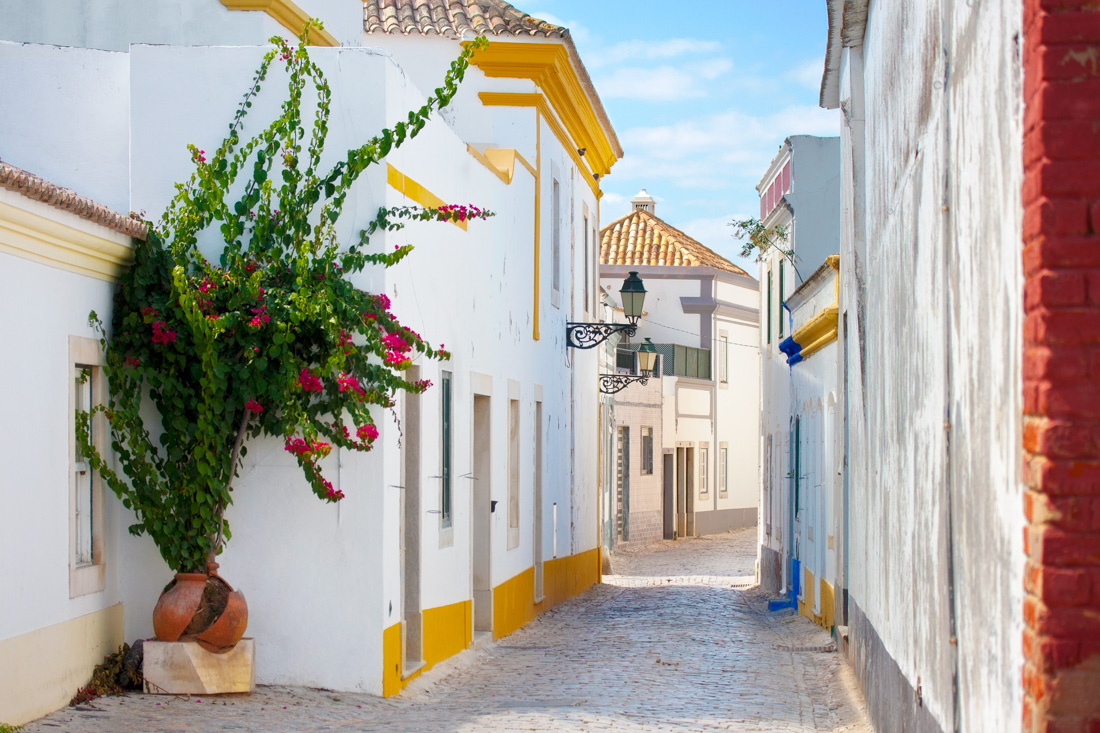
Which country is cheaper, Portugal or Greece?
These are the overall average travel costs for the two destinations.
- Greece Prices Portugal Prices
- Average Daily Cost Per person, per day Greece € 0.00 Portugal € 136
The average daily cost (per person) in Greece is €0.00, while the average daily cost in Portugal is €136. These costs include accommodation (assuming double occupancy, so the traveler is sharing the room), food, transportation, and entertainment. While every person is different, these costs are an average of past travelers in each country. What follows is a categorical breakdown of travel costs for Greece and Portugal in more detail.
Accommodation
- Accommodation Hotel or hostel for one person Greece - Portugal € 59
- Accommodation Typical double-occupancy room Greece € 0.00 Portugal € 118
Compare Hotels in Greece and Portugal
Looking for a hotel in Greece or Portugal? Prices vary by location, date, season, and the level of luxury. See below for options and compare which is best for your budget and travel style.
Hotels in Greece
Hotels in Portugal
Kayak helps you find the best prices for hotels, flights, and rental cars for destinations around the world. Compare prices for multiple destinations when planning your next trip.
Local Transportation
- Local Transportation Taxis, local buses, subway, etc. Greece - Portugal € 27
Typical Local Transportation prices in Greece
Some typical examples of transportation costs in Greece are as follows:
- Airport Bus for Two € 6.40
- Metro € 1.50
- Bus to Paradise Beach (for 2) € 5.60
- Taxi Ride € 7.00
- Cable Car € 8.00
- Metro € 2.00
- Metro from Airport to City Center € 8.00
- Taxi from Airport € 35
- Taxi to Kalafatis € 13
Hired Cars and Shuttles in Greece
Some specific examples of transportation prices in Greece:
- TRANSFER FROM MYKONOS PORT(Cruise Terminal) TO MYKONOS TOWN: $8.56
- Kefalonia: Bus Transfer Between Airport and Argostoli/Lassi areas: $8.72
- Bus Transfer to and from Panormitis Monastery: $11
- Private One Way Rhodes Airport Transfer To or From Rhodes: $12
- Athens: Bus Transfer to/from Argos: $14
- One Way Shuttle Transfer Rhodes Airport to / from Ialyssos-Ixia: $14
- Santorini: Transfer from Port to Airport: $14
- Economy Transfer From / to Airport Santorini: $15
- Santorini: One-Way Transfer to/from the Port or Airport: $15
- Athens: Bus Transfer to/from Nafplio: $16
- Heraklion/Chania Airport: Shared One-Way Hersnissos Transfer: $16
- Santorini: Shared Transfer From Airport or Port to Fira: $16
Typical Local Transportation prices in Portugal
Here are some examples of typical transportation prices from actual travelers in Portugal:
- Taxi Ride € 6.50
Hired Cars and Shuttles in Portugal
Some specific examples of transportation prices in Portugal:
- Funchal, Madeira Cruise Port to Madeira Hotels - Round-Trip Private Transfer: $103
- ) Transfers airport Faro X Sevilla: $91
- Achada to Teixeira to Pico do Arieiro Transfer: $27
- Aiport Transfer from FARO to TAVIRA or CABANAS: $72
- Airport Faro: Transfer to Albufeira: $62
- Airport Faro: Transfer to Armação da Pera: $81
- Airport Faro: Transfer to Burgau: $143
- Airport Faro: Transfer to Cadiz: $669
- Airport Faro: Transfer to Carvoeiro: $87
- Airport Faro: Transfer to Evora: $414
- Airport Faro: Transfer to Gale: $67
- Airport Faro: Transfer to Huelva: $155
Is it cheaper to fly into Greece or Greece?
Prices for flights to both Portugal and Greece change regularly based on dates and travel demand. We suggest you find the best prices for your next trip on Kayak, because you can compare the cost of flights across multiple airlines for your prefered dates.
- Food Meals for one day Greece - Portugal € 40
Typical Food prices in Greece
Below are a few samples from actual travelers for food and meal costs in Greece:
- Two Ice cream Cones € 4.50
- Dinner for Two € 20
- Coffee € 1.95
- Dinner for Two € 23
- Ice cream € 3.00
- Souvlaki € 2.20
Food Tours and Cooking Classes in Greece
Also, here are some specific examples of food and dining related activities in Greece.
- Cooking Demo Class & Lunch at Archanes Village: $20
- Hersonissos: Troy Dinner-Show Theatre Experience Tickets: $22
- Hard Rock Cafe Athens with Set Menu for Lunch or Dinner: $24
- Hard Rock Cafe Athens with Set Lunch or Dinner: $26
- Troy Dinner-Show: $33
- Athens: Street Food Tour Market & City Centre: $42
- Kos: Greek Dinner with Music, Dancing, and Unlimited Wine: $43
- Hersonissos: Alar Spectacular Dinner Show: $43
- Spectacular Dinner-Show: $44
- Discover the local Agro life- Food tour with Cretan Vibes: $44
- All Inclusive Sunset Cruise with Dinner & Unlimited Aperol Spritz, Beer, Wine: $44
- Rhodes Sunset Cruise - Dinner with Live Music set: $44
Typical Food prices in Portugal
Some typical examples of dining costs in Portugal are as follows:
- Pizzaria Lunch (for 2) € 15
- Coffee € 1.40
- Coffee € 2.50
- Lunch for Two € 13
Food Tours and Cooking Classes in Portugal
Also, here are some specific examples of food and dining related activities in Portugal.
- Lisbon: Soirée Rivage - Sunset cruise with dinner and Party: $25
- Hard Rock Cafe Lisbon with Set Lunch or Dinner : $28
- Porto: Pastel de Nata Cooking Class with Grandma's Recipe: $29
- Private Walking Food Tour Around Funchal: $31
- Pastel de Nata Cooking Class in Downtown Porto: $37
- Madeira Nights Tour - Dinner and Show: $42
- Lisbon: Tapas Food Tour: $42
- Madeira by Night with Traditional Dinner: $43
- Porto: Pastel de Nata Cooking Class: $43
- Lisbon: Fado Show and Portuguese Dinner: $48
- Porto: Tastiest Calories Food Tour: $48
- Chanfana: Cooking Traditional Portuguese Cuisine Experience: $49
Entertainment
- Entertainment Entrance tickets, shows, etc. Greece - Portugal € 22
Tours and Activities in Greece
Here are a few actual costs in Greece for available activities, ticket prices, and tours:
- Meouzo Online City Tour: $3.20
- Thessaloniki: First Discovery Walk and Reading Walking Tour: $3.21
- Chania: First Discovery Walk and Reading Walking Tour: $3.21
- Kos: First Discovery Walk and Reading Walking Tour: $3.21
- Athens: Self-guided First Discovery Walk and Reading Tour: $3.21
- Self Guided Tour In Athens With 100 Captivating Audio Stories: $3.26
- Athens: Exclusive Self-Guided Audio Tour into Byzantine Gems: $4.60
- Paros: Self-Guided Audio Tour along Old Byzantine Trail: $4.60
- Delphi: Exclusive Self-Guided Audio Tour in Earth's Navel: $4.60
- Athens: Acropolis Highlights Self-Guided Audio Tour: $4.70
- Traditional Olive Grove and Dragon Fruit Farm Tour: $5.13
- Heraklion's Historical Treasures: A Self-Guided Audio Tour in Crete: $5.20
Tours and Activities in Portugal
Some specific costs of activities, tours, and entrance tickets for Portugal are as follows:
- See Lisbon Through the Eyes of a Local - Free Walking Tour: $1.07
- Porto: City Highlights Guided Walking Tour: $1.07
- Porto Walking Tour - The Perfect Introduction to the City: $1.09
- Lisbon Walking Tour - The Perfect Introduction to the City: $1.12
- Discover Enchanted Sintra: A Fairy-Tale Free Tour: $1.28
- Belém Unveiled: A Free Tour Through the Age of Discoveries: $1.28
- Ultimate Ribeira Walking Tour: $2.60
- Coimbra: City Exploration Game and Tour: $3.21
- Porto: First Discovery Walk and Reading Walking Tour: $3.21
- Coimbra: Self-Guided Highlights Scavenger Hunt & Tour: $3.21
- Coimbra: First Discovery Walk and Reading Walking Tour: $3.21
- The Unvanquished Tour in Porto City Center: $3.26
- Alcohol Drinks for one day Greece € 19 Portugal € 16
Sample the Local Flavors in Greece
Some specific costs for nightlife related activities in Greece:
- Brewery Visit: $7.38
- Corinth: Winery Tour and Organic Fine Wine Tastings: $16
- Liquer tasting in Polykala's Distillery Show Room in Athens: $17
- Corinth Winery Tour and Organic Fine Wine Tastings: $21
- Greek Wine Tasting: $23
- Friday Night Bar Crawl in Thessaloniki: $25
- Santorini: Brewery Tour with Beer Tasting & Optional Meal: $27
- Organic Wine Tasting in Kefalonia: $32
- Heraklion: Wine Tasting Experience at Sommeliers Cottage: $32
- Premium Wine Tastings: $35
- Rhodes: Private Wine Tasting Experience for Beginners: $37
- Corfu: Wine Tasting with 5 native grape varieties.: $37
Sample the Local Flavors in Portugal
Here are a few nightlife and alcohol tours and activities from local tour providers in Portugal:
- Porto: Museu do Vitral Entry Ticket and Wine Tasting: $8.56
- Porto: Port Cellar Visit and Wine Tasting at Fonseca: $11
- Tickets for Port Cellar Visit and Wine Tasting at Fonseca: $11
- Porto: Guided City Pub Crawl with Club Entry: $13
- Algarve: 3 Types of Wine Tastings with Vineyard Views: $14
- Porto: Magic Train Tour and Port Wine Tastings: $15
- Douro Valley: 1h Solar Boat Experience - Two Wine Tasting: $16
- Funchal: H.M. Borges Winery Guided Tour with Wine Tasting: $16
- Lisbon: Port Wine Tasting at Taylor’s Shop and Tasting Room: $17
- Loulé: Quinta da Tôr Winery Guided Tour & Wine Tasting: $18
- Lisbon: Pub Crawl with Unlimited Drinks and VIP Club Entry: $18
- Pub Crawl Lisbon - 1 Hour of Unlimited Beer and Sangria and more!: $19
When we compare the travel costs of actual travelers between Greece and Portugal, we can see that Portugal is more expensive. And not only is Greece much less expensive, but it is actually a significantly cheaper destination. So, traveling to Greece would let you spend less money overall. Or, you could decide to spend more money in Greece and be able to afford a more luxurious travel style by staying in nicer hotels, eating at more expensive restaurants, taking tours, and experiencing more activities. The same level of travel in Portugal would naturally cost you much more money, so you would probably want to keep your budget a little tighter in Portugal than you might in Greece.
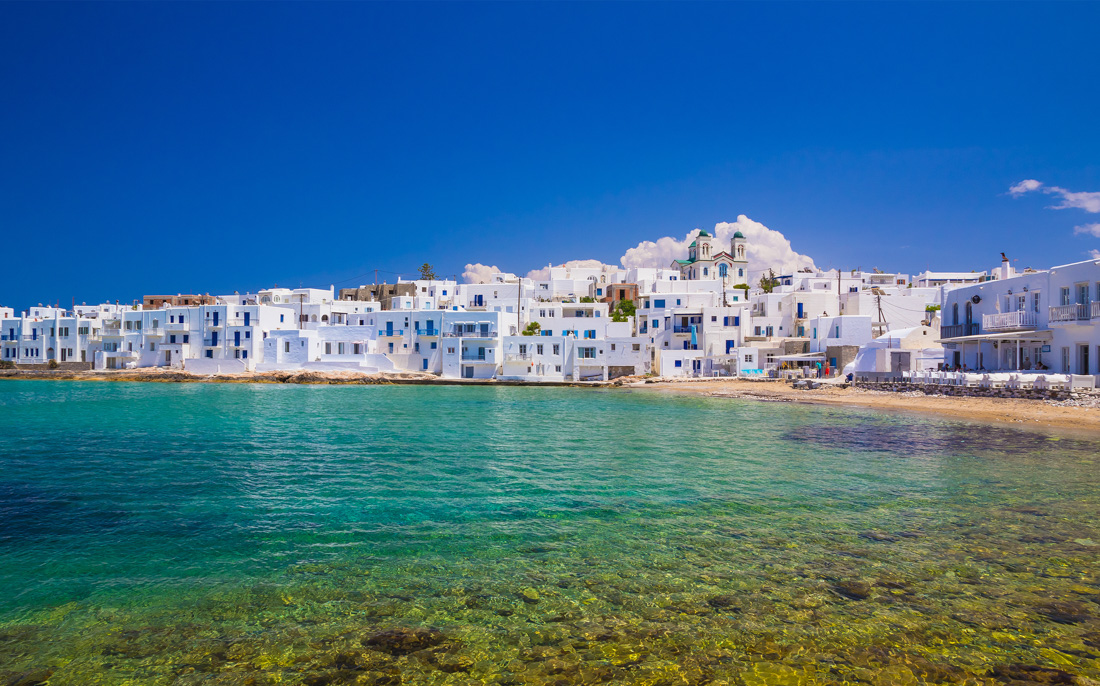
Why is Portugal more expensive than Greece?
Greece and Portugal aren't dramatically different in price, but in general you can expect to spend a bit more in Greece. It's popularity with tours and cruise ships make it a slightly more expensive destination. Many independent travelers to Greece also make use of the ferry system, which can get a bit expensive.
Portugal is one of the more affordable countries to visit in Western Europe. It has a lower cost of living than many places, and there is a wide diversity of accommodation types and restaurants to choose from. Whatever your travel style, there is likely an affordable place to stay that meets your needs. Hostels, hotels, and budget guesthouses are all common throughout the country.
What are the most expensive and cheapest cities and regions in Portugal and Greece?
Greece is a popular travel destination for its beautiful islands and nice beaches. Some of the most popular island destinations, like Mykonos and Santorini, are usually more expensive than Athens. Hotels and hostels on the islands are pricier, as are restaurants. Cruises more frequently visit these islands as well, which can drive up the price of food and shopping. While cruise passengers do visit Athens, the city is quite large, so their impact on pricing is still minimal. Traveling to and from the Greek Isles can also be expensive, increasing the entire price of your trip.
In Portugal, Lisbon and the coastal towns are usually the most expensive places to visit. Prices are subject to seasonal changes in Portugal so if you're traveling during the peak summer months you'll likely to pay significantly more for a room.
How can you save money while visiting Portugal and Greece?
Travel during the shoulder seasons of fall and spring. Prices in both Greece and Portugal are heavily impacted by the season, so choose your timing wisely if you want to get the most bang for you buck.
Only visit a few destinations if you want to save some money. Ferries in Greece can get expensive so limit the number of islands you go to and explore those islands in depth to save some money.
Spend time walking around the city or town you're in. Take advantage of the area's natural beauty and free activities, so you don't spend too much money on entertainment costs.
Stay with a local. It's possible in some places to rent a room in someone's home. This can be a fun and interesting way to experience the country so research your options in advance.
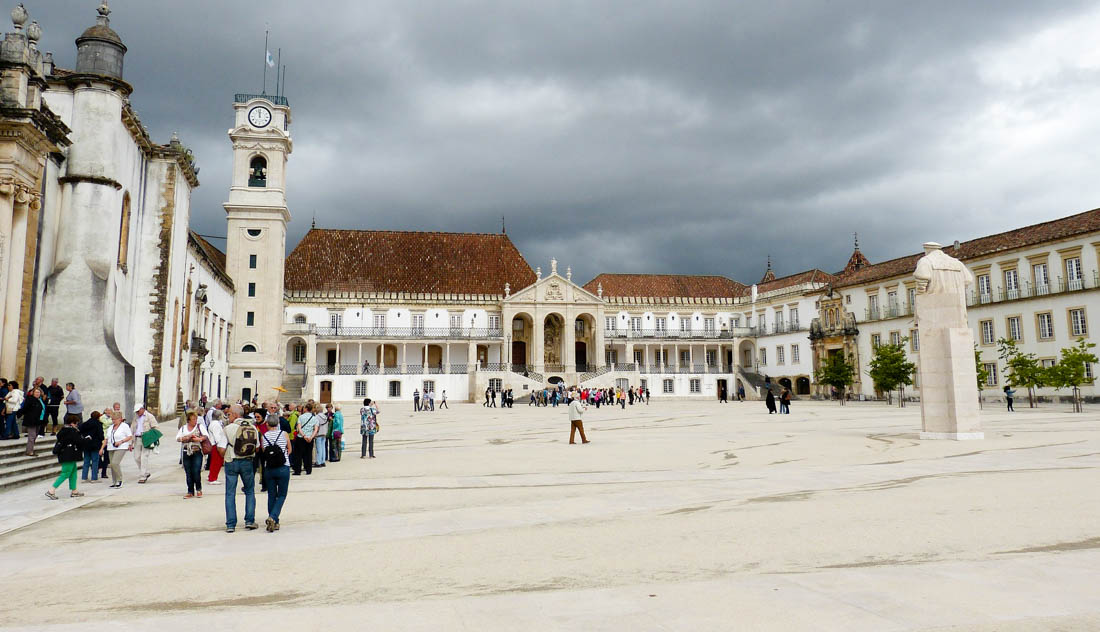
When is the best time to visit Greece or Portugal?
Both destinations experience a temperate climate with four distinct seasons. And since both cities are in the northern hemisphere, summer is in July and winter is in January.
With warm temperatures most of the year, especially in the islands, it's no surprise that so many visitors come here for the weather. The summers are hot and dry, making for a great summer beach trip. Winters in the islands tend to be mild and wet. The northern mountain regions of the mainland can often see snow in the winters, but experience warm weather in summers. Even the spring and autumn see nice weather on the islands.
While most of the country experiences four seasons, the weather tends to be warmer in Portugal than in the rest of Europe, especially along the southern coastal areas. This is one of the reasons why so many people are attracted to the beaches of the Algarve almost year-round. The coastal and inland areas can get quite hot during the summer months. In the colder months, he northern areas see a good bit of rain and cooler weather from autumn through winter and into the spring, with only a touch of snow in the mountain regions in winter.
Like much of southern Europe, both Greece and Portugal are best visited during the late spring/early summer and fall months. If you have some flexibility with timing, it is best to avoid the peak summer months, when the temperatures are hot, the crowds are overwhelming, and the prices are high. Spring and fall offer a cooler and more comfortable time to visit the region. If you do end up visiting either country during the summer months, it is best to make reservations well in advance to ensure the greatest number of options for the best prices.
During the winter months Greece can be a bit difficult to visit because there are far less ferries traveling between islands and many restaurants and hotels close for the season. Also take note that hotels can fill up quickly during the week of Easter, particularly in and around Athens.
Winters are relatively mild in most of Portugal, but the northern areas do experience snow and cooler temperatures. Rain is more common during this time as well.
Should I visit Greece or Portugal in the Summer?
The summer attracts plenty of travelers to both Greece and Portugal. Many travelers come to Greece for the beaches, snorkeling, the hiking, and the family-friendly experiences. Also, many visitors come to Portugal in the summer for the beaches, snorkeling, the hiking, and the family-friendly experiences.
In July, Athens is generally a little warmer than Lisbon. Daily temperatures in Athens average around 27°C (81°F), and Lisbon fluctuates around 23°C (73°F).
People are often attracted to the plentiful sunshine in Lisbon this time of the year. In Athens, it's very sunny this time of the year. Athens usually receives around the same amount of sunshine as Lisbon during summer. Athens gets 357 hours of sunny skies, while Lisbon receives 352 hours of full sun in the summer.
In July, Athens usually receives more rain than Lisbon. Athens gets 6 mm (0.2 in) of rain, while Lisbon receives 5 mm (0.2 in) of rain each month for the summer.
- Summer Average Temperatures July Athens 27°C (81°F) Athens 23°C (73°F)
Should I visit Greece or Portugal in the Autumn?
The autumn brings many poeple to Greece as well as Portugal. Many visitors come to Greece in the autumn for the hiking trails, the shopping scene, and the natural beauty of the area. Also, most visitors come to Portugal for the hiking trails, the shopping scene, and the natural beauty of the area during these months.
Athens is around the same temperature as Lisbon in the autumn. The daily temperature in Athens averages around 19°C (67°F) in October, and Lisbon fluctuates around 19°C (66°F).
The sun comes out a lot this time of the year in Lisbon. People are often attracted to the plentiful sunshine in Athens this time of the year. In the autumn, Athens often gets around the same amount of sunshine as Lisbon. Athens gets 206 hours of sunny skies this time of year, while Lisbon receives 213 hours of full sun.
Athens usually gets less rain in October than Lisbon. Athens gets 48 mm (1.9 in) of rain, while Lisbon receives 80 mm (3.1 in) of rain this time of the year.
- Autumn Average Temperatures October Athens 19°C (67°F) Athens 19°C (66°F)
Should I visit Greece or Portugal in the Winter?
Both Portugal and Greece are popular destinations to visit in the winter with plenty of activities. Most visitors come to Greece for the museums, the shopping scene, and the cuisine during these months. Also, the winter months attract visitors to Portugal because of the museums, the Christmas ambience, the shopping scene, the theater shows, and the cuisine.
In the winter, Athens is cooler than Lisbon. Typically, the winter temperatures in Athens in January average around 10°C (51°F), and Lisbon averages at about 12°C (53°F).
Athens usually receives around the same amount of sunshine as Lisbon during winter. Athens gets 143 hours of sunny skies, while Lisbon receives 144 hours of full sun in the winter.
It rains a lot this time of the year in Lisbon. In January, Athens usually receives less rain than Lisbon. Athens gets 45 mm (1.8 in) of rain, while Lisbon receives 110 mm (4.3 in) of rain each month for the winter.
- Winter Average Temperatures January Athens 10°C (51°F) Athens 12°C (53°F)
Should I visit Greece or Portugal in the Spring?
Both Portugal and Greece during the spring are popular places to visit. The spring months attract visitors to Greece because of the beaches and the natural beauty. Furthermore, the beaches and the natural beauty are the main draw to Portugal this time of year.
In April, Athens is generally around the same temperature as Lisbon. Daily temperatures in Athens average around 16°C (60°F), and Lisbon fluctuates around 16°C (60°F).
In Lisbon, it's very sunny this time of the year. It's quite sunny in Athens. In the spring, Athens often gets around the same amount of sunshine as Lisbon. Athens gets 226 hours of sunny skies this time of year, while Lisbon receives 235 hours of full sun.
Athens usually gets less rain in April than Lisbon. Athens gets 25 mm (1 in) of rain, while Lisbon receives 64 mm (2.5 in) of rain this time of the year.
- Spring Average Temperatures April Athens 16°C (60°F) Athens 16°C (60°F)
Typical Weather for Lisbon and Athens
Related articles for greece, related articles for portugal.

More Destination Comparisons
Subscribe to our newsletter.
By signing up for our email newsletter, you will receive occasional updates from us with sales and discounts from major travel companies , plus tips and advice from experienced budget travelers!
Share This Page
Pin this page.
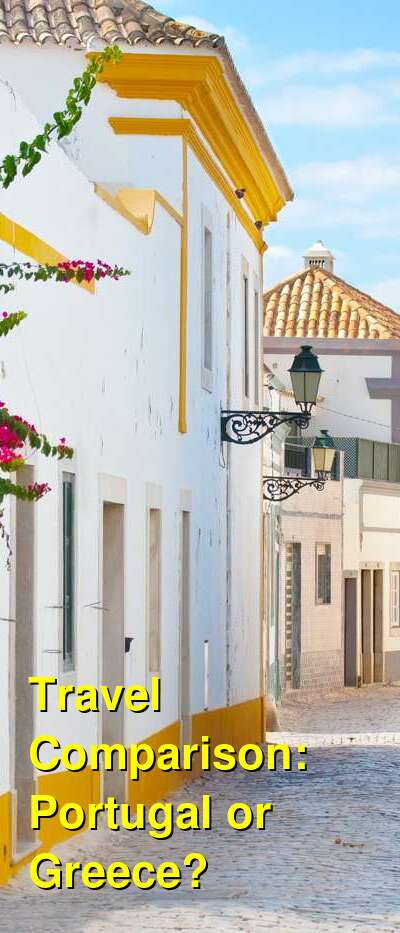
Some of the links on this website are sponsored or affiliate links which help to financially support this site. By clicking the link and making a purchase, we may receive a small commission, but this does not affect the price of your purchase.
- Privacy / Terms of Use
- Activities, Day Trips, Things To Do, and Excursions
Portugal or Greece? Which Country Should I Visit This Year?

Portugal or Greece – it’s not a terribly bad decision to have to make when it comes to that next vacation in Europe , you know. These are two of the most sun-splashed, nature-rich, food-filled, culture-brimming countries out there. They offer everything from postcard-perfect beaches to immersive cityscapes to wild interiors riddled with hiking paths.
But Portugal and Greece are also indelibly different places. They might both be in southern Europe, but one’s in the calm waters of the Mediterranean, while the other spills into the wild Atlantic Ocean. On top of that, they have very different histories, cuisines , traditions, and ways to travel.
Cue this guide. It’s your 101 run-through of whether it should be Portugal or Greece this season. Will you go for the glinting surf beaches of the Algarve and Lisbon’s soaring Moorish castles? Or will it be the idyllic isles of the Aegean Sea and the great monuments of Athens? Let’s get to it…
Table of Contents
Portugal or Greece for ease of travel ing there?

Portugal and Greece are two of Europe’s most Popular travel destinations. Together they get millions (mhmm…millions!) of visitors every year. The upshot? Neither of these will be tricky to get to.
The main access point to Greece is via Athens . There, a huge international airport is served by long-haul connections (including a leg to the major Middle Eastern hubs) and stacks of short-haul links besides. But that’s just the beginning. You couldn’t count the number of smaller airports that exist on the Greek islands on a single hand. They get loads of flights with airlines like Ryanair and easyJet that often run seasonally (between May and October), taking you direct to awesome destinations like Crete, Rhodes, Corfu, and Kos. The more romantic way to arrive in Greece is by boat. Ferries come over from Italy in the west and Turkey in the east. They will take longer than flying but also offer an experience in its own right.
Portugal has two major airports. Lisbon is the biggest and the vast majority of transatlantic flights will go there. However, you might get some US-Euro connections into Porto, often going via the Azores. Faro Airport is the better gateway to the Algarve region, but it’s mainly served by low-cost carriers on a seasonal basis. Lisbon’s answer to the international ferries of Greece is a sleeper train connection with Spain , which means you get a nice eco-friendly way to arrive from cities like Paris and Madrid if you want to do it on the locomotive.
Winner: Draw.
Greece or Portugal for getting around?

With the exception of Madeira and the Azores , Portugal is one contiguous country at the very cap of the Iberian Peninsula. That means you can travel the whole thing by road (and car rentals do tend to be pretty cheap in these parts ) or train and visit many of the top highlights. Normal itineraries will take in the two main historic cities of Porto and Lisbon before finishing amid the beaches of the southern Algarve. The only flights or boats you’ll need to think about are the ones that take you out to the archipelagos in the Atlantic, but we’d say they deserve a whole holiday on their own.
Greece is much trickier to get around than Portugal. The country has a whopping 6,000 islands in all. Only a few of those are inhabited and they are served by a pretty comprehensive ferry network, but getting from A to B often means putting yourself at the mercy of public transport. Of course, chartering your own yacht will solve that, but expect to pay a pretty penny for the luxury of a 40-footer in the summer months. Mainland Greece has a relatively good road network but the geography – lots of mountains and peninsulas – means that travel times are often much longer than they are in Portugal.
Winner: Portugal.
Portugal or Greece for things to do ?

If we had to put together a bucket list for Greece it would probably read something like: Island hopping, see the Santorini caldera , visit the Acropolis in Athens, uncover the ancient sites of Delphi and Mycenae, drive the mountains in Crete, and then finish with a raucous party night in Mykonos or Rhodes. Obviously, it might be hard to fit all that into a single trip, but the point is that Greece has oodles of things to do up its sleeve. We’d say it’s a fantastic option for a whole medley of travelers, from hiking buffs to sailors to foodies. Did we mention that this is one of the most popular places to visit in Europe? Easy to see why, eh?
Portugal also manages to be somewhere that offers loads for loads of different sorts of folks. In recent years it’s risen and risen to rival France as one of Europe’s major surf destinations (check out Peniche or Sagres for that). It’s rich in historical cities (more on those later). It’s blessed with eye-watering beaches, especially down in the Algarve. You can go fishing, hiking wild coast paths, exploring medieval monasteries and UNESCO sites in the mountains – it’s all pretty enticing. That said, we think that the sheer variety that’s offered by the Greek islands tips this one to the Mediterranean.
Winner: Greece.
Portugal or Greece for food ?

Food is going to be a HUGE part of your holiday, no matter if you’re heading to Portugal or Greece. Seriously, these are two fantastically culinary nations…
Portugal is all about rustic, farm-to-table country cooking and Atlantic coast seafood. Those combine to offer hearty meals like salt-cod bakes, steaks in red-wine sauce, and stacked meat sandwiches in cheese dressings ( a Porto specialty ). Fish lovers will probably do best in the south, where the Algarve has countless little villages with family grill houses that serve cuts fresh off the BBQ. Wine buffs will undoubtedly prefer the north. That’s the province of the Douro Valley, where some of the continent’s very finest reds are made and bottled.
Enter Greece. The national cuisine here is a symphony of such simplicity and tastiness that it’s hard not to rush right in and award the winnings right away. Fried saganaki cheese served with fresh lemon, tzatziki with garlic, souvlaki skewers, fresh Greek salads with tomatoes the likes of which you’ve never sampled best, octopus off the coals – there’s a reason it’s legendary! Eating in Greece is done in traditional tavernas. There’s at least one in most villages, but we think the best are under the olive groves a few feet from the Aegean Sea .
Portugal or Greece for cities ?

Portugal opens things with a duo of incredible cities: Porto , in the north, and Lisbon , the capital, roughly midway down the Atlantic coast. We actually think they trump Athens, perhaps not on history, but for pure depth of character. These are towns where you’ll sip cold Sagres beer while watching the sunset over the water, discover tile-fronted churches that ooze Instagram worthiness, and wander cobbled historic districts that never fail to enchant. And it doesn’t end there. Lagos is the Algarve’s jewel, touting an old castle above shimmering urban beaches, while Funchal in Madeira is the home of the Cristiano Ronaldo Museum (a must for footie buffs).
Greece’s cities certainly claim the history. They reign as some of the oldest on the planet, with Athens capping them off. The capital is certainly a bucket list must. It’s crowned by the Parthenon and hosts the ancient Athenian Agora where democracy itself was invented. Other cities worthy of note are Heraklion and Chania on Crete , which have charming old towns and exceptionally ancient history dating back over 3,000 years. Thessaloniki is the northern hub, where there’s an intriguing mix of Byzantine and Balkan character to experience.
Portugal or Greece for nightlife ?

There’s pretty good nightlife in both of these destinations, catering to a whole range of different hedonistic travelers. Towns like Albufeira and Lagos in Portugal are the liveliest resort places in the country . They’re the 18-30s style summer party spots that can rival the big-name party towns of Greece (more on those just below). Each town has its very own strip of bars and bumping dance clubs, often populated with Scandinavian, British, and German youngsters between May and September. On top of that, you get the city nightlife of Lisbon and Porto. The first revolves around the buzzy Bairro Alto and the Baixa de Lisboa district, while Porto is all about the edgy coffee joints and beer bars of Vitória and the port cellars of Ribeira .
When it comes to nightlife in Greece , there are a few select destinations that really stand out from the crowd. Yep, the country has about five or six of the liveliest summertime locations in the Med, which is saying something – the Med is home to Aiya Napa and Ibiza, remember? There’s chic Mykonos , a major LGBTQ+ destination with beach bars that hit the EDM until the early hours. There’s Ios , the major Cycladean party island with its uber-raucous bars. Then you get Malia, in Crete, and Kavos, on Corfu, which are similar towns for 18-30s partiers based around a buzzy strip. We’d also say it’s worth considering Rhodes (for Faliraki) and Zante (for Laganas) – both are pretty wild.
Winner: Portugal. That’s more personal preference because we prefer parties in major cities to dedicated 18-30s resorts.
Portugal or Greece for beaches ?

It’s hardly a secret that a vast proportion of the travelers who head to both Portugal and Greece each year will be going for one thing and one thing only: The beaches. These countries lay claim to some of the finest bays and coves in the whole of Europe. Nope, scratch that – the whole of the world!
Let’s start with Portugal. The southern Algarve probably takes the biscuit here. It’s a land fringed from tip to toe in stunning inlets. In the west they are wide, open stretches of perfectly taupe powder backed by wiggling rivers (check out Praia da Amoreira, for example). The coast changes direction at the rock-spotted beaches of Sagres (a surfer’s mecca) and then runs east to the Spanish border, passing some of the most spectacular beaches of all as it goes: Praia das Furnas, Praia da Boca do Rio, Praia de Dona Ana.
These are the famous golden bays of Portugal, backed by high cliffs and beset by azure seas, but they also aren’t the only places to explore on the coast. We also love the Silver Coast, a long run of beaches that go between Lisbon and Portugal for miles and miles, and the Green Coast, the northern end of the country just before the Galician border.
Still, for all the breathtaking beauty of Portugal, there’s simply no getting around the fact that Greece holds the cards here. Some estimations have it that there are over 6,000 islets in the country . They combine with thousands of miles of mainland coastline to offer more beaches than you could possibly get through in a single trip – or a lifetime, for that matter!
There’s simply no space to list all of the standouts, but we’ll namedrop a few of the ones that have taken our breath away: Elafonisi and Sweet Water Beach on Crete, Shipwreck Bay on Zante (seriously, wow!), the north coast of Milos , pine-dotted Fiskardo Bay on Kefalonia. That should stoke the wanderlust a little. There really is so much to get through, and you’re never more than a few hours from a cracking beach in Greece, even up in the soaring mountains of the north.
Portugal or Greece for nature?

Portugal has a lot more inland than many tourists ever know. That’s because the bulk of people who travel here stick to the coastline. We think the north of the country is especially wonderful. It’s the home of the wonderful Peneda-Gerês National Park, the only national park in Portugal. Head in to find crumpled mountains and crystal-clear kettle lakes where you can wild swim. A touch further south come the Serra da Estrela, where rustic schist villages crown the summits and there are hiking paths around wooded river valleys. The south has gems like Parque Natural do Sudoeste Alentejano e Costa Vicentina, which is rugged coastline hemmed in by wildflower meadows and heather heath.
Greece is drama from beginning to end on the nature front. Soaring mountains that top out at 2,917-meter-high Mount Olympus dominate the mainland, while islands like Corfu and Lefkas have their own mighty ridges that loom above a shimmering Ionian Sea. The Peloponnese is about scrub-dressed highlands, there are Saronic isles covered in pine woods, and then comes Crete, with it’s UNESCO-tagged Samaria Gorge. We really don’t think there’s any beating it…
Portugal or Greece for weather ?

There’s not much in it when it comes to weather. Both Portugal and Greece follow a four-season pattern with a long summer (read: tourist) season in the middle. Things start to heat up in both places around late March, with summer temperature highs easily hitting over 100 F in the hottest months of June, July, and August. It’s also common to see hardly a drop of rain at that time, especially in the southernmost islands of Greece and in the Algarve in Portugal .
Basically, we’d say don’t worry one iota about the weather in either of these places if you’re planning a trip in the summer. However, there are some things we’d say be wary of. Number one: Greece can get strong fall storms known as Medicanes. They usually pull across the Ionian Sea and the central Aegean in early October, so the eastern isles of the Dodecanese could be a better pick at that time. Greece also has strong north-blowing winds in the summer, which are rarely so bad they’ll impact a trip but can be annoying on islands like Crete where most of the hotel resorts are on the windward shore.
When it comes to Portugal, bear in mind that the climate is heavily influenced by the Atlantic Ocean. Crisp, cold days and lots of mist aren’t uncommon in the winter months. What’s more, the time from November to March can be positively cold up in Porto and the northern regions. Portugal also gets considerably more rain than Greece, but that can be avoided by holidaying at peak times (though that will cost a little more).
Winner: Draw. The weather in both of these places is stunning.
The verdict
We wouldn’t hesitate to recommend a holiday to either Portugal or Greece. Both places are, simply, gorgeous. They’re both super warm, have plenty of sunshine to go around, and offer unique history and culture. Generally, Greece is probably better for those who want to laze on the beach or sail the seas, while Portugal has more enthralling cities, better surf, and wilder coastal reaches.
Reece is the creator and editor of Travel Snippet. He has visited more than 38 countries over a 10-year period. His travels have taken him through the majestic mountains of Italy, into the cities of central Europe, across the islands of Indonesia, and to the beaches of Thailand, where he is currently living. He is passionate about travel and shares his expertise by providing the best travel tips and tricks to help you plan your next adventure.
Related posts

Where To See Bears In Europe: 7 Best Bear Watching Spots
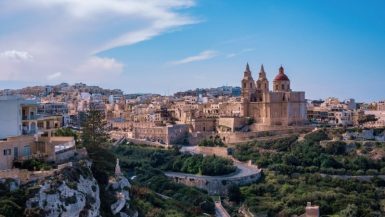
Malta or Greece: Which Mediterranean Country To Visit?

The 7 Best Places To Sail In The Mediterranean This Year
- Favorites & Watchlist Find a Cruise Cruise Deals Cruise Ships Destinations Manage My Cruise FAQ Perfect Day at CocoCay Weekend Cruises Crown & Anchor Society Cruising Guides Gift Cards Contact Us Royal Caribbean Group
- Back to Main Menu
- Search Cruises " id="rciHeaderSideNavSubmenu-2-1" class="headerSidenav__link" href="/cruises" target="_self"> Search Cruises
- Cruise Deals
- Weekend Cruises
- Last Minute Cruises
- Family Cruises
- 2024-2025 Cruises
- All Cruise Ships " id="rciHeaderSideNavSubmenu-4-1" class="headerSidenav__link" href="/cruise-ships" target="_self"> All Cruise Ships
- Cruise Dining
- Onboard Activities
- Cruise Rooms
- The Cruise Experience
- All Cruise Destinations " id="rciHeaderSideNavSubmenu-5-1" class="headerSidenav__link" href="/cruise-destinations" target="_self"> All Cruise Destinations
- Cruise Ports
- Shore Excursions
- Perfect Day at CocoCay
- Caribbean Cruises
- Bahamas Cruises
- Alaska Cruises
- European Cruises
- Mediterranean Cruises
- Cruise Planner
- Make a Payment
- Beverage Packages
- Shore Excursions
- Dining Packages
- Royal Gifts
- Check-In for My Cruise
- Update Guest Information
- Book a Flight
- Transportation
- Book a Hotel
- Required Travel Documents
- Redeem Cruise Credit
- All FAQs " id="rciHeaderSideNavSubmenu-7-1" class="headerSidenav__link" href="/faq" target="_self"> All FAQs
- Boarding Requirements
- Future Cruise Credit
- Travel Documents
- Check-in & Boarding Pass
- Transportation
- Perfect Day at CocoCay
- Post-Cruise Inquiries
- Royal Caribbean
- Celebrity Cruises
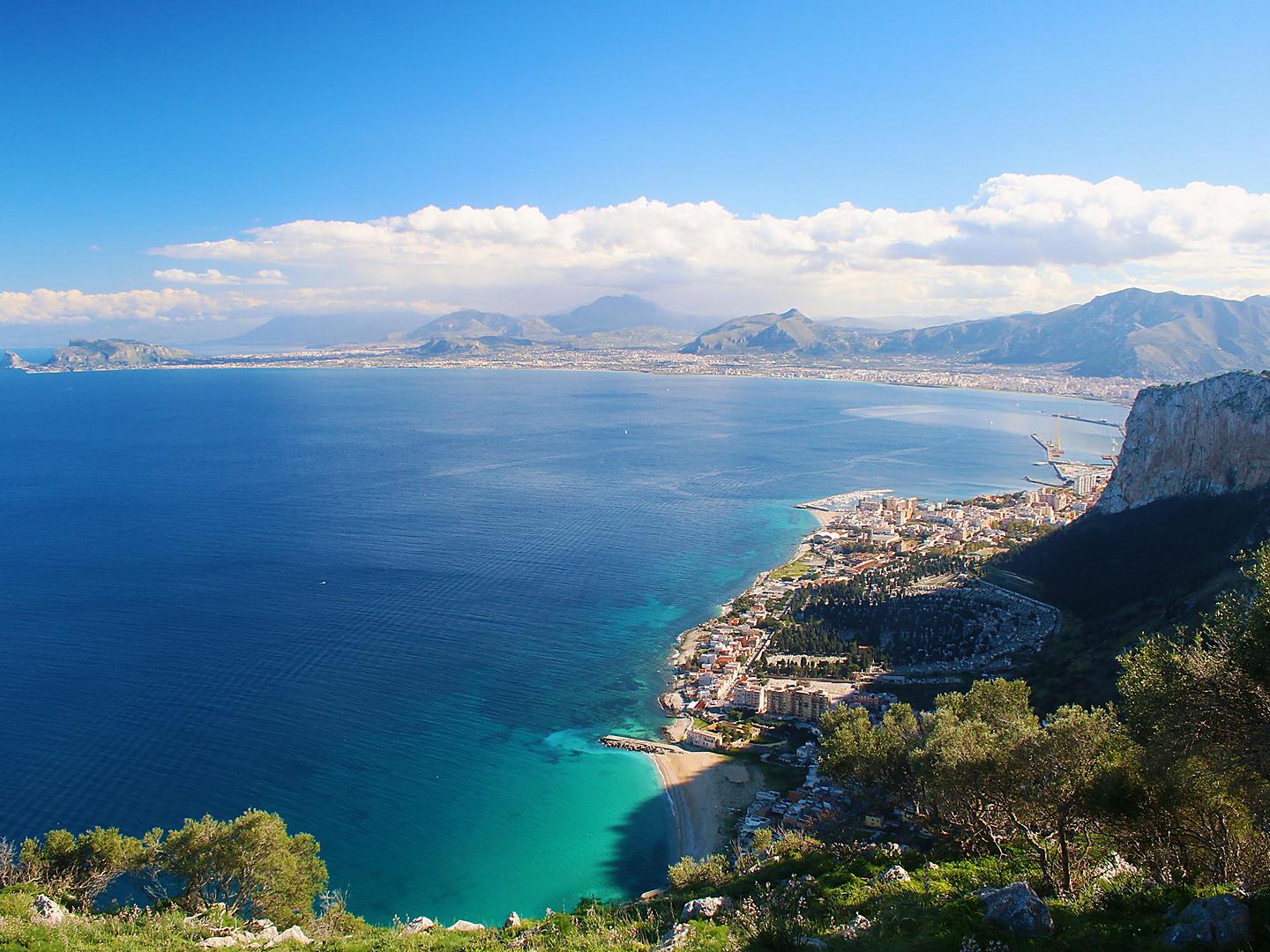
7 Night Greece & Spain
Your ship voyager of the seas.

DISCOVER ADVENTURE ON EVERY DECK

Typhoon℠ and Cyclone℠

Teen Spaces

FlowRider ®

Adventure Ocean ®
Gourmet globetrotting.

Chops Grille℠

Giovanni's Table

Chef's Table
Shows that hit every high note.

Broadway Rhythm & Rhyme

Ice Skating Shows

Schooner Bar
Day 1: athens, greece.

Take Me to Church

Mediterranean Romance

Boats and the Bronze Age

Local Cuisine

Day 2: Mykonos, Greece

popular Shore Excursions
Amazing experiences coming soon..

COASTAL COSMOPOLITAN

INTO THE BLUE

DIG UP THE PAST

LOCAL CUISINE

Day 3: Santorini, Greece

VOLCANIC WONDERS

IT TAKES A VILLAGE

THE GLASS HALF FULL

Day 4: Cruising

The Perfect Storm℠

Ice Skating
Day 5: sicily, italy.

The Pulse of Palermo

Drama at the Opera

Between Earth and Heaven

Day 6: Cruising

Main Dining Room

Café Promenade
Day 7: valencia, spain.

Arts and Carafe

Go to Market

Day 8: Barcelona, Spain

SKY HIGH DELIGHTS

SEAS THE DAY

- International edition
- Australia edition
- Europe edition

Prison release of Golden Dawn founder angers Greek anti-fascists
State prosecutor reportedly opposed release of neo-Nazi Nikos Michaloliakos four years into 13-and-a-half-year sentence
The unrepentant founder of Greece’s neo-Nazi Golden Dawn, who insisted followers addressed him as the Fuhrer, has been released from prison four years into a sentence of 13 and a half years, having been convicted of operating a criminal organisation that posed as a political party.
Nikos Michaloliakos, a Holocaust denier and admirer of Adolf Hitler, was allowed to return to his home in Athens this week although his “conditional discharge” was only made public on Thursday.
The news sparked fury among members of the country’s anti-fascist movement. “It’s a scandalous decision,” said Petros Constantinou, the chief coordinator of the front, known as Keerfa. “It did not need to happen and will give the green light to fascists to regroup and continue attacks ahead of the European elections.”
He said operatives of the far-right, ultra-nationalist party still ran branches in Thessaloniki despite it being officially disbanded.
Michaloliakos, an anti-vaxxer who spent a large part of his imprisonment in a rehabilitation clinic after becoming seriously ill during the coronavirus pandemic, was sentenced at the end of a landmark trial to 13-and-a-half years in jail for crimes ranging from violent attacks on immigrants, to weapons offences and the murder of an anti-fascist musician.
Greek media reported his release application had been vigorously opposed by a state prosecutor. The magistrate had argued that despite meeting the criterion of serving three fifths of his jail term, once pre-trial detention was taken into account, the 67-year-old showed no remorse for his actions and should not be set free.
The discharge, agreed by a judicial council in the central town of Lamia, stipulated that Michaloliakos was banned from fraternising with other far-right activists and would have to present himself at a local police station once a month. He was also forbidden from leaving the greater Athens region of Attica.
Golden Dawn rose to prominence during Greece’s near decade-long debt crisis, drawing support from segments of the population who were hit hard by austerity measures that successive governments were forced to enact in exchange for bailout loans from the EU and the International Monetary Fund. At the height of its power, the extremists were the nation’s third-biggest political force, with 18 seats in parliament.
Golden Dawn hit squads sowed such terror on the streets the party was branded Europe’s most violent neo-fascist group. Gangs, often riding motorbikes, dressed in black and wielding batons, knuckledusters and worse, actively sought out and targeted enemies, real and perceived, starting with immigrants and leftists.
Tellingly, far-right parties elsewhere steered clear of the Greek neo-Nazis.
Analysts expressed surprise at the speed with which Michaloliakos’ request for release had been handled. The disgraced leader returned home as the Greeks marked Holy Week, in the run-up to Orthodox Easter this weekend.
after newsletter promotion
“What needs to be asked is whether the criteria that would apply for any other leader of a criminal organisation were applied in this case,” said Kostis Papaioannou, the director of Signal, a research centre tracking the far right. “There’s not a chance in a million that if Michaloliakos were a convicted leader of an armed group of the far left he would be freed like this.”
The move came days after Greece’s supreme court banned another extremist party, the Spartans, from contesting next month’s European elections, arguing the organisation, which has 11 MPs, “aims at the weakening and demise of the democratic political system, particularly through the use of violence or incitement to violence”.
Several of its deputies face charges of electoral fraud, with the fate of the Spartans’ parliamentary group expected to be decided soon by a special court.
“As in other European countries, the far right and its political ideas are gaining traction in Greece,” noted the veteran leftwing author and Golden Dawn expert Dimitris Psarras. “But Golden Dawn does not have any real power or political expression and Michaloliakos is a spent force. His release does not spell danger for Greece.”

Media freedom ‘perilously close to breaking point’ in several EU countries
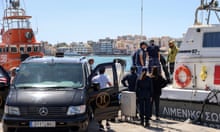
EU asylum and migration pact has passed despite far right and left’s objections

Greek Orthodox church calls for excommunication of MPs after same-sex marriage vote

Greece becomes first Orthodox Christian country to legalise same-sex marriage

Courts reprimand Spain, Greece and Hungary over treatment of child asylum seekers

Greece found to have violated Syrian refugee’s right to life by firing on vessel

Greek PM faces fierce opposition over pledge to legalise gay marriage

Greece to legalise papers for thousands of migrants to counter labour shortage

Erdoğan hails ‘new era’ of friendship with Greece on historic visit to Athens

Leftwing faction splits from Greece’s main opposition party, Syriza
Most viewed.
- Share full article
Advertisement
Supported by
Greece Announces New Plan to Protect Some of Its Pristine Beaches
The government has pledged to crack down on rapid development, and on seaside businesses seeking to take advantage of a tourist boom. But some residents and conservationists are unimpressed.

By Niki Kitsantonis
Reporting from Athens
The Greek government on Friday published a list of 198 “untrodden beaches” that it said are now off limits to bars, restaurants and large public gatherings in its latest attempt to contain development and address the backlash to the throngs of tourists that descend on the country’s coastlines each year.
The move comes amid growing frustration among residents of Greek islands and parts of the coastal mainland that are popular with foreign visitors. Protests ballooned into a nationwide “beach towel movement” last summer as disgruntled locals complained that they were being pushed off their own beaches by businesses seeking to take advantage of a tourist boom that brought more than 32 million foreign visitors to Greece last year .
On the country’s Cycladic islands, local residents joined forces with the authorities to push back against a wave of construction .
Greece’s conservative government has pledged to crack down on the development, and on seaside businesses that violate regulations. In February it passed a law aimed at regulating the use of the country’s coastline, imposing penalties of up to 60,000 euros for businesses occupying more than 50 percent of Greek beaches with umbrellas and sun beds.
Critics said the law did not go far enough to curb the problem, with some claiming that the government was perpetuating the issue by not tackling illegal land use more comprehensively.
The list of “untrodden beaches,” unveiled in a joint agreement between Greece’s finance and environment ministers, is part of a broader effort to restore balance, the government said. “The main goal is to combine environmental protection with sustainable development,” Kostis Hatzidakis, the economy and finance minister, said on Friday.
“The environment is a valuable component of the Greek tourist product,” he said.
Under the new initiative, the government was putting public assets “under a strict framework of rules, penalties and obligations,” Mr. Hatzidakis said. Inspections and transparency would be increased, as would “the enforcement of the law,” he added.
The beaches on the list are in areas included in the European Union’s Natura program, a network of vulnerable habitats across Europe that are protected under European law. Among the beaches listed on Friday are spots on popular islands such as Milos, Naxos, Lesbos, Samothrace and in the southern Peloponnese peninsula.
The islands were selected based on the advice of the country’s Natural Environment and Climate Change Agency and are all “areas of high ecological importance,” Theodoros Skylakakis, the environment and energy minister, said on Friday.
Under the new initiative, no section of those beaches can be auctioned off for commercial use, and the presence of sun-loungers and umbrellas will be prohibited, as will the organization of public events involving more than 10 people.
Another initiative being introduced by the government is a new app called “MyCoast,” on which people can report violations.
Some environmentalists in Greece were not impressed by Friday’s announcement. Eleni Andrianopoulou, a resident of Naxos and a member of a local “Save the beaches” group, said the government’s original plan had been for more than 1,000 beaches nationwide to be covered, adding that Natura areas require “real protection.”
“From the beginning we had stressed that this reform for untrodden beaches was a fraud.”
Demetre Karavellas, director of the World Wildlife Fund Greece, said the authorities were jumping the gun with their list of pristine beaches, noting that there are more than 100 marine and coastal areas in Greece that are recognized by the Natura program but have yet to be effectively managed or conserved.
“The government should start by complying with its basic legal obligations before creating new vague categories of protection,” he said.
Niki Kitsantonis is a freelance correspondent for The Times based in Athens. She has been writing about Greece for 20 years, including more than a decade of coverage for The Times. More about Niki Kitsantonis

IMAGES
VIDEO
COMMENTS
This is a must-visit place in Greece, but also one of the most popular spots throughout the country being visited by around two million tourists per year! ... Recommended For Your Trip To Greece Or Spain. Greece, Spain. Share. previous post. next post. Related Posts. Crete vs Cyprus An Honest Comparison To Help You Choose.
Spain offers more urban activities, and abundant wildlife, perfect for adventure travel. Greece offers a laid-back vacation with most activities centering around island hopping and visiting ancient ruins. If you want to visit islands Greece offers 227 to choose from, while Spain has only 48. Comparable in price Greece is cheaper than Spain.
Over in Spain you're looking at a daily budget of around €55 -60 ($63-69) a day for food and transport costs, so slightly more affordable than Greece. Although the popular cities of Barcelona and Madrid may hike up the cost a little, it is still considered to be a pretty affordable destination.
Both Spain and Greece are great to visit with kids. Spain is an extremely popular country to visit for families. Beach vacations are one of the first things that come to mind for a family holiday or vacation to Spain. The Mediterranean coast has multiple beach resort towns such as those in Valencia or around Malaga and Marbella. Even Costa ...
A critical factor in deciding which one to travel to, Greece or Spain, is the cost of your vacation. When comparing Spain and Greece, which is the cheaper destination? We can state that there isn't much difference between Greece and Spain regarding costs. Accommodation, food, and transportation costs are pretty much the same in both countries ...
Verdict. The decision between Spain vs Greece doesn't really get easier in this section. Greece is by far the best country to visit if you want to go island hopping or scuba diving, while Spain is far better for things activities like surfing and kite surfing. I'd also say Spain has the edge when it comes to hiking and general exploration ...
5. Communication is easier in Spain, but English is better in Greece. According to the English Proficiency Index developed by EF, Greece has a high level of English, occupying position number 12 of 35 European countries and 14 of 111 nations. On the other hand, Spain has a moderate level of English, occupying the position 25 of 35 in Europe and ...
Ferry from Italy to Greece. GREECE. Day 8. Arrive in Patras and get on a bus to Athens. Hotel in Athens: Acropolis View Hotel (1 night) The Acropolis in Greece. Day 9. Explore Acropolis in Athens in the morning. In the early afternoon, get on a taxi from the hotel in Acropolis to the port in Piraeus.
The distance from Greece to Spain by plane is approximately 2185 km (1358 mi). However, note that this may vary depending on which Greek airport you depart from. Similarly, you should factor in your target Spanish destination to pinpoint your travel length. Spain to Greece by Ferry
Spain is dancing in clubs in Ibiza and, at the same time, participating in traditional cultural festivities like the Feria de Abril in Seville. Greece Vs Spain: History & Architecture. Greece is a must-visit destination for art, history, and archaeology lovers.
5. Epiros. In Greece's west lies Epiros, a remote region of soaring mountain peaks, fast-flowing rivers and hidden rock canyons. Hike to the alpine heights of Mt Tymfi's Dragon Lake, which freezes over in winter, or traverse the thick forests, inclines and descents of spectacular Vikos Gorge.
On the other hand, low season in Greece runs from November to March when the tourists are sparse and the weather is cooler. Winter in the Mediterranean means grey, cloudy days and the occasional drizzle. Some shops and hotels close for the low season, especially in beachy destinations, but not to fear, there's still plenty open for a fun trip in Greece.
Europe - Greece vs Spain for a 10 day vacation? - Hello all, I need to help deciding on a vacation to Greece or spain for 10 days. I know I'm comparing apples to oranges here, DH and I would like ...
March officially marks the beginning of spring which is one of the most beautiful times to visit Spain. Trees start to bud and blossom, there are flowers abound, and of course some rain to round things out. March is an awesome time to visit Spain as it's right before it starts getting busy.
VISIT GREECE. Proud to Celebrate. Fun Facts. Greece is a leading producer of sea sponges. Greece has more archaeological museums than any other country in the world; in-fact they are around 196! Feta, which is made from sheep and goat's milk, is Greece's national cheese. It dates back to the Homeric ages, and the average per-capita ...
Barcelona - Vineyards on the Med and More of Barcelona. Vines rise from the harsh rock on Catalonia's slopes as the Mediterranean brings cool air that has grapes moving softly with the breeze. Vineyards are tucked away between the vines, mostly converted farmhouses that retain the charm of old age. This is Penedes, a wine region revered ...
Greece: The Beaches & Landscape. With so many islands, it will come as little surprise to hear that Greece is packed with natural wonders. The Ionian archipelago is a popular destination for tourists, and one of the best places to see nature's greatest work. Visit the Melissani Lake Cave on Kefalonia for an other-worldly experience. Situated ...
I'm a sucker for Spain, been living here 4 years. I've been to Greece, but not really for beach days, but I hear it's incredible. For beaches in Spain, I'd definitely recommend San Sebastián as you mentioned (there's one big beach more for surfing, and another for relaxing) or anywhere nearby, it's gorgeous (although keep in mind it's more likely to rain/be cloudy in the north). I also love ...
Passport Health - Travel Vaccines for Greece. Overall rating: 5 stars - 4 reviews. ★★★★★. "Wonderful Experience". "I first went last year prior to a trip to Greece. Your nurse was extraordinarily helpful, coming up with suggestions I had not considered and thoroughly covering all health considerations. This follow- up visit ...
Douro International Natural Park, at the border with Spain, has epic mountainous landscapes as the winding river cuts through deep canyons. On the other hand Ria Formosa Natural Park offers a wide stretch of beautiful coastline to explore. ... When is the best time to visit Greece or Portugal? Both destinations experience a temperate climate ...
Rome2Rio makes travelling from Greece to Spain easy. Rome2Rio is a door-to-door travel information and booking engine, helping you get to and from any location in the world. Find all the transport options for your trip from Greece to Spain right here.
February 20, 2023 Reece Toth. Portugal or Greece - it's not a terribly bad decision to have to make when it comes to that next vacation in Europe, you know. These are two of the most sun-splashed, nature-rich, food-filled, culture-brimming countries out there. They offer everything from postcard-perfect beaches to immersive cityscapes to ...
The 7 Night Greece & Spain visits Athens, Greece; Mykonos, Greece; Santorini, Greece; Sicily, Italy; Valencia, Spain; Barcelona, Spain. ... where you'll meet breathtaking views or the Bay of Palermo, the mountains and the Tirrenean Sea. Visit the shrine to the Patron Saint Rosalia — the inner sanctuary is a unique mix of ornamental icons and ...
Then came Ikos Resorts, with high-end, inclusive properties in Greece and Spain. Stylish accommodation, delicious dining and packages that cover everything from sports, spas and kids clubs to dine ...
Helena Smith in Athens. Thu 2 May 2024 12.09 EDT. The unrepentant founder of Greece's neo-Nazi Golden Dawn, who insisted followers addressed him as the Fuhrer, has been released from prison four ...
The list of "untrodden beaches," unveiled in a joint agreement between Greece's finance and environment ministers, is part of a broader effort to restore balance, the government said. "The ...